longitudinal study
description: a research design that involves repeated observations or examinations of the same subjects over a period of time
303 results
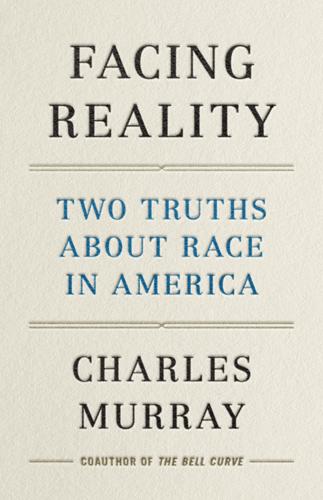
Facing Reality: Two Truths About Race in America
by
Charles Murray
Published 14 Jun 2021
Both studies used the Armed Forces Qualification Test (AFQT), a highly g-loaded test battery. In 1972, the National Center for Education Statistics launched the first in a series of nationally representative longitudinal studies: the National Longitudinal Study of the High School Class of 1972. It was followed by High School and Beyond in 1980 (I use two cohorts from that study, one tested in 1980 and the other tested in 1982), the National Education Longitudinal Study of 1988, the Education Longitudinal Study of 2002, and the High School Longitudinal Study of 2009. The 1988 and 2002 studies used only tests of reading and mathematics and are classi field with NAEP as achievement tests.
…
Medical College Admission Test (MCAT) medical profession: board certification; complaints about; licensing exam (USMLE) medical research military service Mismeasure of Man, The (Gould) Moynihan, Daniel Patrick multiple intelligences theory Myrdal, Gunnar National Assessment of Educational Progress (NAEP); comparative results; g-loading in National Center for Education Statistics National Education Longitudinal Study National Incident-Based Reporting System National IQ Dataset National Longitudinal Study of the High School Class of 1972 National Longitudinal Survey of Youth New York (magazine) New York City; crime rates in New York Police Department: shootings database New York Times No Child Left Behind (2001) nursing certification (NCLEX-RN) Obama, Barack Open Data initiative Opportunity Zones Oxford Handbook of Personnel Assessment and Selection (2014) Page, William Tyler partisan division Pittsburgh, PA policing: and affirmative action; arrest data; discretion in; performance ratings; and racism charges; reform needs; risk in professional certification Project Talent public opinion: demographic perceptions; on race relations; trust in government Reagan, Ronald Red Book (Consortium on Financing Higher Education) Red Guards Republican Party residential segregation Roosevelt, Franklin D.
…
What are the comparable mean IQs for African, Latin, and Asian electrical engineers, high school teachers, and plumbers? Finding databases to answer the question is hard, however, because it requires analyzable sample sizes for individual occupations, which implies a study with large sample sizes and also a good measure of cognitive ability. The three such datasets that I found are the 1972 National Longitudinal Study sponsored by the Department of Education and the 1979 and 1997 cohorts of the National Longitudinal Survey of Youth sponsored by the Department of Labor. The three cohorts combined give us 20,203 Europeans, Africans, and Latins whose occupations in their 30s and 40s are known, as are their scores on a g-loaded mental test that they took in their teens or early 20s.
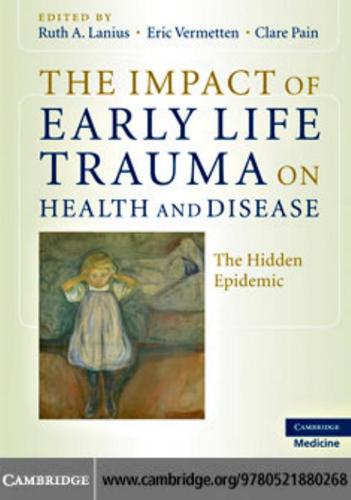
The Impact of Early Life Trauma on Health and Disease
by
Lanius, Ruth A.; Vermetten, Eric; Pain, Clare
Published 11 Jan 2011
This chapter highlights the importance of not making generalizations from specific populations without extensive caveats. Another important reality is that prospective studies and longitudinal studies (as referred to in Chs. 2 and 4) cannot occur in children in the isolation of intervention. The mandatory reporting requirements in many legal systems mean that any child who is identified as being subject to abuse or neglect must be notified to the relevant authorities. As a consequence, any longitudinal study will as much be a documentation of the impact of intervention as of the longitudinal effects and adverse health outcomes. If longitudinal studies are made of populations at risk, it is highly probable if these are recruited through intervention services that these children will be an atypical and in a more severely affected group.
…
The literature shows instead that infant disorganization and quality of early care each contribute independently to longterm psychological adaptation, and that quality of early care has a more powerful influence overall on negative outcomes than infant attachment disorganization. For example, results from a longitudinal study by the US National Institute of Child Health and Human Development Early Child Care Research Network [46] indicates that quality of caregiver interaction provides greater prediction of later child adjustment than infant attachment behavior itself. In several recent longitudinal studies, quality of early care and maltreatment experiences were assessed prospectively (as well as by young adult selfreport) so that the contribution of quality of early care in infancy on later psychiatric morbidity could be examined separately from experiences of abuse.
…
Szyf, M., Weaver, I. and Meaney, M. J. (2007). Maternal care, the epigenome, and phenotypic differences in behaviour. Reproductive Toxicology, 24, 9–19. 44. Carlson, E. A. (1998). A prospective longitudinal study of attachment disorganization/disorientation. Child Development, 69, 1107–1128. 45. Ogawa, J. R., Sroufe, L. A., Weinfeld, N. S., Carlson, E. A. and Egeland, B. (1997). Development and the fragmented self:€Longitudinal study of dissociative symptomatology in a non-clinical sample. Development and Psychopathology, 9, 855–879. 46. National Institute of Child Health and Human Development Early Child Care Research Network (2006).
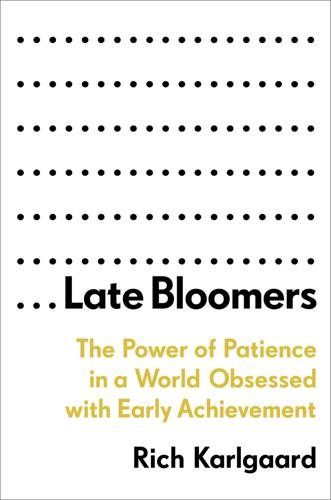
Late Bloomers: The Power of Patience in a World Obsessed With Early Achievement
by
Rich Karlgaard
Published 15 Apr 2019
Warner Schaie, Sherry L. Willis, and Grace I. L. Caskie, “The Seattle Longitudinal Study: Relationship Between Personality and Cognition,” Aging Neuropsychology and Cognition 11, nos. 2–3 (2004): 304–24; K. Warner Schaie, “The Seattle Longitudinal Studies of Adult Intelligence,” Current Directions in Psychological Science 2, no. 6 (1993): 171–75. See also K. Warner Schaie, ed., Longitudinal Studies of Adult Psychological Development (New York: Guilford Press, 1983); K. Warner Schaie, Intellectual Development in Adulthood: The Seattle Longitudinal Study (New York: Cambridge University Press, 1996); K. Warner Schaie, Developmental Influences on Adult Intelligence: The Seattle Longitudinal Study (New York: Oxford University Press, 2005); K.
…
Whatever caused young Schaie to become interested in the human brain and aging, he chose the right field. While barely twenty-one, he was already giving lectures at international geriatric conferences. Later as a graduate student at the University of Washington, he launched the project that would define his long career—the Seattle Longitudinal Study. A longitudinal study is one that follows test subjects throughout their lives. Schaie and his research team looked at how life events, such as the death of a spouse or recovery from a physical setback, affected the cognitive abilities of people at different ages. He discovered that many factors can speed up decline, but decline can also be slowed, or even reversed, such as by coming to terms with a spouse’s death.
…
All these tests are descendants not only of Lewis Terman’s pioneering work but also of his zealous efforts to standardize testing across the population and drive its adoption by key national institutions, including the civil service. Terman wasn’t just an IQ advocate, however, he was also a key researcher. In 1921 he embarked on the Terman Study of the Gifted, the first and now longest-running longitudinal study of high-IQ individuals in psychology. With a team of assistants, he combed California’s public schools with the goal of finding one thousand gifted children to study. In the end, they found more than fifteen hundred, all born between 1900 and 1925, slightly more males than females, most of them white, and nearly all from middle-to-upper-class families.

Human Diversity: The Biology of Gender, Race, and Class
by
Charles Murray
Published 28 Jan 2020
Nat’l Study of Law School Performance Correlation N: 3,375 SES–test: +.16 SES–grade: +.07 Test–grade: +.38 Partial correlation Test–grade controlling for SES: +.38 SES–grade controlling for test: +.01 Individual longitudinal studies: Harvard Study of the Class of 1964–65 Correlation N: 486 SES–test: +.07 SES–grade: +.05 Test–grade: +.30 Partial correlation Test–grade controlling for SES: +.29 SES–grade controlling for test: +.03 Individual longitudinal studies: LSAC Nat’l Longitudinal Bar Passage Study Correlation N: 19,264 SES–test: +.13 SES–grade: +.05 Test–grade: +.35 Partial correlation Test–grade controlling for SES: +.35 SES–grade controlling for test: +.01 Individual longitudinal studies: Nat’l Education Longitudinal Study of 1988 Correlation N: 6,314 SES–test: +.40 SES–grade: +.10 Test–grade: +.24 Partial correlation Test–grade controlling for SES: +.23 SES–grade controlling for test: +.02 Individual longitudinal studies: Nat’l Longitudinal Study of the Class of 1972 Correlation N: 5,735 SES–test: +.30 SES–grade: +.04 Test–grade: +.31 Partial correlation Test–grade controlling for SES: +.31 SES–grade controlling for test: –.01 Individual longitudinal studies: Project Talent Correlation N: 749 SES–test: +.18 SES–grade: +.05 Test–grade: +.30 Partial correlation Test–grade controlling for SES: +.29 SES–grade controlling for test: +.01 37.
…
Sample: Meta-analysis of College Board data Correlation N: SES–test: +.42 SES–grade: +.22 Test–grade: +.53 Partial correlation Test–grade controlling for SES: +.50 SES–grade controlling for test: –.01 Sample: Meta-analysis of studies with composite SES Correlation N: 17,235 SES–test: +.15 SES–grade: +.09 Test–grade: +.37 Partial correlation Test–grade controlling for SES: +.36 SES–grade controlling for test: +.03 Individual longitudinal studies: 1995. Nat’l Study of Law School Performance Correlation N: 3,375 SES–test: +.16 SES–grade: +.07 Test–grade: +.38 Partial correlation Test–grade controlling for SES: +.38 SES–grade controlling for test: +.01 Individual longitudinal studies: Harvard Study of the Class of 1964–65 Correlation N: 486 SES–test: +.07 SES–grade: +.05 Test–grade: +.30 Partial correlation Test–grade controlling for SES: +.29 SES–grade controlling for test: +.03 Individual longitudinal studies: LSAC Nat’l Longitudinal Bar Passage Study Correlation N: 19,264 SES–test: +.13 SES–grade: +.05 Test–grade: +.35 Partial correlation Test–grade controlling for SES: +.35 SES–grade controlling for test: +.01 Individual longitudinal studies: Nat’l Education Longitudinal Study of 1988 Correlation N: 6,314 SES–test: +.40 SES–grade: +.10 Test–grade: +.24 Partial correlation Test–grade controlling for SES: +.23 SES–grade controlling for test: +.02 Individual longitudinal studies: Nat’l Longitudinal Study of the Class of 1972 Correlation N: 5,735 SES–test: +.30 SES–grade: +.04 Test–grade: +.31 Partial correlation Test–grade controlling for SES: +.31 SES–grade controlling for test: –.01 Individual longitudinal studies: Project Talent Correlation N: 749 SES–test: +.18 SES–grade: +.05 Test–grade: +.30 Partial correlation Test–grade controlling for SES: +.29 SES–grade controlling for test: +.01 37.
…
But the relationship was not strong or consistent. 52. The six studies were Project Talent, with a sample of 73,425 15-year-olds (1960); the National Longitudinal Study of the High School Class of 1972 (1972), with a sample of 16,860 12th-grade students; the National Longitudinal Study of Youth (1980), with a sample of 11,914 noninstitutionalized 15-to 22-year-olds; the High School and Beyond Study (1980) with a sample of 25,069 12th-grade students; the National Educational Longitudinal Study (1992) with a sample of 24,599 8th-grade students as of 1988; and the National Assessments of Educational Progress from 1971 to 1992, with varying but extremely large samples of 17-year-olds enrolled in school.
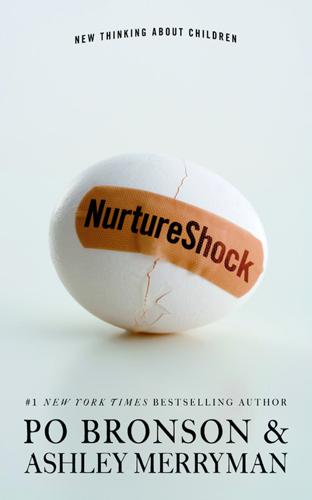
NurtureShock: New Thinking About Children
by
Po Bronson
and
Ashley Merryman
Published 2 Sep 2008
Elonen, “IQ and the Myth of Stability: A 16-Year Longitudinal Study of Variations in Intelligence Test Performance,” Journal of Clinical Psychology, vol. 31, no. 4, pp. 687–694 (1975). Shaw, Philip, “Intelligence and the Developing Human Brain,” BioEssays, vol. 29, no. 10, pp. 962–973 (2007). Shaw, P., D. Greenstein, J. Lerch, L. Clasen, R. Lenroot, N. Gogtay, A. Evans, J. Rapoport, and J. Giedd, “Intellectual Ability and Cortical Development in Children and Adolescents,” Nature, vol. 440, no. 7084, pp. 676–679 (2006). Sontag, L. W., C. T. Baker, and V. L. Nelson, “Mental Growth and Personality Development: A Longitudinal Study,” Monographs of the Society for Research in Child Development, vol. 23, no. 2 (Serial No. 68) (1958).
…
We might imagine we’re creating color-blind environments for children, but differences in skin color or hair or weight are like differences in gender—they’re plainly visible. We don’t have to label them for them to become salient. Even if no teacher or parent mentions race, kids will use skin color on their own, the same way they use T-shirt colors. Within the past decade or so, developmental psychologists have begun a handful of longitudinal studies to determine exactly when children develop bias—the general premise being that the earlier the bias manifests itself, the more likely it is driven by developmental processes. Dr. Phyllis Katz, then a professor at the University of Colorado, led one such study—following 100 black children and 100 white children for their first six years.
…
They might be attempting to compensate, feeling they’re slipping behind their peers. Any sudden spate of lying, or dramatic increase in lying, is a sign that something has changed in that child’s life, in a way that troubles him: “Lying is a symptom—often of a bigger problem behavior,” explained Talwar. “It’s a strategy to keep themselves afloat.” In longitudinal studies, a six-year-old who lies frequently could just as simply grow out of it. But if lying has become a successful strategy for handling difficult social situations, she’ll stick with it. About one-third of kids do—and if they’re still lying at seven, then it seems likely to continue. They’re hooked.
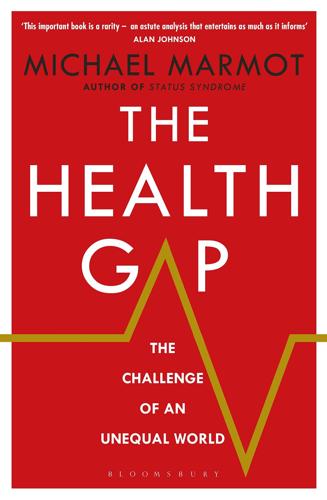
The Health Gap: The Challenge of an Unequal World
by
Michael Marmot
Published 9 Sep 2015
Other studies have found moderate physical activity to be protective against cognitive decline, again taking into account the possibility that cognitive decline precedes lack of interest in physical activity.21 A study of former US nurses aged seventy and above assessed habitual physical activity nine years before looking at the rate of cognitive decline, and still they found that physical activity, even just walking, was protective.22 I have shown my bias by not giving the other side of the story of which comes first: whether decrease of activity or cognitive decline. One longitudinal study of the elderly, the Victoria Longitudinal Study, shows evidence that the relation between activity and cognitive performance goes both ways.23 Certainly, people who were active socially, cognitively and physically had less subsequent decline in cognitive performance, but there was also clear evidence that it goes the other way too.
…
The Bidirectional Association between Depressive Symptoms and Gait Speed: Evidence from the English Longitudinal Study of Ageing (ELSA). PLoS One. 2013; 8(7): e68632; Studenski S, Perera S, Patel K, Rosano C, Faulkner K, Inzitari M, et al. Gait speed and survival in older adults. JAMA: the Journal of the American Medical Association. 2011; 305(1): 50–8. 6Steptoe A, Demakakos P, de Oliveira C. The Psychological Well-Being, Health and Functioning of Older People in England. In: Banks J, Nazroo J, Steptoe A, editors. The Dynamics of Ageing, Evidence from the English Longitudinal Study of Ageing 2002–2010 (Wave 5). London: Institute for Fiscal Studies, 2012. 7Carstensen L, Fried L.
…
JAMA: the Journal of the American Medical Association. 2004; 292(12): 1454–61. 23Small BJ, Dixon RA, McArdle JJ, Grimm KJ. Do changes in lifestyle engagement moderate cognitive decline in normal aging? Evidence from the Victoria Longitudinal Study. Neuropsychology. 2012; 26(2): 144–55. 24Holt-Lunstad J, Smith TB, Layton JB. Social relationships and mortality risk: a meta-analytic review. PlosMed. 2010; 7(7): e1000316. 25Banks J, Breeze E, Lessof C, Nazroo J. Retirement, Health and Relationships of the Older Population in England: The 2004 English Longitudinal Study of Ageing (Wave 2). 2006. 26Fried L. Making aging positive: The Atlantic, 2014 [updated 06/2014, 22/ 12/2014]. Available from: http://www.theatlantic.com/health/print/2014/06/valuing-the-elderly-improving-public-health/371245/. 27Banks et al.
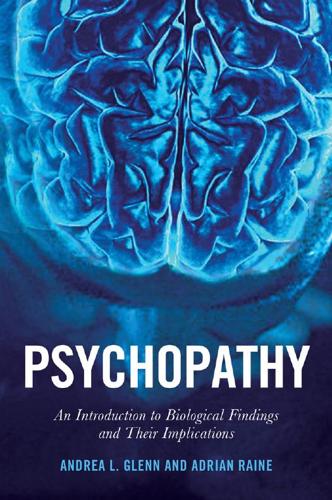
Psychopathy: An Introduction to Biological Findings and Their Implications
by
Andrea L. Glenn
and
Adrian Raine
Published 7 Mar 2014
Many of the studies we have reviewed examine a single biological variable at one time, yet the reality is much more nuanced and complex. Future biological research on psychopathy will also benefit from longitudinal studies that begin at an early age and follow individuals at numerous time points during development. Most studies conducted to date have examined the neurobiological basis of criminal behavior using cross-sectional data. Longitudinal studies that examine both biological and environmental factors throughout development will help to clarify the causal relationships between these factors. Additional research is also needed to explore the biological factors associated with the different features of psychopathy.
…
The consistent findings of reduced amygdala and orbitofrontal cortex activity may be a result of an imbalance in cortisol and testosterone levels. Future studies are needed to clarify the role of hormones in psychopathy. It is not clear whether hormones may be altered by environmental factors at some point, or if altered levels exist early in life. Longitudinal studies involving periodic hormone assessments beginning at a very early age and following through to adulthood may help to determine how hormones may contribute to the development of psychopathy. One hypothesis is that there may be some type of “burnout” effect, where chronic stress or other environmental factors overwork the stress response system to the point that it no longer responds properly.
…
One study found that psychopathy-prone adolescents had larger skin conductance responses to an initial tone (Borkovec 1970). In psychopathic adults, Raine and Venables (1988b) found differences in the rise time (i.e., time to reach peak amplitude) of the initial response to verbal sounds. A prospective longitudinal study measuring skin conductance orienting at age 3 found that individuals who scored higher on a self-report psychopathy scale at age 28 demonstrated higher orienting responses at age 3 (Glenn et al. 2007). Finally, in 9- to 10-yearold twins, Isen et al. (2010) found lower skin conductance reactivity to orienting stimuli in boys, but not girls, scoring higher in psychopathic traits.
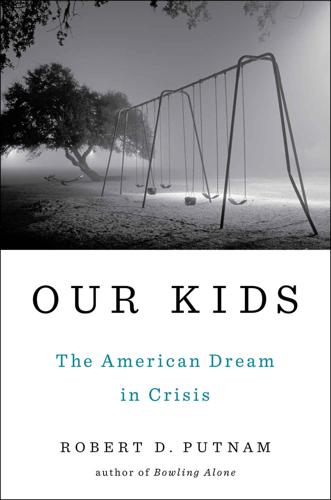
Our Kids: The American Dream in Crisis
by
Robert D. Putnam
Published 10 Mar 2015
From 1997 to 2012, the “extracurricular gap” between poor kids and nonpoor kids aged 6–11 nearly doubled, from 15 to 27 percentage points, while the comparable gap among kids aged 12–17 rose from 19 to 29 percentage points.59 Figure 4.3: Growing class gap in participation in school-based extracurriculars, 1972–2002 Sources: National Longitudinal Study of 1972, High School and Beyond (1980), National Education Longitudinal Study of 1988, Education Longitudinal Study of 2002. Figure 4.3 draws on national high school surveys in recent years to illustrate the growing gap for extracurricular activities. Similar gaps have opened up for private music, dance, and art lessons, and for leadership positions on athletic teams.
…
See also Patrick Wightman and Sheldon Danziger, “Poverty, Intergenerational Mobility, and Young Adult Educational Attainment,” in Investing in Children: Work, Education, and Social Policy in Two Rich Countries, eds. Ariel Kalil, Ron Haskins, and Jenny Chesters (Washington, DC: Brookings Institution Press, 2012), 208–36. 80. Figure 4.6 is drawn from the Educational Longitudinal Study of 2002–2012, which has followed a nationally representative sample of the sophomore class of 2002 for a decade: http://nces.ed.gov/surveys/els2002/ and Erich Lauff and Steven J. Ingels, Education Longitudinal Study of 2002 (ELS: 2002): A First Look at 2002 High School Sophomores 10 Years Later (NCES 2014–363), U.S. Department of Education (Washington, DC: National Center for Education Statistics, 2013), accessed June 17, 2014, http://nces.ed.gov/pubs2014/2014363.pdf.
…
In fact, all of the factors that we’ve discussed so far in this book—family structure, parenting, childhood development, peer groups, extracurricular opportunities—have contributed to the widening gap in college graduation rates in recent decades, along with the neighborhood and community influences that we shall discuss in the next chapter.82 The burdens on the poor kids have been gathering weight since they were very young. Rising tuition costs and student debt are the final straw, not the main load. Figure 4.6: Climbing the educational ladder (unevenly) Of every 100 potential members of the class of 2004, roughly how many reached each rung? Source: Educational Longitudinal Study of 2002–2012, adjusted for prior dropouts. Figure 4.7 brings this chapter to a close on a sobering note. As the twenty-first century opened, a family’s socioeconomic status (SES) had become even more important than test scores in predicting which eighth graders would graduate from college.83 A generation earlier, social class had played a smaller role, relative to academic ability, in predicting educational attainment.84 Nowadays, high-scoring rich kids are very likely (74 percent) to graduate from college, while low-scoring poor kids almost never do (3 percent).
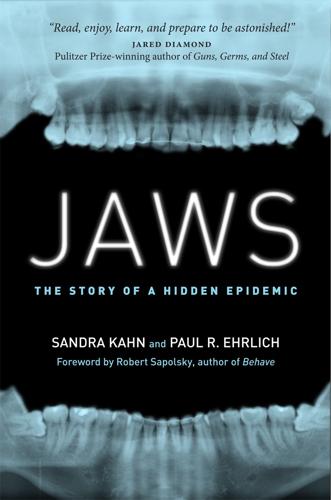
Jaws
by
Sandra Kahn,Paul R. Ehrlich
Published 15 Jan 2018
Retrieved on October 28, 2017, from http://bit.ly/24Bjjkv. 5. R. M. Beecher and R. S. Corruccini. 1981. Effects of dietary consistency on craniofacial and occlusal development in the rat. The Angle Orthodontist 51: 61–69; and S. A. S. Moimaz, A, J, Í. Garbin, A, M, C, Lima, L, F, Lolli, O, Saliba, and C. A. S. Garbin. 2014. Longitudinal study of habits leading to malocclusion development in childhood. BMC Oral Health 14: 96. 6. Robert S. Corruccini. 1984. An epidemiologic transition in dental occlusion in world populations. Amer. J. Orthod. 86: 419–426. 7. W. Rock, A, Sabieha, and R. Evans. 2006. A cephalometric comparison of skulls from the fourteenth, sixteenth and twentieth centuries.
…
Journal of Allergy and Clinical Immunology 124: S43–S70. 18. J. I. Silverberg, E. L. Simpson, H. G. Durkin, and R. Joks. 2013. Prevalence of allergic disease in foreign-born American children. JAMA Pediatrics 167: 554–560. 19. S. A. S. Moimaz, A. J. Í. Garbin, A. M. C. Lima, L. F. Lolli, O. Saliba, and C. A. S. Garbin. 2014. Longitudinal study of habits leading to malocclusion development in childhood. BMC Oral Health 14: 96. 20. D. Bresolin, P. A. Shapiro, G. G. Shapiro, M. K. Chapko, and S. Dassel. 1983a. Mouth breathing in allergic children: Its relationship to dentofacial development. American Journal of Orthodontics 83: 334–340; P.
…
Pinzan, C. Zwicker, C. Michelini, D. Barros, and F. Elias. 2001. The importance of the natural milk to prevent myofuncional and orthodontics alterations. Rev Dent Press Ortodon Ortop Facial 6: 111–121; S. A. S. Moimaz, A. J. Í. Garbin, A. M. C. Lima, L. F. Lolli, O. Saliba, and C. A. S. Garbin. 2014. Longitudinal study of habits leading to malocclusion development in childhood. BMC Oral Health 14: 96. 13. S. Baldrigui, A. Pinzan, C. Zwicker, C. Michelini, D. Barros, and F. Elias. 2001. The importance of the natural milk to prevent myofuncional and orthodontics alterations. Rev Dent Press Ortodon Ortop Facial 6: 111–121; G.
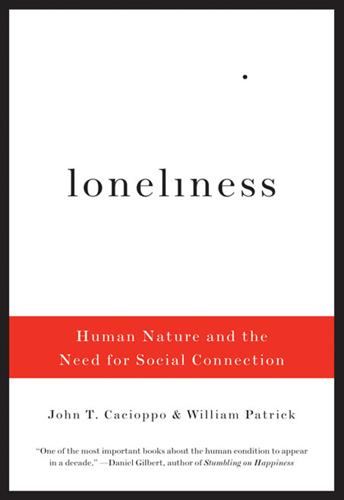
Loneliness: Human Nature and the Need for Social Connection
by
John T. Cacioppo
Published 9 Aug 2009
The first is a cross-sectional study: You cast a wide net to gather many different types of people, and then you measure a variety of variables at a single point in time. The second is a longitudinal study, which means identifying a certain population and then following its members over a long period, making repeated measurements of certain variables as their lives play out from day to day. The third is random assignment and experimental manipulation. Both cross-sectional and longitudinal studies can provide a wealth of useful data. The longitudinal approach also controls for a number of additional factors that cannot be dealt with satisfactorily in a cross-sectional study.
…
The longitudinal approach also controls for a number of additional factors that cannot be dealt with satisfactorily in a cross-sectional study. For instance, whether an adult had a secure or insecure attachment with his mother in infancy may not be something that can be measured reliably now. However, each participant in a longitudinal study serves as her own control—the study follows the same person, after all, and her past remains the same. In a longitudinal study, then, in which the focus is on changes in loneliness and related variables over time, we separate and evaluate the effects of these changes from those that do not change across time, such as infant attachment style. Still, neither of these approaches can tell us definitely that we have found direct cause and effect.
…
But what about chronic loneliness? Leaving participants in an unpleasant and unhealthful state over time would be exceedingly unethical, so we could not induce persistent feelings of social isolation through manipulation. Longitudinal research is an ethical alternative, which is why we initiated our longitudinal study of middle-aged and older adults from the greater Chicago area. FIGURE 5. Top panel: comparison of characteristics of very lonely individuals with those of not at all lonely individuals. Bottom panel: comparison of characteristics of individuals induced to feel lonely with those of the same individuals induced to feel nonlonely.
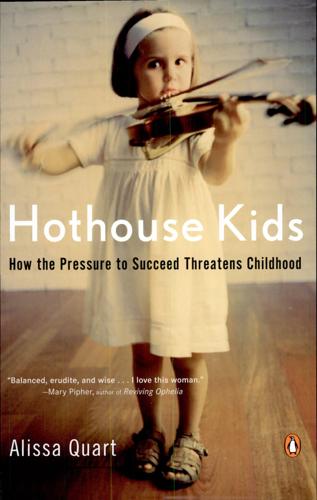
Hothouse Kids: The Dilemma of the Gifted Child
by
Alissa Quart
Published 16 Aug 2006
This will most likely change, as gifted education tends to alter its methods cyclically, a microcosmic version of the concerns of Americans at large, as well as larger trends in education. Lewis Terman, creator of the Stanford-Binet test, was interested in studies and psychological tests in the 1920s, one heyday for such tests. His longitudinal study of high-IQ children helped to define the “gifted” as a school population. Gifted educator Leta Hollingworth formed a curriculum based on a longitudinal study she conducted of students with IQs over 155, and then in 1936 established the Speyer School for gifted children, where the children studied common life as well as academic subjects in the hopes of helping them live in the world, reflecting the educational tactics popular in that period, among them progressive education.
…
Ericsson’s research bears out the old saw that practice makes perfect. When parents send their children to early music lessons and push them to achieve mightily and publicly, they believe they are preparing the children for an adulthood of ever-greater achievement—and sometimes they are. A classic longitudinal study of gifted children begun by Stanford University psychologist Lewis Terman supports Ericsson’s findings about deliberative practice, and the value of discovering and developing the intellectual talents of strong learners not only in private lessons but also in public schools. Terman’s study, begun in 1921, followed 1,500 children with IQs of 135 culled from California’s urban areas.
…
As the poet David Shapiro writes, “The child says infinity is a small word.” Psychology professor Anderegg tells me that gifted children can grow up to expect their wives, husbands, and lovers to devote themselves to developing their brilliance. They can also develop a dread of the mundane. Felice Kaufman, the author of a longitudinal study of Presidential Scholars—high school seniors who yearly win a governmental scholastic and talent competition—from 1964 to 1968, was quick to tell me that highly gifted students have their share of unhappiness. In a 1992 article, Kaufman wrote that one “unexpected demographic finding was that 73% of the respondents had no children,” and “a few poignantly stated that since their own childhood had been so troubled they had serious reservations about bringing a child of their own into the world.”
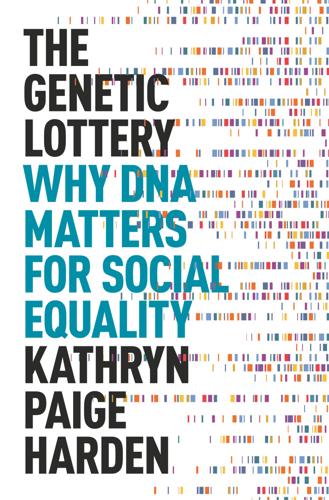
The Genetic Lottery: Why DNA Matters for Social Equality
by
Kathryn Paige Harden
Published 20 Sep 2021
Width of the line represents number of students enrolled in each math course in each year of high school (secondary school). Darkness of the line represents the average education polygenic index of students enrolled in that course. Values of the polygenic index are in standard deviation units. Data are from European-ancestry students from the National Longitudinal Study of Adolescent Health who were enrolled in US high schools in the mid-1990s. Reproduced from K. Paige Harden et al., “Genetic Associations with Mathematics Tracking and Persistence in Secondary School,” Npj Science of Learning 5 (February 5, 2020): 1–8, https://doi.org/10.1038/s41539-020-0060-2.
…
As applied to information about human DNA, however, the word “score” might imply a hierarchy of value. Following the suggestions of my colleagues Patrick Turley and Dan Benjamin, I use the alternative language of “polygenic index” throughout. 28. Daniel W. Belsky et al., “Genetic Analysis of Social-Class Mobility in Five Longitudinal Studies,” Proceedings of the National Academy of Sciences 115, no. 31 (July 31, 2018): E7275–84, https://doi.org/10.1073/pnas.1801238115. 29. Arthur S. Goldberger, “Heritability,” Economica 46, no. 184 (1979): 327–47, https://doi.org/10.2307/2553675. 30. George E. P. Box, “Science and Statistics,” Journal of the American Statistical Association 71, no. 356 (December 1976): 791–99, https://doi.org/10.1080/01621459.1976.10480949.
…
Saskia Selzam et al., “Comparing Within- and Between-Family Polygenic Score Prediction,” The American Journal of Human Genetics 105, no. 2 (August 1, 2019): 351–63, https://doi.org/10.1016/j.ajhg.2019.06.006. 20. Daniel W. Belsky et al., “Genetic Analysis of Social-Class Mobility in Five Longitudinal Studies,” Proceedings of the National Academy of Sciences 115, no. 31 (July 31, 2018): E7275–84, https://doi.org/10.1073/pnas.1801238115. 21. Rosa Cheesman et al., “Comparison of Adopted and Nonadopted Individuals Reveals Gene–Environment Interplay for Education in the UK Biobank,” Psychological Science 31, no. 5 (May 1, 2020): 582–91, https://doi.org/10.1177/0956797620904450. 22.

Unhealthy societies: the afflictions of inequality
by
Richard G. Wilkinson
Published 19 Nov 1996
Because the people covered by these studies are not yet old enough to show what effects illness in middle age might have on career chances in later life, this part of the issue was tackled using data from the Longitudinal Study (Fox et al. 1985). It seemed possible that people who suffered chronic illness later in life might have to give up more demanding jobs and would move down the social scale. For deaths occurring among a 1 per cent sample of the British population at census the Longitudinal Study made it possible to classify deaths according to occupational information given by that person some years earlier. In other words, people could be classified not by what might have been a lowerstatus occupation during their declining years, but by the occupation they were in some years before death.
…
There were, for instance, suggestions that next of kin have a tendency to ‘promote the dead’. The self-employed might, for instance, be reported by relatives as company directors. (Interestingly, Dore says that occasionally Japanese firms will promote people posthumously as a tribute to them (Dore 1973).) It was partly to overcome difficulties of the former kind that the OPCS Longitudinal Study was started. Instead of using the occupations given on death certificates, it was able to relate each death back to the occupation given by the deceased at the last census. Once again the results suggested that the official figures had not been misleading. We have now seen that health inequalities cannot be understood in terms of biased measurements, selective social mobility, genetic differences, inequalities in medical care or health-related behaviour.
…
The psychoanalytic movement: the cunning of unreason. 2nd edn. Fontana, London. 1993. Glyn, A. and Miliband, D. Introduction. In: Paying for inequality: the costs of social injustice. Edited, by A.Glyn and D.Miliband. Rivers Oram Press, London. 1994. Goldblatt, P. Mortality and alternative social classifications. In: Mortality and Social Organisation: Longitudinal Study 1971–81. Series LS 6. Edited by P.Goldblatt. HMSO, London. 1990. Goldsmith, M.M. Private vices, public benefits. Cambridge University Press, Cambridge. 1985. Goodall, J. The chimpanzees of Gombe: patterns of behavior. Harvard University Press, Cambridge, Mass. 1986. Goody, J. Technology, tradition and the state in Africa.
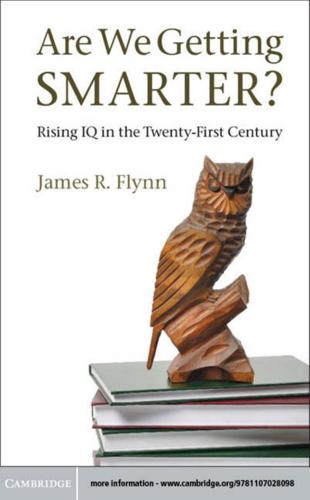
Are We Getting Smarter?: Rising IQ in the Twenty-First Century
by
James R. Flynn
Published 5 Sep 2012
Whether this is because of the physiology of the aging brain, or an environmental shift at retirement, or a combination of the two is unknown. The same analysis reveals a bright bonus for verbal skills, and that working memory is bright neutral. These trends must be conirmed by longitudinal studies of individuals as they age. But I will be surprised if they do not reveal the same pattern. My simulation of a longitudinal study compares those who were 65 in 1995 (WAIS-III) with those who were 75 in 2006 (WAIS-IV). That is a pretty good match. They are of course not being compared to one another directly, but only to the 35-yearolds who were the contemporaries of each group.
…
Simulating cohorts The above attempt to simulate longitudinal trends with age did not test for what we want most: to determine whether longitudinal data would give different estimates of bright taxes or bonuses than those our cross-sectional data engender. Indeed, no attempt to simulate a genuine longitudinal study can be entirely successful. None will give the history of a real cohort that took the WAIS-IV at age 17 and then retook it as they aged. But as a second best, we can trace artiicial cohorts that took the WAIS at the various times it was normed. For example, we can compare those aged 60 from the WAIS-R (1978), with those aged 77 from the WAIS-III (1995), with those aged 88 from the WAIS-IV (2006).
…
The values bob around a bit but there is no obvious trend toward the bright having either an advantage or a disadvantage as they age. In sum, simulating longitudinal values offers rough conirmation of the cross-sectional data. Everyone would prefer genuine longitudinal data. But unless those conducting longitudinal studies take the possibility of bright taxes/bonuses seriously, there is no chance that the relevant longitudinal data will be collected. Moreover, even their putative existence suggests interesting lines of research, as will become apparent. Causes Let us address the bright tax on Analytic Abilities in conjunction with the bright bonus for Verbal Abilities.
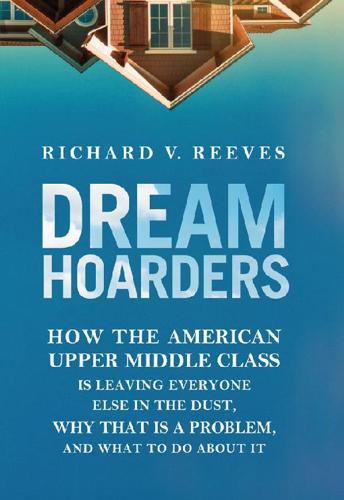
Dream Hoarders: How the American Upper Middle Class Is Leaving Everyone Else in the Dust, Why That Is a Problem, and What to Do About It
by
Richard V. Reeves
Published 22 May 2017
.: Harvard University Department of Economics Littauer Center, December 2014) (www.aeaweb.org/aea/2015conference/program/retrieve.php?pdfid=1030). 24. Garey Ramey and Valerie Ramey, “The Rug Rat Race,” Brookings Papers on Economic Activity (Spring 2010): pp. 129–99. 25. Ellen Klein’s calculations from Early Childhood Longitudinal Study, Kindergarten Class of 2010–11 (ECLS-K:2011). 26. Private school here includes parochial schools. These tabulations are drawn from the Educational Longitudinal Study of 2002 Senior Class of 2004 First Follow Up survey, produced by the National Center for Education Statistics. 27. See, for instance, Raj Chetty, John Friedman, and Jonah Rockoff, “Measuring the Impacts of Teachers II: Teacher Value-Added and Student Outcomes in Adulthood,” American Economic Review 104, no. 9 (September 2014): pp. 2633–79; and Grover Whitehurst, Matthew Chingos, and Katharine Lindquist, “Evaluating Teachers with Classroom Observations,” Brookings, May 13, 2014 (www.brookings.edu/research/evaluating-teachers-with-classroom-observations-lessons-learned-in-four-districts/). 28.
…
indicators=parental-involvement-in-schools). 30. Ashlyn Nelson and Beth Gazley, “The Rise of School-Supporting Nonprofits,” Education Finance and Policy 9, no. 4 (Fall 2014): pp. 541–66. 31. Putnam, Our Kids, p. 168. 32. Reardon, Whither Opportunity, p. 104. 33. Ellen Klein’s calculations from the Education Longitudinal Study of 2002 (ELS:2002) First Follow-Up Survey. 34. Anne Kim, “How the Internet Wrecked College Admissions,” Washington Monthly, September/August 2016. 35. Craig Heller, “College Essay Solutions” (www.collegeessaysolutions.com/pricing). 36. Raj Chetty, John N. Friedman, Emmanuel Saez, Nicholas Turner, and Danny Yagan.
…
Debopam Bhattacharya and Bhashkar Mazumder, “A Nonparametric Analysis of Black-White Differences in Intergenerational Income Mobility in the United States,” Quantitative Economics 2, no. 3 (November 2011): pp. 335–79. 5. Michael Young, The Rise of the Meritocracy (1958; repr., New Brunswick: Transaction Publishers, 1994), p. 166. 6. See Table 1.10 of the National Center for Education Statistics report, Erich Lauff and Steven Ingels, Education Longitudinal Study of 2002 (ELS: 2002): A First Look at 2002 High School Sophomores 10 Years Later, NCES 2014-363 (U.S. Department of Education, January 2014) (http://nces.ed.gov/pubs2014/2014363.pdf). 7. Young, The Rise of the Meritocracy, p. 96. 8. “Most See Inequality Growing, but Partisans Differ over Solutions,” Pew Research Center, January 23, 2014 (www.people-press.org/2014/01/23/most-see-inequality-growing-but-partisans-differ-over-solutions/). 9.
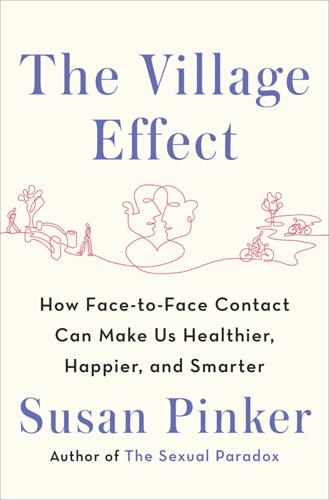
The Village Effect: How Face-To-Face Contact Can Make Us Healthier, Happier, and Smarter
by
Susan Pinker
Published 30 Sep 2013
And if you were happily married but didn’t see your friends all that much, that close relationship with your spouse could also protect you. The life-threatening risks surfaced in people who were disconnected on multiple fronts—people who were lonely. Fast-forward thirty-one years to 2010, when Julianne Holt-Lunstad, a psychologist at Brigham Young University in Utah, along with two colleagues, examined 148 longitudinal studies about relationships and mortality—which was like summarizing the diaries of about 309, 000 people over seven and a half years. That’s a lot of data, and when the researchers crunched it all, they were astonished to learn that those who were integrated into their communities had half the risk of dying over the course of the seven years as those who led more solitary lives.
…
Or a shared feast can jumpstart a feeling of cooperation, as was suspected of the Natufian funeral barbecue—or its modern equivalent, block parties intended to instill solidarity among neighbors.46 The only real way to answer this chicken-and-egg question is to randomly assign children at birth to different types of meals—with family, with friends, with both, or alone—and then watch what happens to them as they grow. That can’t happen, of course. One of the best alternatives is a longitudinal study, which asks lots of questions about people’s habits and then tracks what happens to them over time (as we’ve seen in the Framingham study, as well as the nurses study on breast cancer). One recent such study, led by University of Minnesota’s Ann Meier and Cornell’s Kelly Musick, tracked eighteen thousand American adolescents.
…
Leo Tolstoy, War and Peace (New York: Vintage Reprint, 2008); William Deresiewicz, “Faux Friendship,” Chronicle of Higher Education, December 6, 2009. 19. Anthony Storr, Solitude (New York: HarperCollins, 1997); Susan Cain, Quiet (New York: Broadway, 2012). 20. Ye Luo et al., “Loneliness, Health, and Mortality in Old Age: A National Longitudinal Study,” Social Science and Medicine 74 (2012). 21. A. Steptoe et al., “Loneliness and Neuroendocrine, Cardiovascular, and Inflammatory Stress Responses in Middle-Aged Men and Women,” Psychoneuroendocrinology 29, no. 5 (2004); Ruth Hackett et al., “Loneliness and Stress-Related Inflammatory and Neuroendocrine Responses in Older Men and Women,” Psychoneuroendocrinology 37, no. 1801–9 (2012). 22.
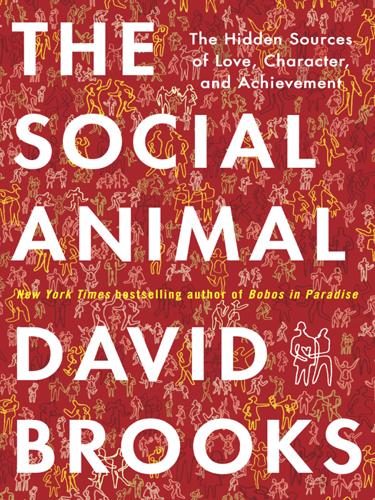
The Social Animal: The Hidden Sources of Love, Character, and Achievement
by
David Brooks
Published 8 Mar 2011
This is the period researchers call the “reminiscence bump,” because memories from late adolescence to early adulthood tend to be more vivid than those from any other time of life. He wondered how accurate his memories could possibly be. When George Vaillant from the Grant Longitudinal Study sent an elderly subject reports on his early life for fact-checking purposes, he sent back the reports insisting, “You must have sent these to the wrong person.” He simply could not remember any of the events from his own life that had been recorded at the time. The subject of another longitudinal study had suffered a brutal childhood at the hands of abusive parents, well documented at the time. But at age seventy, he remembered his father as a “good family man” and his mother as “the kindest woman in the world.”
…
Buss, The Evolution of Desire: Strategies of Human Mating (New York: Basic Books, 2003), 93. 18 higher rates of psychopathology Mary Main, Erik Hesse, and Nancy Kaplan, “Predictability of Attachment Behavior and Representational Processes at 1, 6, and 19 Years of Age: The Berkeley Longitudinal Study” in Attachment from Infancy to Adulthood: The Major Longitudinal Studies, eds. Klaus E. Grossmann, Karin Grossmann, and Everett Waters (New York: Guilford Press, 2005), 280. 19 retarded synaptic development Thomas Lewis, Fari Amini, and Richard Lannon, A General Theory of Love (New York: Vintage, 2001), 199. 20 That’s in part because Kathleen Kendall-Tackett, Linda Meyer Williams, and David Finkelhor, “Impact of Sexual Abuse on Children: A Review and Synthesis of Recent Empirical Studies,” Psychological Bulletin 113, no. 1 (1993): 173, http://www.unh.edu/ccrc/pdf/VS69.pdf. 21 They’ve found, for example Gopnik, 182. 22 “predictive power of childhood experience” Sroufe et al., 268. 23 Attachment-security and caregiver-sensitivity Sroufe et al., 164. 24 Kids who had dominating, intrusive Sroufe et al., 167. 25 By observing quality of care Sroufe et al., 210. 26 Most reported having no Sroufe et al., 211. 27 Forty percent of the parents Sroufe et al., 95. 28 “When Ellis seeks help” Sroufe et al., 287.
…
As Richard Nisbett puts it, “What nature hath joined together, multiple regression cannot put asunder.” But the general idea is that once you get past some pretty obvious correlations (smart people make better mathematicians), there is a very loose relationship between IQ and life outcomes. One famous longitudinal study known as the Terman study followed a group of extremely high-IQ students (they all scored 135 or above). The researchers expected these brilliant young people to go on to have illustrious careers. They did fine, becoming lawyers and corporate executives, for the most part. But there were no superstar achievers in the group, no Pulitzer Prize winners or MacArthur Award winners.
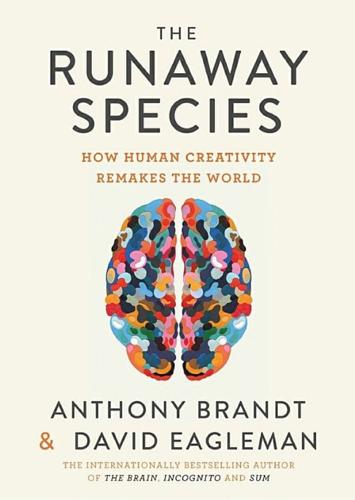
The Runaway Species: How Human Creativity Remakes the World
by
David Eagleman
and
Anthony Brandt
Published 30 Sep 2017
<http://news.bbc.co.uk/2/hi/science/nature/808246.stm> Carver, George Washington and Gary R. Kremer. George Washington Carver in His Own Words. Columbia: University of Missouri Press, 1987. Catterall, James S., Susan A. Dumais, and Gillian Harden-Thompson. The Arts and Achievement in At-Risk Youth: Findings from Four Longitudinal Studies. Washington: National Endowment for the Arts, 2012. Chanin, A.L., “Les Demoiselles de Picasso,” New York Times, August 18, 1957. Chi, Tom. “Rapid Prototyping Google Glass.” TED-Ed. November 17, 2012. Accessed May 17, 2016. <http://ed.ted.com/lessons/rapid-prototyping-google-glass-tom-chi#watch> Chin, Andrea.
…
Summarising the results, Torrance wrote “An analysis of twenty studies indicates that in 86% of the comparisons, the finding was either ‘no difference’ or differences in favour of the culturally different group,” in Torrance, Discovery and Nurturance of Giftedness in the Culturally Different (Reston: Council for Exceptional Children, 1977). Longitudinal studies have shown the Torrance Test to be a better predictor of creative achievement than IQ or SAT scores. 9 Robert Gjerdingen, “Partimenti Written to Impart a Knowledge of Counterpoint and Composition,” in Partimento and Continuo Playing in Theory and in Practice, ed. Dirk Moelants and Kathleen Snyers (Leuven: Leuven University Press, 2010). 10 Benjamin S.
…
Male Creativity, the ‘Bossy’ Problem, Equality in Parenting, and Why Women Make Better Scientists,” Brain Pickings, n.d., accessed May 11, 2016, <http://www.brainpickings.org/2014/08/06/margaret-mead-female-male/> 13 James S. Catterall, Susan A. Dumais, and Gillian Harden-Thompson, The Arts and Achievement in At-Risk Youth: Findings from Four Longitudinal Studies (Washington: National Endowment for the Arts, 2012). 14 John Maeda, “STEM + Art = STEAM,” e STEAM Journal: Vol. 1: Iss. 1, Article 34. Available at: <http://scholarship.claremont.edu/steam/vol1/iss1/34> 15 Steve Lohr, “IBM’s Design-Centered Strategy to Set Free the Squares,” New York Times, November 14, 2015, accessed May 11, 2016, <http://www.nytimes.com/2015/11/15/business/ibms-design-centered-strategy-to-set-free-the-squares.html?
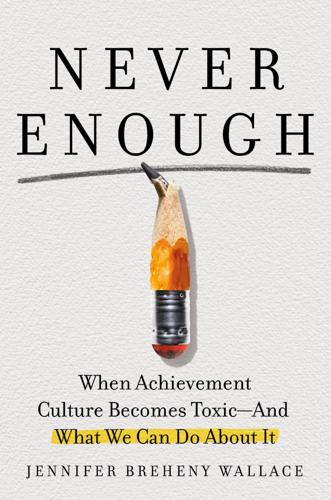
Never Enough: When Achievement Culture Becomes Toxic-And What We Can Do About It
by
Jennifer Breheny Wallace
Published 21 Aug 2023
But when it comes to feeling significant in the eyes of other people, our role in a larger community is also critical. For our kids, this larger community is primarily found at school, where they spend the majority of their waking hours and where their identities are being formed. The National Longitudinal Study of Adolescent Health, which examined the reasons for well-being among more than 36,000 seventh- to twelfth-grade students, found that family connectedness was the strongest protective factor against distress, eating disorders, and suicidal thoughts. But it also found that feeling connected at school—a child’s next most important community—was strongly protective against substance use, early sexual initiation, and risk of unintentional injury, such as drinking and driving.
…
The quality of friendships during adolescence can also have a long-term effect. Researchers have found that students’ perception of mattering to their friends is directly associated with their happiness; friendships with those who know us well and enjoy our company, quirks and all, feed our hunger to feel unconditionally valued. In one longitudinal study, researchers at the University of Virginia found that students who had a close best friend at age fifteen reported less social anxiety, greater self-worth, and fewer depressive symptoms at age twenty-five than peers who didn’t have a best friend during their adolescence. These students, the researchers contended, were better equipped to build and maintain supportive relationships throughout their lives.
…
Griffiths, and Ståle Pallesen, “Study Addiction—A New Area of Psychological Study: Conceptualization, Assessment, and Preliminary Empirical Findings,” Journal of Behavioral Addictions 4, no. 2 (2015): 75–84, https://doi.org/10.1556/2006.4.2015.007. GO TO NOTE REFERENCE IN TEXT Scholars find that “study addiction”: Paweł A. Atroszko, Cecilie Schou Andreassen, Mark D. Griffiths, and Ståle Pallesen, “The Relationship Between Study Addiction and Work Addiction: A Cross-Cultural Longitudinal Study,” Journal of Behavioral Addic-tions 5, no. 4 (2016): 708–14, https://doi.org/10.1556/2006.5.2016.076. GO TO NOTE REFERENCE IN TEXT One study of college students: Atroszko et al., “The Relationship Between Study Addiction and Work Addiction.” GO TO NOTE REFERENCE IN TEXT attach to material goods: Johann Hari, Lost Connections: Uncovering the Real Causes of Depression—and the Unexpected Solutions (New York: Bloomsbury, 2018), 125.
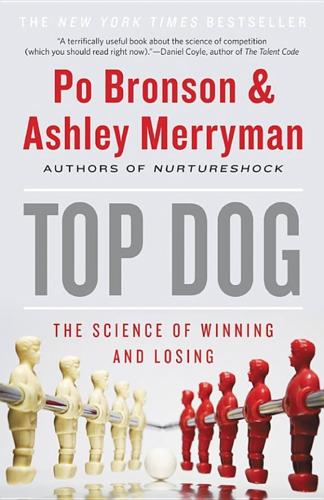
Top Dog: The Science of Winning and Losing
by
Po Bronson
and
Ashley Merryman
Published 19 Feb 2013
Paquette’s argument is that this emotional groundwork helps children later in life be brave in unfamiliar situations, stand up for themselves, and learn to take risks. It gives them training time to get comfortable with the emotional intensity of competition. The imperative thing about roughhousing is that the parent maintains control, animating children but de-escalating when kids are on the brink of anger or frustration. In one of Paquette’s longitudinal studies, he videotaped fathers playing with their young children, and then he scored the tapes for the amount and style of roughhousing. Five years later, he looked again at the kids. Paquette found that fathers who’d been “weak-dominant”—who let the roughhousing get out of hand, and whose play lost its warmth—had kids who could not emotionally regulate themselves.
…
promotes better outcomes during competition. A number of studies have found that more negative self-talk is associated with more successful performance. Athletes who chided themselves on their mistakes, then moved on, became Olympians. Those who spent meets telling themselves they were wonderful didn’t make the squad. In longitudinal studies, Gabriele Oettingen, professor at New York University and the University of Hamburg, concluded that when jobseekers spend time visualizing their dream job, two years later they are less likely to have found employment in any job. (If they someday do find a job, it will be for lower pay and lower recognition than the jobs held by those who had spent less time daydreaming about their careers.)
…
Not until the next generation took over would the new Länder really take off. On an individual level, social psychologists found the transition to be a fascinating laboratory for discovering and predicting who would thrive amid the change, and who would struggle. There were studies of Easterners who’d escaped to the West (before the Wall fell). Likewise, there were longitudinal studies of workers in Dresden and Jena, to discern the personality traits that determined whether an individual could and would transform with the times. One economic incongruity the researchers had observed: most highly educated East Germans did not pursue new careers in engineering or technology, despite being qualified to do so.
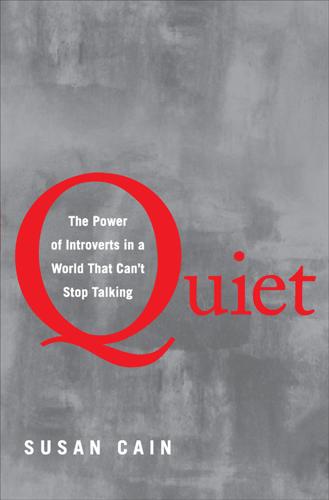
Quiet: The Power of Introverts in a World That Can't Stop Talking
by
Susan Cain
Published 24 Jan 2012
One such scientist is an eighty-two-year-old man named Jerome Kagan, one of the great developmental psychologists of the twentieth century. Kagan devoted his career to studying the emotional and cognitive development of children. In a series of groundbreaking longitudinal studies, he followed children from infancy through adolescence, documenting their physiologies and personalities along the way. Longitudinal studies like these are time-consuming, expensive, and therefore rare—but when they pay off, as Kagan’s did, they pay off big. For one of those studies, launched in 1989 and still ongoing, Professor Kagan and his team gathered five hundred four-month-old infants in his Laboratory for Child Development at Harvard, predicting they’d be able to tell, on the strength of a forty-five-minute evaluation, which babies were more likely to turn into introverts or extroverts.
…
Schwartz explains that he asks his subjects—who are in their late teens—to lie down with their heads in the scanner while they look at photographs of faces and the machine tracks how their brains respond. He’s especially interested in activity in the amygdala—the same powerful organ inside the brain that Kagan found played such an important role in shaping some introverts’ and extroverts’ personalities. Schwartz is Kagan’s colleague and protégé, and his work picks up just where Kagan’s longitudinal studies of personality left off. The infants Kagan once categorized as high- and low-reactive have now grown up, and Schwartz is using the fMRI machine to peer inside their brains. Kagan followed his subjects from infancy into adolescence, but Schwartz wanted to see what happened to them after that.
…
See also www.reuters.com, Factbox: Jeffrey Skilling, June 24, 2010. 8. will graduate into a business culture: Stanford Business School professor of applied psychology Thomas Harrell tracked Stanford MBAs who graduated between 1961 and 1965, and published a series of studies about them. He found that high earners and general managers tended to be outgoing and extroverted. See, e.g., Thomas W. Harrell and Bernard Alpert, “Attributes of Successful MBAs: A 20-Year Longitudinal Study,” Human Performance 2, no. 4 (1989): 301-322. 9. “ ‘Here everyone knows that it’s important to be an extrovert’ ”: Reggie Garrison et al., “Managing Introversion and Extroversion in the Workplace,” Wharton Program for Working Professionals (WPWP) (Philadelphia: University of Pennsylvania, Spring 2006). 10.
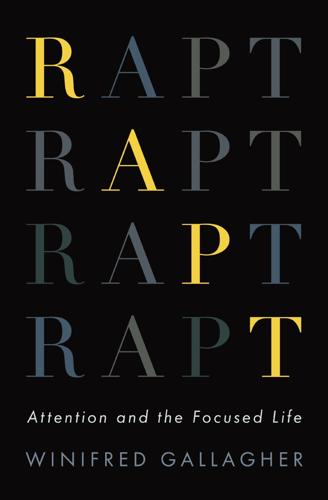
Rapt: Attention and the Focused Life
by
Winifred Gallagher
Published 9 Mar 2009
Compared with the young, the old experience fewer unpleasant emotions and just as many delightful ones. They’re also more satisfied with their relationships and better at solving problems that crop up in them. Elders who have a particularly positive focus tend to be healthier as well as happier: according to the Ohio Longitudinal Study, they live 7.5 years longer. To William James, wisdom was “the art of knowing what to overlook,” and many elders master this way of focusing. Lots of studies show that younger adults pay as much or more attention to negative information as to the positive sort. By middle age, however, their focus starts to shift, until in old age, they’re likely to have a strong positive bias in what they both attend to and remember.
…
The historical record of the likes of Newton and Feynman in particular first interested Duckworth in taking a serious look at grit’s role in accomplishment in general. Biographical analyses showed that with some exceptions, such superachievers have certain things in common. They often find their focus early in life, as did many of the three hundred “Termites,” as the brilliant children studied by Stanford’s Lewis Terman, the pioneer of IQ testing and the longitudinal study of lives, are called. After homing in on their special interest in youth, most pursued it with tenacious effort and long-term, consistent attention. Some people are “gritty” and others aren’t, but tenacity could be either a heritable trait or a habit established by early experience. People who make a living by doing something that deeply interests them are grittier than those who don’t, which suggests that the quality could have developed from their liking what they do.
…
Tannock, “Neuroscience of Attention-Deficit Hyperactivity Disorder: The Search for Endophenotypes,” Nature Reviews Neuroscience 3, 2002. p.167. That it’s six times likelier to affect children: R. C. Herrenkohl, B. P. Egolf, and E. C. Herrenkohl, “Preschool Antecedents of Adolescent Assaultive Behavior: A Longitudinal Study.” American Journal of Orthopsychiatry 67, 1997. p.168. About 25 percent of the biological parents of diagnosed kids: P. C. Kendall and C. Hammen, Abnormal Psychology. Boston: Houghton Mifflin, 1995. p.169. Waving a book called Attention, Memory, and Executive Function: G. Reid Lyon and Norman A.
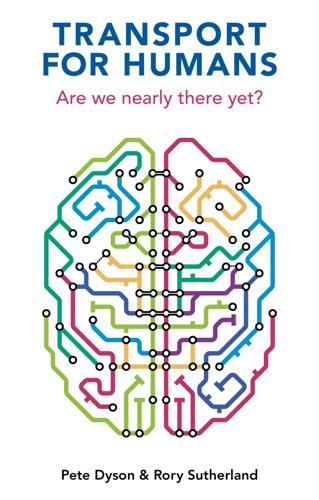
Transport for Humans: Are We Nearly There Yet?
by
Pete Dyson
and
Rory Sutherland
Published 15 Jan 2021
Even this analysis still omits the backgrounds and the past behaviours of boys and girls, which might help to explain the disparity. For this, we need to do deeper social research: interviews, ethnographies, diary studies and longitudinal studies that track people over time. In 2020 the UK Department for Transport saw the value of such research and commissioned its first longitudinal study, ‘All Change?’, to track the travel behaviours of 4,000 people willing to be contacted every few months, to understand how they adapted to Covid-19.10 This was a longitudinal cross section, meaning it tracked the same people over time.
…
Retail delivery trips; changing destinations In 1974 Kahneman and Tversky demonstrated that when the data we collect points to a previously held conclusion, we suffer from a confirmation bias and a false illusion sets in that our conclusions are being strengthened. Of course, if we continue to collect the same data in the same way, we will continue to miss persistent problems. We are concerned transport design is not alive to these dangers. It underinvests in social research, longitudinal studies and behavioural monitoring that would identify the distribution of benefits. Ultimately, this can mean that transport may appear to be getting better on average when instead it is becoming much better for some people but staying the same, at best, for others who simply don’t show up in the data.
…
As a local councillor leading a road closure scheme in Waltham Forest in London has reflected: Worried by what was being said on social media, the local press, in public meetings and on protests – I drafted my resignation letter. But guess what … At the next election I got the largest majority I have ever had.28 Are we nearly there yet? Transport planning is held back by inadequate data. In favouring cross-sectional rather than longitudinal studies, it fails to capture how individuals or groups make decisions or experience travel. This means the needs of ‘non-average’ groups are under-represented or ignored. There is no coherent theory of what transport is for to force the collection and use of disaggregated data. There is also confusion between increasing existing demand and creating new demand, which have entirely different drivers but look the same when measuring aggregate use.
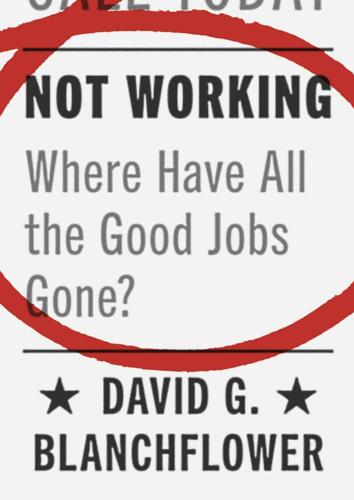
Not Working: Where Have All the Good Jobs Gone?
by
David G. Blanchflower
Published 12 Apr 2021
The impact of prolonged time spent in unemployment on depression symptoms appears to be explained by individual demographic factors in the sampled countries. 3) Unemployment increases susceptibility to malnutrition, illness, mental stress, and loss of self-esteem, leading to depression.32 There is evidence for the United States that being jobless injures self-esteem and fosters feelings of externality and helplessness among youths.33 The psychological imprint of joblessness persists. Paul and Moser (2009) in a meta-analysis of 237 cross-sectional and 87 longitudinal studies concluded that the unemployed exhibit more distress than the employed. A significant difference was found for several indicator variables of mental health including symptoms of distress, depression, anxiety, psychosomatic symptoms, subjective well-being, and self-esteem. Meta-analyses of longitudinal studies and natural experiments endorsed the assumption, they argued, that unemployment not only is correlated to distress but also causes it. 4) Being unemployed can reduce the life expectancy of workers.34 There is evidence that mortality for the previously unemployed was 2.5 times higher than for people not previously unemployed.35 One study followed 20,632 twins in Sweden from 1973 to 1996 and found that unemployment increased mortality, with significant increases in suicide, injuries, and accidents.36 Low levels of education, use of sleeping pills or tranquilizers, and serious or long-lasting illness tended to strengthen the association between unemployment and early mortality. 5) Increases in the unemployment rate tend to be associated with increases in the suicide rate.37 The unemployed appear to have a higher propensity to commit suicide. 6) Unemployment increases the probability of poor physical health outcomes such as heart attacks in later life.38 7) There is evidence of increases in smoking after unemployment.39 8) Many of the unemployed delay important life decisions, such as marriage and having children.40 As noted above, unemployment makes it harder for young people to strike out on their own and they often end up living with their parents. 9) Teenage unemployment leaves scars rather than temporary blemishes.41 Young people who suffer periods of unemployment have a 13–21 percent decrease in earnings by age 41.42 10) The long-term unemployed are at a disadvantage when they try to find work.
…
In Handbook of Labor Economics, vol. 3C, ed. O. C. Ashenfelter and D. Card, 3529–71. Amsterdam: Elsevier North Holland. ———. 2007. “Labor Market Institutions around the World.” NBER Working Paper #13242. Frese, M., and G. Mohr. 1987. “Prolonged Unemployment and Depression in Older Workers: A Longitudinal Study of Intervening Variables.” Social Science and Medicine 25: 173–78. Frey, B. S., and A. Stutzer. 2002. Happiness and Economics: How the Economy and Institutions Affect Human Well-Being. Princeton: Princeton University Press. Friedman, M. 1953. Essays in Positive Economics. Chicago: University of Chicago Press. ———. 1968.
…
Marcotte, and K. Norberg. 2009. “Anti-depressants and Suicide.” Journal of Health Economics 28 (3): 659–76. Luppino, F. S., L. M. de Wit, P. V. Bouvy, T. Stijnen, P. Cuijpers, B. W. Penninx, and F. G. Zitman. 2010. “Overweight, Obesity, and Depression: A Systematic Review and Meta-analysis of Longitudinal Studies.” Archives of General Psychiatry 67 (3): 220–29. Luttmer, E. F. P. 2005. “Neighbors as Negatives: Relative Earnings and Well-Being.” Quarterly Journal of Economics 120 (3): 963–1002. Machin, S., and A. Manning. 1999. “The Causes and Consequences of Long-Term Unemployment in Europe.” In Handbook of Labor Economics, vol. 3C, ed.

Mindware: Tools for Smart Thinking
by
Richard E. Nisbett
Published 17 Aug 2015
Economists are taught MRA as their main statistical tool. But they are not taught to be nearly as critical of it as they need to be. Levitt, in a book cowritten with the journalist Stephen Dubner,21 reported on an analysis of data collected by the U.S. Department of Education called the Early Childhood Longitudinal Study. The academic achievement of students from kindergarten to fifth grade was examined, along with dozens of other variables, such as parental income and education, how many books were in the child’s home, how much the child was read to, whether the child was adopted, and so forth. Levitt reports on the MRA-based conclusions about the relationship between a host of these variables and academic achievement.
…
And bear in mind that I’m an expert on the question of the expertise of experts! Notes INTRODUCTION 1. Gould, The Panda’s Thumb. 2. Nisbett, “Hunger, Obesity and the Ventromedial Hypothalamus.” 3. Polanyi, Personal Knowledge. 4. Nisbett, The Geography of Thought. 5. Lehman et al., “The Effects of Graduate Training on Reasoning”; Lehman, Darrin, and Nisbett, “A Longitudinal Study of the Effects of Undergraduate Education on Reasoning”; Morris and Nisbett, “Tools of the Trade.” 6. Larrick, Morgan, and Nisbett, “Teaching the Use of Cost-Benefit Reasoning in Everyday Life”; Larrick, Nisbett, and Morgan, “Who Uses the Cost-Benefit Rules of Choice? Implications for the Normative Status of Microeconomic Theory”; Nisbett et al., “Teaching Reasoning”; Nisbett et al., “Improving Inductive Inference” in Kahneman, Slovic, and Tversky, Judgment Under Uncertainty; Nisbett et al., “The Use of Statistical Heuristics in Everyday Reasoning.” 1.
…
Cheng and Holyoak, “Pragmatic Reasoning Schemas”; Cheng et al., “Pragmatic Versus Syntactic Approaches to Training Deductive Reasoning.” 3. Cheng and Holyoak, “Pragmatic Reasoning Schemas”; Cheng et al., “Pragmatic Versus Syntactic Approaches to Training Deductive Reasoning.” 4. Lehman and Nisbett, “A Longitudinal Study of the Effects of Undergraduate Education on Reasoning.” 5. Ibid. 14. DIALECTICAL REASONING 1. Graham, Later Mohist Logic, Ethics, and Science. 2. Ibid. 3. Chan, “The Story of Chinese Philosophy”; Disheng, “China’s Traditional Mode of Thought and Science: A Critique of the Theory That China’s Traditional Thought Was Primitive Thought.” 4.
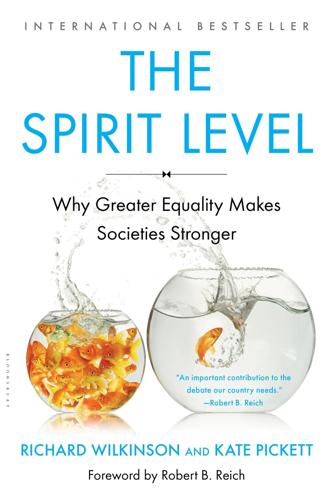
The Spirit Level: Why Greater Equality Makes Societies Stronger
by
Richard Wilkinson
and
Kate Pickett
Published 1 Jan 2009
Doing so requires longitudinal data – studies that track people over time to see where they started from and where they end up. One convenient way is to take income mobility as a measure of social mobility: to see how much people’s incomes change over their lifetimes, or how much they earn in comparison to their parents. To measure inter-generational mobility these longitudinal studies need to cover periods of as much as thirty years, in order for the offspring to establish their position in the income hierarchy. When we have income data for parents and offspring, social mobility can be measured as the correlation between the two. If the correlation between parent’s income and child’s income is high, that means that rich parents tend to have children who are also rich, and poor parents tend to have children who stay poor.
…
(These comparisons are not affected by the fact that average incomes are now higher than they used to be.) LIKE FATHER, LIKE SON? Comparable international data on inter-generational social mobility are available for only a few of our rich countries. We take our figures from a study by economist Jo Blanden and colleagues at the London School of Economics.271 Using large, representative longitudinal studies for eight countries, these researchers were able to calculate social mobility as the correlation between fathers’ incomes when their sons were born and sons’ incomes at age thirty. Despite having data for only eight countries, the relationship between intergenerational social mobility and income inequality is very strong.
…
Wilkinson, ‘Income distribution and life expectancy’, British Medical Journal (1992) 304 (6820): 165–8. 82. Editor’s Choice, ‘The Big Idea’, British Medical Journal (1996) 312 (7037): 0. 83. Department of Health, The NHS Plan: A plan for investment, a plan for reform. London: HMSO, 2000. 84. Office for National Statistics. ‘Trends in ONS Longitudinal Study estimates of life expectancy, by social class 1972–2005’. http://www. statistics.gov.uk/StatBase/Product.asp?vlnk=8460&More=Y (accessed 9 September 2008). 85. C. J. Murray, S. C. Kulkarni, C. Michaud, N. Tomijima, M. T. Bulzacchelli, T. J. Iandiorio and M. Ezzati, ‘Eight Americas: investigating mortality disparities across races, counties, and race-counties in the United States’, Public Library of Science Medicine (2006) 3 (9): e260. 86.
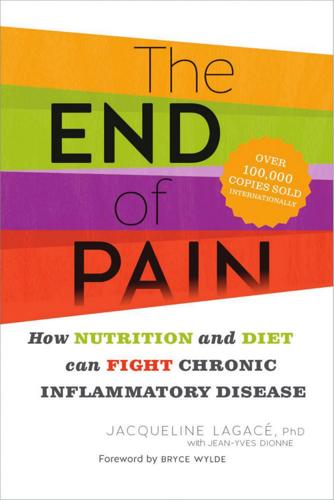
The End of Pain: How Nutrition and Diet Can Fight Chronic Inflammatory Disease
by
Jacqueline Lagace
Published 7 Mar 2014
In fact, one out of two women and one out of five men, aged fifty and over, will suffer a fracture due to osteoporosis at some point during the remainder of their lives.125 Osteoporosis leads to a great number of fractures and contributes to the increase in mortality rates among seniors.126 Countries with high rates of consumption of dairy products and animal proteins also present the highest rates of bone fractures due to osteoporosis.127 Two longitudinal studies (that is, studies that follow the subjects for many years) on women’s health (one at Harvard University that followed 75,000 nurses over twelve years, and another in Sweden that involved 60,689 women over eleven years) found that an increase in milk consumption did not protect against the risk of osteoporotic fractures.128 Also, two meta-analyses on the intake of milk or dairy products in relation to fracture risk did not report a drop in fracture risk with an increase in the intake of milk or dairy products or an increase in dietary calcium.129 Modern nutrition and osteoporosis Contrary to primitive man’s diet, which was largely based on foods such as fruits and wild plants, which are rich in alkaline substances, the Western diet is based on high consumption of meat, dairy products, cereals, sweets and salt, which leads to an excess acidity in the body that is not countered by a sufficient intake of alkaline foods such as fruits and vegetables.
…
Similar observations were made in diabetic patients: those who followed a diet low in glycotoxins showed a considerable drop in inflammation markers and vascular dysfunction.171 Also, the presence of glycotoxins in a diet is strongly associated with inflammation markers, oxidative stress and endothelial-cell dysfunction, not only in diabetic patients but also in normal subjects.172 Many glycotoxins, such as acrylamide, are abundant in foods commonly consumed in a Western-type diet.173 Based on an analysis of the foods eaten in three days by ninety individuals in good health, it was found that an average American consumes about 16,000 ku, plus or minus 5,000 ku (kilo units per day, as determined by authors) of glycotoxins, and that such a diet significantly contributes to the pool of glycotoxins in the body.174 This was further proven by the fact that a subgroup of the study in question, for which the consumption of dietary glycotoxins was reduced, experienced an average drop of serum glycotoxins of 30 percent to 40 percent.175 In general, only 10 percent of glycotoxins are absorbed by intestinal cells, and 30 percent of this value is excreted by the kidneys, while 70 percent is stored in various tissues.176 Unfortunately, given that from age fifty, kidney efficiency drops even in healthy individuals, the effects of glycotoxin accumulation get worse with age. It is therefore no coincidence that in Western countries, chronic disease is increasingly frequent, particularly since the 8 6 > t h e e n d o f pa i n advent of industrialized food processing. A longitudinal study (one conducted over many years) on healthy, average elderly persons in Italy showed that the most significant factor linked to mortality was the drop in renal function. There could be an obvious link between inflammation, oxidizing stress, glycotoxins and chronic disease; and as a matter of fact, studies show that the incidence of chronic kidney disease as well as the cardiovascular diseases that develop with age could be lowered by reducing the level of glycotoxins in the diet either with the help of drugs or by ingesting fewer of them.177 Defense mechanisms against glycotoxins Recent studies suggest that even though the amount of endogenous glycotoxins (those produced by the body) increases with age, dietary glycotoxins make up the majority of those found in the body and are responsible for age-related diseases.178 Dietary glycotoxins are counted in milligrams, while endogenous glycotoxins present in biological systems could be counted in picograms; that is, a billion times less than dietary glycotoxins.179 Our bodies are naturally protected against the formation of endogenous glycotoxins by an enzymatic process: cell deglycation.180 This process is an essential defense system in mammalian cells, but can go overboard in the case of diabetes due to hyperglycemia or of a chronic intake of excessive dietary glycotoxins, for example.
…
Potential environmental risk factors in the development of rheumatoid arthritis The influence of female hormones Given the high rate of rheumatoid arthritis in women — two to five times higher than in men — it was assumed that female hormones play a part in the onset of the disease. However, the results of the studies on this matter were contradictory. A longitudinal study of a cohort of 121,700 women was conducted over a period of twentysix years (from 1976 to 2002) to elucidate the risk factors linked to reproductive hormones. The study considered the variables of age, age at the onset of menstruation, age at birth of first child, history of breast feeding, use of oral contraception, irregular menstrual rheumatoid arthritis and the hypotoxic diet < 161 periods, body-mass index and smoking, with all these elements being integrated into a multivariate model of the risk of developing rheumatoid arthritis.16 The study found that breast feeding for at least twelve months partially protected against the development of rheumatoid arthritis.

The Diet Myth: Why America's Obsessions With Weight Is Hazardous to Your Health
by
Paul Campos
Published 4 May 2005
This is especially significant information, given that the Iowa study is one of only a few studies that have distinguished between intentional and unintentional weight loss when measuring the effects of weight loss on health. Several other recent studies have found associations between weight loss and an increased risk of death. In Steven Blair’s ongoing long-term longitudinal study of the effects of physical fitness on health, involving more than seventy thousand subjects, a weight loss of more than 5% among men with BMI figures of 26 to 29 increased the risk of cardio- Fat on Trial 31 vascular disease mortality by nearly 200%, as compared to similarly “overweight” men who maintained stable weights.
…
Rather than pretending that such inadequate methods can provide us with reliable knowledge, let us look at studies that have made a serious attempt to measure the effects of fitness and activity levels on health, especially as these factors relate to body mass. The most extensive work of this sort has been carried out by Steven Blair and his colleagues at Dallas’ Cooper Institute. The institute’s Aerobics Center Longitudinal Study has, over the course of the past two decades, compiled an extensive database that tracks the health, weight, and basic fitness levels of more than seventy thousand people. Unlike traditional studies of the effect of weight on health—which as we have seen either ignore the role played by fitness and activity levels, or merely ask participants to decide for themselves if they are active or not—the Aerobics Center’s study gives regular treadmill stress tests to its participants.
…
Avioli, “Significance of Osteoporosis: A Growing International Health Care Problem,” Calcif Tissue Int 49, S5–S7 (1991); Edelstein and BarrettConnor, “Relation Between Body Size and Bone Mineral Density in Elderly Men and Women,” Am J Epidemiol 138, 160–69 (1993); Tremollieres et al., “Vertebral Postmenopausal Bone Loss Is Reduced in Overweight Women: A Longitudinal Study in 155 Early Postmenopausal Women,” J Clin Endocrinol Metab 77, 683–86 (1993). “ ‘Epidemiology is a crude and inexact science . . .’ ” New York Times, October 11, 1995, Sec. C, p. 1. “To understand the implications of this distinction, consider the fact that bald men die sooner . . .” This analogy was suggested to me by Paul Ernsberger.
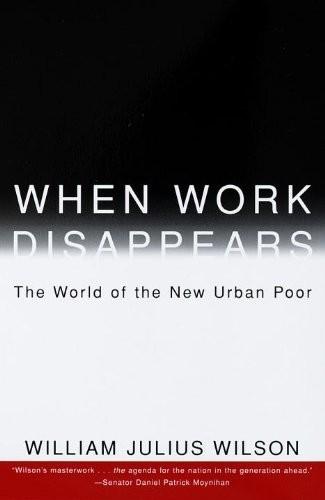
When Work Disappears: The World of the New Urban Poor
by
William Julius Wilson
Published 1 Jan 1996
In families where the mother had never been married, the median income was only $9,272. Likewise, whereas only one-tenth of children in husband-wife families were living below the poverty line, over one-third of those living with divorced mothers and two-thirds living with mothers who had never married were classified as poor. Finally, longitudinal studies also reveal that mothers who have never been married receive AFDC for a significantly longer period than do separated or divorced mothers. In addition to the strong links between single parenthood and poverty and welfare receipt, the available research indicates that children from mother-only households are more likely to be school dropouts, to receive lower earnings in young adulthood, and to be recipients of welfare.
…
They found that whereas more than half of young black men (ages 18 to 29) with annual earnings of over $20,000 were married in 1987, the marriage ratio decreased steadily for those earning less than that—39 percent for those earning between $15,000 and $20,000, 29 percent for those earning between $10,000 and $15,000, 7 percent for those earning between $1,000 and $5,000, and only 3 percent for those with no reported earnings. Although there is a strong association between rates of marriage and both employment status and earnings at any given point in time, national longitudinal studies suggest that these factors account for a relatively small proportion of the overall decline in marriage among African-Americans. Christopher Jencks points out that the decline in the proportion of African-American men who were married and living with their wives was almost as large among those who had worked throughout the previous years as among black men in general.
…
Finally, David Ellwood and David Rodda found no significant change in the relative impact of work and earnings on marriages between the two periods they observed—1967–71 and 1980–86. These studies, however, are based on national data. How much of the decline in the black marriage rate in the inner city can be accounted for by the increasing joblessness among black males? The UPFLS is not a longitudinal study, but it did collect retrospective (or life-history) marriage and employment data that allow the estimation of trends over time. An analysis of respondents’ retrospective data comparing the employment experiences of different age groups (cohorts) reveals that marriage rates have dropped much more sharply among jobless black fathers than among employed black fathers.
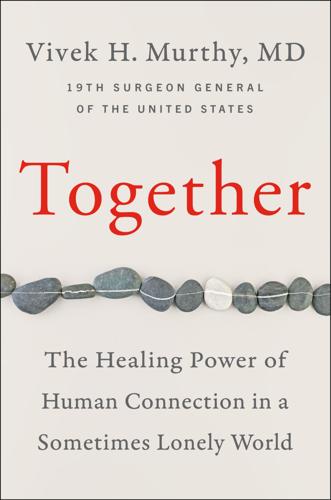
Together
by
Vivek H. Murthy, M.D.
Published 5 Mar 2020
Loneliness Index: Survey of 20,000 Americans Examining Behaviors Driving Loneliness in the United States,” Cigna, May 2018, https://www.multivu.com/players/English/8294451-cigna-us-loneliness-survey/docs/IndexReport_1524069371598-173525450.pdf. 7Parminder Raina, Christina Wolfson, Susan Kirkland, and Lauren Griffith, “The Canadian Longitudinal Study on Aging (CLSA) Report on Health and Aging in Canada: Findings from Baseline Data Collection 2010–2015,” Canadian Longitudinal Study on Aging (CLSA), May 2018, https://www.ifa-fiv.org/wp-content/uploads/2018/12/clsa_report_en_final_web.pdf. 8“Australian Loneliness Report: A survey exploring the loneliness levels of Australians and the impact on their health and wellbeing,” Australian Psychological Society and Swinburne University, Psychweek.org.au, November 17, 2018, https://www.psychweek.org.au/wp/wp-content/uploads/2018/11/Psychology-Week-2018-Australian-Loneliness-Report.pdf. 9“All the Lonely People: Loneliness in Later Life,” Age UK, September 25, 2018, https://www.ageuk.org.uk/latest-press/articles/2018/october/all-the-lonely-people-report/. 10“Do Europeans Feel Lonely?
…
Guinn, “Prevalence of Adverse Childhood Experiences From the 2011–2014 Behavioral Risk Factor Surveillance System in 23 States,” JAMA Pediatrics 172, no. 11 (September 1, 2018): 1038–44, https://doi.org/10.1001/jamapediatrics.2018.2537. 17Emmy E. Werner, “Risk, resilience, and recovery: Perspectives from the Kauai Longitudinal Study,” Development and Psychopathology 5, no. 4 (1993): 503–15, https://doi.org/10.1017/s095457940000612x. 18Emmy Werner, “Resilience and Recovery: Findings from the Kauai Longitudinal Study,” FOCAL POiNT Research, Policy, and Practice in Children’s Mental Health 19, no. 1 (Summer 2005): 11–14, https://www.pathwaysrtc.pdx.edu/pdf/fpS0504.pdf. 19Emmy Werner and Ruth Smith, Overcoming the Odds: High Risk Children from Birth to Adulthood (Ithaca and London: Cornell University Press, 1992). 20Emmy Werner, “Risk, Resilience, and Recovery,” Reclaiming Children and Youth 21, no. 1 (2012): 18–23. 21Mary Karapetian Alvord and Judy Johnson Grados, “Enhancing Resilience in Children: A Proactive Approach,” Professional Psychology: Research and Practice 36, no. 3 (2005): 238–45, https://psycnet.apa.org/doi/10.1037/0735-7028.36.3.238. 22Camelia E, Hostinar and Megan R.
…
The irony is that we’re almost always left feeling better when we take those risks with friends. Inner Circle: Close Friends and Confidantes In 1938, during the Great Depression, Harvard University initiated a long-term study of 268 men from the Harvard classes of 1939 to 1944 with the hope of learning what helped people lead healthy and fulfilled lives. Longitudinal studies are common, but this study has exceeded nearly all of them, still ongoing after eighty years. The original subjects included men who went on to become successful politicians, entrepreneurs, and doctors, and others who got into trouble with the law and had financial problems. Since its inception, the study has expanded to the children and wives of the original study participants.
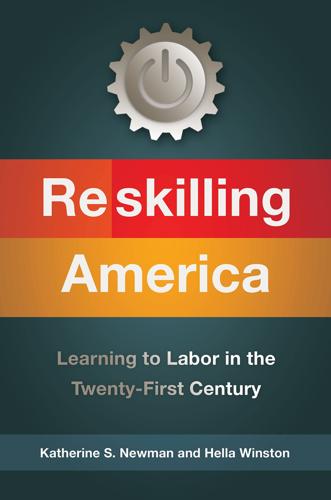
Reskilling America: Learning to Labor in the Twenty-First Century
by
Katherine S. Newman
and
Hella Winston
Published 18 Apr 2016
She contrasted the outcomes for three groups of students: those enrolled in general high-school programs (like Melissa); those in work-oriented vocational programs (like Wesley); and students in between whom she termed Mid Mixers because they took some vocational courses in programs that were dominated by standard academic high-school subjects.5 She compared how these three groups of students fared in terms of enrollment in postsecondary school or employment versus extended periods of unemployment. The data she turned to—the National Longitudinal Study of Youth (NLSY)—are particularly helpful in answering that question because they followed a large national sample of high-school graduates for many years and hence can tell us something about how their school careers shaped their adult lives. Deterding found that vocational students like Wesley had better prospects than students like Melissa, who pursued a routine curriculum in a general high school.
…
Phillips and Robert Gebeloff, “In Data, ‘A’ Schools Leave Many Not Ready for CUNY,” New York Times, June 21, 2011, http://www.nytimes.com/2011/06/22/nyregion/many-from-a-rated-nyc-schools-need-help-at-cuny.html. 9. Jennifer Wine, Natasha Janson, Sara Wheeless, and Tracy Hunt-White, 2004/09 Beginning Postsecondary Students Longitudinal Study (BPS:04/09): Full-scale Methodology Report, US Department of Education, Center for Education Statistics, 2012-246 (November 2011), http://nces.ed.gov/pubs2012/2012246_1.pdf. 10. “Like so many other community colleges, particularly those serving low-income students in urban areas, CUNY’s six community colleges have long struggled to improve their graduation rates.
…
Harrell, and Phoebe Khasiala Wakhungu, Completing College: A National View of Student Attainment Rates—Fall 2008 Cohort, Signature Report No. 8 (Herndon, VA: National Student Clearinghouse Research Center, November 2014), http://nscresearchcenter.org/wp-content/uploads/SignatureReport8.pdf. 11. Ibid. 12. This is especially worrisome with respect to underrepresented minorities. Data from the Beginning Post Secondary Students (BPS) Longitudinal Study (2003–2009) found that only 17.1 percent of black and 15.4 percent of Latino men who enter the community college will have earned a certificate, degree, or transferred to a four-year college or university within 150 percent of normal time (three years). In contrast, 27 percent of white men will have attained their goals in this same time frame.

The Pot Book: A Complete Guide to Cannabis
by
Julie Holland
Published 22 Sep 2010
“Pain and Pain Treatment in AIDS Patients: A Longitudinal Study.” Journal of Pain and Symptom Management 19 (2000): 339–47. Fried, P. A., and A. M. Smith. “A Literature Review of the Consequences of Prenatal Marihuana Exposure: An Emerging Theme of a Deficiency in Aspects of Executive Function.” Neurotoxicology and Teratology 23 (2001):1–11. Fried, P. A., B. Watkinson, and R. Gray. “Neurocognitive Consequences of Marihuana: A Comparison with Pre-drug Performance.” Neurotoxicology and Teratology 27 (2004): 231–39. Fried, P. A., D. James, and R. Gray. “Current and Former Marijuana Use: Preliminary Findings of a Longitudinal Study of Effects on IQ in Young Adults.”
…
.: American Psychiatric Association, 2000. Amtmann, D., P. Weydt, K. L. Johnson, et al. “Survey of Cannabis Use in Patients with Amyotrophic Lateral Sclerosis.” American Journal of Hospice and Palliative Medicine 21 (2004): 95–104. Andreasson, S., P. Allebeck, A. Engstrom, et al. “Cannabis and Schizophrenia: A Longitudinal Study of Swedish Conscripts.” Lancet 2 (1987): 1483–86. Anonymous. “Marijuana Strains, Pictures, and Descriptions” (2007): www.marjuanastrains.com. Accessed December 8, 2007. Anthony, B., and R. Solomon, eds. The Black Candle by Emily Murphy. Toronto, ON.: Coles Publishing, 1973. Anthony, J. C., L.
…
The Marijuana Problem in the City of New York: Sociological, Medical and Psychological Studies. Lancaster, PA: Jacques Cattell Press, 1944. McCormack, J. P., R. Li, D. Zarowny. “Inadequate Treatment of Pain in Ambulatory HIV Patients.” Clinical Journal of Pain 9 (1993): 279–83. McGee, R., S. Williams,, R. Poulton, et al. “A Longitudinal Study of Cannabis Use and Mental Health from Adolescence to Early Adulthood.” Addiction 95 (2000): 491–503. McGuigan, M. “Cannabinoids.” In N. E. Flomenbaum, L. R. Goldfrank, R. S. Hoffman, et al., eds. Goldfrank’s Toxicological Emergencies, 8th ed. New York: McGraw Hill, 2006. McHale, S., and N.
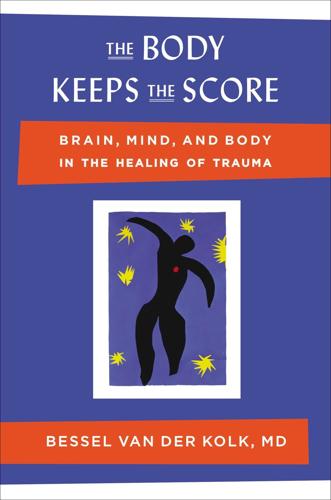
The Body Keeps the Score: Brain, Mind, and Body in the Healing of Trauma
by
Bessel van Der Kolk M. D.
Published 7 Sep 2015
Read more about Sroufe at www.cehd.umn.edu/icd/people/faculty/cpsy/sroufe.html and more about the Minnesota Longitudinal Study of Risk and Adaptation and its publications at http://www.cehd.umn.edu/icd/research/parent-child/ and http://www.cehd.umn.edu/icd/research/parent-child/publications/. See also L. A. Sroufe and W. A. Collins, The Development of the Person: The Minnesota Study of Risk and Adaptation from Birth to Adulthood (New York: Guilford Press, 2009); and L. A. Sroufe, “Attachment and Development: A Prospective, Longitudinal Study from Birth to Adulthood,” Attachment & Human Development 7, no. 4 (2005): 349–67. 20.
…
In fact, we had included several prospective studies in our proposal. Let’s look at just two of them here. HOW RELATIONSHIPS SHAPE DEVELOPMENT Beginning in 1975 and continuing for almost thirty years, Alan Sroufe and his colleagues tracked 180 children and their families through the Minnesota Longitudinal Study of Risk and Adaptation.19 At the time the study began there was an intense debate about the role of nature versus nurture, and temperament versus environment in human development, and this study set out to answer those questions. Trauma was not yet a popular topic, and child abuse and neglect were not a central focus of this study—at least initially, until they emerged as the most important predictors of adult functioning.
…
Sroufe informally told me that he thought that resilience in adulthood could be predicted by how lovable mothers rated their kids at age two.24 THE LONG-TERM EFFECTS OF INCEST In 1986 Frank Putnam and Penelope Trickett, his colleague at the National Institute of Mental Health, initiated the first longitudinal study of the impact of sexual abuse on female development.25 Until the results of this study came out, our knowledge about the effects of incest was based entirely on reports from children who had recently disclosed their abuse and on accounts from adults reconstructing years or even decades later how incest had affected them.

If You're So Smart, Why Aren't You Happy?
by
Raj Raghunathan
Published 25 Apr 2016
Veblen, The Theory of the Leisure Class (Oxford, UK: Oxford University Press, 2007). materialistic focus . . . is one of the biggest happiness killers: There are numerous studies showing the negative effect that materialism has on happiness, including T. Kasser et al., “Changes in Materialism, Changes in Psychological Well-being: Evidence from Three Longitudinal Studies and an Intervention Experiment,” Motivation and Emotion 38(1) (2014): 1–22; M. A. Bauer et al., “Cuing Consumerism Situational Materialism Undermines Personal and Social Well-Being,” Psychological Science 23(5) (2012): 517–23; and R. Pieters, “Bidirectional Dynamics of Materialism and Loneliness: Not Just a Vicious Cycle,” Journal of Consumer Research 40(4) (2013): 615–31.
…
how much they like us: A variety of findings show that expressive people are more liked, since it is through expression that we communicate and communication is key to connect with others (which, as we saw in chapter 3A, is a very important goal). For example, less expressive people have fewer social relationships; T. English et al., “Emotion Regulation and Peer-Rated Social Functioning: A 4-Year Longitudinal Study,” Journal of Research in Personality 46(6) (2012): 780–84; see also I. B. Mauss et al., “Don’t Hide Your Happiness! Positive Emotion Dissociation, Social Connectedness, and Psychological Functioning,” Journal of Personality and Social Psychology 100(4) (2011): 738–48. Suppressing emotions after making a sacrifice also “sours” relationships with romantic partners; E.
…
ir=India&adsSiteOverride=in; www.dailymail.co.uk/news/article-2001824/Sitting-dangerous-smoking-study-shows.html; www.runnersworld.com/health/sitting-is-the-new-smoking-even-for-runners; and www.dailymail.co.uk/femail/article-2622916/Work-desk-Then-experts-worrying-news-Why-sitting-bad-smoking.html. inactivity kills more people worldwide: A. A. Thorp et al., “Sedentary Behaviors and Subsequent Health Outcomes in Adults: A Systematic Review of Longitudinal Studies, 1996–2011,” American Journal of Preventive Medicine 41(2) (2011): 207–15; E. G. Wilmot et al., “Sedentary Time in Adults and the Association with Diabetes, Cardiovascular Disease and Death: Systematic Review and Meta-analysis,” Diabetologia 55 (2012): 2895–905. 50 percent greater risk of death: N.
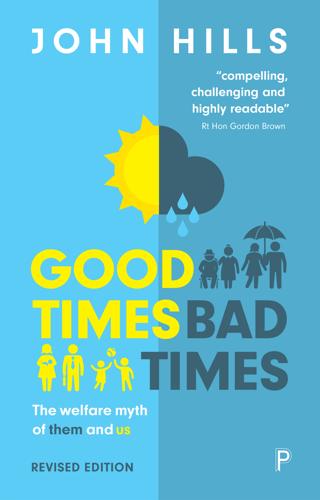
Good Times, Bad Times: The Welfare Myth of Them and Us
by
John Hills
Published 6 Nov 2014
Note: Figures are for the third quarter of each year, seasonally adjusted, for adults aged 16–64. Figures are for durations of uncompleted spells of unemployment (using Labour Force Survey definitions). 4.8 Proportion of claimants remaining on Jobseeker’s Allowance, spells starting in April 2007, 2009 and 2011 Source: Data kindly supplied by DWP from Work and Pensions Longitudinal Study (not seasonally adjusted). 4.9 Components of income for a couple with one child, 2010–11 Source: DWP tax benefit model for 2010–11 (webarchive.nationalarchives.gov.uk/+/http://statistics.dwp.gov.uk/asd/index.php?page=tbmt). Note: Calculations are for couple working 30 hours or more per week with rent of £149 and Council Tax of £22. 4.10 Combined tax and benefit withdrawal rates for a couple with one child, 2010–11 Source: DWP tax benefit model for 2010–11 (webarchive.nationalarchives.gov.uk/+/http://statistics.dwp.gov.uk/asd/index.php?
…
Note: Figures are for women with A-levels or higher qualifications only, and are at January 2008 prices (logarithmic vertical scale). 5.2 Income trajectories in the first 10 years of BHPS compared to random patterns Source: Rigg and Sefton (2006, Table 1), based on data from BHPS 1991–2000. 5.3 Age-earnings profiles by gender, private sector employees with high and low education, UK Source: Hills et al (2010, Figure 11.20) based on Disney et al (2009), using Labour Force Survey data from 1994 to 2006. 5.4 Average hourly wage-age trajectories for men and women born before 1955 by qualifications Source: Jenkins (2011, Figure 7.3). Note: Original shown on logarithmic scale. 5.5 Proportion of claimants remaining on Incapacity Benefit or Severe Disablement Allowance, spells starting in April 2004 and April 2007 Source: Data kindly supplied by DWP from Work and Pensions Longitudinal Study (includes Severe Disablement Allowance). 5.6 Positions in income distributions of 1992 and 2006 of those who started in top and bottom tenths of distribution in 1991 Source: Jenkins (2011, Figure 5.1) (simplified and inverted). 5.7 Where people starting in different fifths of the income distribution spend their time over following years Source: Barton et al (2013, Tables 3.1 and 3.2).
…
Gregg, P., Macmillan, L. and Vittori, C. (2013) ‘Lifetime intergenerational economic mobility in the UK’, Presentation to Social Mobility and Child Poverty Commission Seminar on ‘Intergenerational mobility and social gradients in children’s life chances’, London, 20 November. Hansen, K. and Joshi, H. (2008) Millennium Cohort Study Third Survey: A user’s guide to initial findings, London: Centre for Longitudinal Studies, Institute for Education. Hedges, A. (2005) Perceptions of redistribution: Report on exploratory qualitative research, CASEpaper 96, London: London School of Economics. Hills, J. (2004a) Inequality and the state, Oxford: Oxford University Press. Hills, J. (2004b) ‘Heading for retirement?
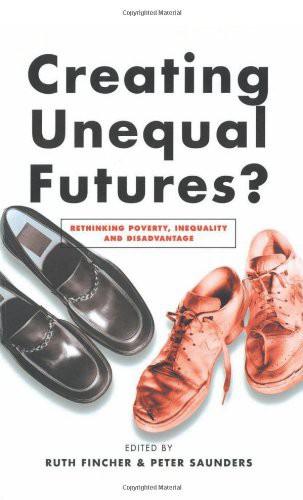
Creating Unequal Futures?: Rethinking Poverty, Inequality and Disadvantage
by
Ruth Fincher
and
Peter Saunders
Published 1 Jul 2001
A recent British study based on longitudinal data was able to conclude that employment was by far the chief escape route from poverty (Great Britain 1999, p. 22). Our evidence suggests this is also the case with child poverty in Australia, and it is likely that this will continue. But to demonstrate conclusively that this will be so, we need longitudinal studies that enable us to distinguish temporary fluctuations from more permanent trends. Early results using administrative data of the Department of Family and Community Services show that a longitudinal study need not be impossibly expensive (Pech and McCoull 1998). NOTE 1 The following proposals draw on Sweet (1998). 128 PDF OUTPUT c: ALLEN & UNWIN r: DP2\BP4401W\MAIN p: (02) 6232 5991 f: (02) 6232 4995 36 DAGLISH STREET CURTIN ACT 2605 128 5 Tackling poverty among indigenous Australians Boyd Hunter TACKLING POVERTY AMONG INDIGENOUS AUSTRALIANS Indigenous Australians are the most disadvantaged and poorest section of Australian society.
…
Table 4.7 18- to 19-year-old school leavers engaged in marginalising and non-marginalising activities, May 1996 Left school Year 12 Engaged in marginalising activities Not engaged in marginalising activities Left school before Year 12 Engaged in marginalising activities Not engaged in marginalising activities Source: Males Females Persons 18 82 18 82 18 82 33 67 58 42 44 56 McClelland et al. 1998, Table 5. Longitudinal studies have now shown conclusively that unemployment is an independent cause of ill-health (Mathers 1996, p. 75). Mathers’s findings on the health of young people who are ‘not working, not studying’ leads us to the core of our discussion on marginalisation and its links to employment. How large is this group?
…
contracting out, 35, 198–9 Coombs, H.C., 137 Costello, T., 71 crime, 12, 14, 53, 116, 130, 140, 148 reporting, 75, 84, 179–80 criminal justice system, 13, 140, 142, 152, 154 criminalisation, 134 Crouch, C., 126–7 Davidson, K., 82 Dean, H., 5 decentralisation, 25 dependence see welfare state dependence deregulation see labour market deregulation disadvantage see inequality distribution of work see labour markets domestic news stories 80–4 passim Downing, R., 38 Eardley, T., 209 Earned Income Tax Credit Scheme, 215, 220 education, 14, 112–15, 126, 137–8, 141, 156, 177 retention rates in, 113–14, 127 earning inequality see income inequality economic rationalism, 40 Ellwood, D., 53 employment casualisation of, 10, 169, 178, 192, 198, 226 low-paid, 194–5, 205–6, 209, 213–21 passim, 226 non-standard, 17–18, 197–9 of indigenous people, 137–8 of parents, 16, 29 patterns of, 108–11 enterprise bargaining, 9, 16, 199, 200, 217, 226 equivalence scales, 49–50, 143–50 passim, 157 Ericson, R.V., 74, 75, 76, 94 Erikson, R., 121, 122 Esping-Andersen, G., 42, 51, 54, 56 Eurostat, 55, 61 Feldstein, M., 195 Fischer, C., 19, 23 Fitchen, J.M., 162 ‘Five Economists’, 213–15, 228 Fraser, N., 26, 27 Froud, J., 206–7 funding for indigenous people, 135 Galbraith, J.K., 1, 93 gap between rich and poor, 72, 91–2, 197; see also polarisation Gazier, B., 224–5 generation of poverty see poverty, causes of Gittins, R., 209 Gleeson, B., 24 globalisation, 1, 2, 3, 9, 18, 21, 24, 40, 138 Golding, P., 75, 81, 83, 84, 87, 92, 93 Goldthorpe, J.H., 121, 122 government policy see neoliberal policy and public policy Gregory, R.G., 16, 122, 200 Gunn, M., 96 Hanson, P., 85, 88, 93 Harding, A., 6, 209, 216 health, 117–18, 148, 149, 151–3; see also National Health Strategy Henderson, Ronald, 6, 11, 25, 35, 38, 129 Hobsbaum, E., 39 homelessness, 45, 90–1 Horin, A., 81 housing, 9, 22, 130, 146, 160–4 passim, 171–2, 181, 183–4 ownership, 50, 164–5 public, 22, 171, 173–5, 184–5 248 PDF OUTPUT c: ALLEN & UNWIN r: DP2\BP4401W\INDEX p: (02) 6232 5991 f: (02) 6232 6232 36 DAGLISH STREET CURTIN ACT 2605 248 INDEX Howarth, C. 12 Human Development Report, 1, 57 immigrants, 20, 45, 52, 74 income distribution, 20, 49–50, 67, 167, 195, 209 inequality, 2, 5, 16, 20, 39, 40, 55, 57–61 passim, 109, 115, 199–202, 207–19 poverty, 5, 14, 104 income measurement see poverty measurement income support see social security benefits indigenous Australians, 13, 29–30, 77, 86, 129–57, 169, 172, 175, 177 case studies, 131–4 inequality, 1–37 passim; 39, 123, see also income inequality discussion of, 52 in the labour market, 195–206 spatial, 172–8, 185–8 theories of, 44 internal migration see population mobility investment see public investment international comparisons, 39, 40, 41, 55–61, 105, 107–9 international news stories, 78–80 Jäntti, M., 34, 103–5, 111 Joseph Rowntree Foundation, 12 King, A., 11, 76, 208 labour market(s), 9, 11, 15, 18–19, 30, 34, 40, 126–8, 160, 163, 194–228 churning, 204, 220 deregulation, 17, 23, 36, 202, 208 segmentation, 204 see also employment labour market programs, 23, 35, 206 Lamb, S., 123 land rights, 136–7, 157 Latham, M., 85 Leser, D., 72, 74 literacy, 122–4 location, 5, 9, 18, 19, 20, 30, 32–3, 45, 129, 160–93 passim locational disadvantage, 160, 176, 180, 185, 186 lone parents, 59, 86, 88, 93, 105–6, 108, 117, 150, 196 longitudinal studies see research methods Low, N., 24 low wages see employment, low-paid and working poor Luxembourg Income Study, 47, 55, 102 Mabo, 136 magazines, 97 Maher, C., 180 Manning, I., 17, 25–6, 35–6, 92 Mackay, H., 74 marginalisation see social exclusion market income, 111–12 Marks, G., 122 McKnight, D., 95 means-testing, 57, 69 measurement see poverty measurement media, 5, 28, 70–101 middle-class welfare, 23, 64 Middleton, S., 75, 81, 83, 84, 87, 92, 93 Mission Australia, 71 Mitchell, D., 56 mobility, occupational see occupational structure Murray, C., 40 National Aboriginal and Torres Strait Islander Survey, 139–42 passim, 145, 147, 148–9, 151, 155, 157 National Commission of Audit, 25 National Health Strategy, 152, 153 249 PDF OUTPUT c: ALLEN & UNWIN r: DP2\BP4401W\INDEX p: (02) 6232 5991 f: (02) 6232 6232 36 DAGLISH STREET CURTIN ACT 2605 249 CREATING UNEQUAL FUTURES?

The Sociopath Next Door
by
Martha Stout
Published 8 Feb 2005
The inventory includes several validity measures as well, including a “Lie Scale” to expose attempts to beat the test. Overall in these studies, identical twins are twice or more as likely to have similar scores on the Pd scale as are fraternal twins, strongly suggesting at least some genetic role in the “Psychopathic Deviate” pattern. In 1995, a major longitudinal study was published that investigated sociopathic traits and their absence in 3,226 pairs of male twins located through a register of people who had served in the United States armed services during the Vietnam War. By the same mathematical model, eight sociopathic symptoms and their absence were found to be significantly heritable.
…
They are, in descending order of theoretical heritability: “fails to conform to social norms,” “aggressive,” “reckless,” “impulsive,” “fails to honor financial obligations,” “inconsistent work,” “never monogamous,” and “lacks remorse.” Still other studies have found that sociopaths have low “agreeableness,” low “conscientiousness,” and low “harm avoidance,” all of which personality dimensions have a genetic component. The Texas Adoption Project, which has now been in progress for over thirty years, is a highly regarded longitudinal study of more than five hundred adopted children. The study looks at the acquisition of intelligence and various personality features, including the “Psychopathic Deviate” pattern, by comparing adopted children, now grown, with both their biological and adoptive parents. The Texas Adoption Project reports that, where scores on the Pd scale are concerned, individuals resemble their birth mothers, whom they have never met, significantly more than they do the adoptive parents who raised them.
…
A number of such studies have included the “Psychopathic Deviate” (Pd) scale: For a review of twin studies that have used the Pd scale, see H. Goldsmith and I. Gottesman, “Heritable Variability and Variable Heritability in Developmental Psychopathology,” in Frontiers in Developmental Psychopathology, eds. M. Lenzenweger and J. Haugaard (Oxford: Oxford University Press, 1996). In 1995, a major longitudinal study: M. Lyons et al., “Differential Heritability of Adult and Juvenile Antisocial Traits,” Archives of General Psychiatry 52 (1995): 906–915. Still other studies have found: See T. Widiger et al., “A Description of the DSM-III-R and DSM-IV Personality Disorders with the Five-factor Model of Personality,” in Personality Disorders and the Five-factor Model, eds.
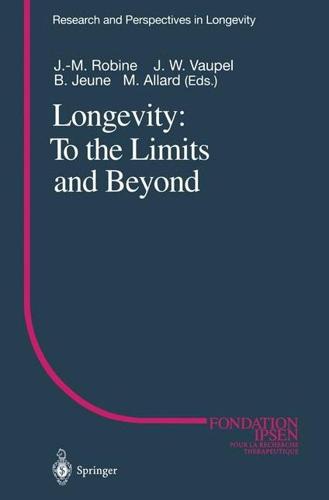
Longevity: To the Limits and Beyond (Research and Perspectives in Longevity)
by
Jean-Marie Robine
,
James W. Vaupel
,
Bernard Jeune
and
Michel Allard
Published 2 Jan 1997
The key question that needs to be answered is how different combinations of factors involving nature and nurture combine to contribute to individual differences in longevity. The implication of this question is related to predetermination of one's life span on the one hand and self and other determinations on the other. Our current state of knowledge on aging precludes predicting longevity at an individual level. One of the lessons learned from longitudinal studies of aging is that few individuals follow the pattern of age changes described in average longitudinal functions (e.g., Dannefer and Sell 1988; Pedersen and Harris 1990). A similar phenomenon exists in cross-sectional studies of aging (e.g., Siegler et al. 1995). Averages that are supposed to describe composite characteristics of sample groups often are not representative of anyone individual.
…
An important question in predicting successful aging and longevity at the individual or group level is whether similar predictors are pertinent for both. Although there is no answer to that question at present, one might speculate that many similar predictors would be pertinent. Figure 3 shows an example of the Bonn Longitudinal Study (Thomae 1976) in which similar predictors were employed for longevity. Extension of the designs and findings from these two types of studies has the potential of providing us with an understanding of successful aging and longevity. Extant findings seem to suggest that different predictors and different Family Longevity I ~ INDIVIDUAL CHARACTERISTICS ~ Life Satisfaction Personality Gender Socioeconomic Status Age ADAPTATIONAL (BEHAVIORAL) CHARACTERISITCS Cognitive Skills Life Events and Coping Activities Awareness/Reminiscence Time Use Health Seeking Behavior HEALTH Mental Health Physical Health Fig. 2.
…
Int J Aging Human Devel 34(1):1-18 Rowe JW, Kahn RL (1987) Human aging: usual and successful. Science 237:143-149 Siegler IC, Poon LW, Madden DJ, Welsh KA (1995) Psychological aspects of normal aging. In: Busse EW, Blazer DA (eds) Geriatric psychiatry Washington, DC, American Psychiatric Press, pp. 105-128 Thomae H (1976) Patterns of aging: Findings from the Bonn longitudinal study of aging. New York, Karger Woodruff-Pak DS (1988) Psychology and aging. Englewood Cliffs, NJ, Prentice-Hall, Inc Towards a Genealogical Epidemiology of Longevity I.M. Robine' and M. Allard" Like father, like son? What is the relation between the parents' or grandparents' longevity and that of their children?
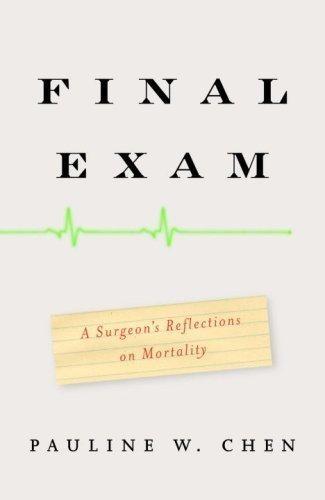
Final Exam: A Surgeon's Reflections on Mortality
by
Pauline W. Chen
Published 1 Jan 2006
In 1961, 90 percent of physicians preferred not to tell their patients about a cancer diagnosis; by 1979, 98 percent of physicians would choose to do so. Novack et al., “Changes in Physicians’ Attitudes”; Oken, “Medical Attitudes.” 114 But these conversations never got easy: Dickinson and Tournier published a longitudinal study of physician attitudes toward death and terminally ill patients. They found that after a decade of practice, physicians found informing a patient about a terminal diagnosis became less difficult, but there was more discomfort in dealing with dying patients and more anxiety over death. Dickinson and Tournier, “Decade Beyond.”
…
A., Lynch, T. J., Jr., et al. “Breaking Bad News: A Patient’s Perspective.” Oncologist 2003;8(6):587–96. Dickinson, G. E., Mermann, A. C. “Death Education in U.S. Medical Schools, 1975–1995.” Academic Medicine 1996;71(12):1348–49. Dickinson, G. E., Tournier, R. E. “A Decade Beyond Medical School: A Longitudinal Study of Physicians’ Attitudes Toward Death and Terminally-Ill Patients.” Social Science and Medicine 1994;38(10): 1397–1400. Dickinson, G. E., Tournier, R. E., Still, B. J. “Twenty Years Beyond Medical School: Physicians’ Attitudes Toward Death and Terminally Ill Patients.” Archives of Internal Medicine 1999;159(15):1741–44.
…
“Family Satisfaction with Family Conferences About End-of-Life Care in the Intensive Care Unit: Increased Proportion of Family Speech Is Associated with Increased Satisfaction.” Critical Care Medicine 2004;32(7):1484–88. McDowell, J. “The Corpus and the Hare.” Modern Drug Discovery 2000;3(8):77–80. McManus, I. C., Keeling, A., Paice, E. “Stress, Burnout and Doctors’ Attitudes to Work Are Determined by Personality and Learning Style: A Twelve Year Longitudinal Study of UK Medical Graduates.” BMC Medicine 2004;2:29. Meier, D. E., Back, A. L., Morrison, R. S. “The Inner Life of Physicians and Care of the Seriously Ill.” Journal of the American Medical Association 2001;286(23):3007–14. Meisel, A., Snyder, L., Quill, T. “Seven Legal Barriers to End-of-Life Care: Myths, Realities, and Grains of Truth.”
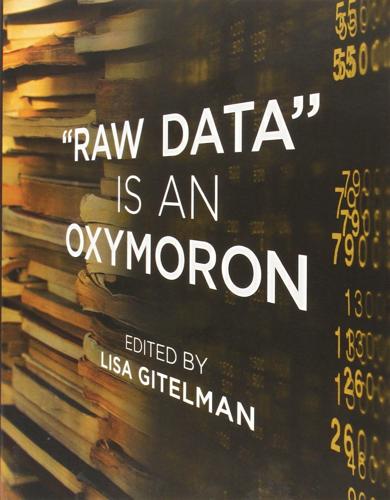
Raw Data Is an Oxymoron
by
Lisa Gitelman
Published 25 Jan 2013
To understand the mutual construction of data and the everyday work of scientists, as well as the orientation to producing comparable longitudinal data, we cover these difficulties in three sections: (1) the weekly rituals and routines used to generate measurements that make up the database; (2) the field sites and instrumentation that both threaten and comprise the very purpose of the longitudinal study; and (3) those practices that carry data from field sites to the databases themselves. We developed these insights through ethnographic field research and from the accounts of data collectors who themselves characterize their difficulties and the lived work of data collection. Routines and Ritual: “We Go Out on Wednesdays” For the last sixteen years, teams of three or four ecoscientists, technicians, and graduate students have set out in a van once per week (most often on a Wednesday) to visit sixteen field sites in Baltimore county.
…
As such, nothing can be reported at all in those fields of the database. However, the situation reversed radically in 2003 and 2004 due to reports of record moisture and renewed flow in Baltimore streams. The term for this reversal is a “climate pulse.” These “pulses” are precisely the kinds of changes our scientists hope to examine in a longitudinal study. A short-term study, months to years, could be ruined by the inability to collect samples, but in a long-term project such pulses became data in analysis that stretched across decades. Human Changes: A New Sewage System In 1999, the City of Baltimore Department of Public Works (DPW) entered into a consent decree with the Environmental Protection Agency (EPA) to address sanitary and combined sewer overflows across the entire city.
…
Many cities in America and around the world are going through a similar process. But, how are these new data to be reconciled as a single longitudinal arc? Scores of variables that were well understood are thrown into a complex flux—making environmental claims difficult for those scientists to assert. Instruments: Breakdown and Automation In a longitudinal study instruments come to be part of the field sites themselves. At each of the sixteen sites, meter sticks are strategically placed in the streams. These sticks are dug into the ground on metal poles or affixed to the walls of overpasses. These allow for quick and standardized gauges of the height of the water flow, on each occasion measured from the same location.
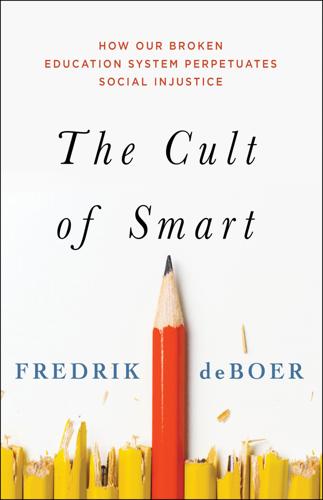
The Cult of Smart: How Our Broken Education System Perpetuates Social Injustice
by
Fredrik Deboer
Published 3 Aug 2020
But we do have a number of studies on the impact of test prep classes and tutoring when it comes to major college admissions tests like the SAT and the ACT. And the results are uniformly unimpressive, with typical improvements being in the low to mid–double digits on a 1,600-point scale. Test prep doesn’t work. We know that from data collected as part of the National Educational Longitudinal Study of 1988.3 We know it from College Board survey data from 1995.4 We know it from a study on MCAT test prep from 2010.5 We know it from admissions testing for medical school in Australia.6 And the modest gains that are seen from these classes and tutoring look even worse when you consider that test takers often receive a minor bump simply from taking the test again, likely due to their greater comfort and familiarity with the test.
…
Harvard students have remarkable post-collegiate outcomes, academically, professionally, and socially. But then, Harvard invests millions of dollars in carefully managing its incoming student bodies. The truth is most Harvard students are going to be fine wherever they go, and so our assumptions about the quality of Harvard’s education itself are called into question. A high-quality longitudinal study found that, in cohorts of college students from both the 1970s and the 1990s, the returns from attending an elite college were effectively nil, once you controlled for SAT scores.8 Once you compare like with like, and look at students of similar underlying ability, attending a prestigious school makes no difference.
…
See also communism; socialism mass consumption master’s degrees and master’s programs Math Myth, The (Hacker) McCarthyism means testing and jobs guarantee and student loan debt forgiveness and universal childcare and afterschool programs Medicare for All Menand, Louis mental health needs, schools for merit pay meritocracy and “blame teachers first” school of thought and college admissions scandal of 2019 and contemporary capitalism and criminal justice and education reform movement and elite high schools and equality of opportunity and health care inequality of and “just deserts” thinking and liberalism moral justification for and morality and progressivism rejection of and social hierarchy winners of Mill, John Stuart Millennials Minnesota Twin Registry Miranda, Lin-Manuel mobility “model minority” trope Molyneux, Stefan moral luck morality and chance Moskowitz, Eva NAEP math tests Nagel, Thomas National Assessment of Educational Progress National Educational Longitudinal Study National Health Service (UK) national standards. See also standardized curriculum; standardized testing NCLB. See No Child Left Behind Need of an Industrial Education in an Industrial Democracy, The (Dewey) negative liberty neoliberalism and charter schools and Democratic party and education profiteering industry and education reform and globalization on public schools and Rand Education response to Hurricane Katrina and student loan debt forgiveness valued intelligence under New Orleans charter schools 9/11 Nisbett, Richard E.
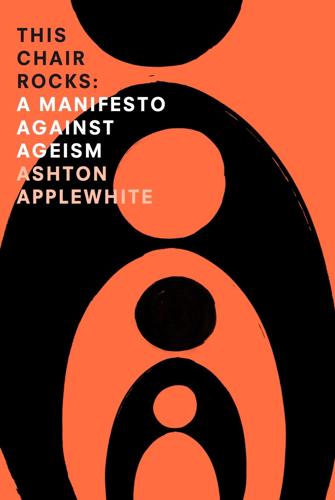
This Chair Rocks: A Manifiesto Against Ageism
by
Ashton Applewhite
Published 10 Feb 2016
If we find a cure for those, we’ll die from something else—but not of old age, because aging is not a disease. It was long equated with illness because studies were originally carried out in long-term care and nursing facilities, where bodies and brains were rarely stimulated and many subjects were indeed ill. As the century progressed, research from projects like the Baltimore Longitudinal Study of Aging, initiated in 1958, began to decouple the two. Scientists began identifying factors that contribute to healthier aging and developing interventions to delay or prevent problems once strictly attributed to aging, like exercises to improve balance and muscle function. Researchers now draw a clear distinction between “normal aging” and disease, which is largely determined by lifestyle.
…
Others assume that hearing loss is just a normal part of aging, so it can’t be harmful. They’re wrong about that. The ear plays a role in balance, and even mild hearing loss can triple the risk of falling. It’s linked to depression and also to dementia. According to research based on the Baltimore Longitudinal Study of Aging, the greater the hearing loss the steeper the rate of cognitive decline.29 I had my hearing tested after learning that, partly because I wanted to resolve an ongoing “You’re deaf”/“You need to speak louder” domestic dispute. (My partner has a beautiful low voice and speaks very softly.
…
Health and experience are far better indicators of workplace fitness than age, not least in physically demanding jobs like firefighting and airline piloting.3 are burned out: “Waiting for that gold watch” is as outdated a cliché as the wind-up artifact on which it’s based. The General Social Survey, a longitudinal study that has interviewed over 50,000 Americans since 1972, shows that people over sixty-five are happiest in their work. “A lot of people think of people working in their sixties and seventies as trapped in their jobs,” commented Tom W. Smith, director of the survey. “Most older workers work because they enjoy their jobs.”4 In other words, not one of the negative stereotypes that older workers confront holds up under scrutiny.
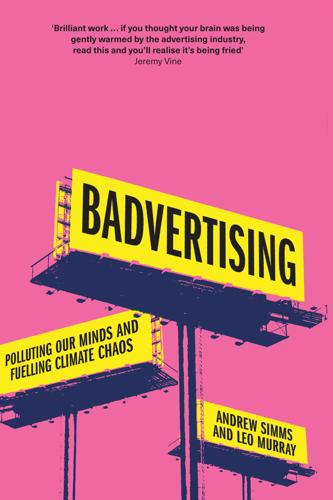
Badvertising
by
Andrew Simms
Societal level living standards during childhood predicted materialism 10 years later. When materialistic values increased, work centrality steadily declined, suggesting a growing discrepancy between the desire for material rewards and the willingness to do the work usually required to earn them.4 Then there were the Dutch children who took part in a longitudinal study (i.e., research that follows its subjects over a long time) in 2014. At first contact, they reported their exposure to advertisements, and then – one year later – they reported their desire for advertised products and the relative strength of their materialistic values. Their exposure to advertisements had a significant correlation with greater materialism a year later.
…
They were also asked about their exposure to various types of tobacco advertisements – and related questions about things like whether their parents, friends or siblings smoked. Students who reported exposure to tobacco advertising were around six times more likely to report tobacco use in the previous 30 days than were students who reported no exposure to tobacco advertising.25 In 2019 a detailed longitudinal study of 11th and 12th grade school students (16–18-year-olds) in the US was published.26 At first contact, subjects self-reported their tobacco use and the frequency with which they saw advertisements for tobacco products. Two years later, they again reported their tobacco use. Compared to adolescents who continued to avoid using tobacco products, those who began using them in young adulthood were significantly more likely to have reported frequent exposure to tobacco advertising two years earlier.
…
See also: www.who.int/tobacco/control/measures_art_13/en/ and www.who.int/tobacco/mpower/en/ 4. Twenge and Kasser, Generational changes in materialism and work centrality. 5. Opree, S.J., M. Buijzen, E.A. van Reijmersdal and P.M. Valkenburg (2014) Children’s advertising exposure, advertised product desire, and materialism: a longitudinal study. Communications Research, 41, 717–35. 6. Benmoyal-Bouzaglo, S. and G.P. Moschis (2010) Effects of family structure and socialization on materialism: a life course study in France. Journal of Marketing Theory & Practice, 18(1), 53–70. 7. Brand, J.E. and B.S. Greenberg (1994) Commercials in the classroom: the impact of Channel One advertising.
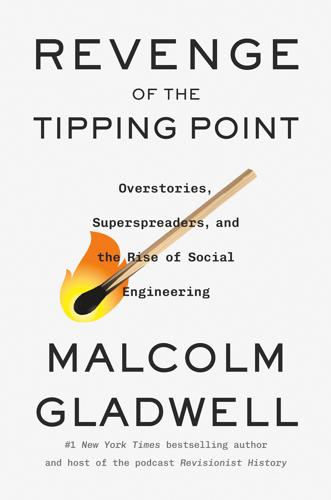
Revenge of the Tipping Point: Overstories, Superspreaders, and the Rise of Social Engineering
by
Malcolm Gladwell
Published 1 Oct 2024
Yet the idea that there is a magic moment somewhere between a quarter and a third is different. It practically begs us to intervene. Let me give you an example. For years, there has been a significant gap between the test scores of white and African American students. Here’s what it looks like. This data comes from the Early Childhood Longitudinal Study (ECLS).3 The numbers show the difference between black and white scores on a 96-point math test. The data can be sliced up in a number of different ways. But these are the results for schools where black students make up less than 5 percent of the student population. Kindergarten (fall): –4.718 Kindergarten (spring): –6.105 1st grade (fall): –7.493 1st grade (spring): –8.880 3rd grade (spring): –14.442 5th grade (spring): –20.004 By the end of kindergarten, the black kids in this group were six points behind—a small but not trivial number.
…
It’s brilliant. 3 The ECLS was a landmark study started in the late 1990s that followed a national sample of children from kindergarten through the fifth grade, making note of their family background, test scores, schools, and anything else that would be useful in understanding their intellectual and psychological development. 4 Yosso’s group used data from the Early Childhood Longitudinal Study (ECLS). 5 “A lot of the residents describe it as a place of safety, because school was definitely not a friendly place for any black folks, any Asian people during that time,” Lucas said. “So in that lane, that’s where people grew to understand one another.” He went on: “The interesting thing about the parents is that they, you know, really seemed to try to create a post-racial society, where their children would grow up, not being so highly conscious of it.
…
DuBois’ hypothesis: Do Black students need separate schools?” by Tara J. Yosso, William A. Smith, Daniel G. Solórzano, and Man Hung, in Race Ethnicity and Education 25, no. 4 (October 2012): 1–19. https://www.tandfonline.com/doi/full/10.1080/13613324.2021.1984099 Their study drew on the Early Childhood Longitudinal Study data for the kindergarten class of 1998–99 (ECLS-K), which can be viewed here: https://nces.ed.gov/ecls/Kindergarten.asp There’s also a handy summary of it all in Penn Today: https://penntoday.upenn.edu/news/damon-centola-tipping-point-large-scale-social-change You can read about the black neighborhood of Ramona Street (as well as housing segregation in Palo Alto) at PaloAltoHistory.org: https://www.paloaltohistory.org/discrimination-in-palo-alto.php Many details about the Lawrence Tract’s development is from an oral history done with Gerda Isenberg, one of the founders of the Palo Alto Fair Play Committee (sometimes referred to as the Fair Play Council), especially pages 66–71.
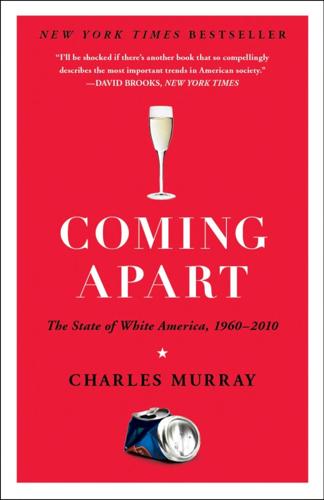
Coming Apart: The State of White America, 1960-2010
by
Charles Murray
Published 1 Jan 2012
“Unless one believes that only rich people can be smart,” he writes, “we have a staggering distance to travel to achieve a fair opportunity for all to reach every level of our educational system.”17 The bias that Soares set out to investigate could occur in two ways. The first is that the pool of applicants is biased. The second is that the admissions process continues to give preferential treatment to the children of the affluent. Soares presents compelling evidence that the applicant pool is biased. Using the National Educational Longitudinal Study (NELS), Soares demonstrates that the applicant pool is heavily loaded toward youths who come from the high-income professional class, especially those who come from the Northeast United States. In a logistic regression analysis of the NELS data that controls for other influences on the decision to apply, Soares finds that students with the same gender, race, and SAT scores are more than three times as likely to apply to a selective school if they come from one of those professional high-income families in the Northeast, and twice as likely if they come from a professional high-income family outside the Northeast.18 Other things being equal, Asians were almost twice as likely to apply as non-Asians, and students from private schools were four times more likely to apply than students at public schools.19 So the applicant pool is skewed.
…
Now let’s turn to the other side of the ledger, and the opposite hypothesis: The estimated percentage of white criminal activity coming out of Fishtown is underestimated, perhaps grossly underestimated, because I am counting prisoners instead of crimes. Ever since criminologist Marvin Wolfgang’s pioneering longitudinal study of all of the males born in Philadelphia in 1945, scholars have found that a small proportion of those who are ever arrested account for about half of all offenses.1 The exact size of that proportion has varied by study, but it has usually been in the neighborhood of 7 percent, leading to a term of art in the criminological literature, “the dirty seven percent.”
…
From 1981 to 1990, three separate analyses of all the prior studies were published in peer-reviewed journals. They found a coaching effect of 9 to 25 points on the SAT verbal and of 15 to 25 points on the SAT math. See Herrnstein and Murray, 1994, 400–402. Derek Briggs, using the National Education Longitudinal Study of 1988, found effects of 3 to 20 points for the SAT verbal and 10 to 28 points for the SAT math (Briggs, 2004). Donald Powers and Donald Rock, using a nationally representative sample of students who took the SAT after its revisions in the mid-1990s, found an average coaching effect of 6 to 12 points on the SAT verbal and 13 to 18 points on the SAT math (Powers and Rock, 1999).

The Hype Machine: How Social Media Disrupts Our Elections, Our Economy, and Our Health--And How We Must Adapt
by
Sinan Aral
Published 14 Sep 2020
In 2016, two years after the annexation of Crimea, I was in my lab at MIT, in Cambridge, Massachusetts, hard at work on an important research project with my colleagues Soroush Vosoughi and Deb Roy. We had been working for some time, in direct collaboration with Twitter, on what was then the largest-ever longitudinal study of the spread of fake news online. It analyzed the diffusion of all the fact-checked true and false rumors that had ever spread on Twitter, in the ten years from its inception in 2006 to 2017. This study, which was published on the cover of Science in March 2018, revealed some of the first large-scale evidence on how fake news spreads online.
…
But if consumers were unmoved by their friends’ influence and users’ preferences correlated with their friends’ preferences due to homophily, then a network targeting strategy would perform better than a viral marketing strategy. So some rigorous data science could help Yahoo! decide how to market the product most effectively. During our longitudinal study of Go’s adoption, we collected data on 27 million users connected in Yahoo!’s global instant messaging network called Yahoo! Messenger. (It was just like AOL’s AIM or MSN Messenger.) We also collected detailed demographic and geographic data on these same users, and comprehensive, detailed data on their online behaviors and activities—about 90 billion pageviews in all.
…
stringent privacy regulations: Thomas Seal and Stephanie Bodoni, “How Europe Is Bumping Against Privacy Laws in Coronavirus Battle,” Bloomberg, April 4, 2020. Chapter 1: The New Social Age “marked the first time”: Madeleine Albright, former U.S. Secretary of State, testimony at hearing before the U.S. Senate Armed Services Committee, January 29, 2015, https://www.armed-services.senate.gov/imo/media/doc/Albright_01-29-15.pdf. longitudinal study of the spread of fake news: Soroush Vosoughi, Deb Roy, and Sinan Aral, “The Spread of True and False News Online,” Science 359, no. 6380 (2018): 1146–51. the Q&A took place in a moderately sized room: You can watch the Town Hall here: https://www.facebook.com/qawithmark/videos/929895810401528/.
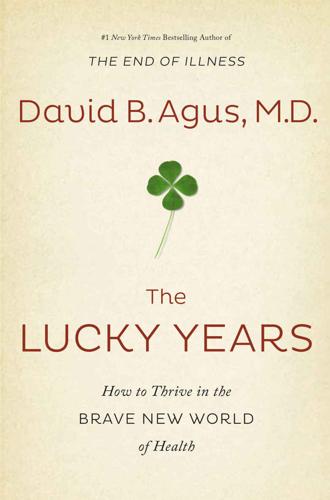
The Lucky Years: How to Thrive in the Brave New World of Health
by
David B. Agus
Published 29 Dec 2015
What exercise was doing, essentially, was changing the body’s context—changing the environment in a way that made it less hospitable for the tumor to grow. Earlier studies have confirmed that people who are fitter during their thirties through their fifties have less chronic illness in later years. One of these studies in particular, published in the Archives of Internal Medicine in 2012, looked at 18,670 participants in the Cooper Center Longitudinal Study, which contained records of more than 250,000 patients over forty years.8 They compared the data with the participants’ Medicare claims during the ages of seventy to eighty-five. The results were similar in both men and women: People who increased their fitness levels by 20 percent in their midlife years decreased their chances of developing chronic illness by 20 percent in old age.
…
Moore et al., “Leisure Time Physical Activity of Moderate to Vigorous Intensity and Mortality: A Large Pooled Cohort Analysis,” PLOS Medicine 9, no. 11 (2012): E1001335, doi:10.1371/journal.pmed.1001335, Epub November 6, 2012. 6. S. G. Lakoski, “Midlife Cardiorespiratory Fitness, Incident Cancer, and Survival After Cancer in Men: The Cooper Center Longitudinal Study,” JAMA Oncology 1, no. 2 (May 1, 2015): 231–37, doi:10.1001/jamaoncol.2015.0226. 7. A. S. Betof et al., “Modulation of Murine Breast Tumor Vascularity, Hypoxia and Chemotherapeutic Response by Exercise,” Journal of the National Cancer Institute 107, no. 5 (2015): djv040, doi:10.1093/jnci/djv040.
…
“nonself” in, 34 body mass index (BMI), 22, 134, 141 Boston, Mass., 84 Boston Cooking-School Cook Book, The, 178 Boston University, 47 Bowerman, Bill, 199 brain: decision making in, 227 sleep’s importance to, 208–10 brain cancer, 30 Brave New World (Huxley), viii, 159, 238 Brazil, 199 BRCA genes, 8, 21, 118 breast cancer, 8, 53, 55, 60, 61, 118, 171, 190, 211 genetic mutation and, 21–22 mastectomies and, 21–22 obesity and, 133 statin use and, 220 Breast Cancer Prevention Trial, 53 Brigham and Women’s Hospital, 84 Broad Institute of MIT and Harvard, 23, 24 Broedel, Max, 73 Brown University, 58 Brunet, Anne, 63 bubonic plague, 95–101 Bulletin of the New York Academy of Medicine, 2 butterfly effect, 236–37 California, 5, 12, 47, 103 tobacco control program in, 237 California, University of: at Berkeley, 25 at Irvine, 3 at San Francisco, 3 Caltech, 102 Cambridge, University of, 125, 134 Cameron, David, 67 Canada, 4, 11 cancer, 41, 108, 128, 175, 215, 237 aggressiveness of, 53–54 alternative treatments for, 18 aspirin and, 216–17 chemotherapy for, 29 childhood, 6, 49, 170–71 context and, 13–14 diet and, 163 early detection and treatment of, 172 fitness and, 190–94 genetic mutations and, 14, 21–22, 50 genotyping of, 117–18 immunotherapy for, 28–33 inflammation in, 175–77 lifestyle and, 153, 168–69 measurement of success in treating of, 32–33 metastasis in, 60–62 molecular therapies for, 23–24, 49–50, 54–55 muscle mass and, 195 p53 gene and, 57–58 Peto’s paradox and, 57 plasma transfusions and, 5 precision medicine and, 115 radiation therapy for, 29 random mutations in, 169–74, 176 as runaway cell copying, 59 self-seeding in, 61 statins and, 218–20 treatment resistance in, 190–91 Watson supercomputer and treatment of, 88–89 see also specific types of cancer cardiovascular disease, 86, 121, 128, 147, 216 airport noise and, 92 risk factors for, 47 Carlson, Mary, 212, 213 Carnegie Mellon University, 214 CAR T cells, 29–30 CBS This Morning, 67 CCR5 gene, 24, 25 Ceauşescu, Nicolae, 212–13 Celebrex (celecoxib), 62 celiac disease, 113, 164 cell division, 5 cells: death of (apoptosis), 59 endoplasmic reticulum in, 40 oxidative damage to, 40 receptors on, 59 Center for the Study of Aging and Human Development (Duke University), 45 Center for Translational Neuromedicine (University of Rochester), 208 Center for Translational Research in Aging and Longevity (University of Arkansas for Medical Sciences), 194 Centers for Disease Control and Prevention (CDC), 47, 103, 133, 205 ceritinib (Zykadia), 53 change, self-assessment of, past vs. future in, 38–40, 39 chaos theory, 236–37 Charaka, 113 Charlottesville Neurology and Sleep Medicine, 204 checkpoint blockage therapy, 29–30 chemotherapy, 29, 60, 190–91 exercise and, 191, 192 Chicago, University of, 17 children, obesity and overweight in, 133 Chittagong University, 232 cholera, 234 cholesterol, 150, 195, 217, 219 dietary vs. blood, 162 online calculator for, 218 chronic disease, 128–29 age-related, 128, 136 diet and, 141–44 management of, 144–46 overweight and, 141 sleep habits and, 147 chronological age, 45, 46, 46, 47, 135–36, 232 circadian rhythm, 123, 138, 139–40, 148, 205 Circulation, 86 climate change, 159 Clinical Practice Research Datalink, 219 clinical trials, 52 double-blind, 53, 155 IRBs and, 52 randomized, 52–53 ClinVar, 9 coarse graining, 229–32, 230 cognitive abilities, 45, 46 cognitive dissonance, 159 Cohen, Jacques, 111–12 colds, 205, 214 Cold War, 94 Coley, William B., 27–29, 28, 33, 48 colitis, 121–22 Collins, Francis, 114, 118 colonoscopies, 93 Colorado, 47 colorectal cancer, 55, 123–24, 190, 217 statin use and, 220 Columbia University, 138 complex carbohydrates, 162 comprehensive metabolic panel (CMP), 151 Congress, US, 114, 237 context: adapting to new data in, 159 aging and, 45 baselines for, 150 changes in, 22 databases as, 83, 91–94 data mining and, 101 diet and, 163, 165 disease and, 13–14, 20 genes and, 14, 20–21, 118 health and, 48, 76–78, 84, 89–90, 91–94, 101, 113, 114–15, 117, 124–25 heart disease and, 22 identifying and optimizing, 135–52 lab tests in, 150–52 medical data and, 78–82 medical education and, 75 Cooper Center Longitudinal Study, 192 coordination, 45 Cornell University, 2 coronary artery disease, 151 cortisol, 123 counterfeit drugs, 10–11 C-reactive protein, 175 CRISPR (Clustered Regularly Interspaced Short Palindromic Repeats), 24–25, 26, 45 Critical Care, 222 Crohn’s disease, 25, 121 CTLA-4, 29–30 cystic fibrosis, 115–16 Cystic Fibrosis Foundation Vertex, 115–16 cytokines, 123 cytoplasm, 111 cytosol, 40 Dana-Farber Cancer Institute, Profile program of, 118 Dannon, 235 Dartmouth College, 157 Darwin, Charles, 112 data, medical: context and, 78–82 individual’s role in collection of, 81 databases, medical, 82–83, 95 as context, 83, 91–94 security of, 88–89 data mining, 84–89, 92 context and, 101 infectious diseases and, 100–101 Davos, Switzerland, 161 Dawkins, Richard, 17 death, leading causes of, 129 death certificates, 96 decision-making, 225, 227–28 dehydration, 234 dementia, 5, 41, 90, 91, 151, 204, 210, 215, 221 see also Alzheimer’s disease depression, 122, 211, 215 exercise and, 186 Dhaka, 232 diabetes, 22, 24, 25, 47, 59, 108, 114, 123, 128, 147, 151, 166, 175, 186, 187, 188, 215, 221, 237 gut bacteria and, 120–21 incidence of, 120–21 diet, 22, 114 chronic disease and, 141–44 as contextual, 163 honesty about, 133–34 low-cholesterol, 162 low-fat, 162 moderation in, 144 research on, see nutritional studies weight and, 141 diphtheria, 161 disease: autoimmune, 85, 125, 175 context and, 13–14, 20 genetic markers for, 22, 113–14, 127 surrogate markers for, 127–28 see also chronic disease; infectious diseases; noncommunicable diseases disorders, inherited, newborn screening and, 12 DNA, see genes, genome DNA mismatch repair, 32, 57 docosahexaenoic acid (DHA), 182 dopamine, 211 Doudna, Jennifer A., 25 dreaming, 203 drug abuse, 22 drugs, see medications Duke Cancer Institute (DCI), 191 Duke University, 30 Center for the Study of Aging and Human Development at, 45 Dulken, Ben, 63 Dunedin Study, 45–47, 46 Dyerberg, Jorn, 182–83 Dyson, Esther, 173 Earls, Felton, 213 East Africa, 44, 107 Eat, Sleep, Poop (Cohen), 137 eating patterns, heart disease and, 138–40 Ebola, 18, 221–22 E. coli, 123 eicosapentaenoic acid (EPA), 182 Einstein, Albert, 2, 223 Elder, William, Jr., 115–16 electrodermal response, 230–31 Elledge, Stephen J., 84 emotions, touch and, 214 emulsifiers, microbiome and, 121–22 “end of history illusion,” 38–40, 39 End of Illness, The (Agus), 18 endoplasmic reticulum, 40 endorphins, 211 energy levels, 149 England, see Great Britain environment, see context epidemics: global spread of, 103 prediction of, 103–4 epigenetics, 20–21 esomeprazole (Nexium), 86 esophageal cancer, 217 estrogen, 64 ethics: genome editing and, 24–25 medical advances and, 10, 24 technology and, 25–26 Europe, 77 European Journal of Immunology, 34 exercise, 21, 114, 140, 185–201 chemotherapy and, 191, 192 honesty about, 133–34 ideal amount of, 196–200 intensity of, 197–98 life expectancy and, 189–90 mortality rates and, 148 Exeter, University of, 157 “Experimental Prolongation of the Life Span” (McCay, Lunsford, and Pope), 2 experimental treatments, quicker access to, 56 Facebook, 27 fasting lipid profile, 150 feebleness, aging and, 43 fertility, aging and, 43 Field, Tiffany, 214 financial industry, information technology and, 89 Finland, 220 fish oil, 182–83 Florida, 103 flu vaccine: misinformation about, 157–58 public distrust of, 160 FODMAPs (fermentable oligo-di-monosaccharides and polyols), 164 Fodor, George, 183 food, safety of, 11 Food and Drug Administration, US (FDA), 2, 18, 51, 55, 56, 86, 111, 112, 127–28, 146, 182, 201 Accelerated Approval provisions of, 128 Foundation Medicine, 50 Framingham Heart Study, 47, 118 Fred Hutchinson Cancer Research Center, 169 free radicals, 208 fruit flies, eating pattern studies with, 138–40 fungi, 119 gait, 45 galvanic skin response (GSR), 230–31 gastroesophageal reflux disease (GERD), 86 Gates, Bill, 2 Genentech, 56 genes, genome, 45, 83–84 aging and, 20, 41 bacterial, 107, 119 context and, 14, 20–21, 118 DNA mismatch repair and, 32 expression of, 20–21, 125, 139 mitochondrial, see mitochondrial DNA sequencing of, 20, 23, 49–52, 112 SNPs in, 113–14 as switches, 41 viruses and, 119–20 genes, genome, editing of, 24–25, 45 ethics of, 102–5 genetically modified foods (GMOs), 18 genetic markers, 22, 113–14, 127 genetic mutations: aging and, 41 cancer and, 14, 21–22, 50 disease risk and, 9, 12 genetic screening, 103, 117, 137 flawed results in, 8–10 of newborns, 11–12 Georgia State University, 121 Gewirtz, Andrew, 121 Gibson, Peter, 164 Gilbert, Daniel, 38, 39, 40 Gillray, James, 161 Gladwell, Malcolm, 225, 227, 228 Gleevec (imatinib), 55 glial cells, 209 glioblastoma, 30 “Global Recommendations on Physical Activity for Health” (WHO), 187 gluten, debate over, 163–65 Goldstein, Irwin, 211 Google, 87, 88, 101 Google Flu Trends, 101 Grameen Bank, 232, 233–34, 235 Grameen Danone, 235 Graunt, John, 100 Great Britain, 96, 97, 100, 110, 155 Black Death in, 95–101, 98, 99, 100 Greatist.com, 200 Greenland, 182 Grove, Andy, 7, 7 growth factors, 59 gun violence, 91 gut: inflammation of, 120, 122 microbiome of, see microbiome H2 blockers, 86 habits and routines, 136, 137–41, 228, 237–38 see also diet; lifestyle choices Harlow, Harry, 213 Harvard Medical School, 84 Harvard School of Public Health, 142–43 Harvard University, 3, 23, 24, 37, 178, 186, 196, 212, 213, 216 hash tables, health care and, 87–88 Hawaii, 47 HDL cholesterol, 150 health: biological age and, 47 context and, 48, 76–78, 84, 89–90, 91–94, 101, 113, 114–15, 117, 124–25 family history of, 136–37 honesty about, 131–34 inflection point in, 8 lifestyle and, see lifestyle choices optimism and, 65–69 personal baselines for, 150 retirement and, 91–92 technology and, 37–70 health and fitness apps, 200 Health and Human Services Department, US, 103 health care: Affordable Care Act and, 69–70 hash tables and, 87–88 individual’s responsibility in, 12–13, 26, 70, 75, 78, 131–32 misinformation about, 14–15, 18, 19, 154, 157–58 politics and, 11–12 portable electronic devices and, 79, 90–91 Health Professionals Follow-up Study, 142–43, 217 health threats, prediction of, 103–4 heart: biological age of, 47–48 health of, 48 heart attacks, 76, 86, 182, 217, 218 heart disease, 59, 128, 150, 166, 175, 183, 186, 187, 215, 217, 221 context and, 22 diet and, 163 eating patterns and, 138–40 lifestyle choices and, 22 muscle mass and, 195 heart rates, 231 heart rate variability (HRV), 230 Heathrow Airport, 92 “hedonic reactions,” 38–40 heel sticks, 11–12 hemoglobin A1C test, 151 hepatitis B, 175 hepatitis C, 175 Herceptin (trastuzumab), 55 high blood pressure, 22, 188, 195 high-sensitivity C-reactive protein (CRP) test, 151 hippocampus, 214 Hippocrates, 71, 113, 122, 216 HIV/AIDS, 18, 24, 25, 59, 84, 127–28, 131, 159 Hoffmann, Felix, 215, 216 Holland, 41 Homeland Security Department, US, 103 homeostasis, 137–38, 140 Homo sapiens, evolution of, 107 honesty: about health, 131–34 nutritional studies and, 162 hormones, 219 hormone therapy, 201 Horton, Richard, 178 Hospital for the Ruptured and Crippled (Hospital for Special Surgery), 28 house calls, 80 Houston Methodist, 86 “how do you feel” question, 231 hugs, 214 Human Genome Project, 113, 120 human growth hormone, 200 Human Molecular Genetics, 65 human papilloma virus (HPV), 161, 175 Hurricane Sandy, 84 Huxley, Aldous, viii, 6, 159, 238 Hydra magnipapillata, 42, 42 hyperglycemia, 122 hypertension, 125, 195, 203 IBM, 88–89 imatinib (Gleevec), 55 immune reactions, 5 immune system, 175, 190, 209, 211 aging and, 44 impact of hugs on, 214 immunotherapy, 28–33 polio virus and, 30, 31 incentives, 235–36 Indiana University Bloomington School of Informatics and Computing’s Center for Complex Networks and Systems Research, 94–95 infant mortality, 87, 97 infants: genetic screening of, 11–12 premature, 87 infections, 175–76 infectious diseases, 129 antibiotic-resistant, 67–69, 68 data mining and, 100–101 inflammation, 34, 151, 174–77, 181, 187, 190, 195, 215–22 inflammatory bowel disease, 121 inflection points, 7–8, 7 influenza, 161 risks from, 157 vaccine for, see flu vaccine information, sorting good from bad, 19–20 information technology, financial industry and, 89 inherited disorders, newborn genetic screening and, 12 insomnia, 122 Institute for Sexual Medicine, 211 insulin, 56, 190 insulin sensitivity, 5, 87, 120, 122, 151, 195 insurance companies, off-label drugs and, 55 Intel, 7 International Agency for Research on Cancer, 170 International Prevention Research Institute, 180 intuition, 224–29 Inuits, 182–83 in vitro fertilization (IVF), three-person, 109–12, 110 Ioannidis, John, 178 IRBs (institutional review boards), 52 iron deficiency, 231 irritable bowel syndrome (IBS), 164 Islam, 234 Italy, 183 ivacaftor (Kalydeco), 115–16 JAMA Internal Medicine, 142, 143, 192, 196 Jenner, Edward, 160, 161 Jobs, Steve, 2, 23–24, 26, 49 Johns Hopkins Hospital, 71, 72, 128 Hurd Hall at, 74 Osler Medical Housestaff Training Program at, 73–75, 74 Johns Hopkins Sidney Kimmel Comprehensive Cancer Center, 32 Johns Hopkins University, 23, 169, 170, 171, 173, 174, 175, 176, 215 Jolie, Angelina, 21 Jones, Owen, 43 Journal of Sexual Medicine, 211 Journal of the American Medical Association (JAMA), 72, 114–15, 173, 201, 220, 221 Journal of the American Osteopathic Association, 154 Journal of the National Cancer Institute, 169 Journal of Urology, 168 journals, medical, misinformation in, 154, 179 J.
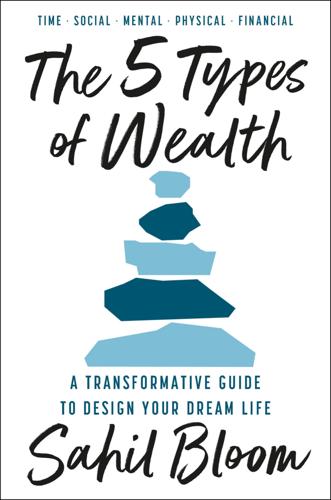
The 5 Types of Wealth: A Transformative Guide to Design Your Dream Life
by
Sahil Bloom
Published 4 Feb 2025
For over thirty years, the two longitudinal studies ran in parallel but as something of a mirror image, one studying the lives of society’s most privileged and the other studying the lives of some of its least privileged. In 1972, George Vaillant, a Harvard psychiatrist and researcher, took over as director of the Grant Study and made the historically important contribution of integrating the Gluecks’ study into the research. The integration dramatically increased the breadth of the socioeconomic profile of the participant base and unlocked a range of potential study insights. Longitudinal studies typically experience funding challenges when interest wanes or original benefactors move on (or die!)
…
Researchers gather data from the participants every two years via a survey consisting of thousands of questions on life satisfaction, health, mood, and more; they also conduct a comprehensive set of physiological tests every five years. The study has tracked and measured the lives of a combined 724 original male participants and more than 1,300 of their male and female descendants. It is widely considered to be the longest longitudinal study on the health and happiness of individuals. While the study’s findings are broad and far-reaching, its most important takeaway is simple: Relationships are, quite literally, everything. Dr. Vaillant put it bluntly. “The key to healthy aging is relationships, relationships, relationships.”[2] The study has found that strong, healthy relationships are the best predictor of life satisfaction, far outpacing other hypothesized predictors, such as social class, wealth, fame, IQ, and genetics.
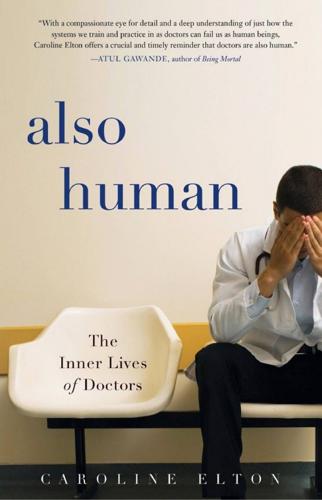
Also Human: The Inner Lives of Doctors
by
Caroline Elton
Published 1 Mar 2018
In 1983 two junior doctors asked psychologist Jenny Firth-Cozens if something could be done about the stress and depression that they saw all around them. Two first-year doctors in one hospital had killed themselves in the previous month, yet no senior clinicians discussed this within their teams. It was unmentionable. This prompted Firth-Cozens to undertake a series of longitudinal studies of medical students and junior doctors. Four years later, in 1987, Firth-Cozens reported the results of a longitudinal study of 170 first-year junior doctors in the British Medical Journal (BMJ): 28 percent of the sample had scores on standardized questionnaires that indicated the presence of a depressive illness, and ten individuals reported thoughts of suicide.
…
at the height of the junior doctors’ strike: Clarke, R., “Suicides Among Junior Doctors in the NHS,” BMJ 357 (2017), 10.1136/bmj.j2527. psychologist Jenny Firth-Cozens: Firth, J., “Levels and Source of Stress in Medical Students,” Br Med J (Clin Res Ed) 292 (1986), pp. 1177–1180. in 1987 Firth-Cozens reported the results of a longitudinal study of 170 first-year junior doctors: Firth-Cozens, J., “Emotional Distress in Junior House Officers,” Br Med J (Clin Res Ed) 295 (1987), pp. 533–536. Twenty years after starting the first research project: Firth-Cozens, J., “Doctors, Their Wellbeing, and Their Stress,” BMJ 326:670 (2003), pp. 670–671.

The Knowledge Machine: How Irrationality Created Modern Science
by
Michael Strevens
Published 12 Oct 2020
In 1981, they began to track, in particular, a finch that was larger and had a different song than any known variety. Thirty-one years later, having followed that finch’s offspring bird by bird for six generations, they had enough data to conclude that they had observed the origin and establishment of a new species. A longitudinal study in economics or medicine can likewise involve decades of data collection: the Dunedin Multidisciplinary Health and Development Study has been monitoring a thousand New Zealanders since the early 1970s and will continue into the 2020s. Figure 1.6. The Galápagos island of Daphne Major is neither large nor hospitable.
…
By the time the Dunedin study in New Zealand concludes, plenty more will have been learned about human health from other sources. The project labors, then, in the shadow of the possibility that information about some previously unknown crucial variable is being inadvertently neglected or that some variable thought to be crucial is unimportant—as was the case in the first longitudinal study ever conducted, Lewis Terman’s decades-long “Genetic Studies of Genius,” which assumed a tight correlation between IQ and genius that decades later turned out not to exist. And the Grants’ meticulous finch counting might not have uncovered any particularly interesting patterns of population change, let alone the appearance of a new species; their hard labor and privation would in that case have been for the sake of nothing much at all.
…
W., 136, 138, 243 Leonardo da Vinci, 242 Lesbos, 125 L’Hôpital, Marquis de, 140 Libbrecht, Ken, 171–72 liberal arts, 274 liberal democracy, iron rule vs., 268 liberalism, 252 lieutenants of the Scientific Revolution, 192–94 life, history of, 175 light in Cartesian physics, 133 and Eddington’s expedition to test Einstein’s gravitation theory, 42–50, 43, 44, 68–73, 155–61 and ether, 143 Galileo and, 290 Michelson–Morley experiment, 112–14 speed of, 72, 112–14 superposition and, 144 wave/particle duality, 144, 150 Lindberg, David, 117 Lloyd, Seth, 37 Loew ben Bezalel, Judah, 285–86 logic as insufficient grounds for falsification, 281 and theory, 18–19 Logic of Scientific Discovery, The (Popper), 13–14 longitudinal studies, 35–36 LRF (hormone), 99, 304n Luther, Martin, 242, 245 Macleay, William Sharp, 214–18 macrocosm, consonance with microcosm, 210, 236 Mantell, Gideon, 175, 176 maps, 54–55 Marsh, O. C., 225 Martianus Capella, 274 Mathematical Principles of Natural Philosophy (Newton), See Principia mathematics and beauty, 227–35 and essence of science, 5 and fractals, 210 and Kelvin’s estimate of earth’s age, 77 and objectivity, 168 and physics, 194 quantum mechanics and, 147, 150 D’Arcy Thompson and, 221, 223–25 matter Aristotelian concept of, 123 in Cartesian physics, 130–35 Cartesian understanding of, 132, 270–71 and changes of state in time, 148 solid/fluid duality, 142–44 and strangeness, 229–30 and superposition, 147, 149 wave/particle duality, 144–45 McCann, S.

Chicken: The Dangerous Transformation of America's Favorite Food
by
Steve Striffler
Published 24 Jul 2007
There is a rich literature on poultry growers. Steve Bjerklie has a helpful statement of the issues involved in “Dark Passages,” Meat and Poul- Notes to Pages – 180 try, parts and (Aug./Oct. ). For an interesting longitudinal study, see William D. Heffernan and David H. Lind, “Changing Structure in the Broiler Industry: The Third Phase of a Thirty-Year Longitudinal Study (Unpublished report available from the authors at the Department of Rural Sociology, University of Missouri, Columbia, ). Stull and Broadway, in their Slaughterhouse Blues, provide an excellent case study for a poultry region in Kentucky. .
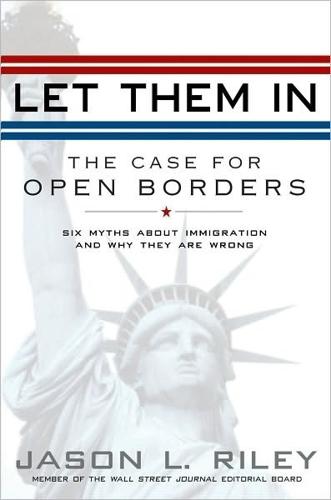
Let Them In: The Case for Open Borders
by
Jason L. Riley
Published 14 May 2008
That’s why it’s important to remember, when considering “averages,” that Latino migration is ongoing. The public is fed a lot of snapshot data on English-language skills and high school dropout rates, but they are of little use in measuring assimilation. What we really want to know is how immigrants are faring over time, and only longitudinal studies can provide that information. As Michael Barone writes in The New Americans, “The statistics showing that the average Latino has only slightly improved mastery of English, education levels, and incomes are actually evidence of substantial gains.” How so? Because “overall statistics that average in huge numbers of new arrivals mask the progress that pre-existing immigrants have made.”
…
He explains: “Now that the longer-settled immigrants are beginning to outweigh the newcomers in number, the force of upward mobility is no longer being offset by the relatively high poverty of newcomers, and the total poverty rate of the foreign-born has turned around.” Myers is hardly the only social scientist to notice Latino upward mobility, and California isn’t the only place it’s happening. In a definitive longitudinal study in the 1990s, sociologists Alejandro Portes and Ruben Rumbaut found substantial second-generation progress among Latinos in Miami and Fort Lauderdale as well. Nationwide cross-generational studies show the same results. In 2006, economist James Smith of the RAND Corporation found that successive generations of Latinos have experienced significant improvements in wages relative both to their fathers and grandfathers and to the native whites with whom they compete for jobs.

Behave: The Biology of Humans at Our Best and Worst
by
Robert M. Sapolsky
Published 1 May 2017
Shakoor et al., “A Prospective Longitudinal Study of Children’s Theory of Mind and Adolescent Involvement in Bullying,” J Child Psych and Psychiatry 53 (2012): 254. 43. J. D. Unenever, “Bullies, Aggressive Victims, and Victims: Are They Distinct Groups?” Aggressive Behav 31 (2005): 153; D. P. Farrington and M. M. Tofi, “Bullying as a Predictor of Offending, Violence and Later Life Outcomes,” Criminal Behaviour and Mental Health 21 (2011): 90; M. Tofi et al., “The Predictive Efficiency of School Bullying Versus Later Offending: A Systematic/Meta-analytic Review of Longitudinal Studies,” Criminal Behaviour and Mental Health 21 (2011): 80; T.
…
Toth et al., “Post-weaning Social Isolation Induces Abnormal Forms of Aggression in Conjunction with Increased Glucocorticoid and Autonomic Stress Responses,” Horm Behav 60 (2011): 28. 33. S. Lupien et al., “Effects of Stress Throughout the Lifespan on the Brain, Behaviour and Cognition,” Nat Rev Nsci 10 (2009): 434; V. Carrion et al., “Stress Predicts Brain Changes in Children: A Pilot Longitudinal Study on Youth Stress, Posttraumatic Stress Disorder, and the Hippocampus,” Pediatrics 119 (2007): 509; F. L. Woon and D. W. Hedges, “Hippocampal and Amygdala Volumes in Children and Adults with Childhood Maltreatment–Related Posttraumatic Stress Disorder: A Meta-analysis,” Hippocampus 18 (2008): 729. 34.
…
Sharkey et al., “The Effect of Local Violence on Children’s Attention and Impulse Control,” Am J Public Health 102 (2012): 2287; J. B. Bingenheimer et al., “Firearm Violence Exposure and Serious Violent Behavior,” Sci 308 (2005): 1323. Footnote: I. Shaley et al., “Exposure to Violence During Childhood Is Associated with Telomere Erosion from 5 to 10 Years of Age: A Longitudinal Study,” Mol Psychiatry 18 (2013): 576. 41. For a particularly good review, see L. Huesmann and L. Taylor, “The Role of Media Violence in Violent Behavior,” Ann Rev of Public Health 27 (2006): 393. See also J. D. Johnson et al., “Differential Gender Effects of Exposure to Rap Music on African American Adolescents’ Acceptance of Teen Dating Violence,” Sex Roles 33 (1995): 597; J.

Little Bets: How Breakthrough Ideas Emerge From Small Discoveries
by
Peter Sims
Published 18 Apr 2011
Chapter 2 Vinod Khosla “fail in every possible way”: Quote from “How to Succeed In Silicon Valley by Bumbling and Failing …” by Tom Foreminski, Silicon Valley Watcher, June 28, 2009. Research on mind-sets: Interview discussions with Dr. Carol Dweck and the following secondary sources: Mindset: The New Psychology of Success by Carol Dweck, Random House (2006). “Implicit Theories of Intelligence Predict Achievement Across an Adolescent Transition: A Longitudinal Study and an Intervention,” by Lisa S. Blackwell, Kali H. Trzesniewski, and Carol Dweck, Child Development, 78, 246–263. “Caution: Praise Can Be Dangerous,” American Educator, Spring 1999. “Children’s Implicit Personality Theories as Predictors of Their Social Judgments,” by Cynthia A. Erdley and Carol Dweck, Child Development, 1993, 64, 863–878.
…
Small teams are critical, as is training and experience with the methods of which there are many variations, including Scrum, Ruby on Rails, Lean Startup, Customer Development Model, and so on. In general, Silicon Valley Internet entrepreneurs use agile methods because they can, and often must given their constraints. Creativity research on problem finding versus problem solving: Interview with Dr. R. Keith Sawyer, Washington University. The Creative Vision: A Longitudinal Study of Problem Finding in Art, by J. W. Getzels and M. Csikszentmihalyi, Wiley (1976). “The Domain of Creativity,” by M. Csikszentmihalyi, in Theories of Creativity, Mark Runco and Robert S. Albert (eds.), Sage (1990), 190–212. Good summary of the Getzels and Csikszentmihalyi research in Explaining Creativity: The Science of Human Innovation by R.

Why Women Have Better Sex Under Socialism: And Other Arguments for Economic Independence
by
Kristen R. Ghodsee
Published 20 Nov 2018
The perception of fairness in the division of household tasks has become central to couples’ intimacy, with the study’s authors claiming that “sex has value not only as a gender performance but also as a means of demonstrating love and affection. As such, couples have more and higher quality sex when they are satisfied with their relationships.”21 Another longitudinal study of 1,338 heterosexual German couples that had been together for an average of ten years (69 percent of whom were married) corroborated that the perception of fairness in the division of household duties led to fewer resentments within the relationship. This study was designed to investigate the relationship between “male partner housework contributions and sexual functioning” over a five-year period.
…
Leupp, “Egalitarianism, Housework, and Sexual Frequency in Marriage,” American Sociological Review 78 (2013): 26–50. The follow-up study using the 1992–1994 data and the 2006 data is Daniel Carlson, Amanda Miller, Sharon Sassler, and Sarah Hanson, “The Gendered Division of Housework and Couples’ Sexual Relationships: A Re-Examination,” Journal of Marriage and Family 78, no. 4 (2016): 975–995. 22. The longitudinal study of German couples is M. D. Johnson, N. L. Galambos, and J. R. Anderson, “Skip the Dishes? Not So Fast! Sex and Housework Revisited,” Journal of Family Psychology 30, no. 2 (2016): 203–213. 23. Mark Fisher, Capitalist Realism: Is There No Alternative? (Ropley, Hampshire, UK: Zero Books, 2009). 24.
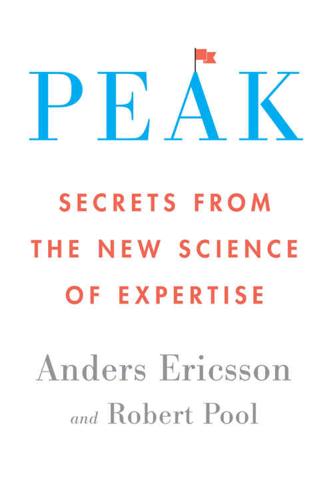
Peak: Secrets From the New Science of Expertise
by
Anders Ericsson
and
Robert Pool
Published 4 Apr 2016
Anders Ericsson and Irene Faivre, “What’s exceptional about exceptional abilities?” in The Exceptional Brain: Neuropsychology of Talent and Special Abilities, ed. Loraine K. Obler and Deborah Fein (New York: Guilford, 1988), 436–473. [>] scientific journal Psychology of Music: Ayako Sakakibara, “A longitudinal study of the process of acquiring absolute pitch: A practical report of training with the ‘chord identification method,’” Psychology of Music 42, no. 1 (2014): 86–111. [>] notes played on the piano: Two of the twenty-four children dropped out over the course of the training, but their departures had nothing to do with how well their training was going.
…
. [>] representations the best ones create: For a good overview, see Paul L. Sikes, “The effects of specific practice strategy use on university string players’ performance,” Journal of Research in Music Education 61, no. 3 (2013): 318–333. [>] more or less effective: Gary E. McPherson and James M. Renwick, “A longitudinal study of self-regulation in children’s music practice,” Music Education Research 3, no. 2 (2001): 169–186. [>] three thousand music students: Susan Hallam, Tiija Rinta, Maria Varvarigou, Andrea Creech, Ioulia Papageorgi, Teresa Gomes, and Jennifer Lanipekun, “The development of practicing strategies in young people,” Psychology of Music 40, no. 5 (2012): 652–680. [>] performs a piece of music: Roger Chaffin and Gabriela Imreh, “‘Pulling teeth and torture’: Musical memory and problem solving,” Thinking and Reasoning 3, no. 4 (1997): 315–336; Roger Chaffin and Gabriela Imreh, “A comparison of practice and self-report as sources of information about the goals of expert practice,” Psychology of Music 29 (2001): 39–69; Roger Chaffin, Gabriela Imreh, Anthony F.
…
. [>] children with a temperament that encourages social interaction: Melanie Noel, Carole Peterson, and Beulah Jesso, “The relationship of parenting stress and child temperament to language development among economically disadvantages preschoolers,” Journal of Child Language 35, no. 4 (2008): 823–843. [>] infants who paid more attention to a parent: Brad M. Farrant and Stephen R. Zubrick, “Parent-child book reading across early childhood and child vocabulary in the early school years: Findings from the Longitudinal Study of Australian Children,” First Language 33 (2013): 280–293. [>] a story in his book Outliers: Malcolm Gladwell, Outliers: The Story of Success (New York: Little, Brown, 2008). [>] advantage among hockey players does seem to taper off: See, for example, Benjamin G. Gibbs, Mikaela Dufur, Shawn Meiners, and David Jeter, “Gladwell’s big kid bias?”
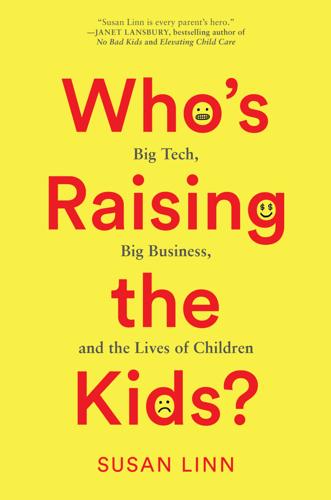
Who’s Raising the Kids?: Big Tech, Big Business, and the Lives of Children
by
Susan Linn
Published 12 Sep 2022
Babies and toddlers lose even more time in creative play than their older brothers and sisters lose—52 minutes for every hour of TV.37 While most of the research on babies and screens is still mainly about television and videos, it appears that the use of touch screens may also be problematic. In Britain, one longitudinal study indicates that babies and toddlers who spend a lot of time with touch screens appear to be more easily distracted as preschoolers and to have a harder time controlling their attention.38 Research also suggests that heavy media use at the age of two is associated in preschoolers with difficulties with self-regulation, which the researchers define as the ability to control “behavior, emotional reactions, and social interactions despite contrary impulses and distractions.”39 What’s especially concerning about encouraging babies and toddlers to spend time with screens is that they are likely to spend more time with screens when they are older.40 That’s particularly worrying because research suggests that children’s excessive screen use is harmful at every age.
…
For a condensed, research-based overview of materialism, children, and advertising, see Campaign for a Commercial-Free Childhood, “Get the Facts: Marketing and Materialism,” www.commercialfreechildhood.org/sites/default/files/devel-generate/wri/materialism_fact_sheet.pdf; for research studies, see Suzanna J. Opree et al., “Children’s Advertising Exposure, Advertised Product Desire, and Materialism: A Longitudinal Study,” Communication Research 41, no. 5 (July 2014): 717–35, doi.org/10.1177/0093650213479129; Moniek Buijzen and Patti M. Valkenburg, “The Effects of Television Advertising on Materialism, Parent-Child Conflict, and Unhappiness: A Review of Research,” Journal of Applied Developmental Psychology 24, no. 4 (September 1, 2003): 437–56, doi.org/10.1016/S0193-3973(03)00072−8; Marvin E.
…
Kathy Hirsh-Pasek et al., “Putting Education in ‘Educational’ Apps: Lessons from the Science of Learning,” Psychological Science in the Public Interest 16, no. 1 (2015): 3–34; Meyer et al., Journal of Developmental and Behavioral Pediatrics 40: 32–39. 11. Douglas A. Gentile et al., “Pathological Video Game Use Among Youths: A Two-Year Longitudinal Study,” Pediatrics 127, no. 2 (February 2011): e319–29; Clifford J. Sussman et al., “Internet and Video Game Addictions: Diagnosis, Epidemiology, and Neurobiology,” Child and Adolescent Psychiatric Clinics of North America 27, no. 2 (April 2018): 301–26. 12. Betsy Morris, “How Fortnite Triggered an Unwinnable War Between Parents and Their Boys; the Last-Man-Standing Videogame Has Grabbed onto American Boyhood, Pushing Aside Other Pastimes and Hobbies and Transforming Family Dynamics,” Wall Street Journal Online, December 21, 2018. 13.

The Norm Chronicles
by
Michael Blastland
Published 14 Oct 2013
Current pensioners have reached the surprising point where, as a group, they are less likely to be poor, on average, than almost any other section of the population, with almost the only exception being younger people working full-time.* Figure 33: Percentage of different types of household ‘in poverty’6 Source: Households Below Average Income (HBAI) 1994/95–2010/11 In fact, the very poorest pensioners do better after retirement than before. The English Longitudinal Study of Ageing has followed thousands of people as they grow older. The latest report says that ‘for people with low incomes (less than £150 per week) before retirement, income tends to increase on entering retirement, perhaps as a result of state support for pensioners on low incomes’.7 So the image of the impoverished pensioner is misleading.
…
Losing Life and Livelihood: A Systematic Review and Meta-Analysis of Unemployment and All-Cause Mortality. Soc. Sci. Med. 2011 Mar;72(6):840–54. 9. Clemens, T., Boyle, P., Popham, F. Unemployment, Mortality and the Problem of Health-Related Selection: Evidence from the Scottish and England & Wales (ONS) Longitudinal Studies. Health Stat. Q. 2009;(43):7–13. 10. Gregg, P., Tominey, E. The Wage Scar from Youth Unemployment. Department of Economics, University of Bristol; 2004. Report No.: 04/097. Available from: http://ideas.repec.org/p/bri/cmpowp/04-097.html. 11. Bell, D.N.F., Blanchflower, D.G. Youth Unemployment: Déjà Vu?
…
The Workhouse System, 1834–1929: The History of an English Social Institution (London: Routledge, 1983). 4. Orwell, G. D own and Out in Paris and London: A Novel (Harcourt, Brace & World, 1961). 5. Households Below Average Income. Department of Work and Pensions, June 2012. Available from: http://research.dwp.gov.uk/asd/index.php?page=hbai. 6. Ibid. 7. English Longitudinal Study of Ageing. Financial Circumstances, Health and Well-Being of the Older Population in England. 2010. Available from: http://www.ifs.org.uk/elsa/report10/elsa_w4-1.pdf. 8. Department of Health. Fairer Care Funding. The Report of the Commission on Funding of Care and Support. 2011. Available from: http://www.dilnotcommission.dh.gov.uk/our-report/.
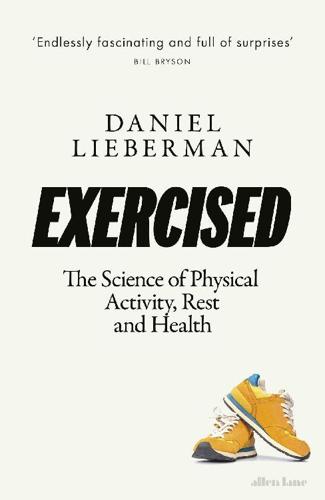
Exercised: The Science of Physical Activity, Rest and Health
by
Daniel Lieberman
Published 2 Sep 2020
They urge us to ignore aberrations like the two Donalds and pay attention to the mountain of evidence that the Fountain of Youth runs with sweat. That sweat, moreover, needs to keep flowing as we age. One of the most venerable long-term studies on how exercise affects aging is the Cooper Center Longitudinal Study in Dallas, started in 1970 by the man who coined the term “aerobics,” Dr. Kenneth Cooper. One of its analyses tracked more than ten thousand men and three thousand women older than thirty-five to test if physically fit exercisers lived longer and healthier lives. They generally did. After adjusting for age (because an older person is more likely to pass away in a given year than a younger person), Cooper found that the most physically fit men and women had mortality rates about one-third to one-fourth of those who were least fit.7 Further, a subsample of those who were initially out of shape but started to exercise and increased their fitness halved their age-adjusted mortality rate compared to those who remained inactive and unfit.8 Because there is more to health than not being dead, Cooper Center researchers also tracked over the decades more than eighteen thousand healthy middle-aged individuals to see who got chronic health conditions such as diabetes and Alzheimer’s.
…
This study measured the probability of surviving in a given year (top) and disability (bottom) over two decades in a group of amateur runners over fifty in 1984 compared with a group of healthy but sedentary controls. After more than twenty years the runners had 20 percent higher survival rates and 50 percent less disability. (Modified with permission from Chakravarty, E. F., et al. [2008], Reduced disability and mortality among aging runners: a 21-year longitudinal study. Archives of Internal Medicine 168:1638–46) As Hippocrates would have predicted, scores of other studies on the effects of physical activity on morbidity and mortality yield similar results.61 That doesn’t mean, however, that physical activity is a surefire Fountain of Youth, and remember it doesn’t delay mortality by preventing aging per se.
…
D. (2015), Increased physical activity improves sleep and mood outcomes in inactive people with insomnia: A randomized controlled trial, Journal of Sleep Research 24:526–34; Hartescu, I., and Morgan, K. (2019), Regular physical activity and insomnia: An international perspective, Journal of Sleep Research 28:e12745; Inoue, S., et al. (2013), Does habitual physical activity prevent insomnia? A cross-sectional and longitudinal study of elderly Japanese, Journal of Aging and Physical Activity 21:119–39; Skarpsno, E. S., et al. (2018), Objectively measured occupational and leisure-time physical activity: Cross-sectional associations with sleep problems, Scandinavian Journal of Work and Environmental Health 44:202–11. 60 For an excellent popular account of stress and its many cortisol-mediated effects on the body, see Sapolsky, R.

Visual Thinking: The Hidden Gifts of People Who Think in Pictures, Patterns, and Abstractions
by
Temple Grandin, Ph.d.
Published 11 Oct 2022
The Line Is Getting Increasingly Blurry.” ScienceDaily, August 21, 2019. Belkin, D. “Who Needs a Four-Year Degree?” Wall Street Journal, November 13, 2020, R3. Bernstein, B. O., D. Lubinski, and C. P. Benbow. “Academic Acceleration in Gifted Youth and Fruitless Concerns Regarding Psychological Well-Being: A 35 Year Longitudinal Study.” Journal of Educational Psychology (2020). https://my.vanderbilt.edu/smpy/files/2013/02/Article-JEP-Bernstein-2020-F.pdf. Bhattacharya, S. “Meet Dr. Nita Patel and Her All-Female Team Developing the COVID-19 Vaccine.” Brown Girl Magazine, April 28, 2020. Bower, B. “When It’s Playtime, Many Kids Prefer Reality over Fantasy.”
…
Journal of Autism and Developmental Disorders 31, no. 1 (2001): 5–17. Beaty, R. E., et al. “Creative Cognition and Brain Network Dynamics.” Trends in Cognitive Sciences 20, no. 2 (2016): 87–95. Bernstein, B. O., D. Lubinski, and C. P. Benbow. “Academic Acceleration in Gifted Youth and Fruitless Concerns Regarding Psychological Well-Being: A 35-Year Longitudinal Study.” Journal of Educational Psychology (2020). https://my.vanderbilt.edu/smpy/files/2013/02/Article-JEP-Bernstein-2020-F.pdf. Bianchini, R. “Apple iPhone Design—from the 1st Generation to the iPhone 12.” January 18, 2021. https://www.inexhibit.com/case-studies/apple-iphone-history-of-a-design-revolution/.
…
Neuroscience and Biobehavioral Reviews 35 (2011): 1791–1804. Panksepp, J., et al. “Effects of Neonatal Decortication on the Social Play of Juvenile Rats.” Physiology and Behavior 56, no. 3 (1994): 429–43. Pauen, S. “The Global-to-Basic Shift in Infants’ Categorical Thinking: First Evidence from a Longitudinal Study.” International Journal of Behavioral Development 26, no. 6 (2002): 492–99. Paul, E., and M. Mendl. “Animal Emotion: Descriptive and Prescriptive Definitions and Their Implications for a Comparative Perspective.” Applied Animal Behaviour Science 205 (August 2018): 202–9. Peissig, J.

The Big Shift: Navigating the New Stage Beyond Midlife
by
Marc Freedman
Published 15 Dec 2011
As Jones’s story suggests, while generativity is expressed in various ways across the life course, the postmidlife period represents something of a high-water mark for the impulse, most likely triggered by the question of mortality. Susan Krauss Whitbourne, a psychologist at the University of Massachusetts, for example, conducted a longitudinal study over three decades looking at adult development. In her research, Whitbourne found that participants who scored high on self-fulfillment in the middle years and beyond were engaged in work that moved them beyond narrow personal concerns to concern for others. She finds particularly that “the desire to leave a positive legacy is a fundamental motivation that in turn serves as the ultimate basis for self-fulfillment.”
…
Vaillant, Adaptation to Life (Boston: Little, Brown, 1977) and Aging Well: Surprising Guideposts to a Happier Life from the Landmark Harvard Study of Adult Development (Boston: Little, Brown, 2002); John Snarey, How Fathers Care for the Next Generation: A Four-Decade Study (Cambridge: Harvard University Press, 1993). 95 The late American historian Christopher Lasch: Christopher Lasch, “Aging in a Culture Without a Future,” Hastings Center Report (August 1977). 97 conducted a longitudinal study: Susan Krauss Whitbourne, The Search for Fulfillment: Revolutionary New Research That Reveals the Secret to Long-Term Happiness (New York: Ballantine Books, 2010). CHAPTER 6: ROUTES OF PASSAGE 105 Paula Lopez Crespin’s story and her quotes are culled from several interviews with her, including time at the Cole Arts and Science Academy in Denver, as well as this portrait of her: Cecilia Capuzzi Simon, “So You Want to Be a Teacher for America?”
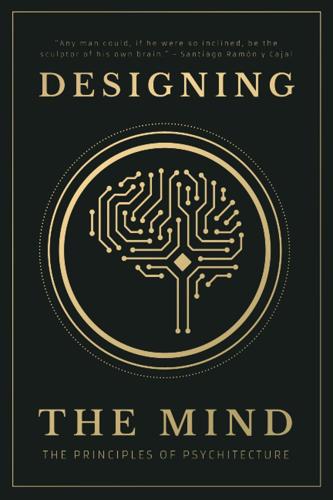
Designing the Mind: The Principles of Psychitecture
by
Designing The Mind
and
Ryan A Bush
Published 10 Jan 2021
Chapter 16: Hedonic Adaptation, First Paperback Edition (New York, NY: Russell Sage Foundation, 2003). Abraham H. Maslow, Toward a Psychology of Being, 3rd Edition. Chapter 1: Introduction: Toward a Psychology of Health, 3rd edition (cNew York: Wiley, 1998). Joachim C. Brunstein, “Personal Goals and Subjective Well-Being: A Longitudinal Study,” Journal of Personality and Social Psychology 65, no. 5 (1993): 1061–70, https://doi.org/10.1037/0022-3514.65.5.1061. Michael Siegrist and Bernadette Sütterlin, “Human and Nature-Caused Hazards: The Affect Heuristic Causes Biased Decisions,” Risk Analysis 34, no. 8 (2014): 1482–94, https://doi.org/10.1111/risa.12179.
…
John Kaag, Hiking with Nietzsche: On Becoming Who You Are, 1st edition (New York: Farrar, Straus and Giroux, 2018). Bernard Reginster, The Affirmation of Life: Nietzsche on Overcoming Nihilism, 0 edition (Harvard University Press, 2009). Rodica Ioana Damian et al., “Sixteen Going on Sixty-Six: A Longitudinal Study of Personality Stability and Change across 50 Years,” Journal of Personality and Social Psychology 117, no. 3 (September 2019): 674–95, https://doi.org/10.1037/pspp0000210. L. -G Öst et al., “One vs Five Sessions of Exposure and Five Sessions of Cognitive Therapy in the Treatment of Claustrophobia,” Behaviour Research and Therapy 39, no. 2 (February 1, 2001): 167–83, https://doi.org/10.1016/S0005-7967(99)00176-X.

Rethinking Narcissism: The Bad---And Surprising Good---About Feeling Special
by
Dr. Craig Malkin
Published 6 Jul 2015
The Handbook of Narcissism and Narcissistic Personality Disorder: Theoretical approaches, empirical findings, and treatments. John Wiley & Sons, 2011. Cater, T. E., V. Zeigler-Hill, and J. Vonk. Narcissism and recollections of early life experiences. Personality and Individual Differences, 2011, vol. 51(8), pp. 935–39. Cramer, P. Young. Adult Narcissism: A 20 year longitudinal study of the contribution of parenting styles, preschool precursors of narcissism, and denial. Journal of Research in Personality, 2011, vol. 45(1), pp. 19–28. Cramer, P., and C. J. Jones. Narcissism, identification, and longitudinal change in psychological health: Dynamic predictions. Journal of Research in Personality, 2008, vol. 42(5), pp. 1148–59.
…
Genetic Psychology Monographs, 1967 vol. 75, pp. 43–88. Brown, K. M., R. Hoye, and M. Nicholson. Self-esteem, self-efficacy, and social connectedness as mediators of the relationship between volunteering and well-being. Journal of Social Service Research, 2012, vol. 38(4), pp. 468–83. Cramer, P. Young. Adult narcissism: A 20 year longitudinal study of the contribution of parenting styles, preschool precursors of narcissism, and denial. Journal of Research in Personality, 2011, vol. 45(1), pp. 19–28. The four parenting style descriptors in this chapter are taken in part or adapted from Cramer’s analysis. Choi, Y., Y. S. Kim, S. Y. Kim, and I.
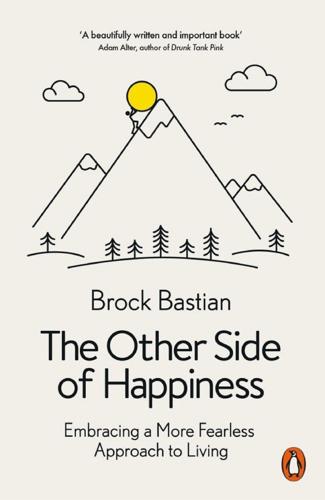
The Other Side of Happiness: Embracing a More Fearless Approach to Living
by
Brock Bastian
Published 25 Jan 2018
Comrades [initiates] are closer than friends … closer than brothers. Their relationship is different from that of lovers. Their trust in and knowledge of each other is total.’19 Beyond the use of these practices in training, the trauma of war often works in the same way. This was observed in a longitudinal study of American war veterans.20 Soldiers who had experienced combat, war trauma and the loss of significant others felt bonded together through these events. More recently, a field study of Libyan revolutionaries found that front-line fighters reported especially high levels of bonding between themselves and others in their battalion, compared to those who served in logistical support roles.21 In fact, for half of the combatants surveyed, they felt stronger bonds with their fellow battalion members than with their own families.
…
The integration of negative affect, pain and cognitive control in the cingulate cortex. Nature Reviews Neuroscience, 12, 154–67. 7 Gray, K. and Wegner, D. M. (2010). Blaming God for our pain: Human suffering and the divine mind. Personality and Social Psychology Review, 14 (1), 7–16. 8 Sibley, C. G. and Bulbulia, J. (2012). Faith after an earthquake: A longitudinal study of religion and perceived health before and after the 2011 Christchurch New Zealand earthquake. PLoS One, 7 (12), e49648. 9 Norenzayan, A. and Hansen, I. G. (2006). Belief in supernatural agents in the face of death. Personality and Social Psychology Bulletin, 32 (2), 174–87. 10 Whitson, J.

Never Enough: The Neuroscience and Experience of Addiction
by
Judith Grisel
Published 15 Feb 2019
We’re beginning to scratch the surface on how inherited modifications to the DNA double helix contribute to complex traits like addiction, and data are accumulating to suggest that risk factors may be passed along epigenetically. When potential parents smoke marijuana, for instance, epigenetic changes could be priming subsequent generations for addiction. Conducting longitudinal studies in humans to identify such transgenerational impacts presents challenges, obviously. One of the biggest is that we can’t randomly assign people to smoking and nonsmoking groups, so we can’t rule out that those prone to smoking may possess tendencies to abuse other drugs as well. (This, again, was the main argument proffered by tobacco companies for decades: they argued that it was impossible to say that smoking caused cancer and suggested with surprisingly straight faces that those who smoked also coincidentally happened to be prone to metastases.)
…
Griffiths et al., “Psilocybin-Occasioned Mystical-Type Experience in Combination With Meditation and Other Spiritual Practices Produces Enduring Positive Changes in Psychological Functioning and in Trait Measures of Prosocial Attitudes and Behaviors,” Journal of Psychopharmacology 32 (2018): 49–69. 8. José Carlos Bouso et al., “Personality, Psychopathology, Life Attitudes, and Neuropsychological Performance Among Ritual Users of Ayahuasca: A Longitudinal Study,” PLoS ONE 7, no. 8 (2012), doi.org/10.1371/journal.pone.0042421. 9. Evan J. Kyzar et al., “Psychedelic Drugs in Biomedicine,” Trends in Pharmacological Science 38, no. 11 (2017). 10. David E. Nichols, Matthew W. Johnson, and Charles D. Nichols, “Psychedelics as Medicines: An Emerging New Paradigm,” Clinical Pharmacology and Therapeutics 101, no. 2 (2017), doi:10.1002/cpt.557. 9.

The Creative Curve: How to Develop the Right Idea, at the Right Time
by
Allen Gannett
Published 11 Jun 2018
He is known for his: Mihaly Csikszentmihalyi, Flow: The Psychology of Optimal Experience (New York: Harper, 2008); and Mihaly Csikszentmihalyi, “Flow, The Secret to Happiness,” TED Talk, 2004, https://www.ted.com/talks/mihaly_csikszentmihalyi_on_flow. Csikszentmihalyi looks like: Details relating to Csikszentmihalyi and his work drawn mostly from my interviews with him, Csikszentmihalyi, The Systems Model of Creativity; and Jacob Warren Getzels and Mihály Csíkszentmihályi, The Creative Vision: A Longitudinal Study of Problem Finding in Art (Hoboken, N.J.: Wiley, 1976). Chapter 6 According to the Social Security Administration: “Get Ready for Baby,” Social Security Administration (2017), https://www.ssa.gov/cgi-bin/babyname.cgi. The New York Times Magazine even ran an article: Peggy Orenstein, “Where Have All the Lisas Gone?
…
https://www.youtube.com/user/caseyneistat/videos Deller was a twenty-year-old: Details relating to Deller drawn mostly from Alastair Sooke, “Jeremy Deller: ‘When I Got Close to Warhol,’ ” BBC, December 2, 2014, http://www.bbc.com/culture/story/20141202-when-i-got-close-to-warhol. Mihaly Csikszentmihalyi: Jacob Warren Getzels and Mihály Csíkszentmihályi, The Creative Vision: A Longitudinal Study of Problem Finding in Art (Hoboken: Wiley, 1976). Maria Goeppert Mayer: “Maria Goeppert Mayer—Biographical,” NobelPrize.org (date unlisted), https://www.nobelprize.org/nobel_prizes/physics/laureates/1963/mayer-bio.html; and “Maria Goeppert-Mayer,” Atomic Heritage Foundation (date unlisted), http://www.atomicheritage.org/profile/maria-goeppert-mayer.
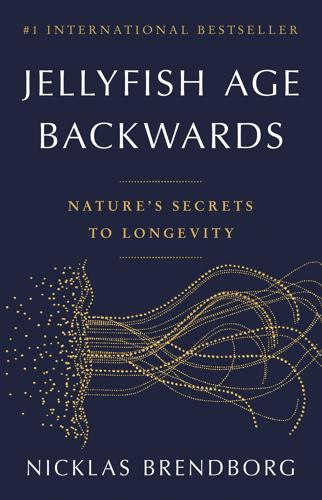
Jellyfish Age Backwards: Nature's Secrets to Longevity
by
Nicklas Brendborg
Published 17 Jan 2023
‘Telomere Length in the Newborn’, Pediatric Research, vol. 52. no. 3, 2002, pp. 377–381. Armanios, M., Blackburn, E. ‘The telomere syndromes’, Nature Reviews Genetics, vol. 13, no. 10, 2012, pp. 693–704. Arai, Y. et al. ‘Inflammation, But Not Telomere Length, Predicts Successful Ageing at Extreme Old Age: A Longitudinal Study of Semi-supercentenarians’, eBio Medicine, vol. 2, no. 10, 2015, pp. 1549–1558. Hayflick, L., Moorhead, P. ‘The serial cultivation of human diploid cell strains’, Experimental Cell Research, vol. 25, no. 3, 1961, pp. 585–621. ‘The Nobel Prize in Physiology or Medicine 2009’, NobelPrize.org, 2020.
…
‘Genetically predicted iron status and life expectancy’, Clinical Nutrition, vol. 40, no. 4, 2020, pp. 2456–2459. Kadoglou, N., Biddulph, J., Rafnsson, S., Trivella, M., Nihoyannopoulos, P., Demakakos, P. ‘The association of ferritin with cardiovascular and all-cause mortality in community-dwellers: The English longitudinal study of ageing’, PLOS ONE, vol. 12, no. 6, 2017. Forte, G. et al. ‘Metals in plasma of nonagenarians and centenarians living in a key area of longevity’, Experimental Gerontology, vol. 60, 2014, pp. 197–206. Ford, E., Cogswell, M. ‘Diabetes and serum ferritin concentration among U.S. adults’, Diabetes Care, vol. 22, no. 12, 1999, pp. 1978–1983.
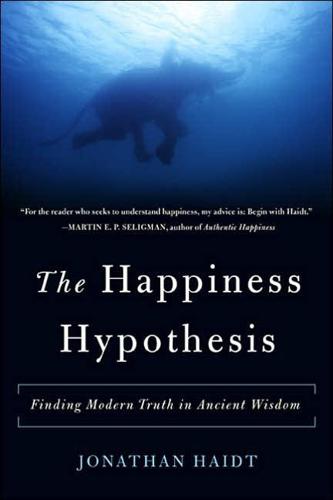
The Happiness Hypothesis: Finding Modern Truth in Ancient Wisdom
by
Jonathan Haidt
Published 26 Dec 2005
T h e elderly benefit even more than do other adults, particularly when their volunteer work either involves direct person-to-person helping or is done through a religious organization. T h e benefits of volunteer work for the elderly are so large that they even show up in improved health and longer life. Stephanie Brown and her colleagues at the University of Michigan found striking evidence of such effects when they examined data from a large longitudinal study of older married c o u p l e s . 2 8 T h o s e who reported giving more help and support to spouses, friends, and relatives went on to live longer than those who gave less (even after controlling for factors such as health at the beginning of the study period), whereas the a m o u n t of help that people reported receiving showed no relationship to longevity.
…
Harker and Keltner, 2001; Lyubomirsky, King, and Diener, in press. I 6. Baumeister and Leary, 1995. I Iowever, it is not certain that marriage itself is more beneficial than other kinds of companionship. M u c h evidence says yes, particularly for health, wealth, and longevity (reviewed in Waite a n d Gallagher, .'.()()()); but a large longitudinal study failed to find a long-lasting benefit of mari lage on reports of well-being (Lucas et al., 2003). 17. Diener et al., 1999; Myers, 2 0 0 0 . 18. Argyle, 1999. S o m e studies find a larger race difference, but w h e n differences in income and job status are controlled for, the differences b e c o m e small HI insignificant. 19.
…
New York: Norton. I .ichtheim, M. ( 1 9 7 6 ) . Ancient egyptial literature: A book of readings. Vol. 2, The new kingdom. Berkeley: University of California. Lorenz, K. J. (1935). Der kumpan in der umvelt des vogels. Journal fur Orni-thologie, 83, 137-213. I .ucas, R. E. (2005). Happiness can change: A longitudinal study of adaptation to disability. Unpublished manuscript. Michigan State University. Lucas, R. E., Clark, A. E., Georgellis, Y., & Diener, E. (2003). Reexamining adaptation and the set point model of happiness: Reactions to changes in marital s t a t u s . Journal of Personality and Social Psychology, 8 4 , 5 2 7 — 5 3 9 .
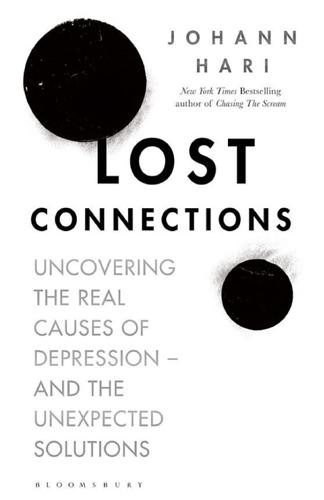
Lost Connections: Uncovering the Real Causes of Depression – and the Unexpected Solutions
by
Johann Hari
Published 1 Jan 2018
Marmot, Status Syndrome, 125. Chapter 7: Cause Two: Disconnection from Other People When John and his colleagues added up the data For this chapter I have drawn on many published studies by John and his colleagues. They include: Y. Luo et al., “Loneliness, health, and mortality in old age: A national longitudinal study,” Social Science & Medicine 74, no. 6 (March 2012): 907–914; Cacioppo et al., “Loneliness as a specific risk factor for depressive symptoms: Cross-sectional and longitudinal analyses,” Psychology and Aging 21, no. 1 (March 2006): 140–151; L. C. Hawkley and J. T. Cacioppo, “Loneliness Matters: A Theoretical and Empirical Review of Consequences and Mechanisms,” Ann Behav Med 40, no. 2 (2010): 218; Cacioppo et al., “Loneliness and Health: Potential Mechanisms,” Psychosomatic Medicine 64, no. 3 (May/June 2002): 407–417; J.
…
He explained to me—and in his published research—that (1) In experimental settings, you can make people more materialistic or less materialistic in the moment. This is called “priming”—you get people to unconsciously think about money, and then you see if their mood changes afterward. (2) You can do longitudinal studies, which track changes in people’s materialism, and see the relationship with depression. (3) You can look at the evidence about what happens when people do become more materialistic—and it demonstrates that when this happens, it “sets up a lifestyle for themselves which does a relatively bad job of meeting their psychological needs, and the research bears that out pretty well.
…
Controversial weight loss ad sparks varied reactions,” The Guardian, June 27, 2015, https://www.theguardian.com/us-news/2015/jun/27/beach-body-ready-america-weight-loss-ad-instagram, as accessed January 10, 2017. It was a big and measurable effect Tim Kasser et al., “Changes in materialism, changes in psychological well-being: Evidence from three longitudinal studies and an intervention experiment,” Motivation and Emotion 38 (2014): 1–22. Chapter 20: Reconnection Five: Sympathetic Joy, and Overcoming Addiction to the Self Dr. Miguel Farias and Catherine Wilkholm, The Buddha Pill: Can Meditation Change You? (New York: Watkins, 2015), 108–9; T. Toneatta and L Nguyen: “Does mindfulness meditation improve anxiety and mood symptoms?
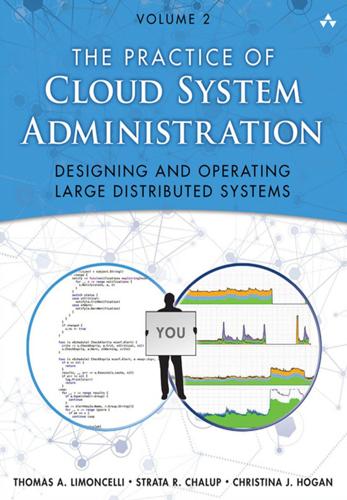
The Practice of Cloud System Administration: DevOps and SRE Practices for Web Services, Volume 2
by
Thomas A. Limoncelli
,
Strata R. Chalup
and
Christina J. Hogan
Published 27 Aug 2014
The latter approach provides resiliency against switch failure, not just NIC failure. Many different algorithms are available for determining which packets go over which physical link. With some, it is possible for packets to arrive out of order. While all protocols should handle this situation, many do not do it well. * * * Longitudinal Studies on Hardware Failures Google has published to two longitudinal studies of hardware failures. Most studies of such failures are done in laboratory environments. Google meticulously collects component failure information on its entire fleet of machines, providing probably the best insight into actual failure patterns. Both studies are worth reading.
…
• “The Google File System” (Ghemawat, Gobioff & Leung 2003) • ”MapReduce: Simplified Data Processing on Large Clusters” (Dean & Ghemawat 2004) • “Bigtable: A Distributed Storage System for Structured Data” (Chang et al. 2006) • “The Chubby Lock Service for Loosely-Coupled Distributed Systems” (Burrows 2006) • “Spanner: Google’s Globally-Distributed Database” (Corbett et al. 2012) • “The Tail at Scale” (Dean & Barroso 2013) Improving latency means fixing the last percentile. • “Failure Trends in a Large Disk Drive Population” (Pinheiro, Weber & Barroso 2007) Longitudinal study of hard drive failures. • “DRAM Errors in the Wild: A Large-Scale Field Study” (Schroeder, Pinheiro & Weber 2009) Longitudinal study of DRAM failures. Classic Facebook Papers: • “Cassandra: A Decentralized Structured Storage System” (Lakshman & Malik 2010) Scalability: • The Art of Scalability: Scalable Web Architecture, Processes, and Organizations for the Modern Enterprise (Abbott & Fisher 2009) An extensive catalog of techniques and discussion of scalability of people, process, and technology

Food Allergy: Adverse Reactions to Foods and Food Additives
by
Dean D. Metcalfe
Published 15 Dec 2008
Simon Abbreviations AA AAF AAP ACCD Arachidonic acid Amino acid-based formula American Association of Pediatrics 1-Aminocyclopropane-1-carboxylic acid deaminase ACD Allergic contact dermatitis AD Atopic dermatitis ADA Americans with Disabilities Act AE Atopic eczema AEC Absolute eosinophil count AERD Aspirin exacerbated respiratory disease AFP Antifreeze protein AGA Anti-gliadin antibodies AI Adequate intake ALA Alimentary toxic aleukia ALDH Aldehyde dehydrogenase ALS Advanced Life Support ALSPAC Avon Longitudinal Study of Parents and Children AMDR Acceptable Macronutrient Distribution Ranges AMP Almond major protein APC Antigen-presenting cell APT Atopy patch test ASCA Anti-Saccharomyces cerevisiae ASHMI Anti-asthma Herbal Medicine Intervention ASP Amnesic shellfish poisoning AZA Azaspiracid AZP Azaspiracid shellfish poisoning BAL Bronchoalveolar lavage BAT Basophil activation test BCR B-cell receptor BER Bioenergy regulatory BFD Bioelectric functions diagnosis BHA Butylated hydroxyanisole BHR Basophil histamine release BHT Butylated hydroxytoluene BLG β-lactoglobulin BMI Body mass index BN Brown–Norway BP Blood pressure BPRS Brief Psychiatric Rating Scale BTX Brevetoxins CAS Chemical Abstract Society CCD CCP CDC CFA CFR CGRP CIU CIUA CLA CLSI CM CMA CMF CMP CMV CNS COX CRH CRP CRS CSPI CSR CTL CTX CU DAO DBPC DBPCFC DC DHA DMARD DoH DRI DSP DTH DTT DTX EAR EAV ECP EDN EDS Cross-reactive carbohydrate determinants Cyclic citrullinated peptide Centers for Disease Control and Prevention Chemotactic factor of anaphylaxis Code of Federal Regulations Calcitonin gene-related peptide Chronic idiopathic urticaria Chronic idiopathic urticaria/angioedema Cutaneous lymphocyte-associated antigen Clinical and Laboratory Standards Institute Cow’s milk Cow’s milk allergy Cow’s milk formula Cow’s milk protein Cucumber mosaic virus Central nervous system Cyclo-oxygense Corticotropin-releasing hormone C-reactive protein Chinese restaurant syndrome Center for Science in the Public Interest Class-switch recombination Cytotoxic T-lymphocyte Ciguatoxins Cholinergic urticaria Diamine oxidase Double-blind, placebo-controlled Double-blind, placebo-controlled food challenge Dendritic cell Docosahexaenoic acid Disease modifying anti-rheumatic agent Department of Health Dietary reference intakes Diarrhetic shellfish poisoning Delayed-type hypersensitivity Dithiothreitol Dinophysistoxins Estimate average requirement Electroacupuncture according to Voll Eosinophil cationic protein Eosinophil-derived neurotoxin Electrodermal screening xiii xiv Abbreviations EE EEG EER EFA EFSA EGID EIA ELISA EMA EMT EoE EoG EoP EPA EPO EPSPS Eosinophilic esophagitis Electroencephalogram Estimated energy requirement Essential fatty acid European Food Safety Authority Eosinophil-associated gastrointestinal disorders Enzyme immunoassay Enzyme-linked immunosorbent assays Anti-endomysial Emergency Medical Technical Eosinophilic esophagitis Eosinophilic gastroenteritis Eosinophilic proctocolitis Eicosapentaneoic acid Eosinophilic peroxidase Enzyme 5-enolpyruvylshikimate-3-phosphate synthase EPX Eosinophil protein X ESR Erythrocyte sedimentation rate FAAN Food Allergy & Anaphylaxis Network FAE Follicle-associated epithelium FAFD Food-additive-free diet FALCPA Food Allergen Labeling and Consumer Protection Act FAO Food and Agricultural Organization FASEB Federation of American Societies for Experimental Biology FDA Food and Drug Administration FDDPU Food-dependent delayed pressure urticaria FDEIA Food-dependent exercise-induced anaphylaxis FEC Food-and-exercise challenge FEIA Fluorescent-enzyme immunoassay FFQs Food Frequency Questionnaires FFSPTs Fresh food skin prick tests FPIES Food protein-induced enterocolitis syndrome FSIS Food Safety Inspection Service GALT Gut-associated lymphoid tissue GBM Glomerular basement membrane GER Gastroesophageal reflux GERD Gastroesophageal reflux disease GFD Gluten-free diet GH Growth hormone GHRH Growth hormone releasing hormone GI Gastrointestinal GINI German Infant Nutritional Interventional GOX Glyphosate oxidoreductase GrA Granzymes A GRAS Generally recognized as safe GrB Granzymes B GRS Generally regarded as safe GSH Glutathione GVHD Graft-versus-host disease HACCP Hazard analysis and critical control point HAQ Health Assessment Questionnaire HBGF HCN HE HEL HEV HKE HKL HKLM HLA HMW HNL HPF HPLC HPP HRFs HRP HSP HVP IAAs ICD IDECs IEC IEI IgA IgE IgG IgM ISB ISS IST ITAM ITIM IUIS JECFA KA KGF KLH LA LCPUFA LCs LFI LGG LLDC LMW LOAELs LOX LP LPL LPS LRTIs LSD LT LTP MALDI Heparin-binding growth factors Hydrogen cyanide Hen’s egg Hen’s egg lysozyme High endothelial venules Heat-killed Esherichia coli Heat-killed Listeria monocytogene Heat-killed Listeria monocytogenes Human leukocyte antigen High molecular weight Human neutrophil lipocalin High-powered field High-performance liquid chromatography Hydrolyzed plant protein Histamine releasing factors Horseradish peroxidase Hydrolyzed soy protein Hydrolyzed vegetable protein Indispensable amino acids Irritant contact dermatitis Inflammatory dendritic epidermal cells Intestinal epithelial cells Idiopathic environmental intolerances Immunoglobulin A Immunoglobulin E Immunoglobulin G Immunoglobulin M Isosulfan blue Immunostimulatory sequences Intradermal skin test Immunoreceptor tyrosine-based activation motif Immunoreceptor tyrosine-based inhibitory motif International Union of Immunological Societies Expert Committee on Food Additives Kainic acid Keratinocyte growth factor Key-hole limpet hemocyanin Linoleic acid Long-chain polyunsaturated fatty acids Langerhans cells Lateral flow immunochromatographic Lactobacillus rhamnosus GG Langerhans-like dendritic cell Low molecular weight Lowest observed adverse effect level Lipoxygenase Lamina propria LP lymphocytes Lipopolysaccharide Lower respiratory tract infections Lysergic acid diethylamide Leukotrienes Lipid-transfer protein Matrix-assisted laser desorption/ionization Abbreviations xv MALT MAO MAPK MAS MBP MC MCS MED MFA MHC MIP MMP MMPI MMR MPO MSG MTX MUFA MWL NADPH NASN NCHS NDGA NIAID NIOSHA NK NLEA NOEL NPA NPIFR NPV NSAID NSBR NSP OAS ODN OFC OPRA OT OVA PAF PAMP PBB PBMC PBT PCB PEF PEFR PFS PFT PHA PK PKC Mucosa-associated lymphoid tissue Monoamine oxidase Mitogen-activated protein kinase Multicenter Allergy Study Major basic protein Mast cell Multiple chemical sensitivity Minimal eliciting dose Multiple food allergies Major histocompatibility complex Macrophage inflammatory protein-1 Matrix metalloproteinase Minnesota Multiphasic Personality Inventory Measles–mumps–rubella Myeloperoxidase Monosodium glutamate Maitotoxins Monounsaturated fatty acids Mushroom worker’s lung Nicotinamide dinucleotide phosphate National Association of School Nurses National Center for Health Statistics Nordihydroguaiaretic acid National Institute of Allergy and Infectious Diseases National Institute for Occupational Safety and Health Natural killer National Labeling and Education Act No observable effect level Negative predictive accuracy Nasal peak inspiratory flow Negative predictive values Non-steroidal anti-inflammatory drugs Non-specific bronchial responsiveness Neurotoxic shellfish poisoning Oral allergy syndrome Oligodeoxynucleotides Oral food challenge Occupational Physicians Reporting Activity Oral tolerance Ovalbumin Platelet-activating factor Pathogen-associated molecular pattern Polybrominated biphenyls Peripheral blood mononuclear cell Peripheral blood T-cells Polychlorinated biphenyls Peak expiratory flow Peak expiratory flow rate Pollen–food syndrome Pulmonary function testing Phytohemagglutinin Prausnitz-Küstner Protein kinase C PMN PPA PPI PPs PPT PPV PR PSP PST PTX PUFA PUVA RADS RAST RBA RBL RDA RDBPC RF RIA ROS SBPC SC SCF SCIT SCN SFAP SGF SHM SIF SIgA SIgM SIT SLIT SPECT SPT STX SVR TCM TCR TLP TLR TNF TPA TSA TTG TTX UGI UL USDA VAR VIP WHO YTX Polymorphonuclear leukocytes Positive predictive accuracy Protein phosphatase inhibition Peyer’s patches PP-derived T-cells Positive predictive value Pathogenesis-related Paralytic shellfish poisoning Prick skin test Pectenotoxins Polyunsaturated fatty acids Psoralen ⫹ ultraviolet A radiation Reactive airways dysfunction syndrome Radioallergosorbent test Receptor-binding assay Basophilic leukemia Recommended dietary allowances Randomized double–blind, placebo-controlled Rheumatoid factor Radioimmunoassay Reactive oxygen species Single-blinded placebo-controlled Secretory component Stem cell factor Subcutaneous immunotherapy Soybean cyst nematode School Food Allergy Program Simulated gastric fluid Somatic hyper mutation Simulated intestinal fluid Secretory IgA Secretory IgM Specific immunotherapy Sublingual immunotherapy Single photon emission computed tomography Skin prick test Saxitoxins Sequential vascular response Traditional Chinese medicine T-cell receptor Thaumatin-like protein Toll-like receptor Tumor necrosis factor Tetradecanoylphorbol-13-acetate Transportation Security Administration Tissue transglutaminase Tetrodotoxin Upper GI Upper intake level United States Department of Agriculture Voice-activated audiotape recording Vasoactive intestinal peptide World Health Organization Yessotoxin This page intentionally left blank PA RT 1 Adverse Reactions to Food Antigens: Basic Science Food Allergy: Adverse Reactions to Foods and Food Additives, 4th edition Edited by Dean D.
…
In: Leung DY, Greaves MW (eds.) Allergic Skin Disease: A Multidisciplinary 61 Osborn DA, Sinn J. Soy formula for the prevention of allergy and food intolerance in infants. Cochrane Database Syst Rev 2006;3:CD003741. 62 Fergusson DM, Horwood LJ, Shannon FT. Early solid feeding and recurrent childhood eczema: a 10-year longitudinal study. Pediatrics 1990;86:541–6. 63 Kajosaari M. Atopy prophylaxis in high-risk infants: prospective 5-year follow-up study of children with six months exclusive breastfeeding and solid food elimination. Adv Exp Med Biol 1991;310:453–8. 64 Zutavern A, Brockow I, Schaaf B, et al. Timing of solid food introduction in relation to atopic dermatitis and atopic sensitization: results from a prospective birth cohort study.
…
Defective tumour necrosis factor-alpha production in mother’s milk is related to cow’s milk allergy in suckling infants. Clin Exp Allergy 2000;30:637–43. 75 Lucas A, St James-Roberts I. Crying, fussing and colic behaviour in breast- and bottle-fed infants. Early Hum Dev 1998;53:9–18. 76 Axelsson I, Jakobsson I, Lindberg T, Benediktsson B. Bovine betalactoglobulin in the human milk. A longitudinal study during the whole lactation period. Acta Paediatr Scand 1986;75:702–7. 77 Paganelli R, Atherton DJ, Levinsky RJ. Differences between normal and milk allergic subjects in their immune responses after milk ingestion. Arch Dis Child 1983;58:201–6. 180 Chapter 14 78 Savino F, Cresi F, Pautasso S, et al.
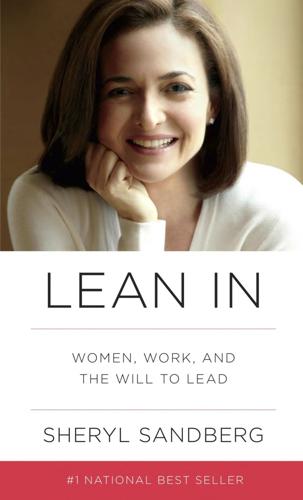
Lean In: Women, Work, and the Will to Lead
by
Sheryl Sandberg
Published 11 Mar 2013
Jessica Valenti, “Sad White Babies with Mean Feminist Mommies,” Jessica Valenti blog, June 19, 2012, http://jessicavalenti.tumblr.com/post/25465502300/sad-white-babies-with-mean-feminist-mommies-the. 4. IT’S A JUNGLE GYM, NOT A LADDER 1. Bureau of Labor Statistics, Number of Jobs Held, Labor Market Activity, and Earnings Growth Among the Youngest Baby Boomers: Results from a Longitudinal Study (July 2012), http://www.bls.gov/news.release/pdf/nlsoy.pdf. This report found that the average person born between 1957 and 1964 had 11.3 jobs between the ages of eighteen and forty-six, with almost half of these jobs being held between the ages of eighteen and twenty-four. 2. For reviews of the research on women tending to be more risk averse than men, see Marianne Bertrand, “New Perspectives on Gender,” in Handbook of Labor Economics, vol. 4B, ed.
…
Why Women Really Quit Careers and Head Home (Berkeley: University of California Press, 2007), 62. 13. Stewart, “A C.E.O.’s Support System.” 14. For a thorough review, see Michael E. Lamb, The Role of the Father in Child Development (Hoboken, NJ: John Wiley & Sons, 2010); and Anna Sarkadi et al., “Fathers’ Involvement and Children’s Developmental Outcomes: A Systematic Review of Longitudinal Studies,” Acta Paediatrica 97, no. 2 (2008): 153–58. 15. Elisabeth Duursma, Barbara Alexander Pan, and Helen Raikes, “Predictors and Outcomes of Low-Income Fathers’ Reading with Their Toddlers,” Early Childhood Research Quarterly 23, no. 3 (2008): 351–65; Joseph H. Pleck and Brian P. Masciadrelli, “Paternal Involvement in U.S.
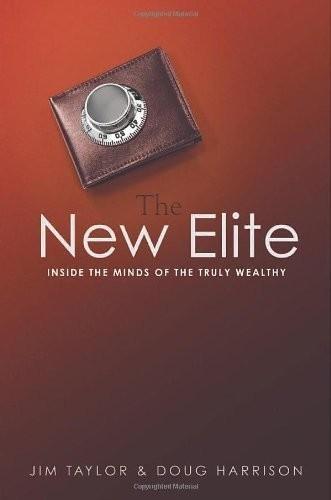
The New Elite: Inside the Minds of the Truly Wealthy
by
Dr. Jim Taylor
Published 9 Sep 2008
Anderson, ‘‘Locus of Control, Coping Behaviors, and Performance in a Stress Setting: A Longitudinal Study,’’ Journal of Applied Psychology 62 (1977): 446–451. 3. Richard Wiseman, The Luck Factor (New York: Hyperion, 2003). 4. Philip Brickman, Dan Coates, and Ronnie Janoff-Bulman, ‘‘Lottery Winners and Accident Victims: Is Happiness Relative?’’ Journal of Personality and Social Psychology 36 (1978): 917–927. 5. Edward Diener, Jeff Horzwitz, and Robert Emmons, ‘‘Happiness of the Very Wealthy’’, Social Indicators Research 16 (1985): 263– 274. 6. Jonathan Gardner and Andrew Oswald, ‘‘Does Money Buy Happiness? A Longitudinal Study Using Data on Windfalls.’’ Presented at the Royal Economic Society Annual Conference 2002. 72 The New Elite 7.
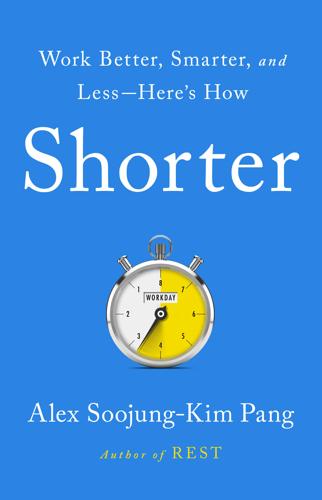
Shorter: Work Better, Smarter, and Less Here's How
by
Alex Soojung-Kim Pang
Published 10 Mar 2020
Even some retirees find that not working has its downsides: they miss the absence of a routine, regular contact with people, and the sense of purpose that work can bring. But is there a linear relationship between your sense of meaningfulness and well-being, and your working hours? Fortunately, a group at Cambridge University has been studying exactly this question. Working with data from the UK Household Longitudinal Study, they looked at the relationship between hours of employment and levels of happiness and well-being. Since the study had over 70,000 people and extended over ten years, some people were working full-time, some part-time, some were employed throughout, and many people got or lost jobs during the study.
…
Statistics on overwork are from the OECD Better Life Index, 2019, http://www.oecdbetterlifeindex.org/topics/work-life-balance/. On women and stress in part-time work, see Tarani Chandola et al., “Are Flexible Work Arrangements Associated with Lower Levels of Chronic Stress–Related Biomarkers? A Study of 6025 Employees in the UK Household Longitudinal Study,” Sociology 53, no. 4 (August 2019): 779–799, https://doi.org/10.1177/0038038519826014. On labor force participation rates of mothers, see “Labor Force Participation: What Has Happened Since the Peak?” Monthly Labor Review (September 2016), figure 8, www.bls.gov/opub/mlr/2016/article/pdf/labor-force-participation-what-has-happened-since-the-peak.pdf.
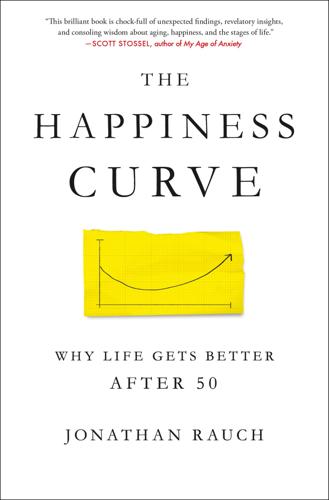
The Happiness Curve: Why Life Gets Better After 50
by
Jonathan Rauch
Published 30 Apr 2018
In their landmark 2008 paper (which I discussed in the previous chapter), Blanchflower and Oswald find that going from age twenty to age forty-five decreases life satisfaction by about a third as much as becoming unemployed—and unemployment is one of the worst things that commonly happen to people. “That is suggestive of a large effect on wellbeing,” they write. In another paper, which looks at more than two dozen European countries, they find that being middle-aged nearly doubles a person’s risk of using antidepressants, after controlling for other variables. Most recently, in their longitudinal study (also discussed in the previous chapter) of how individuals experience the effects of age on happiness over time, Oswald, Nick Powdthavee, and Terence Cheng find that the effect of going from about age twenty to about age forty-five is comparable “to a substantial percentage of the effect on wellbeing of major events such as divorce or unemployment.”
…
Comparing the effects on life satisfaction of aging and education, Sutin writes with Antonio Terracciano, Yuri Milaneschi, Yang An, Luigi Ferruci, and Alan B. Zonderman, in “The Effect of Birth Cohort on Wellbeing: The Legacy of Economic Hard Times,” in Psychological Science 24:3 (2013). Gana’s findings on aging and life satisfaction in France are in “Does Life Satisfaction Change in Old Age? Results from an 8-Year Longitudinal Study,” coauthored with Nathalie Bailly, Yaël Saada, Michèle Joulain, and Daniel Alaphilippe, in The Journals of Gerontology, Series B: Psychological Sciences and Social Sciences 68:4 (2013). The remark by Carstensen et al. that emotional life may not peak until well into the seventh decade is from “Emotional Experience Improves with Age: Evidence Based on over Ten Years of Experience Sampling,” coauthored with Susan Scheibe, Hal Ersner-Hershfield, Kathryn P.
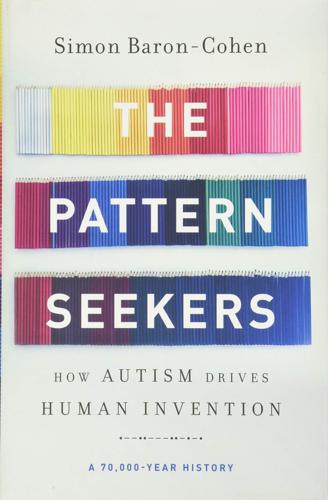
The Pattern Seekers: How Autism Drives Human Invention
by
Simon Baron-Cohen
Published 14 Aug 2020
Saad et al. (2019), “Are identical twins more similar in their decision making styles than their fraternal counterparts?,” Journal of Business Research, April. 28. On sibling recurrence rates of autism, see S. Ozonoff et al. (2011), “Recurrence risk for autism spectrum disorders: A baby siblings research consortium study,” Pediatrics 128(3), e488–e495; P. Szatmari et al. (2016), “Prospective longitudinal studies of infant siblings of children with autism: Lessons learned and future directions,” Journal of the American Academy of Child and Adolescent Psychiatry 55(3), 179–187. 29. On known genetic associations with autism, see Simons Foundation, “SFARI gene,” www.sfari.org/resource/sfari-gene/; V.
…
Wray (1998), “Protolanguage as a holistic system for social interaction,” Language and Communication 18, 47–67; P. Carruthers (2002), “The cognitive function of language,” Brain and Behavioural Sciences 25, 657–726. 14. See L. Selfe (1977), Nadia: A case of extraordinary drawing ability in an autistic child (Cambridge, MA: Academic Press); L. Selfe (2011), Nadia revisited: A longitudinal study of an autistic savant (London: Psychology Press); and S. Wiltshire (1989), Cities (London: J. M. Dent and Sons Ltd.). 15. The language system in the human brain also of course draws on many other neural processes, but here is not the place to digress further into the complexity of language itself.

Flow: The Psychology of Optimal Experience
by
Mihaly Csikszentmihalyi
Published 1 Jul 2008
That people consider courage the foremost reason for admiring others emerged from the data of my three-generation family study when Bert Lyons analyzed it for his Ph.D. dissertation (1988). Dissipative structures. For the meaning of this term in the natural sciences see Prigogine (1980). Transformational skills in adolescence. One longitudinal study conducted with the ESM (Freeman, Larson, & Csikszentmihalyi 1986) suggests that older teenagers have just as many negative experiences with family, with friends, and alone as younger teenagers do, but that they interpret them more leniently—that is, the conflicts that at 13 years of age seemed tragic at 17 are seen to be perfectly manageable.
…
New York: Cambridge University Press. Csikszentmihalyi, M., & Getzels, J. W. 1989. Creativity and problem finding. In F. H. Farley & R. W. Neperud, eds., The foundations of aesthetics (pp. 91–116). New York: Praeger. Csikszentmihalyi, M., Getzels, J. W., & Kahn, S. 1984. Talent and achievement: A longitudinal study of artists. A report to the Spencer Foundation and to the MacArthur Foundation. Chicago: University of Chicago. Csikszentmihalyi, M., & Graef, R. 1979. Flow and the quality of experience in everyday life. Unpublished manuscript, University of Chicago. ——. 1980. The experience of freedom in daily life.
…
Gergen & M. Gergen, eds., Historical social psychology (pp. 173–89). Hillsdale, N.J.: Erlbaum. Getzels, J. W., & Csikszentmihalyi, M. 1965. Creative thinking in art students: The process of discovery. HEW Cooperative Research Report S-080, University of Chicago. ——. 1976. The creative vision: A longitudinal study of problem finding in art. New York: Wiley Interscience. Gilpin, L. 1948. Temples in Yucatan. New York: Hastings House. Gladwin, T. 1970. East is a big bird: Navigation and logic on Puluat atoll. Cambridge: Harvard University Press. Glick, P. G. 1979. Children of divorced parents in demographic perspective.
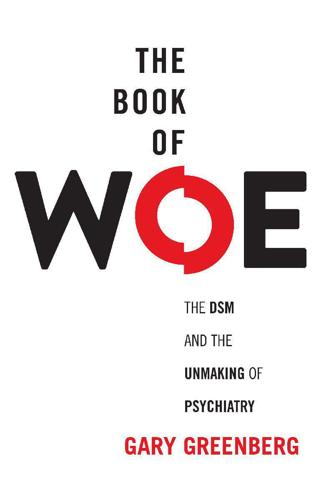
The Book of Woe: The DSM and the Unmaking of Psychiatry
by
Gary Greenberg
Published 1 May 2013
The Criterion B symptoms that remained after eliminating the ones that overlapped with ADHD—“grandiosity, decreased need for sleep, flight of ideas (i.e., a free-flowing stream of consciousness) and excessive involvement in pleasurable activities that have a high potential for painful consequences”—weren’t these really just a working definition of childhood at its most exuberant? And finally, they cited longitudinal studies, which showed that plenty of “bad ADHD” kids indeed went on to develop various mental disorders, but bipolar was not among them—a finding hard to reconcile with the presumption that BD is a lifelong illness. I’ll spare you the ensuing back-and-forth, which is as bitter and rancorous, and as impenetrable, as most academic controversies, and which continues more than fifteen years later.
…
Without changing the criteria, let alone introducing a new diagnosis, they could be assigned to this category. But there was a problem. “ODD had become tarnished,” says Shaffer, by its association with two other diagnoses: Conduct Disorder, the label given to childhood bullies and thugs, and Antisocial Personality Disorder, or what is often called sociopathy. Longitudinal studies did not back up the hunch that ODD belonged in the same neighborhood as these diagnoses; kids with ODD did not go on to become thieves, rapists, or hedge fund managers in greater numbers than other kids. But the bad reputation was impossible to shed, or so Shaffer and his colleagues thought.
…
Wing, Lorna. “Reflections on Opening Pandora’s Box.” Journal of Autism and Developmental Disorders 35, no. 2 (April 2005): 197–203. Woods, Scott W., Jean Addington, and Kristin S. Cadenhead. “Validity of the Prodromal Risk Syndrome for First Psychosis: Findings from the North American Prodrome Longitudinal Study.” Schizophrenia Bulletin 35, no. 5 (2009): 894–908. Wozniak, Janet, Joseph Biederman, Kathleen Kiely, J. Stuart Ablon, Stephen V. Faraone, Elizabeth Mundy, and Douglas Mennin. “Mania-Like Symptoms Suggestive of Childhood-Onset Bipolar Disorder in Clinically Referred Children.” Journal of the American Academy of Child & Adolescent Psychiatry 34, no. 7 (July 1995): 867–76.
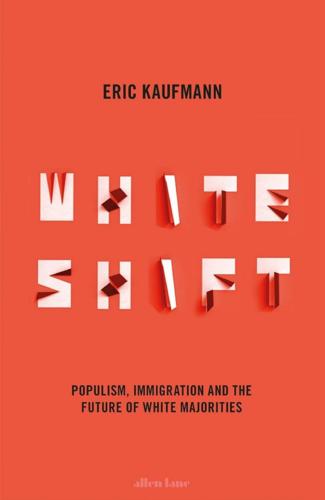
Whiteshift: Populism, Immigration and the Future of White Majorities
by
Eric Kaufmann
Published 24 Oct 2018
Any snapshot of variation in diversity and trust across places at one point in time can’t rule out unmeasured factors. However, a number of longitudinal studies have now examined what happens when places become more diverse. This offers a rigorous test of the diversity–solidarity hypothesis. By focusing on what happens to people over time, the researcher can screen out the many confounding influences that could be associated with both differences of local diversity and individual trust at any one time point. In Denmark, one longitudinal study found that a shift from 0 to 30 per cent minority in an area between 1980 and 2009, the maximum recorded, corresponds to a .23 loss of trust on a scale running from 1 – ‘people can be trusted’ – to 0 – ‘you can’t be too careful’.60 In Britain, two social researchers, James Laurence and Lee Bentley, using the BHPS, the precursor to Understanding Society, tracked over 4,000 individuals over an eighteen-year period from 1991 to 2009.
…
B. Ong, ‘Tipping points? Ethnic composition change in Dutch big city neighbourhoods’, Urban Studies 54:4 (2017), 1016–37. 20. ONS LS, London, 2011: Office of National Statistics. The permission of the Office of National Statistics to use the Longitudinal Study is gratefully acknowledged, as is the help provided by staff of the Centre for Longitudinal Study Information & User Support (CeLSIUS). CeLSIUS is supported by the ESRC Census of Population Programme (Award Ref: RES-348-25-0004). The author alone is responsible for the interpretation of the data. Census output is Crown copyright and is reproduced with the permission of the Controller of HMSO and the Queen’s Printer for Scotland. 21.
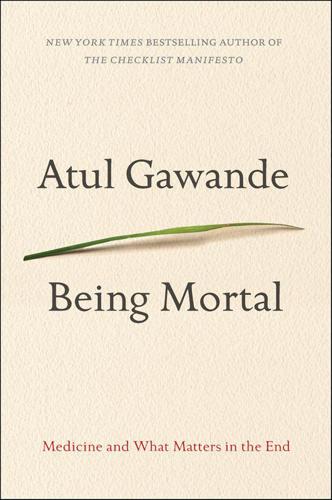
Being Mortal: Medicine and What Matters in the End
by
Atul Gawande
Published 6 Oct 2014
Warren et al., “Tooth Loss in the Very Old: 13-15-Year Incidence among Elderly Iowans,” Community Dentistry and Oral Epidemiology 30 (2002): 29–37. Under a microscope: A. Hak et al., “Progression of Aortic Calcification Is Associated with Metacarpal Bone Loss during Menopause: A Population-Based Longitudinal Study,” Arteriosclerosis, Thrombosis, and Vascular Biology 20 (2000): 1926–31. Research has found that loss of bone density: H. Yoon et al., “Calcium Begets Calcium: Progression of Coronary Artery Calcification in Asymptomatic Subjects,” Radiology 224 (2002): 236–41; Hak et al., “Progression of Aortic Calcification.”
…
Dekaban, “Changes in Brain Weights During the Span of Human Life: Relation of Brain Weights to Body Heights and Body Weights,” Annals of Neurology 4 (1978): 355; R. Peters, “Ageing and the Brain,” Postgraduate Medical Journal 82 (2006): 84–85; G. I. M. Craik and E. Bialystok, “Cognition Through the Lifespan: Mechanisms of Change,” Trends in Cognitive Sciences 10 (2006): 132; R. S. N. Liu et al., “A Longitudinal Study of Brain Morphometrics Using Quantitative Magentic Resonance Imaging and Difference Image Analysis,” NeuroImage 20 (2003): 26; T. A. Salthouse, “Aging and Measures of Processing Speed,” Biological Psychology 54 (2000): 37; D. A. Evans et al., “Prevalence of Alzheimer’s Disease in a Community Population of Older Persons,” JAMA 262 (1989): 2251.
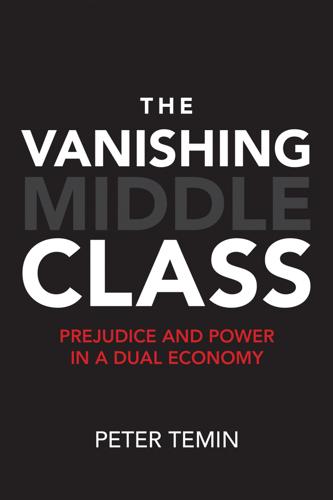
The Vanishing Middle Class: Prejudice and Power in a Dual Economy
by
Peter Temin
Published 17 Mar 2017
Connecticut may be about to follow New Jersey as courts try to adjust school spending to student needs (Harris 2016; Zernike 2016c). 25. Barnett et al. 2013. 26. Editorial Board 2016. 27. Delpit 2012. 28. Kirp 2013. 29. Goleman 1995, 2006; Harris 2016. 30. Schorr 1989, 191. 31. Consortium for Longitudinal Studies 1983; Garces, Thomas, and Currie 2002; Currie and Neidell 2007; Ludwig and Miller 2007; Heckman, Pinto, and Salvelyev 2013. 32. Currie and Thomas 2000. 33. Bush 2007; Head Start 2015. 34. Macur 2016; Dasgupta 2007, 31. 35. Reardon 2012; Porter 2015. 36. Abascal and Baldassarri 2015. 37.
…
New York Times, November 29. Confessore, Nicholas. 2016. “For Whites Sensing Decline, Trump Unleashes Words of Resistance.” New York Times, July 13. Congressional Budget Office. 2014. “The Distribution of Household Income and Federal Taxes, 2011.” Washington, DC, November. Consortium for Longitudinal Studies. 1983. As the Twig is Bent ... Lasting Effects of Preschool Programs. Hillsdale, NJ: Lawrence Erlbaum Associates. Consumer Financial Protection Bureau. 2015. “Student Loan Servicing.” September. http://files.consumerfinance.gov/f/201509_cfpb_student-loan-servicing-report.pdf. Accessed September 22, 2016.
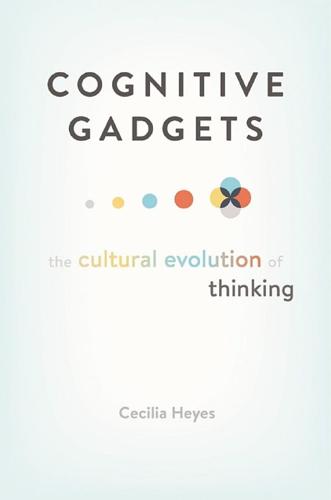
Cognitive Gadgets: The Cultural Evolution of Thinking
by
Cecilia Heyes
Published 15 Apr 2018
Although it is not clear why this transcript-based evidence has been largely ignored by both parties to the debate on the evolution of language, two recent developments may lend it greater prominence. The first is a trend towards observational and experimental studies demonstrating that negative input is not merely available but has a significant impact on language learning. For example, in a longitudinal study of mothers and their children, Taumoepeau (2016) found evidence that a mother’s spontaneous tendency to “expand” her child’s utterances—to repeat the meaning while supplying missing syntactic information—contributed to vocabulary learning. Leading the second development, Dabrowska (2012) has found that native English speakers with less than eleven years of formal education, and those with at least seventeen years of formal education, do not have the same grammatical knowledge.
…
Nature Neuroscience, 10, 1095–1102. Onishi, K. H., and Baillargeon, R. (2005). Do 15-month-old infants understand false beliefs? Science, 308(5719), 255–258. Oostenbroek, J., Suddendorf, T., Nielsen, M., Redshaw, J., Kennedy-Costantini, S., Davis, J., … and Slaughter, V. (2016). Comprehensive longitudinal study challenges the existence of neonatal imitation in humans. Current Biology, 26(10), 1334–1338. Osada, T. (1992). A Reference Grammar of Mundari. Institute for the Study of Languages and Cultures of Asia and Africa, Tokyo University of Foreign Studies. O’Toole, R., and Dubin, R. (1968). Baby feeding and body sway: An experiment in George Herbert Mead’s “Taking the role of the other.”

The Estrogen Fix: The Breakthrough Guide to Being Healthy, Energized, and Hormonally Balanced
by
Mache Seibel
Published 18 Sep 2017
PM: It’s absolutely worthwhile to talk to one’s doctor about feelings of sadness and anxiety. It’s important to know that there’s been a shift in our understanding of menopausal transition as a time when women are at risk for mental health issues even in the absence of any prior history of having these issues. For example, there are now multiple longitudinal studies that follow women for years as they transition from the premenopausal stage to the perimenopausal stage, and then a few studies on to the postmenopausal stage. The findings show that women, as they transition into menopause, are at an increased risk for both increases in depressive symptoms that are still within the normal range, but higher than what they had when premenopausal, and they are also at higher risk for clinical depression.
…
Greene et al., “Comparison between Regional Cerebral Blood Flow in Hypoestrogenic Women and Patients with Alzheimer’s Disease—A Descriptive Study,” Neurobiology of Aging 10, no. 4 (1998): S180. 24Ibid. 25R. Peters, “Ageing and the Brain,” Postgraduate Medical Journal 82, no. 964 (February 2006): 84–88. 26R. I. Scahill et al., “A Longitudinal Study of Brain Volume Changes in Normal Aging Using Serial Registered Magnetic Resonance Imaging,” Archives of Neurology 60, no. 7 (July 2003): 989–94. 27J. Compton, T. van Amelsvoort, and D. Murphy, “HRT and Its Effect on Normal Ageing of the Brain and Dementia,” British Journal of Clinical Pharmacology 52, no. 6 (December 2001): 647–53. 28D.
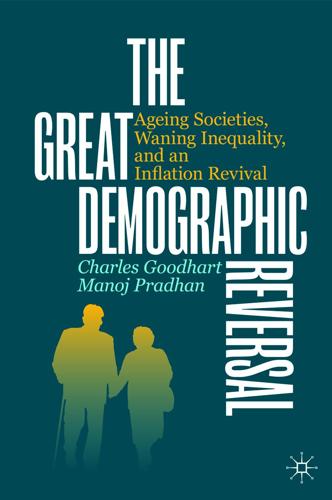
The Great Demographic Reversal: Ageing Societies, Waning Inequality, and an Inflation Revival
by
Charles Goodhart
and
Manoj Pradhan
Published 8 Aug 2020
Charles Goodhart Manoj Pradhan London, UK Abbreviations ACE Allowance for Corporate Equity ADL Activities of Daily Life AE Advanced Economies AEA American Economic Association AFD Alternative for Germany AGM Annual General Meeting AI Artificial Intelligence AIG American International Group BEPS Base Erosion and Profit Shifting BIS Bank of International Settlements BLS Bureau of Labour Statistics BoA Bank of America BoJ Bank of Japan CAR Capital Adequacy Ratio CBI Central Bank Independence CBO Congressional Budget Office CEO Chief Executive Officer CFAS Cognitive Function and Ageing Study CPI Consumer Price Index CSI Cyclically Sensitive Inflation DBCFT Destination-Based Cash Flow Taxation ECB European Central Bank ELB Effective Lower Bound ELSA English Longitudinal Study of Ageing EME Emerging Market Economies EQ Emotional Quotient FDI Foreign Direct Investment FRB Federal Reserve Board FRED Federal Reserve Economic Database FT Financial Times FTSE Financial Times Stock Exchange FX Forex G10 Group of 10 GDP Gross Domestic Product GFC Great Financial Crisis GFCF Gross Fixed Capital Formation GGM General Gaidar Model HH Household HIC High-Income Countries IBC Indian Bankruptcy Code ICE Intercontinental Exchange IMF International Monetary Fund LHS Left Hand Side LMIC Low- and Middle-Income Countries LTI Loan to Income LTIP Long-Term Incentive Plan LTV Loan to Value MAC Migration Advisory Committee METI [Japan] Ministry of Economy, Trade and Industry MFN Most Favoured Nation MITI [Japan] Ministry of International Trade and Industry MMSE Mini-Mental State Examination NAIRU Non-Accelerating Inflation Rate of Unemployment NBER National Bureau of Economic Research NFC Non-Financial Corporation NHS [British] National Health Service NICE Non-Inflationary with Continuous Expansion NLW National Living Wage NRU Natural Rate of Unemployment NUM [UK] National Union of Mineworkers OBR Office for Budget Responsibility OECD Organisation for Economic Cooperation and Development ONS Office for National Statistics O-FDI Outbound Foreign Direct Investment p.a.
…
Table 4.2, from Kingston et al. (2018b), gives definitions.Table 4.2Interval-of-need dependency categorisation CFAS II ELSA High dependency MMSE score 0–9 or needs help using the toilet, or transferring from chair or bed, or incontinent and needs help putting on shoes and socks, or needs help to feed (from proxy interview) or is often incontinent and needs help to dress (from proxy interview) Needs help using the toilet or chairfast or bedfast or has problems with continence and needs help putting on shoes and socks Medium dependency Needs help every, or most days, to put on shoes and socks, or cook a hot meal, or unable to dress without help (from proxy interview) Needs help putting on shoes and socks, or to prepare a hot meal Low dependency Needs help to wash all over or bathe, or cut toenails, or considerable difficulty with household tasks (from proxy interview) Needs help with bathing or showering, or difficulty pulling or pushing large objects, or difficulty doing work around house and garden Independent Not otherwise classified above and no missing items from other categories Not otherwise classified above and no missing items from other categories CFAS—Cognitive Function and Ageing Study; ELSA—English Longitudinal Study of Ageing; MMSE—Mini-Mental State Examination Source Kingston et al. (2018) While it may be possible to care for dementia sufferers at home for those with medium dependency, or less, it would be difficult to do so for high dependency. The numbers, again from Kingston et al. (op. cit., Table 4.2), are projected to be as follows in 2035 for the UK, including percentage change from 2015 (Table 4.3).Table 4.3Dependency in UK expected in 2035, and change from 2015 (000s) Total population Dependency %Δ Low %Δ Medium %Δ High %Δ 65–75 6908 +31 967 −15 98 −49 241 −15 75–84 2778 +51 1400 +29 171 +5.7 378 +42 85+ 2815 +114 1537 +148 293 +73 446 +92 The number with high dependency is projected to go up from 783 to 1065, an increase of 36%.

The Authoritarians
by
Robert Altemeyer
Published 2 Jan 2007
These attempts at influence can be easily dismissed by the well-inoculated high RWA student. It probably comes more from the late night bull-sessions, where you have to defend your ideas, not just silently reject the prof’s, and other activities that take place in the dorms, I’ll bet. Three longitudinal studies. What happens after graduation from university? Over the years I have collected RWA scale scores from three different groups of Manitoba alumni. One group answered 12 years after they had first completed the scale as introductory psychology students; the second set responded 18 years after they were freshmen; and the third had to wait 27 years to repeat the thrill.
…
But you do seem to spend less time talking with your friends about kids and careers than you used to, and more time talking about medical procedures, good doctors, and prescription drugs. 70 Notes [1] Support for genetic origins of things like right-wing authoritarianism increased recently when Jack and Jeanne Block of the University of California at Berkeley reported some results of a longitudinal study they ran. They found that females who became liberals as adults had shown some distinctive characteristics while in nursery school, compared with little girls who grew up to become conservatives. The future liberals had been talkative and dominating, expressed negative feelings openly, teased other children rather than got teased, were verbally fluent, sought to be independent, were self-assertive, attempted to transfer blame onto others, were aggressive and set high standards for themselves.

SuperBetter: The Power of Living Gamefully
by
Jane McGonigal
Published 14 Sep 2015
Barbara Fredrickson, director of the Positive Emotions and Psychophysiology Lab at the University of North Carolina. Dr. Fredrickson was investigating the underlying body mechanisms that account for the association between positive emotion and physical health. For decades, researchers have known that experiencing more positive emotions in everyday life is correlated to better physical health. Longitudinal studies of hundreds of thousands of people have documented that experiencing feelings like curiosity, hope, laughter, and wonder seems to make people more resilient to illness and injury. In fact, people who experience positive emotions on a more frequent basis are not only happier; they also live ten years longer.
…
Chapter 4: You Can Make the Leap from Games to Gameful 1. Rune Aune Mentzoni et al., “Problematic Video Game Use: Estimated Prevalence and Associations with Mental and Physical Health,” Cyberpsychology, Behavior, and Social Networking 14, no. 10 (2011): 591–96; Douglas A. Gentile et al., “Pathological Video Game Use Among Youths: A Two-Year Longitudinal Study,” Pediatrics 127, no. 2 (2011): e319–e329; and Douglas Gentile, “Pathological Video Game Use Among Youth Ages 8 to 18: A National Study,” Psychological Science 20, no. 5 (2009): 594–602. 2. Lily Shui-Lien Chen, Hill Hung-Jen Tu, and Edward Shih-Tse Wang, “Personality Traits and Life Satisfaction Among Online Game Players,” Cyberpsychology and Behavior 11, no. 2 (2008): 145–49; Patricia E.
…
: Correlates of and Variability in Responding Enthusiastically, Ph.D. diss., University of Rochester, 2012. 3. Alex M. Wood, Jeffrey J. Froh, and Adam W. A. Geraghty, “Gratitude and Well-Being: A Review and Theoretical Integration,” Clinical Psychology Review 30, no. 7 (2010): 890–905; Alex M. Wood et al., “The Role of Gratitude in the Development of Social Support, Stress, and Depression: Two Longitudinal Studies,” Journal of Research in Personality 42, no. 4 (2008): 854–71; and Robert A. Emmons and Anjali Mishra, “Why Gratitude Enhances Well-Being: What We Know, What We Need to Know,” in Kennon M. Sheldon and Todd B. Kashdan, eds., Designing Positive Psychology: Taking Stock and Moving Forward (New York: Oxford University Press, 2011). 4.
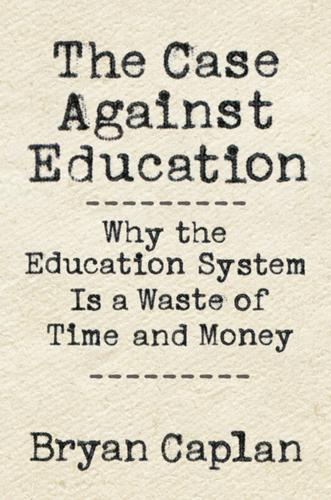
The Case Against Education: Why the Education System Is a Waste of Time and Money
by
Bryan Caplan
Published 16 Jan 2018
“Human Mate Selection: Opposites Are Sometimes Said to Attract, but in Fact We Are Likely to Marry Someone Who Is Similar to Us in Almost Every Variable.” American Scientist 73 (1): 47–51. Callahan, Clara, Mohammadreza Hojat, Jon Veloski, James Erdmann, and Joseph Gonnella. 2010. “The Predictive Validity of Three Versions of the MCAT in Relation to Performance in Medical School, Residency, and Licensing Examinations: A Longitudinal Study of 36 Classes of Jefferson Medical College.” Academic Medicine 85 (6): 980–87. Cameron, Stephen, and James Heckman. 1999. “Can Tuition Policy Combat Rising Inequality?” In Financing College Tuition: Government Policies and Educational Priorities, edited by Marvin Kosters, 76–124. Washington, DC: AEI.
…
doi=10.1.1.147.6141&rep=rep1&type=pdf. Groves, Melissa. 2005. “How Important Is Your Personality? Labor Market Returns to Personality for Women in the US and UK.” Journal of Economic Psychology 26 (6): 827–41. Gruber-Baldini, Ann, K. Warner, and Sherry Willis. 1995. “Similarity in Married Couples: A Longitudinal Study of Mental Abilities and Rigidity-Flexibility.” Journal of Personality and Social Psychology 69 (1): 191–203. Gyourko, Joseph, and Joseph Tracy. 1988. “An Analysis of Public and Private Sector Wages Allowing for Endogenous Choices of Both Government and Union Status.” Journal of Labor Economics 6 (2): 229–53.
…
Journal of Labor Economics 24 (4): 787–830. Lehman, Darrin, Richard Lempert, and Richard Nisbett. 1988. “The Effects of Graduate Training on Reasoning: Formal Discipline and Thinking about Everyday-Life Events.” American Psychologist 43 (6): 431–42. Lehman, Darrin, and Richard Nisbett. 1990. “A Longitudinal Study of the Effects of Undergraduate Training on Reasoning.” Developmental Psychology 26 (6): 952–60. Leigh, Paul. 1983. “Direct and Indirect Effects of Education on Health.” Social Science and Medicine 17 (4): 227–34. Leonhardt, David. 2011. “Even for Cashiers, College Pays Off.” New York Times.
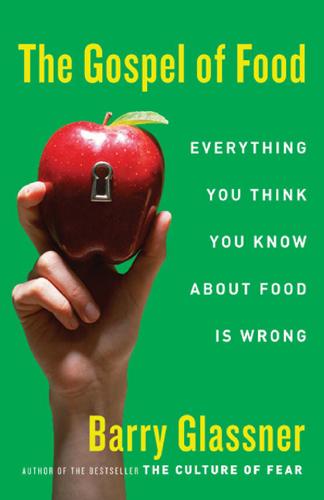
The Gospel of Food: Everything You Think You Know About Food Is Wrong
by
Barry Glassner
Published 15 Feb 2007
Wilkinson, eds., The Society and Population Health Reader (New York: New Press, 1999). See also Edmond Shenassa, “Society, Physical Health, and Modern Epidemiology,” Epidemiology 12 (2001): 467–70. For additional evidence, see Paula M. Lantz, John W. Lynch, et al., “Socioeconomic Disparities in Health Change in a Longitudinal Study of U.S. Adults,” Social Science and Medicine 53 (2001): 29–40; Ana Diez Roux, “Neighborhood of Residence and Incidence of Coronary Heart Disease,” New England Journal of Medicine 345 (2001): 99–106; Redford Williams, John Barefoot, and Neil Schneiderman, “Psychosocial Risk Factors for Cardiovascular Disease,” Journal of the American Medical Association 290 (2003): 2190–92. 50.
…
Reto,“Psychological Aspects of Delivering Nursing Care to the Geriatric Patient,” Critical Care Nursing Quarterly 26 (2003): 139–50; Deborah Carr, “Obesity and Perceived Discrimination in the United States,” paper presented at the meetings of the American Sociological Association, 2004; Stephanie Armour, “Your Appearance, Good or Bad, Can Affect Size of Your Paycheck,” USA Today, July 20, 2005. On the relative importance of discrimination and related factors as compared with “health risk behaviors” such as overweight and obesity, see Paula M. Lantz, John W. Notes 263 Lynch, et al., “Socioeconomic Disparities in Health Change in a Longitudinal Study of US Adults,” Social Science and Medicine 53 (2001): 29–40; Paula M. Lantz, James S. House, et al., “Socioeconomic Factors, Health Behaviors, and Mortality,” Journal of the American Medical Association 279 (1998): 1703–8; James S. Jackson, David R. Williams, and Myriam Torres, “Discrimination, Health and Mental Health: The Social Stress Process,” chap. 8 in Socioeconomic Conditions, Stress and Mental Disorders, published online by the Mental Health Statistics Improvement Program, 2003; Emilie Agardh, Anders Ahlbom, et al., “Explanations of Socioeconomic Differences in Excess Risk of Type 2 Diabetes in Swedish Men and Women,” Diabetes Care 27 (2004): 716–21. 55.

The Data Revolution: Big Data, Open Data, Data Infrastructures and Their Consequences
by
Rob Kitchin
Published 25 Aug 2014
The interlinking of data in Obama’s campaign created what Crampton et al. (2012) term an ‘information amplifier effect’, wherein the sum of data is more than the parts. Velocity A fundamental difference between small and big data is the dynamic nature of data generation. Small data usually consist of studies that are freeze-framed at a particular time and space. Even in longitudinal studies, the data are captured at discrete times (e.g., every few months or years). For example, censuses are generally conducted every five or ten years. In contrast, big data are generated on a much more continuous basis, in many cases in real-time or near to real-time. Rather than a sporadic trickle of data, laboriously harvested or processed, data are flowing at speed.
…
Index A/B testing 112 abduction 133, 137, 138–139, 148 accountability 34, 44, 49, 55, 63, 66, 113, 116, 165, 171, 180 address e-mail 42 IP 8, 167, 171 place 8, 32, 42, 45, 52, 93, 171 Web 105 administration 17, 30, 34, 40, 42, 56, 64, 67, 87, 89, 114–115, 116, 124, 174, 180, 182 aggregation 8, 14, 101, 140, 169, 171 algorithm 5, 9, 21, 45, 76, 77, 83, 85, 89, 101, 102, 103, 106, 109, 111, 112, 118, 119, 122, 125, 127, 130, 131, 134, 136, 142, 146, 154, 160, 172, 177, 179, 181, 187 Amazon 72, 96, 131, 134 Anderson, C. 130, 135 Andrejevic, M. 133, 167, 178 animation 106, 107 anonymity 57, 63, 79, 90, 92, 116, 167, 170, 171, 172, 178 apophenia 158, 159 Application Programming Interfaces (APIs) 57, 95, 152, 154 apps 34, 59, 62, 64, 65, 78, 86, 89, 90, 95, 97, 125, 151, 170, 174, 177 archive 21, 22, 24, 25, 29–41, 48, 68, 95, 151, 153, 185 archiving 23, 29–31, 64, 65, 141 artificial intelligence 101, 103 Acxiom 43, 44 astronomy 34, 41, 72, 97 ATM 92, 116 audio 74, 77, 83 automatic meter reading (AMR) 89 automatic number plate recognition (ANPR) 85, 89 automation 32, 51, 83, 85, 87, 89–90, 98, 99, 102, 103, 118, 127, 136, 141, 146, 180 Ayasdi 132, 134 backup 29, 31, 40, 64, 163 barcode 74, 85, 92, Bates, J. 56, 61, 62, 182 Batty, M. 90, 111, 112, 140 Berry, D. 134, 141 bias 13, 14, 19, 28, 45, 101, 134–136, 153, 154, 155, 160 Big Brother 126, 180 big data xv, xvi, xvii, 2, 6, 13, 16, 20, 21, 27–29, 42, 46, 67–183, 186, 187, 188, 190, 191, 192 analysis 100–112 characteristics 27–29, 67–79 enablers 80–87 epistemology 128–148 ethical issues 165–183 etymology 67 organisational issues 160–163 rationale 113–127 sources 87–99 technical issues 149–160 biological sciences 128–129, 137 biometric data 8, 84, 115 DNA 8, 71, 84 face 85, 88, 105 fingerprints 8, 9, 84, 87, 88, 115 gait 85, 88 iris 8, 84, 88 bit-rot 20 blog 6, 95, 170 Bonferroni principle 159 born digital 32, 46, 141 Bowker, G. 2, 19, 20, 22, 24 Borgman, C. 2, 7, 10, 20, 30, 37, 40, 41 boyd, D. 68, 75, 151, 152, 156, 158, 160, 182 Brooks, D. 130, 145 business 1, 16, 42, 45, 56, 61, 62, 67, 79, 110, 113–127, 130, 137, 149, 152, 161, 166, 172, 173, 187 calculative practices 115–116 Campbell’s Law 63, 127 camera 6, 81, 83, 87, 88, 89, 90, 107, 116, 124, 167, 178, 180 capitalism 15, 16, 21, 59, 61, 62, 86, 95, 114, 119–123, 126, 136, 161, 184, 186 capta 2 categorization 6, 8, 12, 19, 20, 102, 106, 176 causation 130, 132, 135, 147 CCTV 87, 88, 180 census 17, 18, 19, 22, 24, 27, 30, 43, 54, 68, 74, 75, 76, 77, 87, 102, 115, 157, 176 Centro De Operações Prefeitura Do Rio 124–125, 182 CERN 72, 82 citizen science 97–99, 155 citizens xvi, 45, 57, 58, 61, 63, 71, 88, 114, 115, 116, 126, 127, 165, 166, 167, 174, 176, 179, 187 citizenship 55, 115, 170, 174 classification 6, 10, 11, 23, 28, 104, 105, 157, 176 clickstream 43, 92, 94, 120, 122, 154, 176 clustering 103, 104, 105, 106, 110, 122 Codd, E. 31 competitiveness xvi, 16, 114, computation 2, 4, 5, 6, 29, 32, 68, 80, 81–82, 83, 84, 86, 98, 100, 101, 102, 110, 129, 136, 139–147, 181 computational social science xiv, 139–147, 152, 186 computing cloud xv, 81, 86 distributed xv, 37, 78, 81, 83, 98 mobile xv, 44, 78, 80, 81, 83, 85, 139 pervasive 81, 83–84, 98, 124 ubiquitous 80, 81, 83–84, 98, 100, 124, 126 confidence level 14, 37, 133, 153, 160 confidentiality 8, 169, 175 control creep 126, 166, 178–179 cookies 92, 119, 171 copyright 16, 30, 40, 49, 51, 54, 96 correlation 105, 110, 130, 131, 132, 135, 145, 147, 157, 159 cost xv, 6, 11, 16, 27, 31, 32, 37, 38, 39, 40, 44, 52, 54, 57, 58, 59, 61, 66, 80, 81, 83, 85, 93, 96, 100, 116, 117, 118, 120, 127, 150 Crawford, K. 68, 75, 135, 151, 152, 155, 156, 158, 160, 182 credit cards 8, 13, 42, 44, 45, 85, 92, 167, 171, 176 risk 42, 63, 75, 120, 176, 177 crime 55, 115, 116, 123, 175, 179 crowdsourcing 37, 73, 93, 96–97, 155, 160 Cukier, K. 68, 71, 72, 91, 114, 128, 153, 154, 161, 174 customer relationship management (CRM) 42, 99, 117–118, 120, 122, 176 cyber-infrastructure 33, 34, 35, 41, 186 dashboard 106, 107, 108 data accuracy 12, 14, 110, 153, 154, 171 administrative 84–85, 89, 115, 116, 125, 150, 178 aggregators see data brokers amplification 8, 76, 99, 102, 167 analogue 1, 3, 32, 83, 88, 140, 141 analytics 42, 43, 63, 73, 80, 100–112, 116, 118, 119, 120, 124, 125, 129, 132, 134, 137, 139, 140, 145, 146, 149, 151, 159, 160, 161, 176, 179, 186, 191 archive see archive assemblage xvi, xvii, 2, 17, 22, 24–26, 66, 80, 83, 99, 117, 135, 139, 183, 184–192 attribute 4, 8–9, 31, 115, 150 auditing 33, 40, 64, 163 authenticity 12, 153 automated see automation bias see bias big see big data binary 1, 4, 32, 69 biometric see biometric data body 177–178, 187 boosterism xvi, 67, 127, 187, 192 brokers 42–45, 46, 57, 74, 75, 167, 183, 186, 187, 188, 191 calibration 13, 20 catalogue 32, 33, 35 clean 12, 40, 64, 86, 100, 101, 102, 152, 153, 154, 156 clearing house 33 commodity xvi, 4, 10, 12, 15, 16, 41, 42–45, 56, 161 commons 16, 42 consolidators see data brokers cooked 20, 21 corruption 19, 30 curation 9, 29, 30, 34, 36, 57, 141 definition 1, 2–4 deluge xv, 28, 73, 79, 100, 112, 130, 147, 149–151, 157, 168, 175 derived 1, 2, 3, 6–7, 8, 31, 32, 37, 42, 43, 44, 45, 62, 86, 178 deserts xvi, 28, 80, 147, 149–151, 161 determinism 45, 135 digital 1, 15, 31, 32, 67, 69, 71, 77, 82, 85, 86, 90, 137 directories 33, 35 dirty 29, 154, 163 dive 64–65, 188 documentation 20, 30, 31, 40, 64, 163 dredging 135, 147, 158, 159 dump 64, 150, 163 dynamic see dynamic data enrichment 102 error 13, 14, 44, 45, 101, 110, 153, 154, 156, 169, 175, 180 etymology 2–3, 67 exhaust 6–7, 29, 80, 90 fidelity 34, 40, 55, 79, 152–156 fishing see data dredging formats xvi, 3, 5, 6, 9, 22, 25, 30, 33, 34, 40, 51, 52, 54, 65, 77, 102, 153, 156, 157, 174 framing 12–26, 133–136, 185–188 gamed 154 holding 33, 35, 64 infrastructure xv, xvi, xvii, 2, 21–24, 25, 27–47, 52, 64, 102, 112, 113, 128, 129, 136, 140, 143, 147, 148, 149, 150, 156, 160, 161, 162, 163, 166, 184, 185, 186, 188, 189, 190, 191, 192 integration 42, 149, 156–157 integrity 12, 30, 33, 34, 37, 40, 51, 154, 157, 171 interaction 43, 72, 75, 85, 92–93, 94, 111, 167 interoperability 9, 23, 24, 34, 40, 52, 64, 66, 156–157, 163, 184 interval 5, 110 licensing see licensing lineage 9, 152–156 linked see linked data lost 5, 30, 31, 39, 56, 150 markets xvi, 8, 15, 25, 42-45, 56, 59, 75, 167, 178 materiality see materiality meta see metadata mining 5, 77, 101, 103, 104–106, 109, 110, 112, 129, 132, 138, 159, 188 minimisation 45, 171, 178, 180 nominal 5, 110 ordinal 5, 110 open see open data ontology 12, 28, 54, 150 operational 3 ownership 16, 40, 96, 156, 166 preparation 40, 41, 54, 101–102 philosophy of 1, 2, 14, 17–21, 22, 25, 128–148, 185–188 policy 14, 23, 30, 33, 34, 37, 40, 48, 64, 160, 163, 170, 172, 173, 178 portals 24, 33, 34, 35 primary 3, 7–8, 9, 50, 90 preservation 30, 31, 34, 36, 39, 40, 64, 163 protection 15, 16, 17, 20, 23, 28, 40, 45, 62, 63, 64, 167, 168–174, 175, 178, 188 protocols 23, 25, 30, 34, 37 provenance 9, 30, 40, 79, 153, 156, 179 qualitative 4–5, 6, 14, 146, 191 quantitative 4–5, 14, 109, 127, 136, 144, 145, 191 quality 12, 13, 14, 34, 37, 40, 45, 52, 55, 57, 58, 64, 79, 102, 149, 151, 152–156, 157, 158 raw 1, 2, 6, 9, 20, 86, 185 ratio 5, 110 real-time 65, 68, 71, 73, 76, 88, 89, 91, 99, 102, 106, 107, 116, 118, 121, 124, 125, 139, 151, 181 reduction 5, 101–102 representative 4, 8, 13, 19, 21, 28 relational 3, 8, 28, 44, 68, 74–76, 79, 84, 85, 87, 88, 99, 100, 119, 140, 156, 166, 167, 184 reliability 12, 13–14, 52, 135, 155 resellers see data brokers resolution 7, 26, 27, 28, 68, 72, 73–74, 79, 84, 85, 89, 92, 133–134, 139, 140, 150, 180 reuse 7, 27, 29, 30, 31, 32, 39, 40, 41, 42, 46, 48, 49–50, 52, 56, 59, 61, 64, 102, 113, 163 scaled xvi, xvii 32, 100, 101, 112, 138, 149, 150, 163, 186 scarcity xv, xvi, 28, 80, 149–151, 161 science xvi, 100–112, 130, 137–139, 148, 151, 158, 160–163, 164, 191 secondary 3, 7–8 security see security selection 101, 176 semi-structured 4, 5–6, 77, 100, 105 sensitive 15, 16, 45, 63, 64, 137, 151, 167, 168, 171, 173, 174 shadow 166–168, 177, 179, 180 sharing 9, 11, 20, 21, 23, 24, 27, 29–41, 48–66, 80, 82, 95, 113, 141, 151, 174, 186 small see small data social construction 19–24 spatial 17, 52, 63, 68, 73, 75, 84–85, 88–89 standards xvi, 9, 14, 19, 22, 23, 24, 25, 31, 33, 34, 38, 40, 52, 53, 64, 102, 153, 156, 157 storage see storage stranded 156 structures 4, 5–6, 12, 21, 23, 30, 31, 40, 51, 68, 77, 86, 103, 106, 156 structured 4, 5–6, 11, 32, 52, 68, 71, 75, 77, 79, 86, 88, 105, 112, 163 tertiary 7–8, 9, 27, 74 time-series 68, 102, 106, 110 transient 6–7, 72, 150 transactional 42, 43, 71, 72, 74, 75, 85, 92, 93–94, 120, 122, 131, 167, 175, 176, 177 uncertainty see uncertainty unstructured 4, 5–6, 32, 52, 68, 71, 75, 77, 86, 100, 105, 112, 140, 153, 157 validity 12, 40, 72, 102, 135, 138, 154, 156, 158 variety 26, 28, 43, 44, 46, 68, 77, 79, 86, 139, 140, 166, 184 velocity 26, 28, 29, 68, 76–77, 78, 79, 86, 88, 102, 106, 112. 117, 140, 150, 153, 156, 184 veracity 13, 79, 102, 135, 152–156, 157, 163 volume 7, 26, 27, 28, 29, 32, 46, 67, 68, 69–72, 74, 76, 77, 78, 79, 86, 102, 106, 110, 125, 130, 135, 140, 141, 150, 156, 166, 184 volunteered 87, 93–98, 99, 155 databank 29, 34, 43 database NoSQL 6, 32, 77, 78, 86–87 relational 5, 6, 8, 32–33, 43, 74–75, 77, 78, 86, 100, 105 data-driven science 133, 137–139, 186 data-ism 130 datafication 181 dataveillance 15, 116, 126, 157, 166–168, 180, 181, 182, 184 decision tree 104, 111, 122, 159, deconstruction 24, 98, 126, 189–190 decontextualisation 22 deduction 132, 133, 134, 137, 138, 139, 148 deidentification 171, 172, 178 democracy 48, 55, 62, 63, 96, 117, 170 description 9, 101, 104, 109, 143, 147, 151, 190 designated community 30–31, 33, 46 digital devices 13, 25, 80, 81, 83, 84, 87, 90–91, 167, 174, 175 humanities xvi, 139–147, 152, 186 object identifier 8, 74 serendipity 134 discourse 15, 20, 55, 113–114, 117, 122, 127, 192 discursive regime 15, 20, 24, 56, 98, 113–114, 116, 123, 126, 127, 190 disruptive innovation xv, 68, 147, 184, 192 distributed computing xv, 37, 78, 81, 83, 98 sensors 124, 139, 160 storage 34, 37, 68, 78, 80, 81, 85–87, 97 division of labour 16 Dodge, M. 2, 21, 68, 73, 74, 76, 83, 84, 85, 89, 90, 92, 93, 96, 113, 115, 116, 124, 154, 155, 167, 177, 178, 179, 180, 189 driver’s licence 45, 87, 171 drone 88, Dublin Core 9 dynamic data xv, xvi, 76–77, 86, 106, 112 pricing 16, 120, 123, 177 eBureau 43, 44 ecological fallacy 14, 102, 135, 149, 158–160 Economist, The 58, 67, 69, 70, 72, 128 efficiency 16, 38, 55, 56, 59, 66, 77, 93, 102, 111, 114, 116, 118, 119, 174, 176 e-mail 71, 72–73, 82, 85, 90, 93, 116, 174, 190 empiricism 129, 130–137, 141, 186 empowerment 61, 62–63, 93, 115, 126, 165 encryption 171, 175 Enlightenment 114 Enterprise Resource Planning (ERP) 99, 117, 120 entity extraction 105 epistemology 3, 12, 19, 73, 79, 112, 128–148, 149, 185, 186 Epsilon 43 ethics 12, 14–15, 16, 19, 26, 30, 31, 40, 41, 64, 73, 99, 128, 144, 151, 163, 165–183, 186 ethnography 78, 189, 190, 191 European Union 31, 38, 45, 49, 58, 59, 70, 157, 168, 173, 178 everyware 83 exhaustive 13, 27, 28, 68, 72–73, 79, 83, 88, 100, 110, 118, 133–134, 140, 150, 153, 166, 184 explanation 101, 109, 132, 133, 134, 137, 151 extensionality 67, 78, 140, 184 experiment 2, 3, 6, 34, 75, 78, 118, 129, 131, 137, 146, 150, 160 Facebook 6, 28, 43, 71, 72, 77, 78, 85, 94, 119, 154, 170 facts 3, 4, 9, 10, 52, 140, 159 Fair Information Practice Principles 170–171, 172 false positive 159 Federal Trade Commission (FTC) 45, 173 flexibility 27, 28, 68, 77–78, 79, 86, 140, 157, 184 Flickr 95, 170 Flightradar 107 Floridi, L. 3, 4, 9, 10, 11, 73, 112, 130, 151 Foucault, M. 16, 113, 114, 189 Fourth paradigm 129–139 Franks, B. 6, 111, 154 freedom of information 48 freemium service 60 funding 15, 28, 29, 31, 34, 37, 38, 40, 41, 46, 48, 52, 54–55, 56, 57–58, 59, 60, 61, 65, 67, 75, 119, 143, 189 geographic information systems 147 genealogy 98, 127, 189–190 Gitelman, L. 2, 19, 20, 21, 22 Global Positioning System (GPS) 58, 59, 73, 85, 88, 90, 121, 154, 169 Google 32, 71, 73, 78, 86, 106, 109, 134, 170 governance 15, 21, 22, 23, 38, 40, 55, 63, 64, 66, 85, 87, 89, 117, 124, 126, 136, 168, 170, 178–182, 186, 187, 189 anticipatory 126, 166, 178–179 technocratic 126, 179–182 governmentality xvi, 15, 23, 25, 40, 87, 115, 127, 168, 185, 191 Gray, J. 129–130 Guardian, The 49 Gurstein, M. 52, 62, 63 hacking 45, 154, 174, 175 hackathon 64–65, 96, 97, 188, 191 Hadoop 87 hardware 32, 34, 40, 63, 78, 83, 84, 124, 143, 160 human resourcing 112, 160–163 hype cycle 67 hypothesis 129, 131, 132, 133, 137, 191 IBM 70, 123, 124, 143, 162, 182 identification 8, 44, 68, 73, 74, 77, 84–85, 87, 90, 92, 115, 169, 171, 172 ideology 4, 14, 25, 61, 113, 126, 128, 130, 134, 140, 144, 185, 190 immutable mobiles 22 independence 3, 19, 20, 24, 100 indexical 4, 8–9, 32, 44, 68, 73–74, 79, 81, 84–85, 88, 91, 98, 115, 150, 156, 167, 184 indicator 13, 62, 76, 102, 127 induction 133, 134, 137, 138, 148 information xvii, 1, 3, 4, 6, 9–12, 13, 23, 26, 31, 33, 42, 44, 45, 48, 53, 67, 70, 74, 75, 77, 92, 93, 94, 95, 96, 100, 101, 104, 105, 109, 110, 119, 125, 130, 138, 140, 151, 154, 158, 161, 168, 169, 171, 174, 175, 184, 192 amplification effect 76 freedom of 48 management 80, 100 overload xvi public sector 48 system 34, 65, 85, 117, 181 visualisation 109 information and communication technologies (ICTs) xvi, 37, 80, 83–84, 92, 93, 123, 124 Innocentive 96, 97 INSPIRE 157 instrumental rationality 181 internet 9, 32, 42, 49, 52, 53, 66, 70, 74, 80, 81, 82, 83, 86, 92, 94, 96, 116, 125, 167 of things xv, xvi, 71, 84, 92, 175 intellectual property rights xvi, 11, 12, 16, 25, 30, 31, 40, 41, 49, 50, 56, 62, 152, 166 Intelius 43, 44 intelligent transportation systems (ITS) 89, 124 interoperability 9, 23, 24, 34, 40, 52, 64, 66, 149, 156–157, 163, 184 interpellation 165, 180, 188 interviews 13, 15, 19, 78, 155, 190 Issenberg, S. 75, 76, 78, 119 jurisdiction 17, 25, 51, 56, 57, 74, 114, 116 Kafka 180 knowledge xvii, 1, 3, 9–12, 19, 20, 22, 25, 48, 53, 55, 58, 63, 67, 93, 96, 110, 111, 118, 128, 130, 134, 136, 138, 142, 159, 160, 161, 162, 187, 192 contextual 48, 64, 132, 136–137, 143, 144, 187 discovery techniques 77, 138 driven science 139 economy 16, 38, 49 production of 16, 20, 21, 24, 26, 37, 41, 112, 117, 134, 137, 144, 184, 185 pyramid 9–10, 12, situated 16, 20, 28, 135, 137, 189 Latour, B. 22, 133 Lauriault, T.P. 15, 16, 17, 23, 24, 30, 31, 33, 37, 38, 40, 153 law of telecosm 82 legal issues xvi, 1, 23, 25, 30, 31, 115, 165–179, 182, 183, 187, 188 levels of measurement 4, 5 libraries 31, 32, 52, 71, 141, 142 licensing 14, 25, 40, 42, 48, 49, 51, 53, 57, 73, 96, 151 LIDAR 88, 89, 139 linked data xvii, 52–54, 66, 156 longitudinal study 13, 76, 140, 149, 150, 160 Lyon, D. 44, 74, 87, 167, 178, 180 machine learning 5, 6, 101, 102–104, 106, 111, 136, 188 readable 6, 52, 54, 81, 84–85, 90, 92, 98 vision 106 management 62, 88, 117–119, 120, 121, 124, 125, 131, 162, 181 Manovich, L. 141, 146, 152, 155 Manyika, J. 6, 16, 70, 71, 72, 104, 116, 118, 119, 120, 121, 122, 161 map 5, 22, 24, 34, 48, 54, 56, 73, 85, 88, 93, 96, 106, 107, 109, 115, 143, 144, 147, 154, 155–156, 157, 190 MapReduce 86, 87 marginal cost 11, 32, 57, 58, 59, 66, 151 marketing 8, 44, 58, 73, 117, 119, 120–123, 131, 176 marketisation 56, 61–62, 182 materiality 4, 19, 21, 24, 25, 66, 183, 185, 186, 189, 190 Mattern, S. 137, 181 Mayer-Schonberger, V. 68, 71, 72, 91, 114, 153, 154, 174 measurement 1, 3, 5, 6, 10, 12, 13, 15, 19, 23, 69, 97, 98, 115, 128, 166 metadata xvi, 1, 3, 4, 6, 8–9, 13, 22, 24, 29, 30, 31, 33, 35, 40, 43, 50, 54, 64, 71, 72, 74, 78, 85, 91, 93, 102, 105, 153, 155, 156 methodology 145, 158, 185 middleware 34 military intelligence 71, 116, 175 Miller, H.J. xvi, 27, 100, 101, 103, 104, 138, 139, 159 Minelli, M. 101, 120, 137, 168, 170, 171, 172, 174, 176 mixed methods 147, 191 mobile apps 78 computing xv, 44, 78, 80, 81, 83, 85, 139 mapping 88 phones 76, 81, 83, 90, 93, 151, 168, 170, 175 storage 85 mode of production 16 model 7, 11, 12, 24, 32, 37, 44, 57, 72, 73, 101, 103, 105, 106, 109, 110–112, 119, 125, 129, 130, 131, 132, 133, 134, 137, 139, 140, 144, 145, 147, 158–159, 166, 181 agent-based model 111, business 30, 54, 57–60, 61, 95, 118, 119, 121 environmental 139, 166 meteorological 72 time-space 73 transportation 7 modernity 3 Moore’s Law 81, moral philosophy 14 Moretti, F. 141–142 museum 31, 32, 137 NASA 7 National Archives and Records Administration (NARA) 67 National Security Agency (NSA) 45, 116 natural language processing 104, 105 near-field communication 89, 91 neoliberalism 56, 61–62, 126, 182 neural networks 104, 105, 111 New Public Management 62, non-governmental organisations xvi, 43, 55, 56, 73, 117 non-excludable 11, 151 non-rivalrous 11, 57, 151 normality 100, 101 normative thinking 12, 15, 19, 66, 99, 127, 144, 182, 183, 187, 192 Obama, B. 53, 75–76, 78, 118–119 objectivity 2, 17, 19, 20, 62, 135, 146, 185 observant participation 191 oligopticon 133, 167, 180 ontology 3, 12, 17–21, 22, 28, 54, 79, 128, 138, 150, 156, 177, 178, 184, 185 open data xv, xvi, xvii, 2, 12, 16, 21, 25, 48–66, 97, 114, 124, 128, 129, 140, 149, 151, 163, 164, 167, 186, 187, 188, 190, 191, 192 critique of 61–66 economics of 57–60 rationale 54–56 Open Definition 50 OpenGovData 50, 51 Open Knowledge Foundation 49, 52, 55, 58, 189, 190 open science 48, 72, 98 source 48, 56, 60, 87, 96 OpenStreetMap 73, 93, 96, 154, 155–156 optimisation 101, 104, 110–112, 120, 121, 122, 123 Ordnance Survey 54, 57 Organization for Economic Cooperation and Development (OECD) 49, 50, 59 overlearning 158, 159 panoptic 133, 167, 180 paradigm 112, 128–129, 130, 138, 147, 148, 186 participant observation 190, 191 participation 48, 49, 55, 66, 82, 94, 95, 96, 97–98, 126, 155, 165, 180 passport 8, 45, 84, 87, 88, 115 patent 13, 16, 41, 51 pattern recognition 101, 104–106, 134, 135 personally identifiable information 171 philanthropy 32, 38, 58 philosophy of science 112, 128–148, 185–188 phishing 174, 175 phone hacking 45 photography 6, 43, 71, 72, 74, 77, 86, 87, 88, 93, 94, 95, 105, 115, 116, 141, 155, 170 policing 80, 88, 116, 124, 125, 179 political economy xvi, 15–16, 25, 42–45, 182, 185, 188, 191 Pollock, R. 49, 54, 56, 57 58, 59 positivism 129, 136–137, 140, 141, 144, 145, 147 post-positivism 140, 144, 147 positionality 135, 190 power/knowledge 16, 22 predictive modelling 4, 7, 12, 34, 44, 45, 76, 101, 103, 104, 110–112, 118, 119, 120, 125, 132, 140, 147, 168, 179 profiling 110–112, 175–178, 179, 180 prescription 101 pre-analytical 2, 3, 19, 20, 185 pre-analytics 101–102, 112 pre-factual 3, 4, 19, 185 PRISM 45, 116 privacy 15, 28, 30, 40, 45, 51, 57, 63, 64, 96, 117, 163, 165, 166, 168–174, 175, 178, 182, 187 privacy by design 45, 173, 174 probability 14, 110, 153, 158 productivity xvi, 16, 39, 55, 66, 92, 114, 118 profiling 12, 42–45, 74, 75, 110–112, 119, 166, 168, 175–178, 179, 180, 187 propriety rights 48, 49, 54, 57, 62 prosumption 93 public good 4, 12, 16, 42, 52, 56, 58, 79, 97 –private partnerships 56, 59 sector information (PSI) 12, 48, 54, 56, 59, 61, 62 quantified self 95 redlining 176, 182 reductionism 73, 136, 140, 142, 143, 145 regression 102, 104, 105, 110, 111, 122 regulation xvi, 15, 16, 23, 25, 40, 44, 46, 83, 85, 87, 89–90, 114, 115, 123, 124, 126, 168, 174, 178, 180, 181–182, 187, 192 research design 7, 13, 14, 77–78, 98, 137–138, 153, 158 Renaissance xvi, 129, 141 repository 29, 33, 34, 41 representativeness 13, 14, 19, 21 Resource Description Framework (RDF) 53, 54 remote sensing 73–74, 105 RFID 74, 85, 90, 91, 169 rhetorical 3, 4, 185 right to be forgotten 45, 172, 187 information (RTI) 48, 62 risk 16, 44, 58, 63, 118, 120, 123, 132, 158, 174, 176–177, 178, 179, 180 Rosenberg, D. 1, 3 Ruppert, E. 22, 112, 157, 163, 187 sampling 13, 14, 27, 28, 46, 68, 72, 73, 77, 78, 88, 100, 101, 102, 120, 126, 133, 138, 139, 146, 149–150, 152, 153, 154, 156, 159 scale of economy 37 scanners 6, 25, 29, 32, 83, 85, 88, 89, 90, 91, 92, 175, 177, 180 science xvi, 1, 2, 3, 19, 20, 29, 31, 34, 37, 46, 65, 67, 71, 72, 73, 78, 79, 97, 98, 100, 101, 103, 111, 112, 128–139, 140, 147, 148, 150, 158, 161, 165, 166, 181, 184, 186 scientific method 129, 130, 133, 134, 136, 137–138, 140, 147, 148, 186 security data 28, 33, 34, 40, 45, 46, 51, 57, 126, 157, 166, 169, 171, 173, 174–175, 182, 187 national 42, 71, 88, 116–117, 172, 176, 178, 179 private 99, 115, 118, 151 social 8, 32, 45, 87, 115, 171 segmentation 104, 105, 110, 119, 120, 121, 122, 176 semantic information 9, 10, 11, 105, 157 Web 49, 52, 53, 66 sensors xv, 6, 7, 19, 20, 24, 25, 28, 34, 71, 76, 83, 84, 91–92, 95, 124, 139, 150, 160 sentiment analysis 105, 106, 121, Siegel, E. 103, 110, 111, 114, 120, 132, 158, 176, 179 signal 9, 151, 159 Silver, N. 136, 151, 158 simulation 4, 32, 37, 101, 104, 110–112, 119, 129, 133, 137, 139, 140 skills 37, 48, 52, 53, 57, 63, 94, 97, 98, 112, 149, 160–163, 164 small data 21, 27–47, 68, 72, 75, 76, 77, 79, 100, 103, 110, 112, 146, 147, 148, 150, 156, 160, 166, 184, 186, 188, 191 smart cards 90 cities 91, 92, 99, 124–125, 181–182 devices 83 metering 89, 123, 174 phones 81, 82, 83, 84, 90, 94, 107, 121, 155, 170, 174 SmartSantander 91 social computing xvi determinism 144 media xv, 13, 42, 43, 76, 78, 90, 93, 94–95, 96, 105, 119, 121, 140, 150, 151, 152, 154, 155, 160, 167, 176, 180 physics 144 security number 8, 32, 45, 87, 115, 171 sorting 126, 166, 168, 175–178, 182 sociotechnical systems 21–24, 47, 66, 183, 185, 188 software 6, 20, 32, 34, 40, 48, 53, 54, 56, 63, 80, 83, 84, 86, 88, 96, 132, 143, 160, 161, 163, 166, 170, 172, 175, 177, 180, 189 Solove, D. 116, 120, 168, 169, 170, 172, 176, 178, 180 solutionism 181 sousveillance 95–96 spatial autocorrelation 146 data infrastructure 34, 35, 38 processes 136, 144 resolution 149 statistics 110 video 88 spatiality 17, 157 Star, S.L. 19, 20, 23, 24 stationarity 100 statistical agencies 8, 30, 34, 35, 115 geography 17, 74, 157 statistics 4, 8, 13, 14, 24, 48, 77, 100, 101, 102, 104, 105, 109–110, 111, 129, 132, 134, 135, 136, 140, 142, 143, 145, 147, 159 descriptive 4, 106, 109, 147 inferential 4, 110, 147 non-parametric 105, 110 parametric 105, 110 probablistic 110 radical 147 spatial 110 storage 31–32, 68, 72, 73, 78, 80, 85–87, 88, 100, 118, 161, 171 analogue 85, 86 digital 85–87 media 20, 86 store loyalty cards 42, 45, 165 Sunlight Foundation 49 supervised learning 103 Supply Chain Management (SCM) 74, 99, 117–118, 119, 120, 121 surveillance 15, 71, 80, 83, 87–90, 95, 115, 116, 117, 123, 124, 151, 165, 167, 168, 169, 180 survey 6, 17, 19, 22, 28, 42, 68, 75, 77, 87, 115, 120 sustainability 16, 33, 34, 57, 58, 59, 61, 64–66, 87, 114, 123–124, 126, 155 synchronicity 14, 95, 102 technological handshake 84, 153 lock-in 166, 179–182 temporality 17, 21, 27, 28, 32, 37, 68, 75, 111, 114, 157, 160, 186 terrorism 116, 165, 179 territory 16, 38, 74, 85, 167 Tesco 71, 120 Thrift, N. 83, 113, 133, 167, 176 TopCoder 96 trading funds 54–55, 56, 57 transparency 19, 38, 44, 45, 48–49, 55, 61, 62, 63, 113, 115, 117, 118, 121, 126, 165, 173, 178, 180 trust 8, 30, 33, 34, 40, 44, 55, 84, 117, 152–156, 163, 175 trusted digital repository 33–34 Twitter 6, 71, 78, 94, 106, 107, 133, 143, 144, 146, 152, 154, 155, 170 uncertainty 10, 13, 14, 100, 102, 110, 156, 158 uneven development 16 Uniform Resource Identifiers (URIs) 53, 54 United Nations Development Programme (UNDP) 49 universalism 20, 23, 133, 140, 144, 154, 190 unsupervised learning 103 utility 1, 28, 53, 54, 55, 61, 63, 64–66, 100, 101, 114, 115, 134, 147, 163, 185 venture capital 25, 59 video 6, 43, 71, 74, 77, 83, 88, 90, 93, 94, 106, 141, 146, 170 visual analytics 106–109 visualisation 5, 10, 34, 77, 101, 102, 104, 106–109, 112, 125, 132, 141, 143 Walmart 28, 71, 99, 120 Web 2.0 81, 94–95 Weinberger, D. 9, 10, 11, 96, 97, 132, 133 White House 48 Wikipedia 93, 96, 106, 107, 143, 154, 155 Wired 69, 130 wisdom 9–12, 114, 161 XML 6, 53 Zikopoulos, P.C. 6, 16, 68, 70, 73, 76, 119, 151
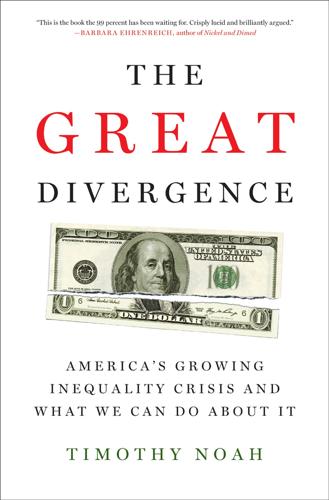
The Great Divergence: America's Growing Inequality Crisis and What We Can Do About It
by
Timothy Noah
Published 23 Apr 2012
Most of what we know about long-term income-mobility trends in the United States during the previous half century comes from the University of Michigan’s Panel Study of Income Dynamics, a longitudinal study of more than nine thousand families from across the continental United States begun in 1968. The PSID is the world’s longest-running “panel survey” of nationally representative households. (A panel survey is a longitudinal study in which respondents are interviewed at regular intervals.) PSID participants are interviewed once a year, typically by phone; the response rate has been above 96 percent since 1969.
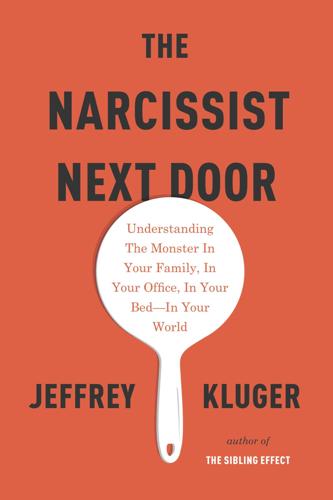
The Narcissist Next Door
by
Jeffrey Kluger
Published 25 Aug 2014
This is the same dynamic that occurs with a narcissistic coworker, but with a boss—someone who’s running the show—things are that much more thrilling and you’re only too happy to fall in line. It’s only in the later phase, what’s known as the enduring zone, that the egotism, self-absorption and insensitivity of the narcissist emerge. Psychologist Delroy Paulhus of the University of British Columbia conducted a longitudinal study in which he set narcissists—or, as he decorously called them, “trait self-enhancers”—to work on a project with non-narcissists, had them meet at regular intervals and followed them from the time they met to the time they got to know one another and finally to the time the working relationships inevitably fell apart.
…
“By the age of thirty,” wrote William James in the authoritative 1890 textbook Principles of Psychology, “the character has set like plaster, and will never soften again.” And as work by people like Campbell still shows, there’s a lot of truth in that. Yet in 1990, Lenzenweger launched a sixteen-year longitudinal study, funded by the National Institute of Mental Health, and found that even without a lick of therapy, the severity of most personality disorders—including narcissism—diminishes over time. The mechanism is unclear, and the problems by no means vanish. But as with so many other things, age appears simply to have a seasoning and mellowing effect.
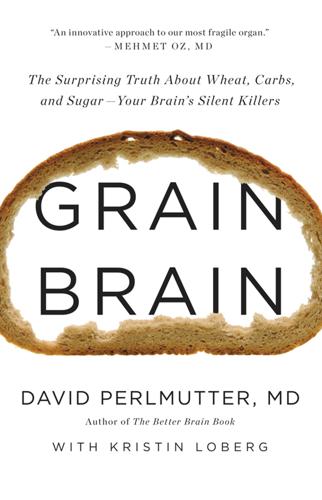
Grain Brain: The Surprising Truth About Wheat, Carbs, and Sugar--Your Brain's Silent Killers
by
David Perlmutter
and
Kristin Loberg
Published 17 Sep 2013
Even being “pre-diabetic,” when blood sugar issues are just beginning, is associated with a decline in brain function and shrinkage of the brain’s memory center; it is also an independent risk factor for full-blown Alzheimer’s disease. It’s hard to believe that we couldn’t have known about this connection between diabetes and dementia sooner, but it’s taken us a long time to connect the dots and conduct the kind of longitudinal studies that such a conclusion requires. It’s also taken us time to figure out the obvious question that stems from this link: How does diabetes contribute to dementia? First, if you’re insulin resistant, your body may not be able to break down a protein (amyloid) that forms brain plaques associated with brain disease.
…
Enzinger, et al., “Risk Factors for Progression of Brain Atrophy in Aging: Six-year Follow-up of Normal Subjects,” Neurology 64, no. 10 (May 24, 2005): 1704–11. 16. M. Hamer, et al., “Haemoglobin A1c, Fasting Glucose and Future Risk of Elevated Depressive Symptoms over 2 Years of Follow-up in the English Longitudinal Study of Ageing,” Psychological Medicine 41, no. 9 (September 2011): 1889–96. 17. C. Geroldi, et al., “Insulin Resistance in Cognitive Impairment: The InCHIANTI Study,” Archives of Neurology 62, no. 7 (2005): 1067–72. 18. M. Adamczak and A. Wiecek, “The Adipose Tissue as an Endocrine Organ,” Seminars in Nephrology 33, no. 1 (January 2013): 2–13. 19.
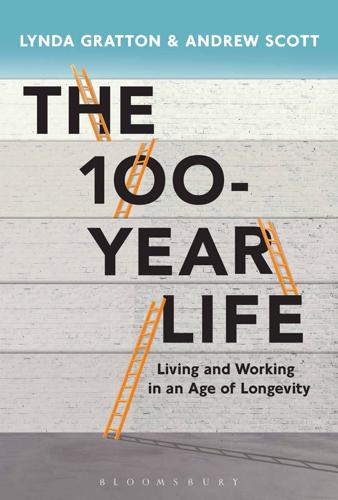
The 100-Year Life: Living and Working in an Age of Longevity
by
Lynda Gratton
and
Andrew Scott
Published 1 Jun 2016
Obviously, skills and knowledge will be a major component of this category, but there is much else as well. 2The second category is vitality assets. Broadly these capture mental and physical health and well-being. Included here are friendship, positive family relationships and partnerships, as well as personal fitness and health. Longitudinal studies suggest that high stocks of vitality assets are a key component in a measure of a good life. 3The final category is transformational assets. Across a 100-year life, people will experience great change and many transitions. These transformational assets refer to their self-knowledge, their capacity to reach out into diverse networks and their openness to new experiences.
…
However, it is the network of close, positive friends who will keep you sane and happy and contribute to your vitality asset. In her book The Shift, Lynda called these types of long-established and rich friendships the Regenerative Community, to reinforce the role these people can play in regeneration.23 Whether it is the Harvard longitudinal study mentioned earlier or studies of communities of people who enjoy vitality into their old age, they all inevitably show the same phenomenon – people who are well connected to others are more vital, energetic and positive than those who are isolated.24 These networks are subtly different from those that are the foundation of professional social capital.

Street Smart: The Rise of Cities and the Fall of Cars
by
Samuel I. Schwartz
Published 17 Aug 2015
In the 1990s, Japan’s Osaka Company began surveying its employees in order to get a handle on the impact of lengthening the distance they walked to work, and their risk of higher blood pressure. Every additional ten minutes spent walking to and from work was associated with a 12 percent reduction in hypertension. Then there’s the not dying part. The Cooper Center Longitudinal Study, whose database now contains more than a quarter million records from more than a hundred thousand people, representing 1.8 million person-years, found that low fitness was the strongest predictor of death in any given year—more than obesity or even smoking. The Harvard Alumni Health Study, which followed more than seventeen thousand subjects for nearly twenty-four years, found that walking thirty minutes a day cut mortality by nearly a quarter.
…
See Charleston Area Regional Transportation Authority; Chattanooga Area Regional Transportation Authority Carter, Jimmy, 137 Central Park, and justification for reopening to traffic, 48–51 Charleston, South Carolina, 180, 242 transportation network in, 166–170 Charleston Area Regional Transportation Authority (CARTA), 168 Chattanooga, Tennessee, 190–191 Chattanooga Area Regional Transportation Authority (CARTA), 190–191 Chicago, Illinois, 85, 191, 200 walkability in, 148–151 Chicago Department of Transportation, 148 Chicago Municipal Code of 1922, 151 Chicago Pedestrian Plan, 148 Chicago-to-Miami Dixie Highway, 14 China, cars in, 80, 83 Cities decline of, 19–22, 33, 44 European, 44, 103, 176 and limited-access roads, 20–21, 29n, 31, 33, 35, 50, 61–62 See also Urban living City: Rediscovering the Center (Whyte), 143 City Beautiful movement, 27–28, 29 The City in History (Mumford), 20 CityMapper, 195 Civil rights, 36, 214 Civit, Adria, 121–122 Clean Air Act of 1970, 50 Columbia, Maryland, 159 Columbia University, Earth Institute, 235 Columbus, Ohio, 242 walkability in, 131–134 Columbus Healthy Places program, 132–134 Community, and traffic, connection between, 100–101 Community density, 242 and political choice, 224–225, 227 and prosperity, 105 Commuting by car and commuting time, increase in, 80–82 cost of, 103–104 and physical and mental stress, 93–94 versus walking or public transit, 93–97 Commuting effect, 81 Complete Streets, 131–132, 151–152. See also Skinny Streets Cone of vision, 98 CONEXPO-CON/AGC, 16 Congestion. See Traffic congestion Connectivity, 159–160 Consolidated Edison, 7 Context Walkability, 115 Contra Costa County (California) study, 100 Cooper Center Longitudinal Study, 95 Cornett, Mick, 139–141 Cottam, Roy, 49, 155 Cross-Bronx Expressway, 29, 30–34, 40, 60 The Culture of Cities (Mumford), 20 Cycling, 12, 13, 89–93, 124–125, 129, 136, 141–142, 156, 177, 192n, 223 versus driving, and unfamiliar streets, perspectives on, 97–98 health (physical and mental) benefits of, 93–97, 134 and safety, 122–124 See also Exercise; Health; Walking Dallas, Texas, 209 DASH.

Duped: Double Lives, False Identities, and the Con Man I Almost Married
by
Abby Ellin
Published 15 Jan 2019
Sarah Lyall, “Spies Like Us: A Conversation with John le Carré and Ben Macintyre,” New York Times, August 25, 2017, https://www.nytimes.com/2017/08/25/books/review/john-le-carre-ben-macintyre-british-spy-thrillers.html. 11. Brent W. Roberts and Wendy F. DelVecchio, “The Rank Order Consistency of Personality Traits from Childhood to Old Age, a Quantitative Review of Longitudinal Studies,” Psychological Bulletin 126, no. 1 (2000): 3–25, http://psycnet.apa.org/record/2000-03445-001. 12. Telephone interview with author. 13. Ibid. 14. Tanith Carey, “Anne Darwin, ‘Canoe Widow’: Deceiving My Sons Was Unforgiveable,” The Guardian, October 10, 2016, https://www.theguardian.com/uk/canoe. 15. “500K (pounds) Recovered from Wife of Canoe Fraudster John Darwin,” Mirror, February 14, 2012, https://www.mirror.co.uk/news/uk-news/500k-recovered-wife-canoe-fraudster-684683. 16.
…
Quentin Fotrell, “My Mother Stole My Identity and Racked Up $500,000 in Debt,” MarketWatch, October 8, 2016, https://www.marketwatch.com/story/my-mother-was-a-psychopath-who-stole-my-identity-and-racked-up-500000-in-debt-2016-10-04; “Researcher Profile: An Interview with Axton Betz Hamilton,” Journal of Financial Therapy, July 2015, http://newprairiepress.org/cgi/viewcontent.cgi?article=1097&context=jft. 10. Asuman Buyukcan-Tetik, Catrin Finkenauer, Sofie Kuppens, and Kathleen D. Vohs, “Both Trust and Self-Control Are Necessary to Prevent Intrusive Behaviors: Evidence from a Longitudinal Study of Married Couples,” Journal of Family Psychology 27, no. 4 (2013): 671–676, https://pdfs.semanticscholar.org/a341/9ef0cc75f9f796c7328c4c611877de47e50e.pdf. 11. Alessandro Bucciol, Fabio Landini, and Marco Piovesan, “Unethical Behavior in the Field: Demographic Characteristics and Beliefs of the Cheater,” Journal of Economic Behavior and Organization 93 (2013): 248–257, https://econpapers.repec.org/article/eeejeborg/v_3a93_3ay_3a2013_3ai_3ac_3ap_3a248-257.htm. 12.
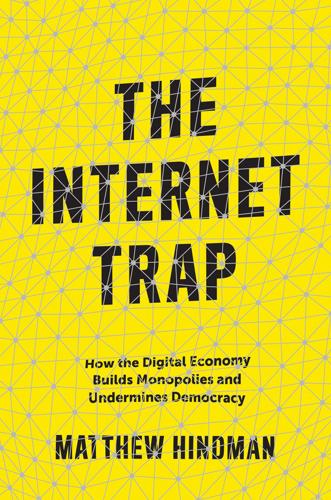
The Internet Trap: How the Digital Economy Builds Monopolies and Undermines Democracy
by
Matthew Hindman
Published 24 Sep 2018
Moreover, the situation for most local digital news sites has been getting worse since the data in this chapter was collected. The analysis in this chapter remains, as of this writing, the only comprehensive study of online news at the media market level. But recent work shows that the struggles of digital local news have only grown. Iris Chyi and Ori Tenenboim, in a longitudinal study of fifty-one major newspapers, find that more than half saw their digital audience decline between 2011 and 2015.27 The rise of mobile news in particular has been disastrous, a theme we will take up at length in the next chapter. Lastly, offline media concentration carries over into online media markets.
…
International Journal of Press/Politics, 135–59. Thurman, N. (2011). Making “The Daily Me”: Technology, economics and habit in the mainstream assimilation of personalized news. Journalism: Theory, Practice & Criticism, 12(4), 395–415. Thurman, N., and Schifferes, S. (2012). The future of personalization at news websites: lessons from a longitudinal study. Journalism Studies 13(5–6): 775–90. Toth, O. (2014, May). Moving the conversation to where you want to have it. Huffington Post. Retrieved from http://www.huffingtonpost.com/otto-toth/were-moving-the -conversation_b_5423675.html. Turner, F. (2006). From counterculture to cyberculture: Stewart Brand, the Whole Earth Network, and the rise of digital utopianism.

SEDATED: How Modern Capitalism Created Our Mental Health Crisis
by
James. Davies
Published 15 Nov 2021
It’s Nice That’, https://www.itsnicethat.com/news/ucas-artand-design-university-applications-decline-210717 (accessed June 2018). 6 Harrow M. (2007), ‘Factors involved in outcome and recovery in schizophrenia patients not on antipsychotic medication’, Journal of Nervous and Mental Disease 195:406–14. 7 For discussion on this point see Whitaker’s defence: Whitaker, R. (2016), ‘The Evidence-Based Mind of Psychiatry on Display’, https://www.madinamerica.com/2016/05/the-evidence-based-mind-of-psychiatry-on-display/ (accessed Oct. 2020). 8 In the UK, for example, mental health disability has doubled since the late 1990s. 9 Data presented by R. Whitaker to the All-Party Parliamentary Group for Prescribed Drug Dependence (Houses of Parliament, Sept. 2016). 10 Harding, C. M., et al. (1987), ‘The Vermont Longitudinal Study of Persons With Severe Mental Illness, I: Methodology, Study Sample, and Overall Status 32 Years Later’, American Journal of Psychiatry 144:6. 11 Whitaker, R. (2012), ‘E. Fuller Torrey’s Review of Anatomy of an Epidemic: What Does It Reveal About the Rationale for Forced Treatment?’, https://www.madinamerica.com/2012/05/e-fuller-torreys-review-of-anatomyof-an-epidemic-what-does-it-revealabout-the-rationale-for-forcedtreatment/ (accessed Jan. 2020). 12 Another study, undertaken by the California Department of Mental Hygiene in 1961, looked at the effect of the antipsychotic Thorazine after it was introduced to hospitals in the mid 1950s.
…
D., et al. (1994), ‘One hundred years of schizophrenia: a meta-analysis of the outcome literature’, American Journal of Psychiatry 151(10):1409–16. 23 With respect to one review, Whitaker said: ‘The day the book was published, there was a review – by a Harvard physician – that compared me to an AIDs denier, claiming that nobody could seriously dispute the fact that psychiatric drugs had improved the lives of so many.’ 24 Wunderink, L., et al. (2013), ‘Recovery in Remitted First-Episode Psychosis at 7 Years of Follow-up of an Early Dose Reduction/Discontinuation or Maintenance Treatment Strategy: Long-term Follow-up of a 2-Year Randomized Clinical Trial’, Journal of the American Medical Association Psychiatry. 25 Insel, T. (2013), ‘Post by former NIMH director Thomas Insel: Antipsychotics: Taking the Long View’, https://www.nimh.nih.gov/about/directors/thomas-insel/blog/2013/antipsychotics-taking-the-longview.shtml (accessed Jan. 2020). 26 Vittengl, J. R. (2017), ‘Poorer long-term outcomes among persons with major depressive disorder treated with medication’, Psychotherapy and Psychosomatics 86:302–4. 27 Ho, B. C. et al. (2011), ‘Long-term antipsychotic treatment and brain volumes: a longitudinal study of first-episode schizophrenia’, Archives of General Psychiatry 68(2):128–37. 28 Dreifus, C. (2008), ‘Using Imaging to Look at Changes in the Brain’, http://www.nytimes.com/2008/09/16/health/research/16conv.html?scp=1&sq=Nancypercent20Andreasen&st=cse (accessed Jan. 2020). 29 Voineskos, A.
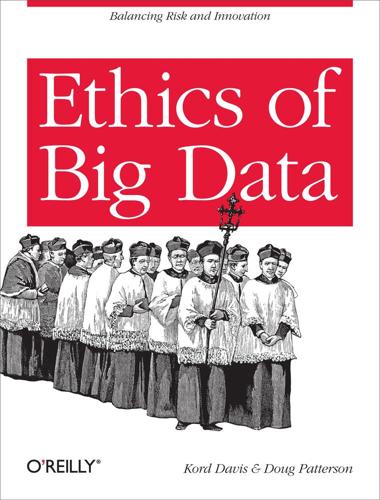
Ethics of Big Data: Balancing Risk and Innovation
by
Kord Davis
and
Doug Patterson
Published 30 Dec 2011
Is an individual’s complete history of actions and behaviors on the Internet useful in making hiring decisions? There are certainly some companies who think so and will provide you with that information in exchange for a fee. But even in the face of all these questions, the opportunity to extract value while reducing the risks is too tempting to ignore. Longitudinal studies in education hold the promise of helping us learn how to teach more effectively. Healthcare is running at mach speed to understand diseases and the human genome, and to improve doctor and hospital performance. Explicit ethical inquiry makes it easier to honor emerging and evolving legislation.
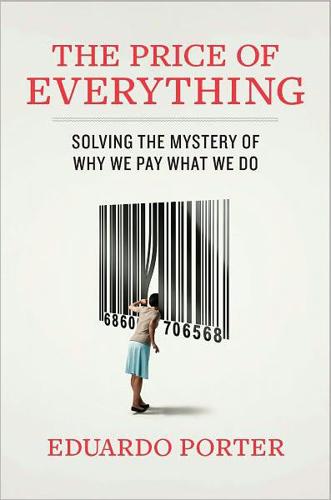
The Price of Everything: And the Hidden Logic of Value
by
Eduardo Porter
Published 4 Jan 2011
Anklesaria Aiyar, “Bhutan’s Happiness Is Large Dam, Fast GDP,” Times of India, November 1, 2009; and Ben Saul, “Cultural Nationalism, Self-Determination and Human Rights in Bhutan,” International Journal of Refugee Law, Vol. 12, No. 3, July 2000, pp. 321-353. Data on Bhutan and India’s GDP per person is drawn from International Monetary Fund statistics (www.imf.org/external/datamapper/index.php). Statistics on the impact of income on happiness come from Andrew Oswald and Nattavudh Powdthavee, “Does Happiness Adapt? A Longitudinal Study of Disability with Implications for Economists and Judges,” IZA Discussion Paper, July 2006; Paul Frijters, David W. Johnston, and Michael A. Shields, “Happiness Dynamics with Quarterly Life Event Data,” IZA Discussion Paper, July 2008; Gallup Organization, “About One in Six Americans Report History of Depression,” October 22, 2009 (www.gallup.com/poll/123821/One-Six-Americans-Report-History-Depression.aspx. , accessed 08/16/2010); Ronald Inglehart, Roberto Foa, Christopher Peterson, and Christian Welzel, “Development, Freedom and Rising Happiness, A Global Perspective (1981-2007),” Perspectives on Psychological Science, Vol. 3, No. 4, 2008, pp. 264-285; and Angus Deaton, “Income, Aging, Health and Wellbeing Around the World: Evidence from the Gallup World Poll,” Journal of Economic Perspectives, Vol. 22, No. 2, Spring 2008. 64-66 What Happiness Is: Examples of the link between happiness and other measures of well-being are in: David Blanchflower and Andrew Oswald, “Hypertension and Happiness Across Nations,” Journal of Health Economics, Elsevier, Vol. 27, No. 2, March 2008, pp. 218-233; Daniel Kahneman and Alan B.
…
_program=ACS&_submenuId=&_lang=en&_ts= , accessed on 08/08/2010) and the Gallup-Healthways Well-Being Index (at www.ahiphiwire.org/wellbeing/, accessed 08/16/2010). 70-72 The Treadmill of Happiness: How happiness adapts to positive and negative shocks is discussed in Andrew Oswald and Nattavudh Powdthavee, “Does Happiness Adapt? A Longitudinal Study of Disability with Implications for Economists and Judges,” Warwick University Working Paper, July 2006; Andrew E. Clark, Ed Diener, Yannis Georgellis, and Richard E. Lucas, “Lags and Leads in Life Satisfaction: A Test of the Baseline Hypothesis,” Economic Journal, Vol. 118, June 2008, pp. F222-F243.
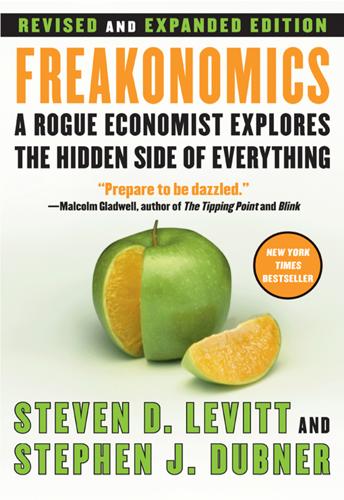
Freakonomics: A Rogue Economist Explores the Hidden Side of Everything
by
Steven D. Levitt
and
Stephen J. Dubner
Published 11 Apr 2005
Perhaps more interestingly, the data do a nice job of answering the question that every parent—black, white, and otherwise—wants to ask: what are the factors that do and do not affect a child’s performance in the early school years? In the late 1990s, the U.S. Department of Education undertook a monumental project called the Early Childhood Longitudinal Study. The ECLS sought to measure the academic progress of more than twenty thousand children from kindergarten through the fifth grade. The subjects were chosen from across the country to represent an accurate cross section of American schoolchildren. The ECLS measured the students’ academic performance and gathered typical survey information about each child: his or her race, gender, family structure, socioeconomic status, the level of his or her parents’ education, and so on.
…
Dinkins, David discrimination age detection and analysis of ethnic and religious gender information-based racial taste-based unfashionable DNA sampling doctors dogs Donohue, John Douglas, Kirk Dresden, Germany drug dealers African Americans as Colombian connection of daily life of incentives of income of living with mothers by organization and hierarchy of recordkeeping of risks of turf wars of weapons of drugs: guns and homicide and in sports see also crack cocaine; drug dealers; heroin Duggan, W. Dennis Dukakis, Michael Duke, Dan Duke, David Duncan, Arne DuPont Dymally, Mervyn Early Childhood Longitudinal Study (ECLS) econometrics “Economic Analysis of a Drug-Selling Gang’s Finances, An” (Levitt and Venkatesh) economics: behavioral black culture and classical definitions of “identity” in incentives and morality vs. science of measurement and tools of unorthodox approach to see also money “Economics of ‘Acting White,’ The” (Fryer) “Economics of Sexuality, The” (Francis) Economist economists voting and economy: global of 1990s strength of education early childhood parental see also schools; testing Education Department, U.S.

Only Humans Need Apply: Winners and Losers in the Age of Smart Machines
by
Thomas H. Davenport
and
Julia Kirby
Published 23 May 2016
Here’s what they’ve found by administering standard personality tests over the decades: College kids today are about 40 percent lower in empathy than their counterparts of twenty or thirty years ago.9 (And they’re more narcissistic, as tracked by the Narcissistic Personality Inventory over the same time frame.10) Other social scientists worry about ethics, or the “moral sense” that Charles Darwin thought was unique to humans. It is unlikely there will ever be a rigorous longitudinal study of this, and yet the perception is widespread that many parts of the world are experiencing declines. And then there is creativity. If you’re a fan of TED Talks, perhaps you saw the one that became the most viewed of the entire TED library: Sir Ken Robinson’s “How Schools Kill Creativity.” In it, Robinson argues that “[w]e don’t grow into creativity, we grow out of it.
…
Yet that belief constrains us to a narrow track, and the same track we have designed computers to dominate. We are limiting ourselves to running a race we have already determined we cannot win. It might even be that our attempts to have humans keep pace with machines militate against the development of other human strengths. Psychologist David Weikart’s famous longitudinal studies of early childhood education found that preschoolers in a low-income neighborhood who were subjected to direct instruction in skills like reading and arithmetic later displayed deficits in social and emotional development vis-à-vis their counterparts in the studies whose preschool education was “play based.”
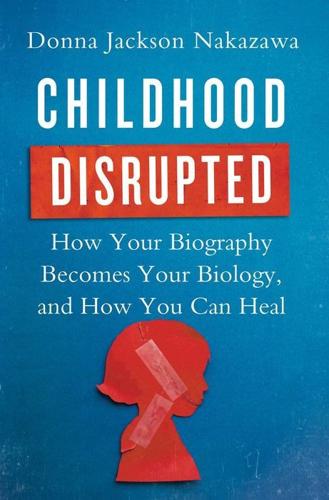
Childhood Disrupted: How Your Biography Becomes Your Biology, and How You Can Heal
by
Donna Jackson Nakazawa
Published 6 Jul 2015
The risk that toxic stress will lead to neuroinflammatory diseases such as depression and anxiety disorders is, as with autoimmune disease, nearly twice as high for women as it is for men. At the University of Wisconsin, neuropsychiatrist Ryan Herringa, MD, PhD, and assistant professor of child and adolescent psychiatry, recently asked a fairly typical group of sixty-four eighteen-year-olds—who were being followed by Herringa’s colleagues in a longitudinal study known as the Wisconsin Study of Families and Work—to answer questions about the adversity they’d faced. They were asked to agree or disagree with statements such as “when I was growing up people called me things like ‘stupid,’ ‘lazy’ ”; or, “people in my family said hurtful or insulting things to me”; or, “I thought my parents wished I had never been born”; or, “I felt that someone in my family hated me,” as well as questions about more overt physical and sexual abuse and emotional neglect.
…
They were able to manage their fear or anger before those feelings overwhelmed them—and then move on. Not surprisingly, these kids who’d had secure attachments with their mothers also had healthier love relationships and reported being a lot happier in them over the long term. In a similar longitudinal study, researchers followed Oregon families for three generations. Parents who were warm, consistent, not overreactive, and involved in their kids’ activities had a positive impact not only on how their adolescent children turned out but also on how skilled their kids were, once grown, in using positive parenting skills with their own children.
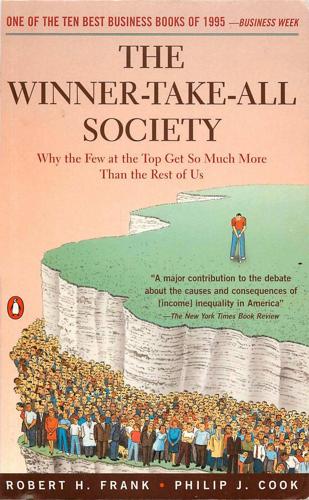
The Winner-Take-All Society: Why the Few at the Top Get So Much More Than the Rest of Us
by
Robert H. Frank, Philip J. Cook
Published 2 May 2011
But taken as a whole, graduates of elite schools are much more successful in the labor market than are graduates of other colleges and universities. This is no surprise, given that students at elite schools are selected for many personal qualities that also predict success on the job. The best evidence of the value of an elite degree comes from an un usually rich data set, the National Longitudinal Study of the High School Class of 1972, which followed this cohort through 1 986. Econ- The Battle/or Educational Prestige 153 omist Estelle James and her coauthors report their analysis of a sample of males who had graduated from college and who worked for an em ployer in 1 985. The authors found that even after controlling for the individual worker's academic performance, the overall selectivity of his alma mater ( as measured by average SAT scores of its freshman class) had a considerable effect-each additional one hundred points of average combined SAT scores increased earnings by about 4 per cent.
…
A., 38 Miller, Ron, 67 Mine Enemy Grows Older (King), 139-140 Minor-league superstars, 85-99 Modern Times (film), 1 93 Monitor, 73 Monogamy laws, 1 83-184 Morgan Stanley, 139 Morrow, William, and Company, Inc., 64 Moss, Kate, 78 Motorola Corporation, 7 1 MS-DOS, 27, 33 Murnane, Richard, 87, 94 Murphy, Eddie, 74 Music industry, 2, 24-25, 40, 45, 88, 1 10, 1 1 3-1 14 National Association of Inter collegiate Athletics (NAIA) , 135 National Basketball Association (NBA), 8 1 , 104, 168, 169 National Collegiate Athletic Association (NCAA) , 79, 135-137, 1 68, 270 268 Index National Football League (NFL), 10, 3 1 , 81-82, 168, 169 National holidays, 143, 228 National Industrial Conference Board, l72 National Longitudinal Study of the High School Class of 1972, 1 52-153 National Science Foundation (NSF) graduate fellowships, 28, 151 Nattiv, Aurelia, 133 Natural Born Killers (film), 190 Navratilova, Martina, 39 Network economies, 33-34, 36 New American Library, 64 New England Auto Racing Association (NEARA), 226 New Yorker, 205-206 New York Times, 78, 205 New York Trines Book Review, 34, 65, 1 4 1 Nicklaus, Jack, 3 9 Nobel Prizes, 28, 150 Nonprofit organizations, 91 Norman, Greg, 39 North Carolina State University, 79, 135 Northwestern University, 129-130, 152 Notre Dame University, 79, 137 Novak, Robert, 1 97 Nuclear reactor technology, 27, 35 Nystrom, Paul H., 77 Ober, Eric, 77 Observable talent differences, 1 14-1 15 Olympic Garnes, 17, 29, 56, 133, 134 On-campus recruiting, 156-158 Organized crime, 26, 3 1 Overconfidence, 8, 103-106 Overcrowding, 8, 2 1 , 10 1-123 Overtime laws, 143, 228 Paar, Jack, 139 Palmer, Arnold, 39 Patterson, Thomas, 1 96 Pay determination, social comparisons in, 58-59, 7 1-72 Pelican Bdef, The (Grisham), 65 Pennzoil, 3 1 People magazine, 204-205 Performance enhancement, 127- 128, 130-134, 1 44-146 Perfume advertisements, 176 Persian Gulf war, 48-49, 51 Peugeot, 33 Philip Morris companies, 1 4 1 , 142 Phillips, EGnstie, 132, 146 Piece-rate pay schemes, 172-173 Pine, Joseph, 47 Pitino, Rick, 79 Political commentary, 1 96-197, 203 Political parties, 30 Portrait 0/Dr.

Free Money for All: A Basic Income Guarantee Solution for the Twenty-First Century
by
Mark Walker
Published 29 Nov 2015
So, we do not need to sort out this controversy to see that empirical research supports the case for BIG. Causation and Happiness We noted above that most social science data works with correlational data between income and happiness; very little addresses the issue of causality. One way to sort out the issue of causality is with longitudinal studies. Longitudinal studies, as the name suggests, typically sample a population over time. If we have two correlated variables X and Y, and we are not sure which is the cause and which is the effect, we look to see whether one precedes the other in time. If X causes Y, then X should be present earlier than Y.
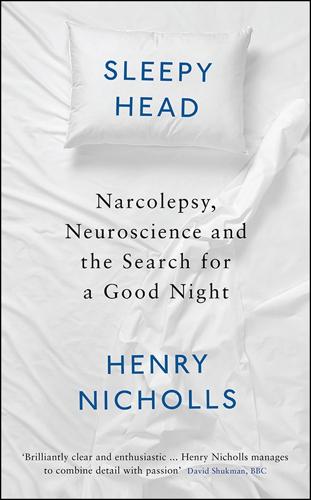
Sleepyhead: Narcolepsy, Neuroscience and the Search for a Good Night
by
Henry Nicholls
Published 1 Mar 2018
It is relatively easy to see how obesity, by increasing the fat laid down in the throat, could cause sleep apnea. Is it possible that it could also work the other way round, with short sleep somehow causing obesity? Cappuccio resolved to data mine his way to a conclusion. The longitudinal study is of crucial importance, one in which data are repeatedly collected from the same individuals over the course of many years. This can help address the question of which came first, the short sleep or the obesity. A longitudinal study of young children in New Zealand was the first to indicate that it’s the short sleep that kicks things off. Cappuccio’s own data, as yet unpublished, shows much the same. ‘We are convinced that the exposure to short sleep precedes obesity,’ he says.
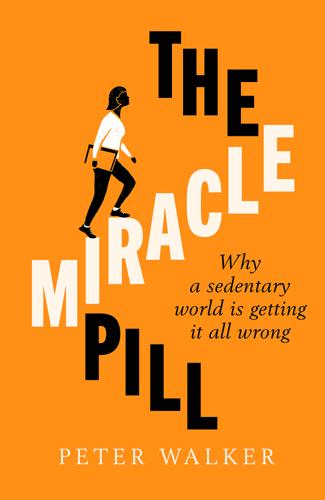
The Miracle Pill
by
Peter Walker
Published 21 Jan 2021
In total 3,263 men who had varying levels of physical activity in their work, and now largely extinct job titles such as shoveller, holdman, sugarman, winchdriver, cooper and walking boss, were examined for other differences such as weight, blood pressure and whether or not they smoked. In a pioneering example of the longitudinal studies which now form the bedrock of much of epidemiology, Paffenbarger and his team returned sixteen years later, by which time 888 of the men had died, 291 from heart attacks. The eventual 1970 paper found that after accounting for other lifestyle and health factors, those with the least active jobs suffered coronary heart deaths a third higher than those in strenuous roles such as cargo handling – who, the study found, expended an average of 925 more calories per eight-hour shift.22 Paffenbarger’s major achievement was the subsequent College Alumni Health Study, a vast linear record of physical activity and associated health, begun in 1960 and initially focusing on Harvard.
…
Cherkas et al., ‘The Association Between Physical Activity in Leisure Time and Leukocyte Telomere Length’, JAMA Internal Medicine, Vol. 168, No. 2 (2008): 154–8. 46 Xuemei Sui, James N. Laditka, James W. Hardin, Steven N. Blair, ‘Estimated functional capacity predicts mortality in older adults’, Journal of the American Geriatrics Society, Vol. 55, No. 12 (2007): 1940–47. 47 Eliza F. Chakravarty et al., ‘Reduced Disability and Mortality Among Aging Runners: A 21-Year Longitudinal Study’, JAMA Internal Medicine, Vol. 168, No. 15 (2008): 1638–46. 48 Andrew Kingston et al., ‘Projections of multi-morbidity in the older population in England to 2035: estimates from the Population Ageing and Care Simulation (PACSim) model’, Age and Ageing, Vol. 47, No. 3 (2018): 374–80. 49 International Osteoporosis Foundation https://www.iofbonehealth.org/facts-statistics#category-14 50 Interview with the author. 51 Stefania Bandinelli, Yuri Milaneschi, Luigi Ferrucci, ‘Chair Stands Test and Survival in the Older Population’, Journal of the American Geriatrics Society, Vol. 57, No. 11 (2009): 2172–3. 52 Rachel Cooper et al., ‘Physical capability in mid-life and survival over 13 years of follow-up: British birth cohort study’, British Medical Journal, Vol. 348, g2219 (2014). 53 Interview with the author. 54 Official video of how to do the test: https://www.youtube.com/watch?
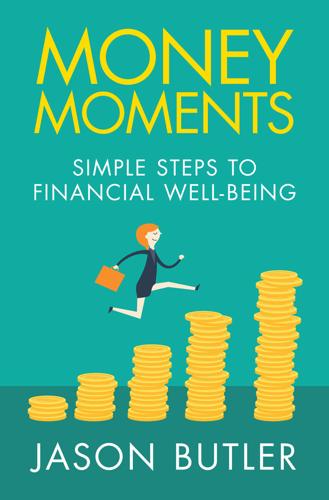
Money Moments: Simple Steps to Financial Well-Being
by
Jason Butler
Published 22 Nov 2017
“Future Self-Continuity: How Conceptions of the Future Self Transform Intertemporal Choice”, Annals of the New York Academy of Sciences 1235, no. 1 (2010): 30-43 42Oeppen, J. and Vaupel, J., “Broken Limits to Life Expectancy”, Science 296 (5570) (2002): 1029-31. 43Financial Well-being Podcast: Redefining “Goals” With Carl Richards (9/03/17) http://www.financialwell-being.co.uk/2017/03/09/episode-15-redefining-goals-with-carl-richards/ (accessed 22.09.17) 44Rohwedder, Susann, and Robert J. Willis. 2010. “Mental Retirement”, Journal of Economic Perspectives, 24(1): 119-38. 45Wu C, Odden MC, Fisher GG, et al “Association of retirement age with mortality: a population-based longitudinal study among older adults in the USA”, J Epidemiol Community Health 2016;70:917-923. http://jech.bmj.com/content/70/9/917 (accessed 20.10.17) 46Demographic Components of Future Population Growth: 2015 Revision, United Nations http://www.un.org/en/development/desa/population/theme/trends/dem-comp-change.shtml (accessed 06.11.17) 47Gratton, Lynda., and Andrew Scott.

Beyond the 4% Rule: The Science of Retirement Portfolios That Last a Lifetime
by
Abraham Okusanya
Published 5 Mar 2018
For some time, researchers have identified an important phenomenon known as the saving puzzle. Older people keep saving once they’ve retired and the amount increases with age! Fig. 30: The U-shaped spending path in retirement Dr Brancati and her colleagues at the International Longevity Center – UK analysed two large datasets, the Living Costs and Food Survey and the English Longitudinal Study of Ageing. They wanted to gain insight into the older population’s income and expenditure patterns. Their findings are in a paper called Understanding Retirement Journeys: Expectations vs reality18. The researchers note the absence of the U-shaped spending in retirement. ‘Our findings suggest that typical consumption in retirement does not follow a U-shaped path – consumption does not dramatically rise at the start of retirement or pick up towards the end of life to meet long-term care-related expenditures.

The End of Illness
by
David B. Agus
Published 15 Oct 2012
In a nutshell, it shows that having a “low cardiorespiratory fitness,” or low CRF, which is really code for being out of shape, accounts for a greater proportion of deaths than any of the other conditions listed, including obesity, diabetes, or high cholesterol, and it even beats out the smoker. Hypertension in men is the only condition that comes close to the ravages of low fitness. Attributable fractions (%) for all-cause deaths in 40,842 (3,333 deaths) men and 12,943 (491 deaths) women in the Aerobics Center Longitudinal Study. The attributable fractions are adjusted for age and each other item in the figure.* Cardiorespiratory fitness determined by a maximal exercise test on a treadmill. Source: S.N. Blair et al. A tribute to Professor Jeremiah Morris: the man who invented the field of physical activity epidemiology.
…
Index to ring finger length ratio and the risk of osteoarthritis. Arthritis & Rheumatism 58, no. 1 (January 2008): 137–44. Index AARP Diet and Health Study, 170 abdominal aneurysm, 72, 80 Accelerate Brain Cancer Cure (ABC2), 87 acetylsalicylic acid. See aspirin adenine, 69 aerobics, 224 Aerobics Center Longitudinal Study, 233 age/aging aspirin and, 63 human growth hormone and, 48–49 immune system and, 209 inflammation and, 47, 196 mitochondria and, 228–29 need for understanding of, 294–95 Nun Study and, 205 oxidation and, 156, 160–61 physical activity and, 213, 224, 227–29 search for master switch and, 294–301 self-knowledge and, 122 sleep and, 248, 253 stalling or slowing down, 228–29 statins and, 61 technologies and, 228 vitamin D and, 141, 142 weight and, 227–28 Agency for Healthcare Research and Quality, 171 AIDS, statistics about death and, 26 alcohol, 87, 249 alleles, 101–2 allergies, 17, 133, 196 Alzheimer’s disease, 11, 47, 72, 76–77, 79, 121, 156, 196, 204, 205, 206–8, 227, 260 American Academy of Sleep Medicine, 253 American Association for Cancer Research, 28 American Cancer Society, 230 American College of Cardiology, 211 American Heart Association, 211 American Journal of Epidemiology, physical activity study article in, 230 amino acids, 105, 106, 109 amyotrophic lateral sclerosis (ALS, Lou Gehrig’s disease), 121 Annals of Epidemiology, 225 Anson, George, 150 antibiotics, 26, 29, 298–99 antioxidants anti of, 159–62 cancer and, 201 definition of, 159–60, 165–66 food as source for, 178 hype and data about, 162–64, 167–70, 175–76 inflammation and, 201 as panacea, 160–61 vitamin C and, 156–57 See also specific antioxidant antivirals, statistics about death and, 26 anxiety disorders, in children, 252–53 aortic aneurysm, 72 APOE gene, 76–77 appetite, Personal Inventory Questionnaire and, 17 Applied Proteomics, 9, 99, 111, 112, 114 apps, 64–66 Archives of General Psychiatry, 253 Arizona State University, 114 Armstrong, Lance, 89–90, 91, 93 arthritis, inflammation and, 196 Arthritis & Rheumatism journal, 130 ascorbic acid.

Drugs Without the Hot Air
by
David Nutt
Published 30 May 2012
.• For sources see Wikipedia, URL-31. 5 we ought to think of drug addiction as a special form of behavioural addiction• Problem Gambling and Other Behavioural Addictions, Jim Orford, in Drugs and the Future: Brain Science, Addiction and Society, David Nutt et al, Elsevier, 2007 6 different neurotransmitters are believed to be involved in these “push” and “pull” factors• Which neurotransmitters are involved is still a subject of research. 7 Korean couple who let their baby starve to death• Girl starved to death while parents raised virtual child in online game, URL-168, the Guardian, March 5th, 2010 8 alcoholics have fewer dopamine receptors than their non-alcoholic relatives• Overexpression of dopamine D2 receptors reduces alcohol self-administration, Panayotis K Thanos, Nora D Volkow, et al, Journal of Neurochemistry (78), 2001 9 tests on rats that have been made addicted to alcohol• As above. 10 high-status monkeys have more dopamine receptors than low-status monkeys• Characterising organism x environment interactions in non-human primate models of addiction: PET imaging studies of D2 receptors, Michael Nader et al, in The Neurobiology of Addiction, Oxford University Press, 2010 11 amphetamine releases endorphins• Stimulation of endorphin neurotransmission in the nucleus accumbens by ethanol, cocaine, and amphetamine, Foster Olive et al, Journal of Neuroscience 21 (1), 2001 12 if you use ketamine about once a month, an effective dose could be as little as 20 mg, whereas if you use it daily you might eventually need to take 200mg to feel any effect at all• Ketamine: a scientific review, Celia Morgan and Valeria Curran, ISCD, September 15th 2010 13 Sensitisation can be seen in behavioural addictions such as gambling• Problem Gambling and Other Behavioural Addictions, Jim Orford, in Drugs and the Future: Brain Science, Addiction and Society, Nutt et al, Elsevier, 2007 14 addiction starts as pleasure seeking, but when withdrawal kicks in, the main drive becomes reducing the suffering of withdrawal• Problem Gambling and Other Behavioural Addictions, Jim Orford, in Drugs and the Future: Brain Science, Addiction and Society, David Nutt et al, Elsevier, 2007 15 Danish studies that have shown that the sons of alcoholic fathers• The Danish longitudinal study of alcoholism 1978–2008, Joachim Knop, Danish Medical Bulletin, (58) 8, 2011 16 The enzyme that clears nicotine from the body has two versions• Genetic variability in CYP2A6 and the pharmacokinetics of nicotine, JC Mwenifumbo and RF Tyndale, Pharmacogenomics 8(10), October 2007 17 male children of male alcoholics have alterations in GABA receptors that make them less sensitive to alcohol• Reactions to Alcohol in Sons of Alcoholics and Controls, Marc Schuckit, Alcoholism: Clinical and Experimental Research 12, 1988 18 High opioid receptor levels in the brain also predict drug use and craving for opiates• Brain opioid receptor binding in early abstinence from opioid dependence, Tim Williams et al, British Journal of Psychiatry (191), 2007 19 if mothers use drugs while pregnant, their children may be more likely to become addicted to those same drugs in later life• Drugs and the Future: Brain Science, Addiction and Society, David Nutt et al, Elsevier, 2007 20 “neuroimaging”• Brain imaging in addiction, David Nutt, Anne Lingford-Hughes and Liam Nestor in Addiction Neuroethics, Elsevier, 2012 21 PET camera• which is in fact a “scintillation counter”. 9 Can addiction be cured?
…
Addiction is best thought of as a chronic recurring illness, like diabetes or asthma, where lifelong treatment is required. Once you’ve had an addiction you’re always at greater risk of returning to it than those who have never been addicted, because you have an underlying vulnerability and your brain has changed as a result of repeated drug use. Longitudinal studies show lifetime relapse rates similar to asthma, diabetes or hypertension 13(Figure 9.5). As with these illnesses, relapse shouldn’t be seen as a moral “failure”. Instead, the most helpful attitude seems to be to re-evaluate the treatment model and maybe try something new. There is no “one size fits all” model of treatment, because addiction has a great many different causes and all people are different.
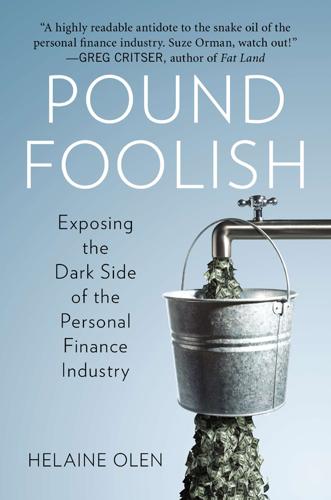
Pound Foolish: Exposing the Dark Side of the Personal Finance Industry
by
Helaine Olen
Published 27 Dec 2012
But is it really reasonable to think that even if financial literacy is woven into the entirety of a student’s existence, they will be able and willing to comprehend a hundred-page mortgage contract twenty years down the road, when they’re worn down with other life concerns like work, marriage, and family, and may not have been interested in the subject from the get-go? There is, however, a tiny bit of support for the movement. A longitudinal study at the University of Arizona has found that students exposed to financial literacy do show an increase in both fiscal smarts and good savings habits. But before you make too much of this survey, it’s worth noting that, for one, it is just about the only such finding ever; second, almost 30 percent of the original subjects did not participate in the second wave of the study; and third, like any survey, the results were based on self-reporting, and given the subject it’s possible some students were too embarrassed to admit to less-than-ideal financial behaviors.
…
Lew Mandell: author interview. 208 Charles Schwab: “2011 Teens & Money Survey Findings,” Charles Schwab, http://www.aboutschwab.com/images/press/teensmoneyfactsheet.pdf. In a 2011 interview, Olivia Mitchell fessed up: “Knowledge@Wharton High School, Olivia Mitchell on Why Young Consumers Should Just Say No to Spending,” March 3, 2011, http://kwhs.wharton.upenn.edu/2011/03/olivia-mitchell-on-why-young-consumers-should-just-say-no-to-spending. A longitudinal study at the University of Arizona: “Young Adults’ Financial Capability: APlus Arizona Pathways to Success for University Students, Wave 2,” the University of Arizona, September, 2011, http://aplus.arizona.edu/Wave-2-Report.pdf. In 2003, Target Financial Services contacted tens of thousands of borrowers: Amy Brown and Kimberly Gartner, “Early Intervention and Credit Cardholders: Results of Efforts to Provide Online Financial Education to New-to-Credit and At-Risk Consumers,” Center for Financial Services Innovation, January 2007, http://cfsinnovation.com/system/files/imported/managed_documents/earlyintervention.pdf.
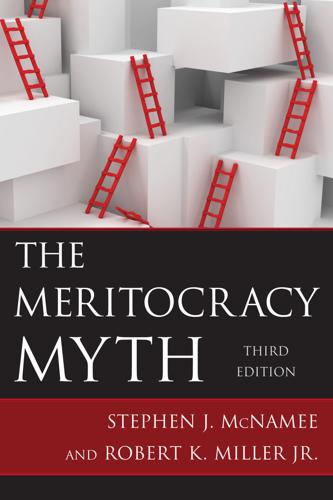
The Meritocracy Myth
by
Stephen J. McNamee
Published 17 Jul 2013
“Racial, Educational and Religious Endogamy in the United States: A Comparative Historical Perspective.” Social Forces 87, no. 1: 1–31. Salverda, Weimer, Brian Nolan, and Timothy M. Smeeding, eds. 2009. Oxford Handbook of Economic Inequality. Oxford: Oxford University Press. Sauls, Adam. 2012. A Longitudinal Study of American Economic Elites. Unpublished MA thesis, University of North Carolina Wilmington. Schervish, Paul G., Platon E. Coutsoukis, and Ethan Lewis. 1994. Gospels of Wealth: How the Rich Portray Their Lives. Westport, CT: Praeger. Schnittker, Jason. 2008. “Diagnosing Our National Disease: Trends in Income and Happiness, 1973 to 2004.”
…
Consistent with the Matthew effect described earlier, the first full-time job after completion of formal education matters for future mobility since first jobs set career trajectories. Getting started on a branch higher up the tree in the first place will likely put one higher up from the ground at the end. The best way to document the effects of cohort differences on mobility chances is to conduct a longitudinal study of different cohorts entering the labor force at different times and follow the careers and work histories of individuals in those cohorts over time. In a comprehensive analysis of this type, Annette Bernhardt and her colleagues (2001) followed two cohorts of white males. They traced career paths of the first cohort that entered the labor force in the mid-1960s and followed it through the end of the 1970s to the early 1980s.
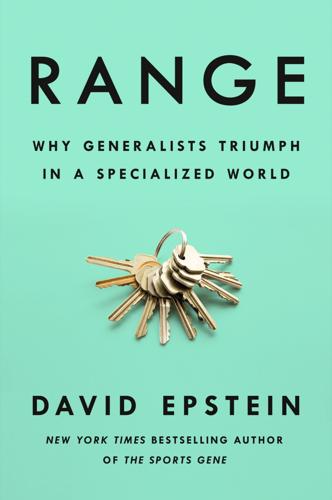
Range: Why Generalists Triumph in a Specialized World
by
David Epstein
Published 1 Mar 2019
Hornig et al., “Practice and Play in the Development of German Top-Level Professional Football Players,” European Journal of Sport Science 16, no. 1 (2016): 96–105 (epub ahead of print, 2014); A. Güllich et al., “Sport Activities Differentiating Match-Play Improvement in Elite Youth Footballers—A 2-Year Longitudinal Study,” Journal of Sports Sciences 35, no. 3 (2017): 207–15 (epub ahead of print, 2016); A. Güllich, “International Medallists’ and Non-medallists’ Developmental Sport Activities—A Matched-Pairs Analysis,” Journal of Sports Sciences 35, no. 23 (2017): 2281–88; J. Gulbin et al., “Patterns of Performance Development in Elite Athletes,” European Journal of Sport Science 13, no. 6 (2013): 605–14; J.
…
if rigorous training had not begun by age twelve: F. Gobet and G. Campitelli, “The Role of Domain-Specific Practice, Handedness, and Starting Age in Chess,” Developmental Psychology 43 (2007): 159–72. For the different rates at which individuals progress, see: G. Campitelli and F. Gobet, “The Role of Practice in Chess: A Longitudinal Study,” Learning and Individual Differences 18, no. 4 (2007): 446–58. Treffert studied savants: Treffert shared with me videos from his library of documentation on savants. His book Islands of Genius (London: Jessica Kingsley Publishers, 2012) is a great account of his research. “What I heard seemed so unlikely”: A.
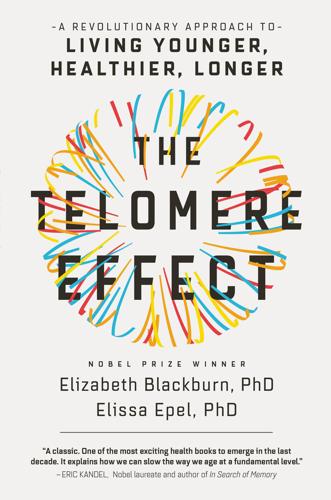
The Telomere Effect: A Revolutionary Approach to Living Younger, Healthier, Longer
by
Dr. Elizabeth Blackburn
and
Dr. Elissa Epel
Published 3 Jan 2017
Haendeler, J., et al., “Hydrogen Peroxide Triggers Nuclear Export of Telomerase Reverse Transcriptase via Src Kinase Familiy-Dependent Phosphorylation of Tyrosine 707,” Molecular and Cellular Biology 23, no. 13 (July 2003): 4598–610. 13. Adelfalk, C., et al., “Accelerated Telomere Shortening in Fanconi Anemia Fibroblasts—a Longitudinal Study,” FEBS Letters 506, no. 1 (September 28, 2001): 22–26. 14. Xu, Q., et al., “Multivitamin Use and Telomere Length in Women,” American Journal of Clinical Nutrition 89, no. 6 (June 2009): 1857–63, doi:10.3945/ajcn.2008.26986, epub March 11, 2009. 15. Paul, L., et al., “High Plasma Folate Is Negatively Associated with Leukocyte Telomere Length in Framingham Offspring Cohort,” European Journal of Nutrition 54, no. 2 (March 2015): 235–41, doi:10.1007/s00394-014-0704-1. 16.
…
Powell, A., “Breathtakingly Awful,” Harvard Gazette, October 5, 2010, http://news.harvard.edu/gazette/story/2010/10/breathtakingly-awful/, accessed October 26, 2015. 9. Authors’ interview with Charles Nelson, September 18, 2015. 10. Shalev, I., et al., “Exposure to Violence During Childhood Is Associated with Telomere Erosion from 5 to 10 Years of Age: A Longitudinal Study,” Molecular Psychiatry 18, no. 5 (May 2013): 576–81, doi:10.1038/mp.2012.32. 11. Price, L. H., et al., “Telomeres and Early-Life Stress: An Overview,” Biological Psychiatry 73, no. 1 (January 1, 2013): 15–23, doi:10.1016/j.biopsych.2012.06.025. 12. Révész, D., Y. Milaneschi, E. M. Terpstra, and B.
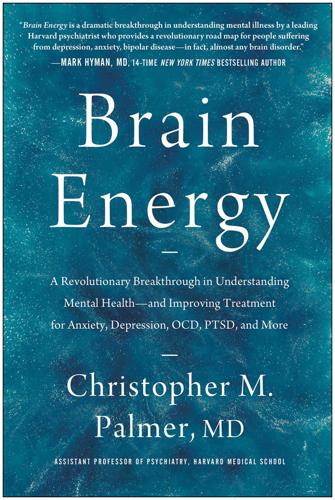
Brain Energy: A Revolutionary Breakthrough in Understanding Mental Health--And Improving Treatment for Anxiety, Depression, OCD, PTSD, and More
by
Christopher M. Palmer Md
Published 15 Nov 2022
Neuropsychiatr Dis Treat 14 (November 26, 2018): 3199–3208. doi:10.2147/NDT.S180569; K. Thomas, F. Beyer, G. Lewe, et al. “Higher Body Mass Index Is Linked to Altered Hypothalamic Microstructure.” Sci Rep 9(1) (2019): 17373. doi: 10.1038/s41598-019-53578-4. 11M. Åström, R. Adolfsson, and K. Asplund. “Major Depression in Stroke Patients: A 3-year Longitudinal Study.” Stroke 24(7) (1993): 976–982. doi: 10.1161/01.STR.24.7.976. 12 Heather S. Lett, James A. Blumenthal, Michael A. Babyak, Andrew Sherwood, Timothy Strauman, Clive Robins, and Mark F. Newman. “Depression as a Risk Factor for Coronary Artery Disease: Evidence, Mechanisms, and Treatment.” Psychosom Med 66(3) (2004):305–15. doi: 10.1097/01.psy.0000126207.43307.c0. 13Z.
…
“Myeloid Differentiation Architecture of Leukocyte Transcriptome Dynamics in Perceived Social Isolation.” Proc Natl Acad Sci USA 112(49) (2015): 15142–15147. doi: 10.1073/pnas.1514249112. 2Y. Luo, L. C. Hawkley, L. J. Waite, and J. T. Cacioppo. “Loneliness, Health, and Mortality in Old Age: A National Longitudinal Study.” Soc Sci Med 74(6) (2012): 907–914. doi: 10.1016/j.socscimed.2011.11.028. 3J. Wang, D. Xiao, H. Chen, et al. “Cumulative Evidence for Association of Rhinitis and Depression.” Allergy Asthma Clin Immunol 17(1) (2021): 111. doi: 10.1186/s13223-021-00615-5. 4O. Köhler-Forsberg, L. Petersen, C.
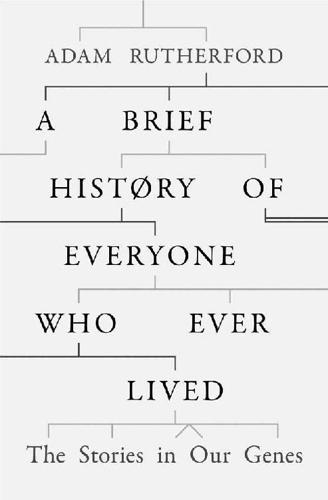
A Brief History of Everyone Who Ever Lived
by
Adam Rutherford
Published 7 Sep 2016
One frequently cited study concerns the population of the rural Swedish district of Överkalix, which over the last century or so has been subject to highly variable harvests. Life expectancy was significantly raised in men whose grandfathers had endured a failed crop season just before puberty: they had acquired something due to starvation, and passed it on. A similar result from Bristol scientists using a huge dataset called the Avon Longitudinal Study – the gold standard of transgenerational research – showed that men who smoked before puberty sired fatter sons than those who smoked after. Again, something was apparently being acquired and passed on. These results are complex, perplexing, but possibly slight, and demand more work and greater examination.
…
Davis Bradley Waldroup, Jr. (2011) Criminal Court for Polk County No. 08-101 Brooks-Crozier, Jennifer, ‘The nature and nurture of violence: early intervention services for the families of MAOA-LOW children as a means to reduce violent crime and the costs of violent crime’, Connecticut Law Review 44: 2 (2011) Lenders, J.W.M., et al., ‘Specific genetic deficiencies of the A and B isoenzymes of monoamine oxidase are characterized by distinct neurochemical and clinical phenotypes’, Journal of Clinical Investigation 97: 4 (1996), 1010–19 Frazzetto, G., et al., ‘Early trauma and increased risk for physical aggression during adulthood: the moderating role of MAOA genotype’, PLOS ONE 2: 5 (2007) Gibbons, Ann, ‘Tracking the Evolutionary History of a “Warrior” Gene’, Science 304: 5672 (2004), 818 Caspi, A., et al., ‘Role of genotype in the cycle of violence in maltreated children’, Science 297: 5582 (2002), 851–4 Lea, Rod and Chambers, Geoffrey, ‘Monoamine Oxidase, Addiction, and the “Warrior” Gene Hypothesis’, The New Zealand Medical Journal 120: 1250 (2007) McDermott, Rose, et al., ‘Monoamine oxidase A gene (MAOA) predicts behavioral aggression following provocation’, PNAS 106: 7 (2009), 2118–23 Beaver, Kevin M., et al., ‘Monoamine oxidase A genotype is associated with gang membership and weapon use’, Comprehensive Psychiatry 51: 2 (2010), 130–4 ‘“Ruthlessness gene” discovered by Michael Hopkin,’ Nature (4 April 2008) Hunter, Philip, ‘The Psycho Gene’, EMBO Reports 11: 9 (2010), 667–9 Tiihonen, J., et al., ‘Genetic background of extreme violent behavior’, Journal of Molecular Psychiatry 20: 6 (2015), 786–92 Hogenboom, Melissa, ‘Two genes linked with violent crime’, BBC Online (28 October 2014) On Adam Lanza Kolata, Gina, ‘Seeking Answers in Genome of Gunman’, New York Times (24 December 2012) Etchells, Peter J., et al., ‘Prospective Investigation of Video Game Use in Children and Subsequent Conduct Disorder and Depression Using Data from the Avon Longitudinal Study of Parents and Children’, PLOS ONE 11: 1 (2016) Myers, P.Z., ‘Fishing for meaning in a dictionary of genes’, Pharyngula (27 December 2012) The Hongerwinter Banning, C., ‘Food Shortage and Public Health, First Half of 1945’, The Annals of the American Academy of Political and Social Science 245: The Netherlands during German Occupation (May 1946), 93–110 Stein, A.D. and Lumey, L.H., ‘The relationship between maternal and offspring birth weights after maternal prenatal famine exposure: the Dutch Famine Birth Cohort Study’, American Journal of Human Biology 72: 4 (2000), 641–54 Kaati, G., et al., ‘Cardiovascular and diabetes mortality determined by nutrition during parents’ and grandparents’ slow growth period’, European Journal of Human Genetics 10: 11 (2002), 682–8 Pembrey, Marcus, et al., ‘Human transgenerational responses to early-life experience: potential impact on development, health and biomedical research’, Journal of Medical Genetics 51: 9 (2014), 563–72 Chopra, Deepak and Tanzi, Rudolph, ‘You Can Transform Your Own Biology’, www.chopra.com/ccl/you-can-transform-your-own-biology Chapter 7: A short introduction to the future of humankind Fu, W., O’Connor, T.D., et al., ‘Analysis of 6,515 exomes reveals the recent origin of most human protein-coding variants’, Nature 493 (2013), 216–20 Pandit, Jaideep J., et al., ‘A hypothesis to explain the high prevalence of pseudo-cholinesterase deficiency in specific population groups’, European Journal of Anaesthesiology 28 (2011), 550 Reich, D., et al., ‘Reconstructing Indian population history’, Nature 461 (2009), 489–94 Moorjani, Priya, et al., ‘Genetic Evidence for Recent Population Mixture in India’, The American Journal of Human Genetics 93: 3 (2013), 422–38 Bolund, Elisabeth, et al., ‘Effects of the demographic transition on the genetic variances and covariances of human life-history traits’, Evolution 69 (2015), 747–55 Rolshausen, Gregor, et al., ‘Contemporary Evolution of Reproductive Isolation and Phenotypic Divergence in Sympatry along a Migratory Divide’, Current Biology 19: 24 (2009), 2097–101 Excerpt from Eliot, T.S., ‘Little Gidding’ from Four Quartets (Faber and Faber, 1942).
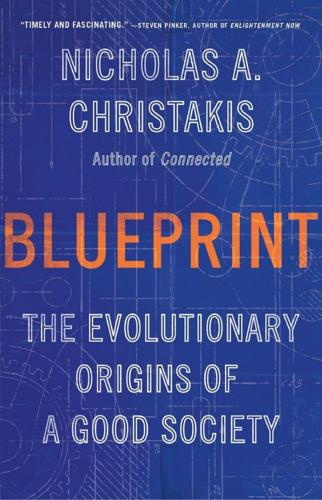
Blueprint: The Evolutionary Origins of a Good Society
by
Nicholas A. Christakis
Published 26 Mar 2019
The children, who ranged in age from two to five years old, were observed every day for several months playing for prolonged periods without adult supervision in an area near the beach (a spot with “strong surf” and “sharp lava-rock walls” as well as “machetes, axes, and matches” nearby for good measure). They “organized activities, settled disputes, avoided danger, dealt with injuries, distributed goods, and negotiated contact with passing others—without adult intervention.”2 A more systematic set of landmark longitudinal studies of play in places around the world (Nyansongo, Kenya; Khalapur, India; Juxtlahuaca, Mexico; Tarong, Philippines; Taira, Japan; and “Orchard Town,” a pseudonym for a town in New England), spearheaded by anthropologists Beatrice and John Whiting and their colleagues from the mid-1950s to the mid-1970s, concluded that, while there was much notable variation by gender, age, and culture in children’s typical companions, activities, toys, and venues for play, children’s social behavior and interaction styles while playing were always extremely similar.3 Societies themselves might even be seen as just scaled-up versions of such children’s games.
…
Similar natural experiments have taken advantage of people winning monetary lotteries to evaluate the link between wealth and health, trying to sort out whether wealthy people become healthy, or healthy people become wealthy (it’s both). J. Gardner and A. J. Oswald, “Money and Mental Wellbeing: A Longitudinal Study of Medium-Sized Lottery Wins,” Journal of Health Economics 26 (2007): 49–60. 12. A. Banerjee and L. Iyer, “Colonial Land Tenure, Electoral Competition, and Public Goods in India,” in J. Diamond and J. A. Robinson, eds., Natural Experiments of History (Cambridge, MA: Belknap Press, 2010), pp. 185–220. 13.
…
Fowler, “The Evolution of Homophily,” Scientific Reports 2 (2012): 845. 36. Christakis and Fowler, “Friendship and Natural Selection.” See also B. W. Domingue, D. W. Belsky, J. M. Fletcher, D. Conley, J. D. Boardman, and K. M. Harris, “The Social Genome of Friends and Schoolmates in the National Longitudinal Study of Adolescent to Adult Health,” PNAS: Proceedings of the National Academy of Sciences 115 (2018): 702–707; and J. H. Fowler, J. E. Settle, and N. A. Christakis, “Correlated Genotypes in Friendship Networks,” PNAS: Proceedings of the National Academy of Sciences 108 (2011): 1993–1997. 37. A one-standard-deviation change in the friendship score can explain approximately 1.4 percent of the variance in the existence of friendship ties.
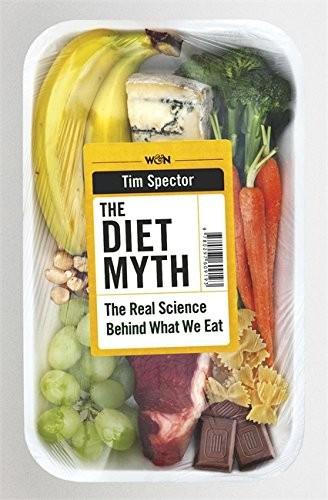
The Diet Myth: The Real Science Behind What We Eat
by
Tim Spector
Published 13 May 2015
The worse the effects of the vodka were on the volunteers, the worse the microbial disruption and the more microbe toxins were generated.13 These LPS toxins from the cell walls have been shown in mice to activate the immune system and create an addiction to alcohol.14 It may sound a bit far-fetched, but it’s possible that microbes could be in part responsible for alcohol addiction in humans. But as always in studies of alcohol there was a wide range of responses, not just genetic but related to the differences in the species and diversity of the microbes already in the vodka volunteers’ guts. While large epidemiological longitudinal studies such as a recent one in the UK continue to report slight protective effects of moderate drinking, particularly in older women, there is still a worry about bias.15 Several studies have used the genes for alcohol intolerance as a proxy for drinking rather than those unreliable questionnaires that rely on old-fashioned honesty.
…
Now we are well aware that studies of national observations such as these can easily mislead. You could, for example, have a similar US map correlating obesity with the use of Facebook or body piercing. So the findings of our two studies were far from proof. Some replication to confirm the antibiotic–obesity hypothesis was needed. The first opportunity came using data from the Avon Longitudinal Study of Parents and Children that I often work with. This follows up 12,000 kids from birth in Bristol, using carefully collected measurements and medical records.15 In this study, exposure to antibiotics in the first six months of life significantly increased – by 22 per cent – the children’s amount of fat and their overall risk of obesity over the next three years.
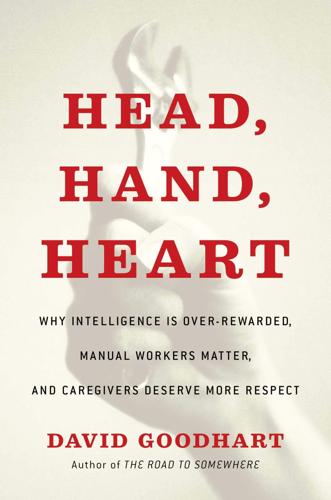
Head, Hand, Heart: Why Intelligence Is Over-Rewarded, Manual Workers Matter, and Caregivers Deserve More Respect
by
David Goodhart
Published 7 Sep 2020
The main debate is about the direction of causality, or how much the economic investment of affluent, well-educated parents contributes to the IQ scores of their children. An important recent study of the “genetics of success” that looked at genetic associations with educational attainment and social mobility provided a mixed picture. The study, led by Daniel Belsky, consisted of five longitudinal studies testing 20,000 individuals in the United States, Britain, and New Zealand.17 The authors concluded that participants with higher polygenic scores achieved most education and career success, but they also tended to come from better-off families. Nevertheless, participants with higher polygenic scores tended to be upwardly mobile compared with their parents, and siblings with the highest polygenic score were the most upwardly mobile.
…
m=201407. 14 Quoted in Julia Ingram, “Cardinal Conversations Speaker Charles Murray Stirs Campus Debate,” Stanford Daily, January 30, 2018. 15 Robert Plomin, Blueprint: How DNA Makes Us Who We Are (London: Allen Lane, 2018). 16 Niki Erlenmeyer-Kimling and Lissy Jarvik, “Genetics and Intelligence: A Review,” Science 142, no. 3590 (1963), 1477–78. 17 Daniel W. Belsky, Benjamin W. Domingue, Robbee Wedow et al., “Genetic Analysis of Social-Class Mobility in Five Longitudinal Studies,” PNAS (Proceedings of the National Academy of Sciences of the United States) 115, no. 31 (2018), 7275–84, https://www.pnas.org/content/115/31/E7275. 18 James Bloodworth, The Myth of Meritocracy (London: Biteback, 2016), 102. 19 Erzsébet Bukodi and John H. Goldthorpe, Social Mobility and Education in Britain: Research, Politics and Policy (Cambridge, UK: Cambridge University Press, 2018). 20 Alice Sullivan, “The Path from Social Origins to Top Jobs: Social Reproduction via Education,” British Journal of Sociology 69, no. 3 (2018), 782–84. 21 Jo Blanden, Paul Gregg, and Stephen Machin, Intergenerational Mobility in Europe and North America: A Report Supported by the Sutton Trust, Centre for Economic Performance, London School of Economics/Sutton Trust (2005). 22 Peter Saunders, Social Mobility Myths (London: Civitas, 2010), 69. 23 Michael Young, The Rise of the Meritocracy, 1870–2033 (London: Thames & Hudson, 1958). 24 Charles Murray, “The Bell Curve Explained: Part 1, the Emergence of a Cognitive Elite,”, American Enterprise Institute, May 12, 2017, https://www.aei.org/society-and-culture/the-bell-curve-explained-part-1-the-emergence-of-a-cognitive-elite/. 25 For summary, see Toby Young, “The Fall of the Meritocracy,” Quadrant Online, September 7, 2015, https://quadrant.org.au/magazine/2015/09/fall-meritocracy/. 26 “The Rise and Rise of the Cognitive Elite: Brains Bring Ever Larger Rewards,” Economist, January 22, 2011. 27 “Modern Women Marrying Men of the Same or Lower Social Class,” IPPR May 4, 2012, https://www.ippr.org/news-and-media/press-releases/modern-women-marrying-men-of-the-same-or-lower-social-class. 28 David Willets, The Pinch: How the Baby Boomers Took Their Children’s Future—and Why They Should Give it Back (London: Atlantic, 2011). 29 Charles Murray, Coming Apart: The State of White America, 1960–2010 (New York: Crown Forum, 2012), 59. 30 Richard Reeves, Dream Hoarders: How the American Upper Middle Class Is Leaving Everyone Else in the Dust, Why That Is a Problem, and What to Do About It (Washington, DC: Brookings Institution, 2017). 31 Daniel Markovits, The Meritocracy Trap: How America’s Foundational Myth Feeds Inequality, Dismantles the Middle Class, and Devours the Elite (London: Allen Lane, 2019). 32 James Bloodworth, The Myth of Meritocracy, 67. 33 Richard Breen, Social Mobility in Europe (Oxford, UK: Oxford University Press, 2004). 34 Andrew Hacker, “The White Plight,” The New York Review of Books, 10 May 2012. 35 David Robson, The Intelligence Trap. 36 Dalton Conley and Jason Fletcher, The Genome Factor: What the Social Genomics Revolution Reveals About Ourselves, Our History, and the Future (Princeton, NJ: Princeton University Press, 2017). 37 Kwame Anthony Appiah, “The Myth of Meritocracy: Who Really Gets What They Deserve?

Cultural Backlash: Trump, Brexit, and Authoritarian Populism
by
Pippa Norris
and
Ronald Inglehart
Published 31 Dec 2018
‘The measurement of core beliefs and values: The development of balanced socialist/ laissez faire and libertarian/authoritarian scales.’ British Journal of Political Science 24 (1): 115–132. 37. Dieter Fuchs and Hans-Dieter Klingemann. 1990. ‘The left–right schema.’ In M. Kent Jennings & Jan W. van Deth. Eds. Continuities in Political Action: A Longitudinal Study of Political Orientations in Three Western Democracies. Berlin: de Gruyter, pp. 203–234; J.D. Huber. 1989. ‘Values and partisanship in left–right orientations: Measuring ideology.’ European Journal of Political Research 17 (5): 599–621; Andre Freire. 2006. ‘Bringing social identities back in: The social anchors of left–right orientation in Western Europe.’
…
The dramatic shock to the Greek economy might explain the political backlash, including the rise of the ultranationalist Golden Dawn, which gained seats for the first time in 2012.49 Major financial crises (characterized by bank runs, sharp increases in default rates, bankruptcies, and large losses of capital) also seem to fuel support for political extremism; one longitudinal study examined parliamentary election results in 20 post-industrial societies from 1870 to 2014, finding that far right parties experienced an average rise of about 30 percent in their vote share in the five years after a systemic financial crisis.50 By contrast, no equivalent gains were recorded for far left parties (and no similar effects were observed for recessions or economic downturns without a financial crash).
…
Responses to hypothetical items (‘would you ever’) tend to be less reliable than reported voting choices (‘how did you vote’), with the risk of generating ‘manufactured’ answers for parties that respondents have not seriously considered supporting. Moreover, reported party preferences may also diverge widely from the actual votes cast, especially for smaller parties, partly due to strategic or tactical voting considerations. The dynamics of individual changes in voting choices are ideally measured from longitudinal studies of electoral behavior using multiwave election surveys (of different respondents over time, such as pre-post election studies), or, even better, panel surveys (repeated observations of the same respondents over time). Panel studies are usually conducted within specific countries, however, which limits their comparative value 264 Who Votes for Authoritarian-Populist Parties?
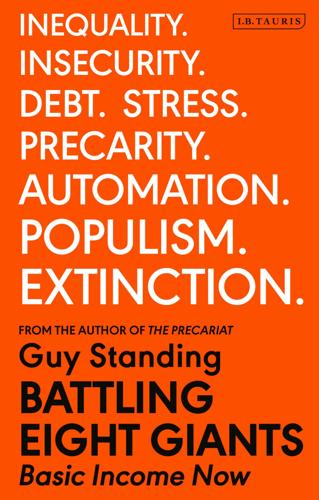
Battling Eight Giants: Basic Income Now
by
Guy Standing
Published 19 Mar 2020
The community-level benefits demonstrate the desirability of designing British basic income pilots to cover everyone in a community rather than just a sample of individuals. Spill-over and communal effects matter. (2) North Carolina An important ‘accidental pilot’ occurred in North Carolina, although it is non-replicable. Shortly after the launch of a long-term longitudinal study of child development in the area, a Native American community decided to convert the profits of the local casino into basic income payments for community members. This enabled researchers to compare outcomes for affected children against those for others in the study. Children in families receiving the basic income did much better in school than those in the control group, and there was a ‘dramatic decrease’ in juvenile crime.
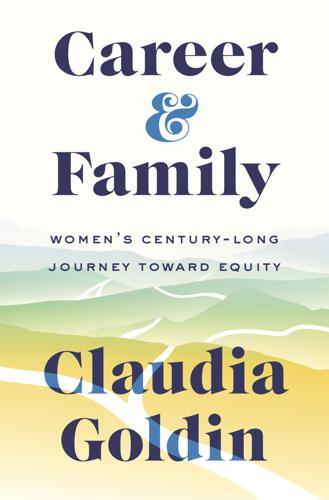
Career and Family: Women’s Century-Long Journey Toward Equity
by
Claudia Goldin
Published 11 Oct 2021
Those in the former group had a mean graduation rate of 32.8 percent, whereas the mean graduation rate for the latter group was 18.5 percent. 127 By about 1990, girls … and were considerably ahead in reading The relative increases in math and science courses and math and reading aptitude test scores are from a comparison of the NLS-72 and the NELS-88 (NLS = National Longitudinal Study; NELS = National Education Longitudinal Study). The changes are consistent with those from the National Assessment of Educational Progress (NAEP), although somewhat larger, and from US Department of Education transcript surveys. See Goldin, Katz, and Kuziemko (2006). 128 but not by much The difference was much less because the levels were so much lower. 128 Half of all women … would have had to switch The calculation involves constructing a simple index of inequality for male and female college majors at graduation.

Stolen Focus: Why You Can't Pay Attention--And How to Think Deeply Again
by
Johann Hari
Published 25 Jan 2022
Nigg, Getting Ahead of ADHD: What Next-Generation Science Says About Treatments That Work (New York: Guilford Press, 2017), 161–62. See also W. Gallagher, Rapt: Attention and the Focused Life (London: Penguin, 2009), 167; and R. C. Herrenkohl, B. P. Egolf, and E. C. Herrenkohl, “Preschool Antecedents of Adolescent Assaultive Behavior: A Longitudinal Study,” American Journal of Orthopsychiatry 67 (1997): 422–32. GO TO NOTE REFERENCE IN TEXT A large study by the British Office of National Statistics: H. Green et al., Mental Health of Children and Young People in Great Britain, 2004 (Basingstoke, U.K.: Palgrave Macmillan, 2005).
…
GO TO NOTE REFERENCE IN TEXT “definite”: Ibid., 92. GO TO NOTE REFERENCE IN TEXT Play builds the foundation of a solid personality, and everything that adults sit down and explain to the child afterward builds on this base: For further evidence of Isabel’s arguments here, see A. Pellegrini et al., “A Short-Term Longitudinal Study of Children’s Playground Games Across the First Year of School: Implications for Social Competence and Adjustment to School,” American Educational Research Journal 39, no. 4 (2002): 991–1015; C. L. Ramstetter, R. Murray, and A. S. Garner, “The Crucial Role of Recess in Schools,” Journal of School Health 80, no. 11 (2010): 517–26; National Association of Early Childhood Specialists in State Departments of Education, Recess and the Importance of Play: A Position Statement on Young Children and Recess (Washington, D.C.: National Association of Early Childhood Specialists in State Departments of Education, 2002); and O.

Magical Urbanism: Latinos Reinvent the US City
by
Mike Davis
Published 27 Aug 2001
Rossell Research in the Teaching of English 30:1 (1996); Patricia de Cos, Educating California's Immi- An grant Children: Overview of Bilingual Education, California Research Bureau (State Li- brary), Sacramento, Calif 1999, p. 46. 224. Diane Aug. and Kenji Hakuta, A Research Agenda, 225. J. National Ramirez, et eds. Improving Schoolingfor Language-Minority Students: , Academy of Sciences, Washington, D.C. 1997. Final Report: Longitudinal Study of Structured English Immersion Strat- al.. and Late-Exit Transitional Bilingual Education Programs for Language-Minority egy, Early-Exit, US Department of Education (300-87-0156), Washington D.C. 1991, p. 48. 226. See discussion in Luis Moll, "Multilingual Classroom Studies and Community Analysis: Some Recent Trends," Educational Researcher 21 (March 1992), pp. 20-24.
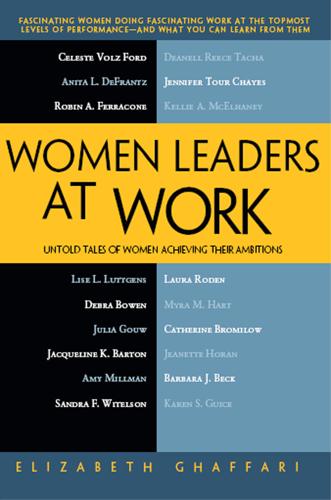
Women Leaders at Work: Untold Tales of Women Achieving Their Ambitions
by
Elizabeth Ghaffari
Published 5 Dec 2011
DeFrantz: Not so much, but sport enriches their lives. We see some studies that say that people are better citizens when they are part of a team. We haven’t actually subsidized those studies ourselves, but we know of them. We have chosen not to spend our money that way. It costs a lot to do those studies. You have to do longitudinal studies. But we know, and believe, and have found that people are better citizens when they’ve had a chance to be a part of a team. A lot of these kids will come back and support the next generation. They come back and volunteer to coach and undertake other tasks. Having a chance to be a part of something larger than yourself is really important.
…
They might be a little more willing to do a survey. I promised that if they did complete the survey, I would share the results with them at the reunion. So I got very good participation. I discovered a great deal about how careers really transition. The surveys were separate snapshots of different people, rather than a longitudinal study following a single group throughout their life, which is research that is very valuable, but extremely time-consuming. One of my colleagues, John Kotter, actually does that. He’s followed the same group since the late 1970s. But my surveys were of a group of people who were queued up for their reunions.
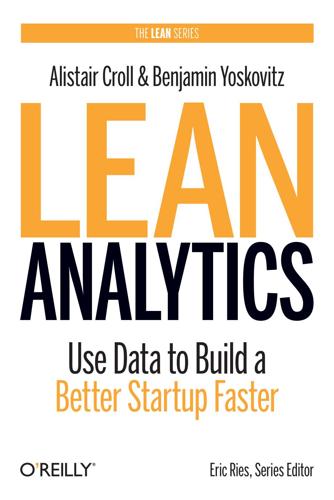
Lean Analytics: Use Data to Build a Better Startup Faster
by
Alistair Croll
and
Benjamin Yoskovitz
Published 1 Mar 2013
This kind of reporting allows you to see patterns clearly against the lifecycle of a customer, rather than slicing across all customers blindly without accounting for the natural cycle a customer undergoes. Cohort analysis can be done for revenue, churn, viral word of mouth, support costs, or any other metric you care about. A/B and Multivariate Testing Cohort experiments that compare groups like the one in Table 2-2 are called longitudinal studies, since the data is collected along the natural lifespan of a customer group. By contrast, studies in which different groups of test subjects are given different experiences at the same time are called cross-sectional studies. Showing half of the visitors a blue link and half of them a green link in order to see which group is more likely to click that link is a cross-sectional study.
…
Li, Charlene, Engagement Funnel Changes Libin, Phil, Backupify’s Customer Lifecycle Learning, Freemium Versus Paid Liew, Roger, Data-Driven Versus Data-Informed LikeBright case study, Getting Answers at Scale LinkedIn site, Finding People to Talk To, LikeBright “Mechanical Turks” Its Way into TechStars local maximum value, Data-Driven Versus Data-Informed Localmind case study, Build It Before You Build It (or, How to Validate the Solution) Lockheed Martin, Lean from Within: Intrapreneurs Long Funnel, The Long Funnel, What Mode of E-commerce Are You? The Long Tail (Anderson), Freemium Versus Paid longitudinal studies, Cohort Analysis Lord, Joanna, The Discipline of One Metric That Matters Lovell, Nicholas, Monthly Average Revenue Per Mobile User loyalty mode (e-commerce model), What Mode of E-commerce Are You?, What Makes a Good Leading Indicator? Luk, Raymond, The Minimum Viable Vision M machine-only optimization, Data-Driven Versus Data-Informed MacLeod, Mark, Upselling and Growing Revenue MailChimp mailing list provider, Virality mailing list click-through rates, A Practical Example, Keywords and Search Terms mailing lists answers-at-scale campaign and, Creating an Answers-at-Scale Campaign determining normal values of metrics, Virality in e-commerce model, A Practical Example, Keywords and Search Terms Maltz, Jules, Freemium Versus Paid managed service provider (MSP), Empathy: Consulting and Segmentation marketing definition, What Business Are You In?
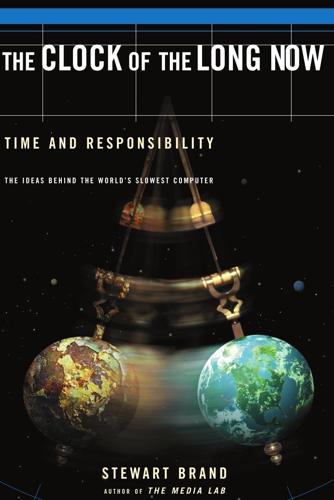
Clock of the Long Now
by
Stewart Brand
Published 1 Jan 1999
It’s useless to try to imagine what the Web might be like in, say, 2045 (only as far removed in time as the bombing of Hiroshima), so we don’t bother. Does this mean that technoids and their camp followers are responsibility-impaired? Could be. Environmentalists are supposed to be the long-view specialists these days, but I think we do it poorly. I was trained as an ecologist, so I know how extremely limited our longitudinal studies are: about the length of time it takes to get a graduate degree. Since it is the long, slow fluctuations and cycles that most influence everything in ecology, we still don’t have the most important information on how natural systems actually work over time. Also, environmentalists are calamity callers.

Introverts in Love: The Quiet Way to Happily Ever After
by
Sophia Dembling
Published 6 Jan 2015
And if you think you might be among them, DePaulo has reassuring news for you: That whole idea that singles are lonely and isolated is a myth. “The evidence is really built up now that what’s really isolating isn’t singlehood, it’s getting married,” DePaulo says, pointing out that married people have less contact with friends, siblings, and other relatives. And she says, “There are American longitudinal studies that show that once they go from being single to being married, they’re basically cutting people out of their lives and marginalizing them.” As a girl, DePaulo never fantasized about getting married. “I always thought, ‘I’m just not bitten by the marriage bug yet,’” she says. But she eventually realized that she probably never would be.

The Meritocracy Trap: How America's Foundational Myth Feeds Inequality, Dismantles the Middle Class, and Devours the Elite
by
Daniel Markovits
Published 14 Sep 2019
See also Charles Murray, “Charles Murray, Author of Coming Apart, Examines Demographic Shifts in This New Decade,” Debate This Book, April 25, 2013, accessed July 19, 2018, http://debatethisbook.com/2013/04/25/charles-murray-author-of-coming-apart-examines-demographic-shifts-in-this-new-decade/. high school degrees only: A longitudinal study based on data from the years between 1979 and 1996 found that 19.2 percent of young adults with just a high school education moved states, while 36.6 percent of college graduates and 45.0 percent of people with more than a college education moved to a different state. See Yolanda K. Kodrzycki, “Migration of Recent College Graduates: Evidence from the National Longitudinal Survey of Youth, New England Economic Review, January–February 2001, 15.
…
Another study reports that 18 percent of children from the richest fifth of households attend private schools, compared to 9 percent of children from the next two-fifths and just 4 percent of children from the bottom two-fifths. Reeves, Dream Hoarders, 47. For the purposes of this study, private schools included parochial schools, and data came from the Educational Longitudinal Study of 2002 Senior Class of 2004 First Follow-Up survey, National Center for Education Statistics. only 7 percent from the bottom half: For a compilation of these data, see Michael T. Owyang and E. Katarina Vermann, “Measuring the Effect of School Choice on Economic Outcomes,” Regional Economist, Federal Reserve Bank of St.
…
And as recently as 1991, the average salary four years out from an elite MBA was just $63,000 (roughly $110,000 in 2015 dollars), while a study of MBA incomes discarded a salary of $450,000 (or about $800,000 in 2015 dollars) as an outlier so far from the pack that its inclusion would misleadingly skew averages. See Charles A. O’Reilly III and Jennifer A. Chatman, “Working Smarter and Harder: A Longitudinal Study of Managerial Success,” Administrative Science Quarterly 39, no. 4 (December 1994): 614. For a more general report on the professional school premium at midcentury’s close, see Michael Simkovic, “The Knowledge Tax,” University of Chicago Law Review 82 (2015). Hereafter cited as Simkovic, “The Knowledge Tax.”

Drive: The Surprising Truth About What Motivates Us
by
Daniel H. Pink
Published 1 Jan 2008
Amabile, Elise Phillips, and Mary Ann Collins, Person and Environment in Talent Development: The Case of Creativity, in Talent Development: Proceedings from the 1993 Henry B. and Jocelyn Wallace National Research Symposium on Talent Development , edited by Nicholas Colangelo, Susan G. Assouline, and DeAnn L. Ambroson (Dayton: Ohio Psychology Press, 1993), 273-74. Jean Kathryn Carney, Intrinsic Motivation and Artistic Success (unpublished dissertation, 1986, University of Chicago); J. W. Getzels and Mihaly Csikszentmihalyi, The Creative Vision: A Longitudinal Study of Problem-Finding in Art (New York: Wiley, 1976). Teresa M. Amabile, Creativity in Context (Boulder, Colo.: Westview Press, 1996), 119; James C. Kaufman and Robert J. Sternberg, eds., The International Handbook of Creativity (Cambridge, UK: Cambridge University Press, 2006), 18. Richard Titmuss, The Gift Relationship: From Human Blood to Social Policy, edited by Ann Oakley and John Ashton, expanded and updated edition (New York: New Press, 1997).
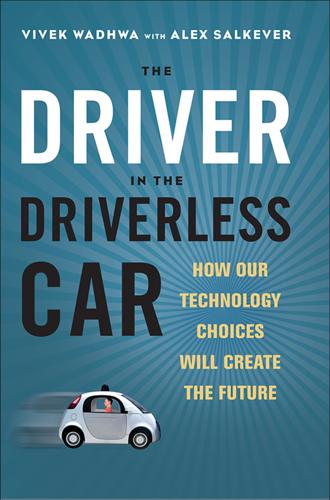
The Driver in the Driverless Car: How Our Technology Choices Will Create the Future
by
Vivek Wadhwa
and
Alex Salkever
Published 2 Apr 2017
Microbiome: Bacterial Rainforest in Your Gut Many children are born with genetic predispositions to type-1 diabetes. Though some of those infants become diabetic in their earlier years, others do not. A key reason for this may lie in the microbiome. In February 2015, researchers from M.I.T. and from Harvard University released the results of the most comprehensive longitudinal study yet of how the diversity and types of gut flora affect onset of this type of diabetes.3 The scientists tracked what happened to the gut bacteria of a large number of subjects from birth to their third year in life, and found that children who became diabetic suffered a 25 percent reduction in their gut bacteria’s diversity.
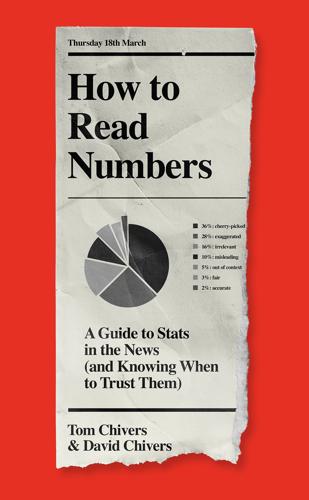
How to Read Numbers: A Guide to Statistics in the News (And Knowing When to Trust Them)
by
Tom Chivers
and
David Chivers
Published 18 Mar 2021
J., ‘Sensation seeking in England and America: cross-cultural, age, and sex comparisons’, Journal of Consulting and Clinical Psychology, 46(1) (1978), pp. 139–49 doi:10.1037//0022-006x.46.1.139 7. Dai, H., Catley, D., Richter, K. P., Goggin., K and Ellerbeck, E. F., ‘Electronic cigarettes and future marijuana use: A longitudinal study’, Pediatrics, 141(5) (2018), e20173787 doi:10.1542/peds.2017-3787 8. Sutfin, E. L., McCoy, T. P., Morrell, H. E. R., Hoeppner, B. B. and Wolfson, M., ‘Electronic cigarette use by college students’, Drug Alcohol Depend, 131(3) (2013), pp. 214–21 doi:10.1016/j.drugalcdep.2013.05.001 Chapter 8: Causality 1.
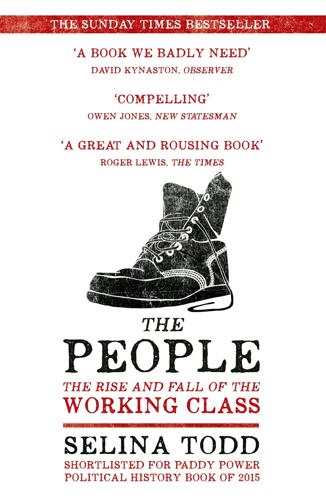
The People: The Rise and Fall of the Working Class, 1910-2010
by
Selina Todd
Published 9 Apr 2014
Ridge, Origins and Destinations: Family, Class and Education in Modern Britain (Oxford, 1980), p. 61, table 4.8, and p. 140, table 8.11. 15. ‘Keep Class Warfare out of the Classrooms’, Liverpool Daily Post (4 January 1962). 16. ‘Golden Gate or Prison Wall?’, Economist (30 January 1951), p. 125. 17. J.W.B. Douglas, J.M. Ross and H.R. Simpson, All Our Future: A Longitudinal Study of Secondary Education (London, 1971). 18. Richard Hoggart recalls this in The Uses of Literacy, and working-class families continued to buy encyclopedias after the Second World War. See, for example, the account of one of the sociologists who visited Luton in the early 1960s to talk to car workers about their affluence.
…
Speech by the Secretary of State for Education and Science, at the North of England Education Conference, January 7th, 1966 (London: Labour Party, 1966) Cullingworth, J.B., Housing in Greater London (London: LSE, 1961) ——Housing in Transition: A Case Study in the City of Lancaster, 1958–1962 (London: Heinemann, 1963) Davies, M.L. (ed.), Life as We Have Known It (London: Virago, 1984) Dennis, N., F. Henriques and C. Slaughter, Coal Is Our Life. An Analysis of a Yorkshire Mining Community (London: Eyre and Spottiswoode, 1956) Douglas, J.W.B. and H.R. Simpson, All our Future: A Longitudinal Study of Secondary Education (London: P. Davies, 1971) Family Welfare Association and Child Poverty Action Group, Carrying the Can: Charities and the Welfare State (London: CPAG, 1984) Floud, J.E. (ed.), with A.H. Halsey and F.M. Martin, Social Class and Educational Opportunity (London: Heinemann, 1956) Gavron, H., The Captive Wife: Conflicts of Housebound Mothers (Harmondsworth: Penguin, 1968) Glass, D.
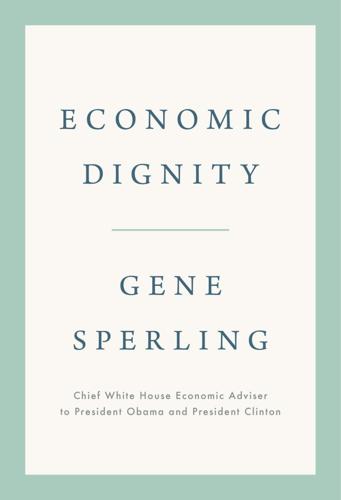
Economic Dignity
by
Gene Sperling
Published 14 Sep 2020
Ashley Nellis, “Color of Justice: Racial and Ethnic Disparity in State Prisons,” Sentencing Project, June 14, 2016, https://www.sentencingproject.org/publications/color-of-justice-racial-and-ethnic-disparity-in-state-prisons/. 47. Christy Visher, Sara Debus, and Jennifer Yahner, “Employment after Prison: A Longitudinal Study of Releasees in Three States,” Urban Institute, October 2008, https://www.urban.org/sites/default/files/publication/32106/411778-Employment-after-Prison-A-Longitudinal-Study-of-Releasees-in-Three-States.PDF. 48. Cory Booker and Mignon Clyburn, “The Unnecessarily High Cost of Inmate Calling Charges Is an Injustice,” Huffington Post, October 13, 2016, https://www.huffpost.com/entry/high-cost-of-inmate-calling-charges-injustice_b_8285802. 49.
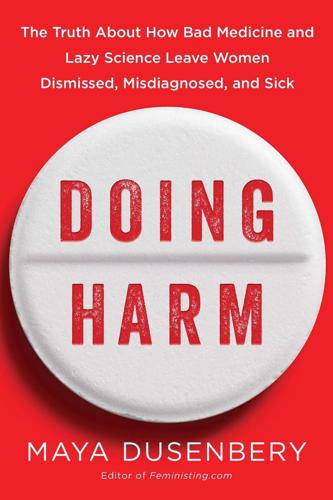
Doing Harm: The Truth About How Bad Medicine and Lazy Science Leave Women Dismissed, Misdiagnosed, and Sick
by
Maya Dusenbery
Published 6 Mar 2018
Olympia Snowe charged. Given the NIH’s lack of record keeping, it was impossible to say exactly how underrepresented women were, but the public learned that women had been left out of many of the largest, most important clinical studies conducted in the last couple of decades. The Baltimore Longitudinal Study of Aging, which began in 1958 and purported to explore “normal human aging,” didn’t enroll any women for the first twenty years it ran. The Physicians’ Health Study, which had recently concluded that taking a daily aspirin may reduce the risk of heart disease? Conducted in 22,071 men and zero women.
…
See also specific disorders Autoimmune Epidemic, The (Nakazawa), 140 back pain/chronic low back pain, 75, 88, 97, 123, 177, 191, 194, 197, 203, 219, 236, 248 Baillou, Guillaume de, 199 Bairey Merz, C. Noel, 111, 120, 121, 134, 135 Ballweg, Mary Lou, 218–19, 221, 222, 223, 224, 225, 227, 228 Baltimore Longitudinal Study of Aging, 25 Barber, Hugh, 306 Bateman, Lucinda, 262, 263, 264, 267, 272 Baylis, Françoise, 39 Beard, George, 66, 199 Beery, Annaliese, 48 Berkowitz, Amy, 312–13; Tender Points, 203–4 Binkley, Karen, 191 Blackwell, Elizabeth, 6 Black Women’s Health Imperative, 156 Blount, Linda, 156 Body of Truth (Brown), 244 Boston Women’s Health Book Collective, 18 Brain on Fire (Cahalan), 168–69 brain tumors, 151–52 Brain Tumour Charity, 151 Brea, Jen, 251–52, 258–59, 264–65, 275, 278, 295, 303, 317; Unrest, 303 breast cancer, 18, 25, 27, 32, 33, 47, 114, 117, 151, 245, 255, 305, 306 Briquet, Pierre, 199 Brody, Jane, 185 Brown, Harriet, Body of Truth, 244, 246 Bynum, W.
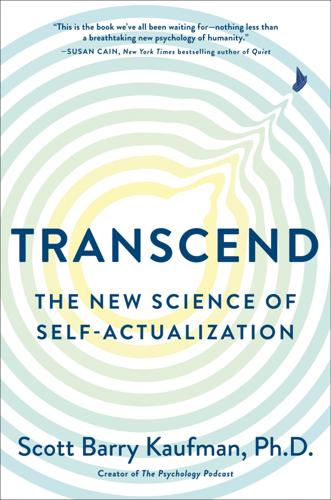
Transcend: The New Science of Self-Actualization
by
Scott Barry Kaufman
Published 6 Apr 2020
Potential social modulation of sleep efficiency. Psychological Science, 13(4), 384–387; Kurina, L. M., et al. (2011). Loneliness is associated with sleep fragmentation in a communal society. Sleep, 34(11), 1519–1526; Luo, Y., Hawkley, L. C., Waite, L. J., & Cacioppo, J. T. (2012). Loneliness, health, and mortality in old age: A national longitudinal study. Social Science & Medicine, 74(6), 907–914; Quora contributor. (2017). Loneliness might be a bigger health risk than smoking or obesity. Forbes. Retrieved from https://www.forbes.com/sites/quora/2017/01/18/loneliness-might-be-a-bigger-health-risk-than-smoking-or-obesity/amp. 9. Scelfo, J. (2015).
…
T. (1981). There’s a S.M.A.R.T. way to write management’s goals and objectives. Management Review, 70, 35–36. 66. Thanks to Jordyn Feingold for developing these examples. 67. Duffy, R. D., Allan, B. A., Autin, K. L., & Douglass, R. P. (2014). Living a calling and work well-being: A longitudinal study. Journal of Counseling Psychology, 61(4), 605–615; Hall, D. T., & Chandler, D. E. (2005). Psychological success: When the career is a calling. Journal of Organizational Behavior, 26(2), 155–176; Vianello, M., Galliani, E. M., Rosa, A. D., & Anselmi, P. (2019). The developmental trajectories of calling: Predictors and outcomes.

Enlightenment Now: The Case for Reason, Science, Humanism, and Progress
by
Steven Pinker
Published 13 Feb 2018
The peak age of poisoning deaths in 2011 was around fifty, up from the low forties in 2003, the late thirties in 1993, the early thirties in 1983, and the early twenties in 1973.57 Do the subtractions and you find that in every decade it’s the members of the generation born between 1953 and 1963 who are drugging themselves to death. Despite perennial panic about teenagers, today’s kids are, relatively speaking, all right, or at least better. According to a major longitudinal study of teenagers called Monitoring the Future, high schoolers’ use of alcohol, cigarettes, and drugs (other than marijuana and vaping) have dropped to the lowest levels since the survey began in 1976.58 * * * With the shift from a manufacturing to a service economy, many social critics have expressed nostalgia for the era of factories, mines, and mills, probably because they never worked in one.
…
This increase in happiness is yet another indicator of human progress, and among the most important of all. Of course this snapshot is not an actual longitudinal chronicle in which people all over the world are polled for centuries and we plot their happiness over time; such data do not exist. But Stevenson and Wolfers scoured the literature for what longitudinal studies there were, and found that in eight out of nine European countries, happiness increased between 1973 and 2009 in tandem with the country’s rise in GDP per capita.24 A confirmation for the world as a whole comes from the World Values Survey, which found that in forty-five out of fifty-two countries, happiness increased between 1981 and 2007.25 The trends over time close the books on the Easterlin paradox: we now know that richer people within a country are happier, that richer countries are happier, and that people get happier as their countries get richer (which means that people get happier over time).
…
But given the poem’s difficulty few of them have managed to figure out precisely why he thinks our age is characterized primarily by anxiety—or even whether he is really saying that at all.”77 Whether he was saying that or not, Auden’s name for our era has stuck, and it provided the obvious title for a meta-analysis by Twenge which showed that scores on a standard anxiety test administered to children and college students between 1952 and 1993 rose by a full standard deviation.78 Things that can’t go on forever don’t, and as best we can tell, the increase among college students leveled off after 1993.79 Nor have other demographic sectors become more anxious. Longitudinal studies of high school students and of adults conducted from the 1970s through the first decades of the 21st century find no rise across the cohorts.80 Though in some surveys people have reported more symptoms of distress, anxiety that crosses the line into pathology is not at epidemic levels, and has shown no global increase since 1990.81 * * * Everything is amazing.

Growth: From Microorganisms to Megacities
by
Vaclav Smil
Published 23 Sep 2019
Even during the colonial times (thanks to an abundance of good farmland and low population density) Americans were taller than any contemporary population whose average heights are known, but there was actually a slight dip in average male height between 1830 and 1890, followed by a more than 10 cm gain by the year 2000 (Komlos 2001; Chanda et al. 2008). Australia has closely matched that rise. And a study of 620 infants born in Ohio between 1930 and 2008 (the Fels Longitudinal Study) showed that the most pronounced differences in growth occurred in the first year of life (Johnson et al. 2012). Boys and girls born after 1970 were 1.4 cm longer, and about 450 g heavier but during their first year of life their growth was slower than that of infants born before 1970 (“catch-down growth”).
…
Chu, W., et al. 2016. A survey analysis of energy use and conservation opportunities in Chinese households. In B. Su and E. Thomson, eds., China’s Energy Efficiency and Conservation. Berlin: Springer, pp. 5–22. Chumlea, W. C., et al. 2009. First seriatim study into old age for weight, stature and BMI: The Fels longitudinal study. Journal of Nutrition, Health & Aging 13:3–5. Churkina, G., et al. 2010. Carbon stored in human settlements: The coterminous United States. Global Change Biology 16:135–143. CIA (Central Intelligence Agency). 2017. The world factbook. ttps://www.cia.gov/library/publications/the-world-factbook/ https://www.cia.gov/library/publications/resources/the-world-factbook/index.html.
…
Westport, CT: Greenwood Press. Johnson, N. P., and J. Mueller. 2002. Updating the accounts: Global mortality of the 1918–1920 “Spanish” influenza pandemic. Bulletin of the History of Medicine 76:105–115. Johnson. W., et al. 2012. Eighty-year trends in infant weight and length growth: The Fels Longitudinal Study. Journal of Pediatrics 160:762–768. Johnston, L., and S. H. Williamson. 2017. What was the U.S. GDP then? Measuring worth. http://www.measuringworth.org/usgdp/. Jones, C. I. 1995. R&D-based models of economic growth. Journal of Political Economy 103:759–784. Jones, H. 1973. Steam Engines.
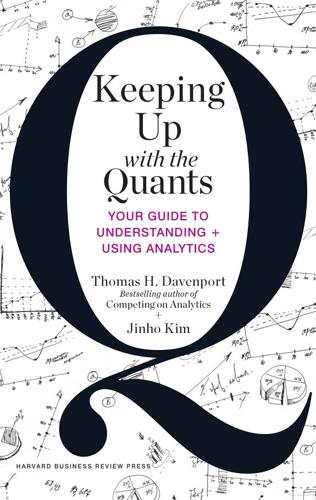
Keeping Up With the Quants: Your Guide to Understanding and Using Analytics
by
Thomas H. Davenport
and
Jinho Kim
Published 10 Jun 2013
The study’s focus was to understand how changes in the brain could be linked to Alzheimer’s and other neurological disorders in advanced age. MODELING (VARIABLE SELECTION). Participants in Snowdon’s study were members of the School Sisters of Notre Dame religious congregation in Milwaukee, Wisconsin. From 1991 to 1993, women from the convent who were born before 1917 were asked to join the Nun Study, a longitudinal study of aging and Alzheimer’s disease. Of the 1,027 eligible sisters, 678 (66 percent) agreed to participate and gave informed written consent. The participation rate in the Nun Study is relatively high, given that all participants agreed to donate their brains upon death, as well as undergo annual assessments of cognitive and physical function.
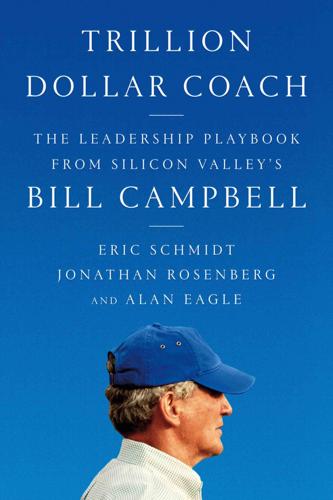
Trillion Dollar Coach: The Leadership Playbook of Silicon Valley's Bill Campbell
by
Eric Schmidt
,
Jonathan Rosenberg
and
Alan Eagle
Published 15 Apr 2019
Yzerbyt, “You Want to Appear Competent? Be Mean! You Want to Appear Sociable? Be Lazy! Group Differentiation and the Compensation Effect,” Journal of Experimental Social Psychology 45, no. 2 (February 2009): 363–67. 2.Kaplan, Startup, 42. 3.Sigal G. Barsade and Olivia A. O’Neill, “What’s Love Got to Do with It? A Longitudinal Study of the Culture of Companionate Love and Employee and Client Outcomes in a Long-term Care Setting,” Administrative Science Quarterly 59, no. 4 (November 2014): 551–98. 4.Suzanne Taylor, Kathy Schroeder, and John Doerr, Inside Intuit: How the Makers of Quicken Beat Microsoft and Revolutionized an Entire Industry (Boston: Harvard Business Review Press, 2003), 231. 5.Jason M.
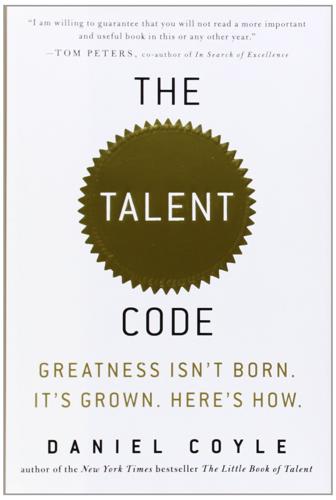
The Talent Code: Greatest Isn't Born, It's Grown, Here's How
by
Daniel Coyle
Published 27 Apr 2009
Scarmeas et al., “Influence of Leisure Activity on the Incidence of Alzheimer's Disease,” Neurology 57 (2001), 2236–42. For more on Carol Dweck's middle-schooler study, see L. S. Blackwell, K. H. Tvzesniewski, and C. S. Dweck, “Implicit Theories of Intelligence Predict Achievement Across an Adolescent Transition: A Longitudinal Study and an Intervention,” Child Development 78 (2007), 246–63. Finally, I relied on a vast field of books about skill and talent. Among the best I number the following. Some are memoirs and biographies, included because they offer such vivid depictions of the skill-building process. They may never use the word myelin, but its presence is felt on every page.
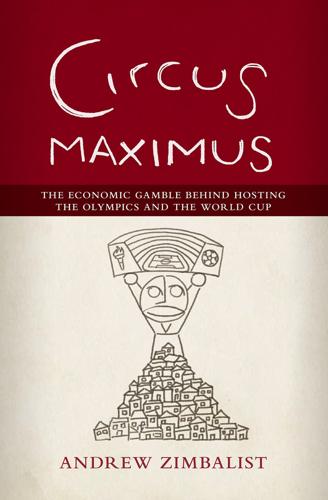
Circus Maximus: The Economic Gamble Behind Hosting the Olympics and the World Cup
by
Andrew Zimbalist
Published 13 Jan 2015
The brochure was prepared by a New York City public relations firm, Fleishman-Hillard. 4. European Tour Operators Association (ETOA), Olympic Report, ETOA Report 2006 (www.etoa.org), p. 6. 5. Ibid. 6. J. R. Brent Ritchie and Brian H. Smith, “The Impact of a Mega-Event on Host Region Awareness: A Longitudinal Study,” Journal of Travel Research 30, no. 1 (1991): 3–10. 7. ETOA, “Olympics and Tourism,” ETOA Report 2010 (www.etoa.org), p. 1. It is perhaps reasonable to question the objectivity of the ETOA. On the one hand, as a tourist trade association, one would suspect that the ETOA would be a proponent of any event that lifted tourism and hence would be inclined to be supportive of the Olympics if the games indeed lift tourism.
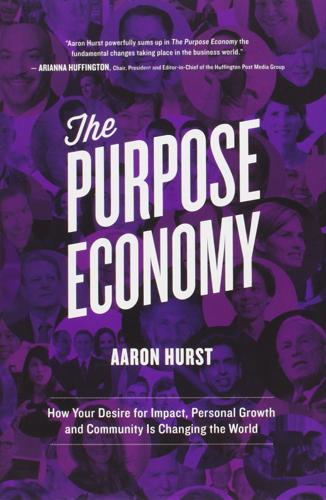
The Purpose Economy: How Your Desire for Impact, Personal Growth and Community Is Changing the World
by
Aaron Hurst
Published 31 Aug 2013
Colin and Campbell, Thomas. The China Study. Dallas, 2004. Print. Cameron, Kim S., Jane E. Dutton, and Robert E. Quinn. Positive Organizational Scholarship: Foundations of a New Discipline. San Francisco, CA: Berrett-Koehler, 2003. Print. Chatman, J. A. & O’Reilly, C. A. 1994. “Working smarter and harder: A longitudinal study of managerial success.” Administrative Science Quarterly, 39: 603-627. Chatman, J. A. 1991. “Matching people and organizations: Selection and socialization in public accounting firms.” Administrative Science Quarterly, 36: 459-484. Chesbrough, Henry William., Wim Vanhaverbeke, and Joel West.
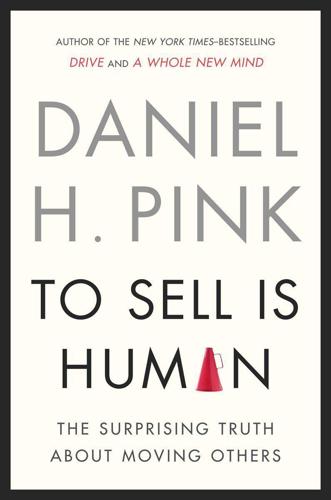
To Sell Is Human: The Surprising Truth About Moving Others
by
Daniel H. Pink
Published 1 Dec 2012
Samanez-Larken, and Brian Knutson, “Don’t Stop Thinking About Tomorrow: Individual Differences in Future-Self Continuity Account for Saving,” Judgment and Decision Making 4 (2009): 280–86. 6. Hershfield et al., “Increasing Saving Behavior.” 7. Jacob Getzels and Mihaly Csikszentmihalyi, The Creative Vision: A Longitudinal Study of Problem Finding in Art (New York: Wiley, 1976); Mihaly Csikszentmihalyi and Jacob Getzels, “Creativity and Problem Finding,” in Frank H. Farley and Ronald W. Neperud, eds., The Foundations of Aesthetics, Art, and Art Education (New York: Praeger, 1988). The quotation itself appears in Mihaly Csikszentmihalyi, Flow: The Psychology of Optimal Experience (New York: Harper Perennial, 1981), 277. 8.
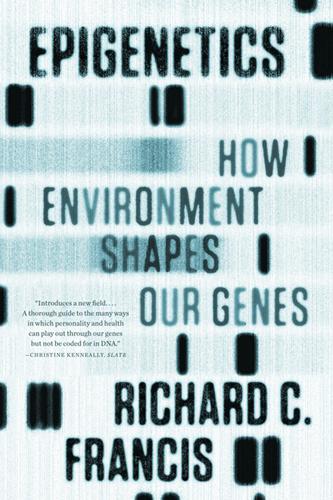
Epigenetics: How Environment Shapes Our Genes
by
Richard C. Francis
Published 14 May 2012
See the following regarding epigenetic sources of discordance: for lupus, Ballestar, Esteller, et al. (2006); and for Alzheimer’s disease, Mastroeni, McKee, et al. (2009). Singh and O’Reilly (2009) provide evidence of epigenetic divergence in monozygotic twins discordant for schizophrenia; see also Kato, Iwamoto, et al. (2005). Chapter 1. A Grandmother Effect 1. Stein and Susser (1975). 2. This ongoing longitudinal study is an international collaboration, involving several departments of the Academic Medical Center in Amsterdam and the MRC (Medical Research Council) at the University of Southampton in England. 3. Smith (1947). 4. Stein, Susser, et al. (1972); Ravelli, Stein, et al. (1976). 5. Hoch (1998).

"They Take Our Jobs!": And 20 Other Myths About Immigration
by
Aviva Chomsky
Published 23 Apr 2018
Department of Education: Diane August and Timothy Shanahan, eds., Developing Literacy in Second-Language Learners: Report of the National Literacy Panel on Language-Minority Children and Youth (Mahwah, NJ: Lawrence Erlbaum Associates, 2006). See also J. D. Ramirez, S. D. Yuen, D. R. Ramey, and D. Pasta, Longitudinal Study of Structured English Immersion Strategy, Early-Exit and Late-Exit Transitional Bilingual Education Programs for Language Minority: Final Report, vols. 1 and 2 (San Mateo, CA: Aguirre International, 1991), and Stephen Krashen and Grace McField, “What Works? Reviewing the Latest Evidence on Bilingual Education,” Language Learner, November–December 2005, 7–10, 34, http://users.rcn.com/crawj/langpol/Krashen-McField.pdf. 11.

Addiction by Design: Machine Gambling in Las Vegas
by
Natasha Dow Schüll
Published 15 Jan 2012
. ———. 2003. “Exploring the Limits of Responsible Gambling: Harm Minimization or Consumer Protection?” Gambling Research: Journal of the National Association for Gambling Studies (Australia) 15: 29–44. Dickerson, M., J. Haw, and L. Shepherd. 2003. The Psychological Causes of Problem Gambling: A Longitudinal Study of At Risk Recreational EGM Players. Sydney: University of Western Sydney, School of Psychology, Bankstown Campus, www.austgamingcouncil.org.au/images/pdf/eLibrary/1575.pdf, accessed June 2007. Dickerson, M., J. Hinchy, S. L. England, J. Fabre, and R. Cunningham. 1992. “On the Determinants of Persistent Gambling Behaviour.
…
High Stakes: The Rising Costs of America’s Gambling Addiction. Boston: Beacon Press. “Slot Machines and Pinball Games.” 1950. Annals of the American Academy of Political and Social Science 269: 62–70. “A Slot Maker for All Seasons.” 1996. International Gaming and Wagering Business, September 18. Slutske, W. S. 2007. “Longitudinal Studies of Gambling Behavior.” In Research and Measurement Issues in Gambling Studies, edited by G. Smith, D. C. Hodgins, and R. J. Williams, 127–54. London: Elsevier. Smith, Garry. 2008. “Accountability and Social Responsibility in the Regulation of Gambling in Ontario.” Paper presented at the Alberta Gaming Research Institute Annual Conference.

The Barbell Prescription: Strength Training for Life After 40
by
Jonathon Sullivan
and
Andy Baker
Published 2 Dec 2016
AdopheQuetelet (1796-1874)—the average man and indices of obesity. Nephrol Dial Transplant 2008; 23(1):47-51. Ellington WR. Evolution and physiological roles of phosphagen systems. Ann Rev Physiol 2001;63:289-325. Engelke K, Kemmler W, Lauber D, et al. Exercise maintains bone density at spine and hip EFOPS: a 3-year longitudinal study in early postmenopausal women. Osteoporosis Int 2006;17:133-142. Erikkson J, Taimela S, Koivisto VA. Exercise and the metabolic syndrome. Diabetalogica 1997;40:125-135. Erikson EF, Glerup H. Vitamin D deficiency and aging: implications for general health and osteoporosis. Biogerontology 2002;3:73-77.
…
Gripping matters: Anatomy 501 for the press. 2013 The Aasgaard Company. http://startingstrength.com/article/gripping_matters Ferreira I, Twisk JS, van Mechelen W et al. Development of fitness, fatness and lifestyle from adolescence to the age of 36 years. Determinants of the metabolic syndrome in young adults: the Amsterdam Growth and Health Longitudinal Study. Arch Intern Med 2005;165(1):42-48. Ferreira R, Neuparth MJ, Vitorino R, et al. Evidences of apoptosis during the early phases of soleus muscle atrophy in hindlimb suspended mice. Physiol Res 2008;57:601-11. Ferris LT, Williams JS, Shen CL. The effect of acute exercise on serum brain-derived neurotrophic factor levels and cognitive function.

The Alignment Problem: Machine Learning and Human Values
by
Brian Christian
Published 5 Oct 2020
See, e.g., Benjamin and Bruce, “From Bottle-Fed Chimp to Bottlenose Dolphin.” 8. Meltzoff and Moore, “Imitation of Facial and Manual Gestures by Human Neonates” and Meltzoff and Moore, “Newborn Infants Imitate Adult Facial Gestures.” Note that these results have recently become somewhat controversial. For instance, see Oostenbroek et al., “Comprehensive Longitudinal Study Challenges the Existence of Neonatal Imitation in Humans.” But see also the rebuttal in, e.g., Meltzoff et al., “Re-examination of Oostenbroek et al. (2016).” 9. Alison Gopnik, personal interview, September 19, 2018. 10. Haggbloom et al., “The 100 Most Eminent Psychologists of the 20th Century.” 11.
…
Amsterdam: IOS Press, 2008. O’Neil, Cathy. Weapons of Math Destruction: How Big Data Increases Inequality and Threatens Democracy. Crown, 2016. Oostenbroek, Janine, Thomas Suddendorf, Mark Nielsen, Jonathan Redshaw, Siobhan Kennedy-Costantini, Jacqueline Davis, Sally Clark, and Virginia Slaughter. “Comprehensive Longitudinal Study Challenges the Existence of Neonatal Imitation in Humans.” Current Biology 26, no. 10 (2016): 1334–48. Ord, Toby. “Moral Trade.” Ethics 126, no. 1 (2015): 118–38. ———. The Precipice: Existential Risk and the Future of Humanity. Hachette Books, 2020. Orseau, Laurent. “Universal Knowledge-Seeking Agents.”

Addiction by Design: Machine Gambling in Las Vegas
by
Natasha Dow Schüll
Published 19 Aug 2012
. ———. 2003. “Exploring the Limits of Responsible Gambling: Harm Minimization or Consumer Protection?” Gambling Research: Journal of the National Association for Gambling Studies (Australia) 15: 29–44. Dickerson, M., J. Haw, and L. Shepherd. 2003. The Psychological Causes of Problem Gambling: A Longitudinal Study of At Risk Recreational EGM Players. Sydney: University of Western Sydney, School of Psychology, Bankstown Campus, www.austgamingcouncil.org.au/images/pdf/eLibrary/1575.pdf, accessed June 2007. Dickerson, M., J. Hinchy, S. L. England, J. Fabre, and R. Cunningham. 1992. “On the Determinants of Persistent Gambling Behaviour.
…
High Stakes: The Rising Costs of America’s Gambling Addiction. Boston: Beacon Press. “Slot Machines and Pinball Games.” 1950. Annals of the American Academy of Political and Social Science 269: 62–70. “A Slot Maker for All Seasons.” 1996. International Gaming and Wagering Business, September 18. Slutske, W. S. 2007. “Longitudinal Studies of Gambling Behavior.” In Research and Measurement Issues in Gambling Studies, edited by G. Smith, D. C. Hodgins, and R. J. Williams, 127–54. London: Elsevier. Smith, Garry. 2008. “Accountability and Social Responsibility in the Regulation of Gambling in Ontario.” Paper presented at the Alberta Gaming Research Institute Annual Conference.
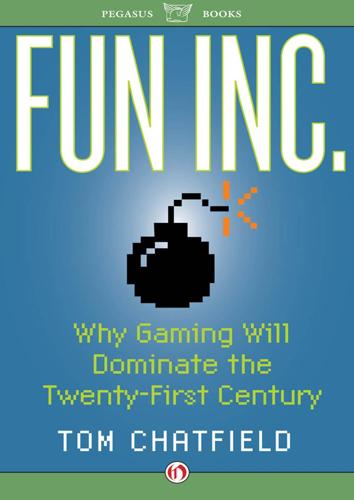
Fun Inc.
by
Tom Chatfield
Published 13 Dec 2011
is itself flawed in that ‘it assumes that such games have only negative effects and ignores the possibility of positive effects’ such as the possibility that violent games allow ‘catharsis’ of a kind in their players. This, for many people, is sufficiently radical stuff to provoke considerable scepticism. And, indeed, 2008 saw a rather different case being made by a peer-reviewed longitudinal study of violence in games published in the US journal Pediatrics. A joint venture between American and Japanese academics, this paper (‘Longitudinal Effects of Violent Video Games on Aggression in Japan and the United States’) argued that, across three samples of Japanese and American secondary school pupils examined at two points in time over a period of three to six months, ‘habitual violent video game play early in the school year predicted later aggression, even after controlling for gender and previous aggressiveness in each sample’.
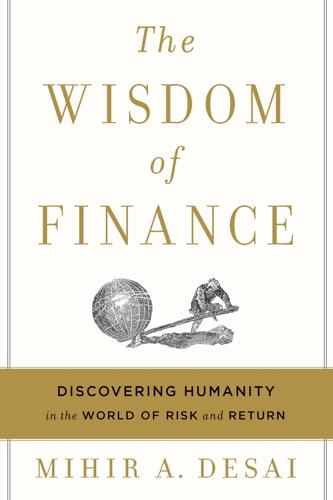
The Wisdom of Finance: Discovering Humanity in the World of Risk and Return
by
Mihir Desai
Published 22 May 2017
Commitments to smart and demanding people keep us from doing stupid things—we gain from those commitments. Leverage is not a zero-sum game. In addition to allowing you to be more productive and raising your own standards, embedding yourself in meaningful relationships is simply good for you. George Vaillant, a research psychiatrist, helped conduct the longest longitudinal study of emotional and physical development by continuing the so-called Grant Study of Harvard undergraduates in the late 1930s. By tracking physiological and emotional data over more than seventy years, Vaillant and his colleagues provide some of the best evidence on what matters for longevity and happiness.

Robots Will Steal Your Job, But That's OK: How to Survive the Economic Collapse and Be Happy
by
Pistono, Federico
Published 14 Oct 2012
Jan-Emmanuel De Neve has taken the study a step further, picking a popular suspect – the gene that encodes the serotonin-transporter protein, a molecule that shuffles a brain messenger called serotonin through cell membranes – and examined how variants of the 5-HTT gene affect levels of happiness. The serotonin-transporter gene comes in two functional variants – long and short – and people have two versions (known as alleles) of each gene, one from each parent. After examining genetic data from more than 2,500 participants in the National Longitudinal Study of Adolescent Health, De Neve found that people with one long allele were 8% more likely than those with none to describe themselves as very satisfied with life and those with two long alleles were 17% more likely of describing themselves as very satisfied. Interestingly enough, there is a notable variation across races with Asian Americans in the sample having on average 0.69 long genes, white Americans with 1.12, and black Americans with 1.47. ’It has long been suspected that this gene plays a role in mental health but this is the first study to show that it is instrumental in shaping our individual happiness levels,’ writes De Neve. ’This finding helps to explain why we each have a unique baseline level of happiness and why some people tend to be naturally happier than others, and that is in no small part due to our individual genetic make-up.”’, 2011.

Inequality and the 1%
by
Danny Dorling
Published 6 Oct 2014
Taussig, Beauty and the Beast (Chicago: University of Chicago Press, 2012), pp. 11, 152. 3. G. Dines, ‘Downton Abbey and House of Cards: Dramas that Live in the World of the 1 Per Cent’, Guardian, 20 February 2014. 4. N. Powdthavee and A. J. Oswald, ‘Does Money Make People Right-Wing and Inegalitarian? A Longitudinal Study of Lottery Winners’, Warwick University Working Paper, 2014, at ideas.repec.org. 5. C. Davies, ‘Lottery Millionaires Each Fund Six Jobs a Year, Study Shows’, Guardian, 22 October 2012. 6. M. Robinson and J. Stevens, ‘Couple Who Scooped £148 Million Lottery Jackpot to Divorce Just Over a Year Since Their Win’, Daily Mail, 20 November 2013. 7.

Once the American Dream: Inner-Ring Suburbs of the Metropolitan United States
by
Bernadette Hanlon
Published 18 Dec 2009
Business research methods. 8th ed. New York: McGraw-Hill Higher Education. Cortina, Jose M. 1993. What is coefficient alpha? An examination of theory and applications. Journal of Applied Psychology 78 (1): 98–104. Coulton, Claudia, Tsui Chan, Michael Schramm, and Kristen Mikelbank. 2008. Pathways to foreclosure: A longitudinal study of mortgage loans, Cleveland and Cuyahoga County, 2005 to 2008. Report by the Center on Urban Poverty and Community Development at Case Western University. Cleveland, OH: Case Western University. Danielson, Michael N. 1972. Suburbs: The politics of exclusion. New York: Columbia University Press.
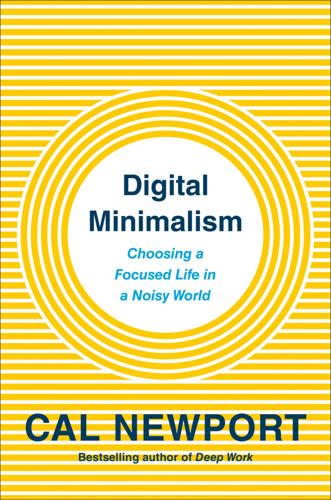
Digital Minimalism: Choosing a Focused Life in a Noisy World
by
Cal Newport
Published 5 Feb 2019
Colditz, Ana Radovic, and Elizabeth Miller, “Social Media Use and Perceived Social Isolation among Young Adults in the U.S.,” American Journal of Preventive Medicine 53, no. 1 (July 2017): 1–8, https://doi.org/10.1016/j.amepre.2017.01.010. “It’s social media, so aren’t people”: Hobson, “Feeling Lonely?” “Our results show that overall”: Holly B. Shakya and Nicholas A. Christakis, “Association of Facebook Use with Compromised Well-Being: A Longitudinal Study,” American Journal of Epidemiology 185, no. 3 (February 2017): 203–11, https://doi.org/10.1093/aje/kww189. These negative connections still held: Shakya and Christakis, “Association of Facebook Use,” 205–6. “What we know at this point”: Hobson, “Feeling Lonely?” “Where we want to be cautious”: Hobson, “Feeling Lonely?”

The Right Side of History
by
Ben Shapiro
Published 11 Feb 2019
Only living with moral purpose can grant profound happiness.12 As Austrian psychiatrist Viktor Frankl wrote in his stirring memoir about surviving the Holocaust, Man’s Search for Meaning, “Woe to him who saw no more sense in his life, no aim, no purpose, and therefore no point in carrying on. He was soon lost. . . . We had to learn ourselves and, furthermore, we had to teach the despairing men, that it did not really matter what we expected from life, but rather what life expected from us.”13 Frankl’s feeling isn’t anecdotal. According to a fourteen-year longitudinal study from the University of Carleton in Canada, those who reported strong purpose in life at the outset of the study were 15 percent more likely to still be alive than those who did not. That statistic held true for every age group. Another similar study from the University College London found that for those above retirement age, a sense of purpose correlated with a 30 percent decrease in chances of death over an eight-and-a-half-year period.

The Better Angels of Our Nature: Why Violence Has Declined
by
Steven Pinker
Published 24 Sep 2012
The psychologist Satoshi Kanazawa has analyzed two large American datasets and found that in both, intelligence correlates with the respondents’ political liberalism, holding age, sex, race, education, earnings, and religion statistically constant.271 Among more than twenty thousand young adults who had participated in the National Longitudinal Study of Adolescent Health, average IQ increased steadily from those who identified themselves as “very conservative” (94.8) to those who identified themselves as “very liberal” (106.4). The General Social Survey shows a similar correlation, while also containing a hint that intelligence tracks classical liberalism more closely than left-liberalism.
…
Benefits of self-control: Tangney et al., 2004. 97. Crime and self-control: Gottfredson, 2007; Gottfredson & Hirschi, 1990; Wilson & Herrnstein, 1985. 98. Delay of gratification and aggression: Rodriguez, Mischel, & Shoda, 1989. 99. Teacher ratings of impulsiveness and aggressiveness: Dewall et al., 2007; Tangney et al., 2004. 100. Longitudinal study of temperament: Caspi, 2000. See also Beaver, DeLisi, Vaughn, & Wright, 2008. 101. Violent and nonviolent crimes correlated in New Zealand sample: Caspi et al., 2002. 102. Maturation of frontal lobes: Fuster, 2008, pp. 17–19. 103. Delay discounting doesn’t correlate with juvenile delinquency: Wilson & Daly, 2006. 104.
…
Tooby, eds., The adapted mind: Evolutionary psychology and the generation of culture. New York: Oxford University Press. Côté, S. M., Vaillancourt, T., LeBlanc, J. C., Nagin, D. S., & Tremblay, R. E. 2006. The development of physical aggression from toddlerhood to pre-adolescence: A nationwide longitudinal study of Canadian children. Journal of Abnormal Child Psychology, 34, 71–85. Courtois, S., Werth, N., Panné, J.-L., Paczkowski, A., Bartosek, K., & Margolin, J.-L. 1999. The black book of communism: Crimes, terror, repression. Cambridge, Mass.: Harvard University Press. Courtwright, D. T. 1996.

Democratizing innovation
by
Eric von Hippel
Published 1 Apr 2005
American Journal of Sociology 85: 1356–1375. Oliver, P. E., and G. Marwell. 1988. “The Paradox of Group Size in Collective Action: A Theory of the Critical Mass II.” American Sociological Review 53, no. 1: 1–18. Olson, E. L., and G. Bakke. 2001. “Implementing the Lead User Method in a High Technology Firm: A Longitudinal Study of Intentions versus Actions.” Journal of Product Innovation Management 18, no. 2: 388–395. Olson, M. 1967. The Logic of Collective Action. Harvard University Press. 192 Bibliography O’Mahony, S. 2003. “Guarding the Commons: How Open Source Contributors Protect Their Work.” Research Policy 32, no. 7: 1179–1198.

Without Conscience: The Disturbing World of the Psychopaths Among Us
by
Robert D. Hare
Published 1 Nov 1993
Northvale, NT: Jason Aronson, Inc. Chapter 10. The Roots of the Problem 1. Stories of adopted children who wreak havoc on their new families are not uncommon. However, most accounts of the early manifestations of psychopathy are provided by the biological parents of the children involved. 2. Longitudinal studies of the progression of psychopathy and antisocial behavior from childhood to adulthood include: Lee N. Robins (1966). Deviant Children Grow Up. Baltimore, MA: Williams & Wilkins; David Farrington (1991). Antisocial personality from childhood to adulthood. The Psychologist 4, 389–94. 3. A review of the research literature on this topic was provided by B.
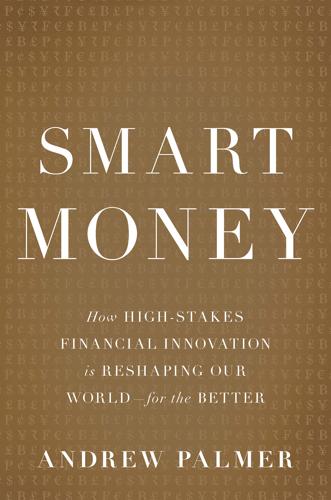
Smart Money: How High-Stakes Financial Innovation Is Reshaping Our WorldÑFor the Better
by
Andrew Palmer
Published 13 Apr 2015
And the availability of data online means that firms like Upstart can analyze the likely earnings power of youngsters in more sophisticated ways than ever before. The first thing Paul Gu did when he had the idea for equity-funded education was crunch some numbers. Public data from a couple of longitudinal studies showing the long-term relationship between education and income in the United States enabled him to build what he describes as “a simple multivariate regression model”—you know the sort, we’ve all built one—and work out the relationships between things such as test scores, degrees, and first jobs on later income.

What Doctors Feel: How Emotions Affect the Practice of Medicine
by
Danielle Ofri
Published 3 Jun 2013
Alessio Avenanti, Angela Sirigu, and Salvatore M. Aglioti, “Racial Bias Reduces Empathic Sensorimotor Resonance with Other-Race Pain,” Current Biology (2010): 1018–22. 2. B. W. Newton et al., “Is There Hardening of the Heart During Medical School?” Academic Medicine 83 (2008): 244–49; M. Hojat et al., “The Devil Is in the Third Year: A Longitudinal Study of Erosion of Empathy in Medical School,” Academic Medicine 84 (2009): 1182–91; M. Neumann et al., “Empathy Decline and Its Reasons: A Systematic Review of Studies with Medical Students and Residents,” Academic Medicine 86 (2011): 996–1009. 3. D. Wear et al., “Making Fun of Patients: Medical Students’ Perceptions and Use of Derogatory and Cynical Humor in Clinical Settings,” Academic Medicine 81 (2006): 454–62; G.
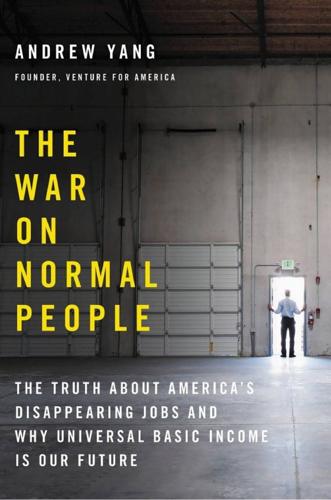
The War on Normal People: The Truth About America's Disappearing Jobs and Why Universal Basic Income Is Our Future
by
Andrew Yang
Published 2 Apr 2018
Then, something unexpected happened—25 percent of their families started receiving $4,000 per person. They were Cherokee Indians, and a casino had just been built nearby, with earnings flowing to tribal members. This development turned into a research treasure trove. “It would be almost impossible to replicate this kind of longitudinal study,” said Randall Akee, an economics professor at UCLA. Akee found that the impact of the extra cash actually impacted the children’s personalities over the years. Behavioral and emotional disorders went down. Two personality traits became more pronounced—conscientiousness and agreeableness. Both correlate strongly with holding a job and maintaining a steady relationship.
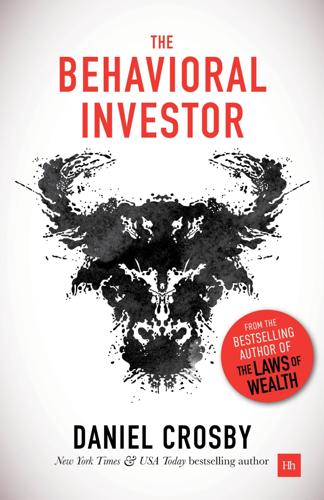
The Behavioral Investor
by
Daniel Crosby
Published 15 Feb 2018
Time travel “Time flies when you’re having fun” is a cliché that masks a larger truth: emotion dramatically impacts our perception of time. Specifically, intense emotion truncates our timelines and makes the here-and-now seem like all that is or will ever be. Investors, for whom time is the great wealth compounder, are profoundly hurt by this tendency of emotion to ground them in the short term. Lynch and Bonnie’s (1994) longitudinal study of smoking behavior is proof that strong emotion in the moment can lead to a lifetime of harmful decisions. High school students in their study were asked if they would still be smoking five years hence. Among occasional smokers, 15% predicted that they would be smoking in five years, compared to 32% of those who smoked one pack a day.
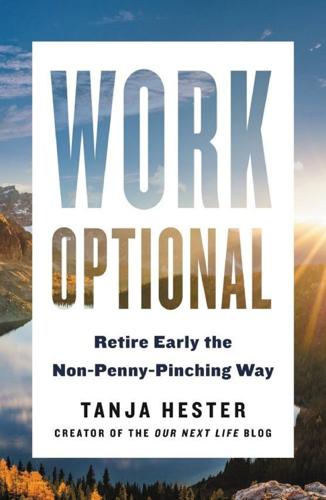
Work Optional: Retire Early the Non-Penny-Pinching Way
by
Tanja Hester
Published 12 Feb 2019
Kim, and Heather Hofmeister, “Couples’ Work/Retirement Transitions, Gender, and Marital Quality,” Social Psychology Quarterly 64, no. 1 (2001): 55–71. Chapter 11: Make Your Well-Being a Top Priority 1. Liz Mineo, “Good Genes Are Nice, but Joy Is Better,” Harvard Gazette, April 11, 2017. Extensively references the Harvard Study of Adult Development, an 80-year-long longitudinal study that began in 1938. 2. David Ekerdt, “The Busy Ethic: Moral Continuity Between Work and Retirement,” Gerontologist 26, no. 3 (1986): 239–244. Chapter 12: Conclusion: Live a Purpose-Filled Life 1. Nancy Schlossberg, Retire Smart, Retire Happy (Washington, DC: American Psychological Association, 2003).

On Paradise Drive: How We Live Now (And Always Have) in the Future Tense
by
David Brooks
Published 2 Jun 2004
To them, the friendship relationship was higher, more intimate, and more satisfying than the sexual or even the romantic relationship. Friendships are forever, whereas just look at romance…that breaks apart. As one male student put it, in a phrase I heard a few times, “Bros before hos.” (The female counter to that phrase is “Chicks before dicks.”) It should be said that these students are idealizing friendships. Every longitudinal study of young people shows that Americans between sixteen and twenty-two build and abandon intimate friendships with astounding speed. The friends of freshman year are probably not the same friends of junior year. And yet it is that ideal—the happy, flexible clique with an undertone of sexual tension (just like on Friends) that beckons as the preferred social bond.
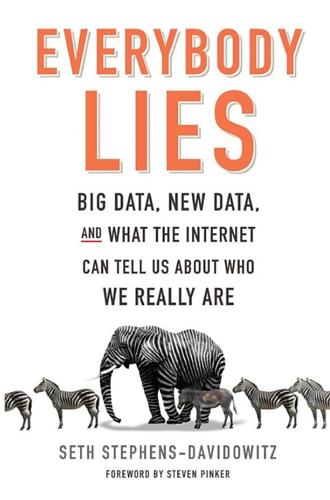
Everybody Lies: Big Data, New Data, and What the Internet Can Tell Us About Who We Really Are
by
Seth Stephens-Davidowitz
Published 8 May 2017
The Effect of Assassinations on Institutions and War,” American Economic Journal: Macroeconomics 1, no. 2 (2009). 229 winning the lottery does not: This point is made in John Tierney, “How to Win the Lottery (Happily),” New York Times, May 27, 2014, D5. Tierney’s piece discusses the following studies: Bénédicte Apouey and Andrew E. Clark, “Winning Big but Feeling No Better? The Effect of Lottery Prizes on Physical and Mental Health,” Health Economics 24, no. 5 (2015); Jonathan Gardner and Andrew J. Oswald, “Money and Mental Wellbeing: A Longitudinal Study of Medium-Sized Lottery Wins,” Journal of Health Economics 26, no. 1 (2007); and Anna Hedenus, “At the End of the Rainbow: Post-Winning Life Among Swedish Lottery Winners,” unpublished manuscript, 2011. Tierney’s piece also points out that the famous 1978 study—Philip Brickman, Dan Coates, and Ronnie Janoff-Bulman, “Lottery Winners and Accident Victims: Is Happiness Relative?”
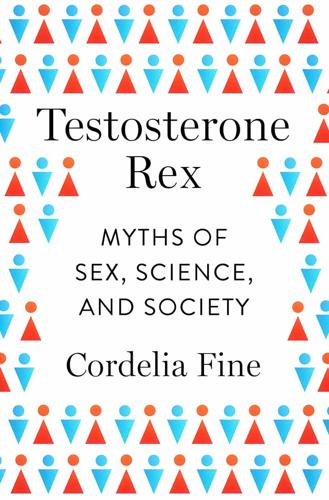
Testosterone Rex: Myths of Sex, Science, and Society
by
Cordelia Fine
Published 13 Jan 2017
In contrast, impending divorce is a time of competition between spouses for children, for material possessions, and for self-respect. Also, it is a time when the divorcing husband may reenter the competitive arena for sexual partners.56 And an arrow of causality from caregiving to T-level change was clearly seen in a large-scale longitudinal study of fathers in the Philippines, led by University of Notre Dame biological anthropologist Lee Gettler. This study found that fatherhood reduced testosterone levels in men, and more so in fathers who spent more time physically caring for their infants.57 Nor was this simply because lower-testosterone men were more likely to be nurturing fathers; rather, intimate caregiving itself lowered testosterone.
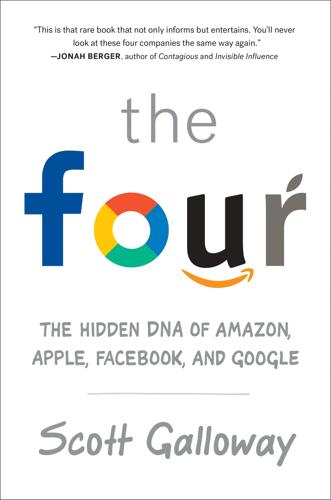
The Four: How Amazon, Apple, Facebook, and Google Divided and Conquered the World
by
Scott Galloway
Published 2 Oct 2017
This is what makes the company so powerful. The side that faces us, Facebook’s users, is the bait to get us to surrender our real selves. Connecting and Loving Relationships make us happier. The legendary Grant Study at Harvard Medical School has borne this out. The study—the largest longitudinal study of human beings to date—began tracking 268 Harvard male sophomores between 1938 and 1944. In an effort to determine what factors contribute most strongly to “human flourishing,” the study followed these men for seventy-five years, measuring an astonishing range of psychological, anthropological, and physical traits—from personality type to IQ to drinking habits to family relationships to “hanging length of his scrotum.”10 The study found that the depth and meaningfulness of a person’s relationships is the strongest indicator of level of happiness.

The Dark Net
by
Jamie Bartlett
Published 20 Aug 2014
Mental Health Foundation, The Lonely Society. Montgomery, P. et al., ‘The Power of the Web: A Systematic Review of Studies of the Influence of the Internet on Self-Harm and Suicide in Young People’, PLoS ONE. Sueki, H., ‘The Effect of Suicide-Related Internet Use on Users’ Mental Health: A Longitudinal Study’, Journal of Crisis Intervention and Suicide Prevention, vol.34 (5). Conclusion Zoltan vs Zerzan Istvan, Z., The Tranhumanist Wager. Zoltan’s loosely autobiographical work, which sets out a picture of a fairly bleak near future in which transhumanists go to war with the rest of the world.
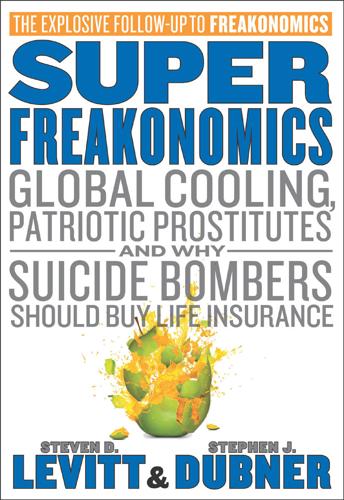
SuperFreakonomics
by
Steven D. Levitt
and
Stephen J. Dubner
Published 19 Oct 2009
He argued, for instance, that the same person who might be purely selfish in business could be exceedingly altruistic among people he knew—although, importantly (Becker is an economist, after all), he predicted that altruism even within a family would have a strategic element. Years later, the economists Doug Bernheim, Andrei Shleifer, and Larry Summers empirically demonstrated Becker’s point. Using data from a U.S. government longitudinal study, they showed that an elderly parent in a retirement home is more likely to be visited by his grown children if they are expecting a sizable inheritance. But wait, you say: maybe the offspring of wealthy families are simply more caring toward their elderly parents? A reasonable conjecture—in which case you’d expect an only child of wealthy parents to be especially dutiful.
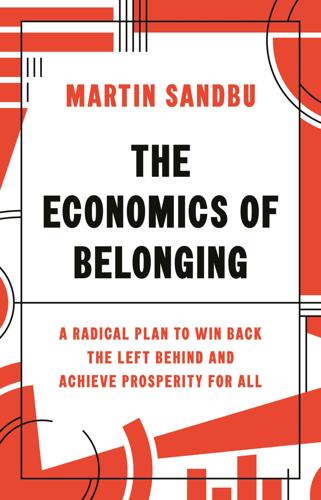
The Economics of Belonging: A Radical Plan to Win Back the Left Behind and Achieve Prosperity for All
by
Martin Sandbu
Published 15 Jun 2020
Immo Fritsche, Eva Jonas, Catharina Ablasser, Magdalena Beyer, Johannes Kuban, Anna-Marie Manger, and Marlene Schultz, “The Power of We: Evidence for Group-Based Control,” Journal of Experimental Social Psychology 49, no. 1 (January 2013): 19–32, https://doi.org/10.1016/j.jesp.2012.07.014; Hemant Kakkar and Niro Sivanathan, “Appeal of a Dominant Leader over a Prestige Leader,” Proceedings of the National Academy of Sciences 114, no. 26 (June 2017): 6734–39, https://doi.org/10.1073/pnas.1617711114. 21. Emma Onraet, Kristof Dhont, and Alain Van Hiel, “The Relationships between Internal and External Threats and Right-Wing Attitudes: A Three-Wave Longitudinal Study,” Personality and Social Psychology Bulletin 40, no. 6 (2014): 712–25, https://doi.org/10.1177/0146167214524256. 22. Miguel Carreras, Yasemin Irepoglu Carreras, and Shaun Bowler, “Long-Term Economic Distress, Cultural Backlash, and Support for Brexit,” Comparative Political Studies 52, no. 9 (2019): 1396–424, https://doi.org/10.1177/0010414019830714, summarised in Miguel Carreras, Yasemin Irepoglu Carreras, and Shaun Bowler, “It Is the Interplay between Economic Factors and Individual Attitudes That Explains Brexit,” LSE British Politics and Policy blog, London School of Economics and Political Science, 7 May 2019, https://blogs.lse.ac.uk/politicsandpolicy/economics-and-culture-brexit/.
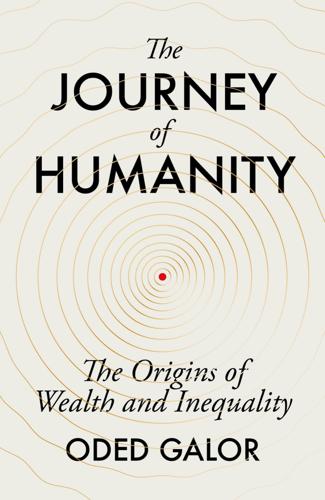
The Journey of Humanity: The Origins of Wealth and Inequality
by
Oded Galor
Published 22 Mar 2022
Comin, Diego, William Easterly and Erick Gong, ‘Was the Wealth of Nations Determined in 1000 BC?’, American Economic Journal: Macroeconomics 2, no. 3 (2010): 65–97. Cook, C. Justin, and Jason M. Fletcher, ‘High-School Genetic Diversity and Later-Life Student Outcomes: Micro-Level Evidence from the Wisconsin Longitudinal Study’, Journal of Economic Growth 23, no. 3 (2018): 307–39. Cook, C. Justin., ‘The Role of Lactase Persistence in Precolonial Development’, Journal of Economic Growth 19, no. 4 (2014): 369–406. Cosandey, David, Le Secret de l’Occident, Champs-Flammarion, 2007. Crafts, Nicholas F. R., ‘Duration of Marriage, Fertility and Women’s Employment Opportunities in England and Wales in 1911’, Population Studies 43, no. 2 (1989): 325–35.
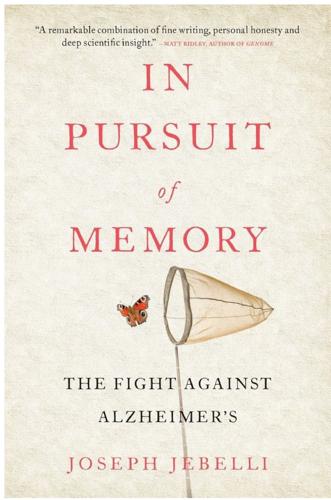
In Pursuit of Memory: The Fight Against Alzheimer's
by
Joseph Jebelli
Published 30 Oct 2017
In America, Congress has also agreed to boost Alzheimer’s funding by 50 per cent, approving a $350 million increase in its 2016 budget. In Europe, private industry is joining public–private schemes such as the European Prevention of Alzheimer’s Disease (EPAD) initiative, which aims to create a register of 24,000 people for longitudinal studies and clinical trials. And around the world, big drug companies like Johnson & Johnson, Roche and Novartis are coming back to the table, investing $3.3 billion in research in 2014, according to Forbes magazine, more private funding than in any of the preceding ten years.6 In the end, it all whittles down to money.
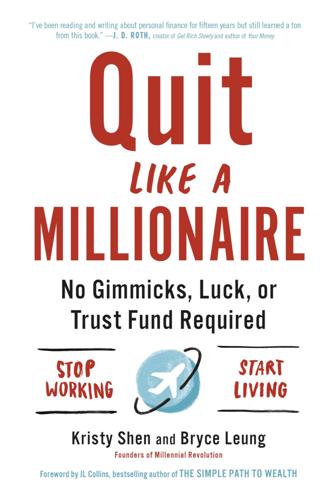
Quit Like a Millionaire: No Gimmicks, Luck, or Trust Fund Required
by
Kristy Shen
and
Bryce Leung
Published 8 Jul 2019
We’ve all heard of amazing kids like Malala Yousafzai, who faced death threats for going to school, and Ugandan immigrant Twesigye Jackson Kaguri, whose family scrimped and saved to get him a no. 2 pencil, the price of admission to his local school.2 These are extreme cases, I know, but around the world, education often remains the only way out of poverty. Even in the United States, getting an undergraduate degree increases your average salary by 70 percent. No matter where you are, education has the power to change your life by improving your earning power. Not only that, one longitudinal study demonstrated that a lack of education can be as harmful to your health as smoking. Education improves your ability to process and understand information. Education also helps you become more curious and self-sufficient and teaches you how to trade short-term pain for long-term gain. People who drop out of high school die, on average, a decade earlier than their peers who have a bachelor’s degree.
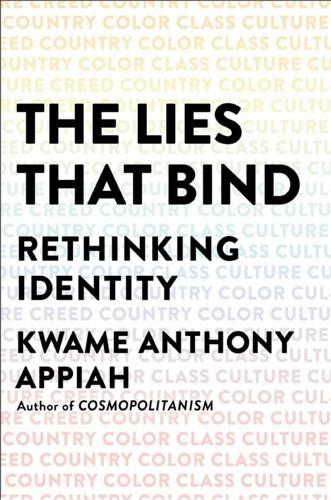
The Lies That Bind: Rethinking Identity
by
Kwame Anthony Appiah
Published 27 Aug 2018
James, The Church and Society (London: Houston & Wright, 1869). 25.Briggs, op. cit., 111. 26.http://www.politicsresources.net/area/uk/man/lab45.htm. 27.See the Seventh Schedule of the 1949 Finance Act, http://www.legislation.gov.uk/ukpga/1949/47/pdfs/ukpga_19490047_en.pdf. 28.Quoted in Edward Shils, The Order of Learning: Essays on the Contemporary University (New York: Routledge, 2013; originally published 1997), 79. Young, too, cites this remark in The Rise of the Meritocracy. 29.See, e.g., Robert Putnam, Our Kids: The American Dream in Crisis (New York: Simon & Schuster, 2015); and, drawing on the UK Household Longitudinal Study, Nissa Finney, Dharmi Kapadia, and Simon Peters, “How Are Poverty, Ethnicity and Social Networks Related?” Joseph Rowntree Foundation, March 30, 2015, https://www.jrf.org.uk/report/how-are-poverty-ethnicity-and-social-networks-related. 30.Nancy Mitford, “The English Aristocracy,” Encounter, September 1955, 5–11.
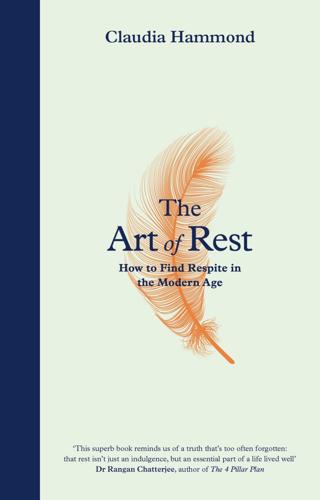
The Art of Rest: How to Find Respite in the Modern Age
by
Claudia Hammond
Published 5 Dec 2019
American Journal of Epidemiology, 174 (9), 1017–27 18 Shiue, I. (2016) ‘Modeling Indoor TV/Screen Viewing and Adult Physical and Mental Health: Health Survey for England, 2012’. Environmental Science and Pollution Research, 23 (12), 11708–15 19 Fancourt, D. & Steptoe, A. (2019) ‘Television Viewing and Cognitive Decline in Older Age: Findings from the English Longitudinal Study of Ageing’. Scientific Reports, 9 (2851) 20 Mesquita, G. & Rubens, R. (2010) ‘Quality of Sleep Among University Students: Effects of Night-time Computer Television Use’. Arquivos de Neuro-Psiquiatria, 68 (5), 720–5 21 Custers, K. & Van den Bulck, J. (2012) ‘Television Viewing, Internet Use, and Self-Reported Bedtime and Rise Time in Adults: Implications for Sleep Hygiene Recommendations from an Exploratory Cross-Sectional Study’.
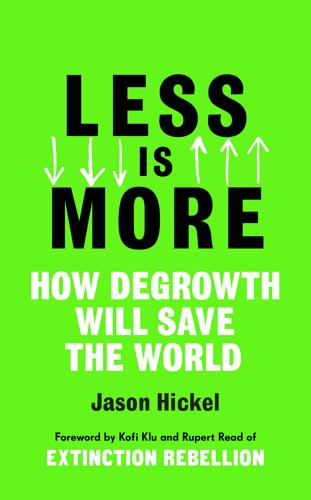
Less Is More: How Degrowth Will Save the World
by
Jason Hickel
Published 12 Aug 2020
This same article reports on studies showing that people who work shorter hours have higher levels of well-being than those who work longer hours. 25 Anders Hayden, ‘France’s 35-hour week: Attack on business? Win-win reform? Or betrayal of disadvantaged workers?’ Politics & Society 34(4), 2006, pp. 503–542. 26 This research is reported in Peter Barck-Holst et al., ‘Reduced working hours and stress in the Swedish social services: A longitudinal study,’ International Social Work 60(4), 2017, pp. 897–913. 27 Boris Baltes, et al., ‘Flexible and compressed workweek schedules: A meta-analysis of their effects on work-related criteria,’ Journal of Applied Psychology 84(4), 1999. 28 Anna Coote et al., ‘21 hours: why a shorter working week can help us all flourish in the 21st century,’ New Economics Foundation, 2009. 29 François-Xavier Devetter and Sandrine Rousseau, ‘Working hours and sustainable development,’ Review of Social Economy 69(3), 2011, pp. 333–355. 30 See for example what happened in France when it shifted to a thirty-five-hour week: Samy Sanches, ‘Sustainable consumption à la française?

Conflicted: How Productive Disagreements Lead to Better Outcomes
by
Ian Leslie
Published 23 Feb 2021
‘The way people respond to us in conflict tells us a lot about how co-operative they are, whether they can be trusted, what they care about.’ Conflict in a relationship is not an unfortunate accident. It’s a way of learning about others, including and especially those we know most well. In 2010, American researchers Jim McNulty and Michelle Russell analysed data from two longitudinal studies of relationships. They found that couples who at the beginning of the study engaged in angry rows over relatively trivial problems were less likely to be happy in their relationship four years later. However, couples who were having hostile arguments about deeper problems, such as money or substance abuse, were more likely to feel good about their relationship by the end of the study period.
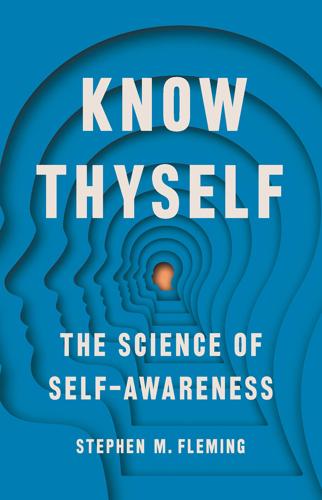
Know Thyself
by
Stephen M Fleming
Published 27 Apr 2021
Illusory boosts in self-efficacy indeed lead people to perform better, and persist for longer, at challenging tasks, whereas drops in self-efficacy lead to the opposite.13 One well-researched aspect of self-efficacy is children’s beliefs about being able to solve math problems. In one set of longitudinal studies, children’s beliefs about their abilities at age nine affected how they performed at age twelve, even when differences in objective ability were controlled for. The implication is that self-efficacy drove attainment, rather than the other way around. Because these beliefs can influence performance, any gender disparity in mathematics self-efficacy is a potential cause of differences between boys and girls in performance in STEM subjects.
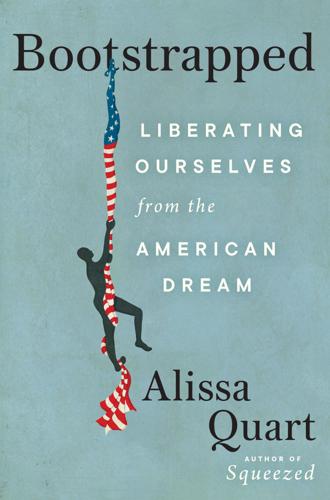
Bootstrapped: Liberating Ourselves From the American Dream
by
Alissa Quart
Published 14 Mar 2023
(A previous well-known 2010 study by Daniel Kahneman and Angus Deaton demonstrated that, for Americans, higher salaries were associated with increases in day-to-day satisfaction, with well-being tapering off at an income of about $75,000.) In another article, “Income Inequality and Depression,” the authors, led by Vikram Patel of the Department of Global Health and Social Medicine at Harvard Medical School, conclude that “nearly two-thirds of all studies and five out of six longitudinal studies reported a statistically significant positive relationship between income inequality and risk of depression.” I was also struck by some of the research I uncovered about how some therapists treated patients who were financially stressed. According to one study entitled “What’s (Not) Wrong with Low-Income Marriages,” therapists tend to query poorer patients about their attitudes toward marriage, as if they were already in some way suspect, a questioning that stems from stereotypes.

Superbloom: How Technologies of Connection Tear Us Apart
by
Nicholas Carr
Published 28 Jan 2025
As Haidt wrote in a 2023 review of recent research, “There is now a great deal of evidence that social media is a substantial cause, not just a tiny correlate, of depression and anxiety, and therefore of behaviors related to depression and anxiety, including self-harm and suicide.”34 In her 2023 book, Generations, Jean Twenge offers an exhaustive analysis of data from the longitudinal studies of young people’s attitudes and behavior.35 On the basis of timing and other factors, she rules out alternative phenomena that have been suggested as possible primary causes for the mental illness spike, such as economic hardship, political worries, fears about climate change or school shootings, parental and academic pressures, and stresses from the pandemic.

A Beautiful Mind
by
Sylvia Nasar
Published 11 Jun 1998
Winokur and Tsuang, op. cit., p. 30; also Manfred Bleuler, The Schizophrenic Disorders: Long-Term Patient and Family Studies (New Haven: Yale University Press, 1978). 16. Gerd Huber, Gisela Gross, Reinhold Schuttler, and Maria Linz, “Longitudinal Studies of Schizophrenic Patients,” Schizophrenia Bulletin, vol, 6, no. 4 (1980). 17. C. M. Harding, G. W. Brooks, T. Ashikaga, J. S. Strauss, and A. Brier, “The Vermont Longitudinal Study of Persons with Severe Mental Illness, I and II,” American Journal of Psychiatry, vol. 144 (1987), pp. 718–26, 727–35. E. Johnstone, D. Owens, A. Gold et al., “Schizophrenic Patients Discharged from Hospital: A Follow-Up Study,” British Journal of Psychiatry, no. 145 (1984), pp. 586–90, found that 18 percent of the 120 in the study had no significant symptoms and were functioning satisfactorily; 50 percent were still psychotic; and the remainder were somewhere in between.
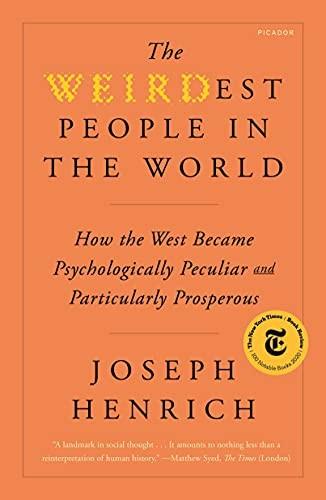
The WEIRDest People in the World: How the West Became Psychologically Peculiar and Particularly Prosperous
by
Joseph Henrich
Published 7 Sep 2020
On the biological and cultural evolution of shame: Using internet search tools to weight values in many cultures. Working paper, arxiv.org/abs/1401.1100. Jaffee, S., Caspi, A., Moffitt, T. E., Belsky, J., and Silva, P. (2001). Why are children born to teen mothers at risk for adverse outcomes in young adulthood? Results from a 20-year longitudinal study. Development and Psychopathology 13 (2), 377–97. Jankowiak, W. (2008). Co-wives, husband, and the Mormon polygynous family. Ethnology 47 (3), 163–80. Jankowiak, W., Sudakov, M., and Wilreker, B. C. (2005). Co-wife conflict and co-operation. Ethnology 44 (1), 81–98. Jha, S. (2013). Trade, institutions and ethnic tolerance: Evidence from South Asia.
…
Understanding infants’ and children’s social learning about foods: Previous research and new prospects. Developmental Psychology 49 (3), 419–25. Shutts, K., Kinzler, K. D., Mckee, C. B., and Spelke, E. S. (2009). Social information guides infants’ selection of foods. Journal of Cognition and Development 10 (1–2), 1–17. Sibley, C. G., and Bulbulia, J. (2012). Faith after an earthquake: A longitudinal study of religion and perceived health before and after the 2011 Christchurch New Zealand earthquake. PLoS One 7 (12), e49648. Sikora, M., Seguin-Orlando, A., Sousa, V. C., Albrechtsen, A., Ko, A., Rasmussen, S,… Willerslev, E. (2017). Ancient genomes show social and reproductive behavior of early Upper Paleolithic foragers.

Mistakes Were Made (But Not by Me): Why We Justify Foolish Beliefs, Bad Decisions, and Hurtful Acts
by
Carol Tavris
and
Elliot Aronson
Published 6 May 2007
This assumption of the cycle of abuse came from observations of confirming cases: abusive parents, in jail or in therapy, reporting that they were severely beaten or sexually abused by their own parents. What is missing are the disconfirming cases: the abused children who do not grow up to become abusive parents. They are invisible to social workers and other mental-health professionals because, by definition, they don't end up in prison or treatment. Research psychologists who have done longitudinal studies, following children over time, have found that while being physically abused as a child is associated with an increased chance of becoming an abusive parent, the great majority of abused children—nearly 70 percent—do not repeat their parents' cruelties. 19 If you are doing therapy with a victim of parental abuse or with an abusive parent, this information may not be relevant to you.

The Thyroid Diet
by
Mary J. Shomon
Published 31 Aug 2004
Palkhivala, Alison. “New Hormone Might Explain Link Between Diabetes and Obesity.” WebMD Health. January 17, 2001. Parsons, W. B., Jr. “Controlled-Release Diethylpropion Hydrochloride Used in a Program for Weight Reduction.” Clinical Therapy 1981;3(5):329–335. Peppard, P. E., T. Young, M. Palta, et al. “Longitudinal Study of Moderate Weight Change and Sleep-Disordered Breathing.” Journal of the American Medical Association 2000;284:3015. Perrone, Tony. Dr. Tony Perrone’s Body Fat Breakthru. Regan Books. 1999. Pharmacia & Upjohn Company. Didrex (benzphetamine hydrochloride) Product Information. April 2002. http://www.pfizer.com/download/uspi_didrex.pdf.

Bastard Tongues: A Trailblazing Linguist Finds Clues to Our Common Humanity in the World's Lowliest Languages
by
Derek Bickerton
Published 4 Mar 2008
Also you need to know that Seth hadn't yet learned the word "with"; what he actu ally intended was "Write it with the pencil," but instead he pro duced an instrumental, serial construction. (These constructions will constitute crucial evidence in Chapter 12; they are, again, typ ical of Creoles worldwide.) Within three weeks he had learned .other prepositions, and his serial constructions disap peared. Note that the monthly sampling that's typical of so-called longitudinal studies would probably have missed this altogether. These are just two out of the many cases where children's ex pressions that are quite ungrammatical in the languages they are supposed to be learning would be fully grammatical if what they were learning was a Creole. Which made me think: How do chil dren know what they are learning?
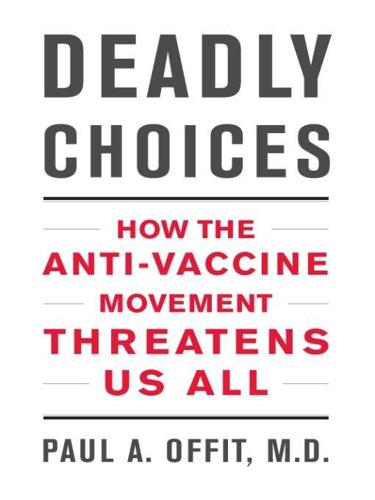
Deadly Choices: How the Anti-Vaccine Movement Threatens Us All
by
Paul A. Offit M.D.
Published 28 Dec 2010
Dodd, et al., “Formaldehyde (CH2O) Concentrations in the Blood of Humans and Fischer-344 Rats Exposed to CH2O Under Controlled Conditions,” American Industrial Hygiene Association Journal 46 (1985): 1-3. 180 VAERS reports by personal-injury lawyers: M. J. Goodman and J. Nordin, “Vaccine Adverse Events Reporting System Reporting Source: A Possible Source of Bias in Longitudinal Studies,” Pediatrics 117 (2006): 387-390. 181 MMR vaccine causes a low platelet count: R. A. Oski and J. L. Naiman, “Effect of Live Measles Vaccine on the Platelet Count,” New England Journal of Medicine 275 (1966): 352-356. 181 Thimerosal in vaccines doesn’t cause autism: K. M. Madsen, M. B. Lauritsen, C.
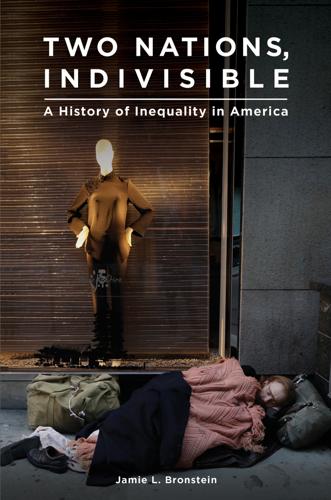
Two Nations, Indivisible: A History of Inequality in America: A History of Inequality in America
by
Jamie Bronstein
Published 29 Oct 2016
By the time Reagan left office in 1989, the federal debt had risen from $900 billion to $2.6 trillion, and from 33 percent to 51 percent of GDP.16 DEINDUSTRIALIZATION By the mid-1970s, the high growth of the postwar era had slowed, for several reasons. The oil shocks of the 1970s caused a huge outflow of American capital, and the economy stagnated under inflation. Although average incomes rose, rising prices diminished purchasing power for middle-income Americans to 70 percent of what it had been at the beginning of the decade.17 A longitudinal study of Americans’ incomes between 1974 and 1991 showed that, despite the much vaunted American Dream, mobility was very limited. Those who did manage to move up the income scale generally moved only to the next higher quintile. As Figure 7.1 shows, those income differentials, and the ability of wealthier people to invest in a growing stock market, translated into a growing share of financial net wealth (net worth minus home equity) for the top quintile of wealth holders, and falling shares for other quintiles.

In the Shadow of Man
by
Jane Goodall
Published 16 Dec 2010
It is difficult in a short space to convey adequately my appreciation of the hard work, patience, and dedication that have in many instances gone into the careful accumulation of the long-term records on individual chimpanzees on which I have drawn so freely in the writing of this book. Without these students a longitudinal study of this sort could not be undertaken and this book could never have been written. At this point I should especially like to acknowledge the help of Edna Koning and Sonia Ivey, who worked so hard in the early pioneering days when our chores were seldom over before ten or eleven o'clock at night.
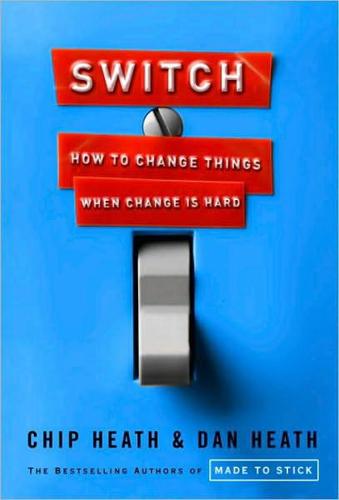
Switch: How to Change Things When Change Is Hard
by
Chip Heath
and
Dan Heath
Published 10 Feb 2010
Dweck (2006), Mindset: The New Psychology of Success, New York: Random House. The quiz is on p. 13. Every teacher, coach, manager, and parent should read Dweck’s book. The brain is like a muscle. See Lisa S. Blackwell, Kali H. Trzesniewski, and Carol S. Dweck (2007), “Implicit Theories of Intelligence Predict Achievement Across an Adolescent Transition: A Longitudinal Study and an Intervention,” Child Development, 78, 246–263. Dramatic transformations. The quotation is from Dweck, Mindsets, p. 59. “Failure in the middle.” See Rosabeth Moss Kanter (November 23, 2003), Leadership for Change: Enduring Skills for Change Masters, Harvard Business School Note 9-304-06, Boston: Harvard Business School Press, p. 11, based on her 2001 book Evolve!
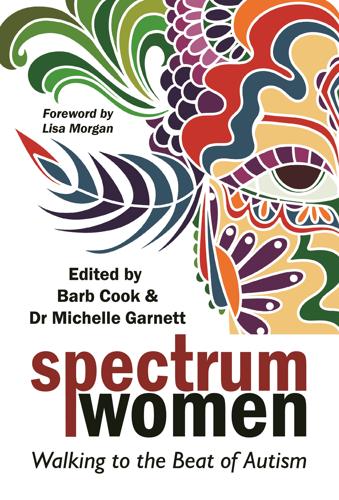
Spectrum Women: Walking to the Beat of Autism
by
Barb Cook
and
Samantha Craft
Published 20 Aug 2018
Michelle Garnett on socializing, anxiety, and addictions I could cry reading the early part of this chapter, for the loneliness and isolation Barb experienced through school and beyond, for innocence lost and the depth of years of personal suffering in a wilderness of need and lack of care. Barb’s story is the story of too many people on the spectrum, where neurological difference leads to familial and social isolation, depression, anxiety, and self-medication. Initial Australian data from the Autism CRC longitudinal studies, as reported recently by Richdale (2017), showed that 46% of adults on the spectrum aged 25–80 years old reported a current diagnosis of depression and 54% reported an anxiety diagnosis. Croen et al. (2015) examined 1507 adults with autism in California and found that there were high levels of depression and anxiety for this group and high levels of drug and alcohol abuse.
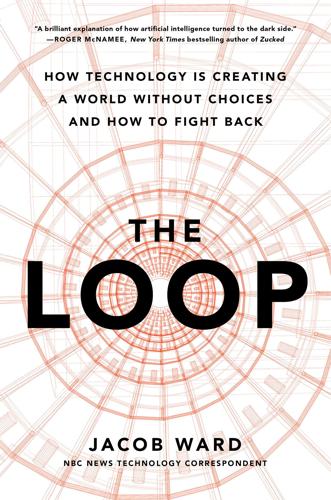
The Loop: How Technology Is Creating a World Without Choices and How to Fight Back
by
Jacob Ward
Published 25 Jan 2022
Mezulis, A.H., Abramson, L.Y., Hyde, J.S., Hankin, B.L. (2004). Is there a universal positivity bias in attributions? A meta-analytic review of individual, developmental, and cultural differences in the self-serving attributional bias. Psychological Bulletin, 130(5):711–747. 2. Waldenström, U., Schytt, E. (2009). A longitudinal study of women’s memory of labour pain—from 2 months to 5 years after the birth. BJOG, Mar; 116(4):577–583. doi: 10.1111/j.1471-0528.2008.02 020.x. Epub 2008 Dec 9. PMID: 19076128. 3. Gainsbury, S.M., Russell, A.M.T., King, D.L., Delfabbro, P., Hing, N. (2016). Migration from social casino games to gambling: Motivations and characteristics of gamers who gamble.
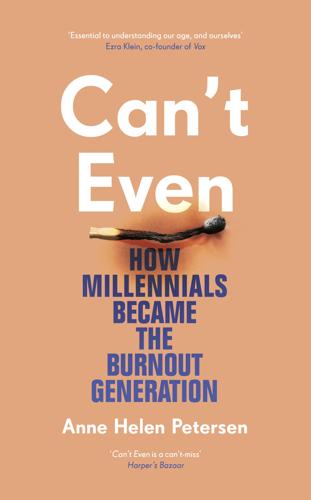
Can't Even: How Millennials Became the Burnout Generation
by
Anne Helen Petersen
Published 14 Jan 2021
It’s a classic case of a time-worn phenomenon: Once an elite experience is opened to many, it’s no longer elite, and another cordoned area is created to redraw the lines of distinction. While students internalized the idea that they must to go to college, they and their parents often had little idea of how to make it a reality. In The Ambitious Generation: America’s Teenagers, Motivated but Directionless, Barbara Schneider and David Stevenson examined longitudinal studies of students in high school in the mid and late ’90s, now known as old millennials. What they found was profound: By the end of the decade, more than 90 percent of high school seniors expected to attend college, and more than 70 percent expected to work in “professional” jobs: as doctors, lawyers, professors, business managers.
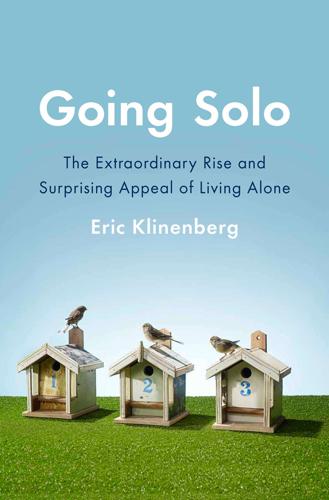
Going Solo: The Extraordinary Rise and Surprising Appeal of Living Alone
by
Eric Klinenberg
Published 1 Jan 2012
DePaulo discusses the German study in Singled Out: How Singles Are Stereotyped, Stigmatized, and Ignored, and Still Live Happily Ever After (New York: St. Martin’s, 2006), pp. 35–40; she also compares the two studies in her Psychology Today blog at www.psychologytoday.com/blog/living-single/200912/another-longitudinal-study-satisfaction. The Dutch study is Judith Soons, Aart Liefbroer, and Matthijs Kalmijn, “The Long-Term Consequences of Relationship Formation for Subjective Well-Being,” Journal of Marriage and the Family 71 (2009), no. 5: 1254–70. 5. Rose M. Kreider and Jason M. Fields, “Number, Timing, and Duration of Marriages and Divorces: 1996,” U.S.
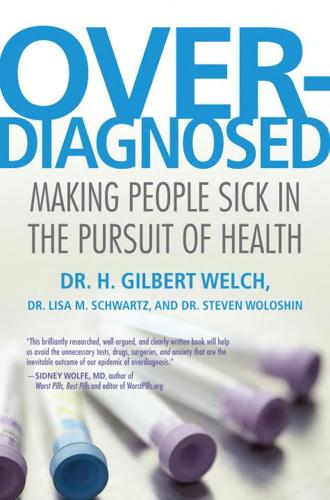
Overdiagnosed: Making People Sick in the Pursuit of Health
by
H. Gilbert Welch
,
Lisa M. Schwartz
and
Steven Woloshin
Published 18 Jan 2011
We may never know how to implement the results of genetic testing in medical interventions because the nature of innovative processes in medicine can make it impossible to ever know. Medical theories rarely remain constant over a period of multiple decades, the time span necessary to carry out longitudinal studies. Changing definitions of disease and the rapid evolution of treatments create a catch-22 scenario in which ideas and technologies come in and out of clinical practice long before clinical science catches up with definitive answers about what works. The only certainty about genetic screening is that overdiagnosis is a built-in problem.
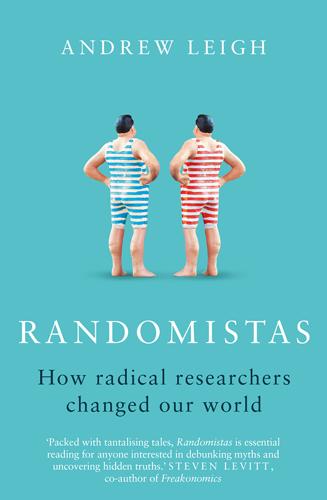
Randomistas: How Radical Researchers Changed Our World
by
Andrew Leigh
Published 14 Sep 2018
The specific examples on Sesame Street curriculum are drawn from Rosemarie Truglio, Valeria Lovelace, Ivelisse Seguí & Susan Scheiner, ‘The varied role of formative research: Case studies From 30 years’ in Fisch & Truglio, G is for Growing, pp. 61–82. 5Alison Gopnik, The Philosophical Baby: What Children’s Minds Tell Us About Truth, Love, and the Meaning of Life, New York: Picador, 2010, p. 11. 6This section draws heavily on Emily Hanford (edited by Catherine Winter), ‘Early Lessons’, American RadioWorks, 2009. Transcript available at http://americanradioworks.publicradio.org/features/preschool/ 7David P. Weikart, ‘Preliminary results from a longitudinal study of disadvantaged preschool children’, paper presented at the 1967 Convention of the Council for Exceptional Children, St. Louis, Missouri. 8Weikart, ‘Preliminary results’. 9Lawrence J. Schweinhart, Jeanne Montie, Zongping Xiang, et al., Lifetime Effects: The High/Scope Perry Preschool Study Through Age 40, Ypsilanti, MI: High/Scope Press, 2005. 10James J.

This Is Your Country on Drugs: The Secret History of Getting High in America
by
Ryan Grim
Published 7 Jul 2009
She was working from a set of assumptions that was backed by more than just pop psychology. At a 1995 Aspen Institute program called “The Challenge of Parenting in the ’90s,” those gathered heard from Harvard professor Stuart T. Hauser, then director of the school’s Judge Baker Children’s Center. Relying on a longitudinal study he published in 1991, he told the conference that the “chances of a teenager experimenting with new ideas and embracing new perceptions are greatly increased when he or she is in a family where curiosity and open-mindedness are valued, and uncertainty is tolerated.” The goal of his research, he said, was to “enhance” parenting “so that it will not interfere, obstruct, or aggravate the greatest difficulties during the teenage years.”
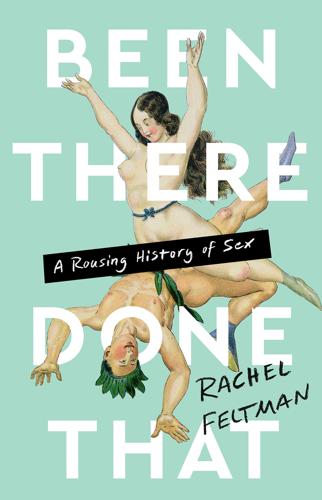
Been There, Done That: A Rousing History of Sex
by
Rachel Feltman
Published 14 May 2022
Howard Markel, “The Secret Ingredient in Kellogg’s Corn Flakes Is Seventh-day Adventism,” Smithsonian Magazine, July 28, 2017, www.smithsonianmag.com/history/secret-ingredient-kelloggs-corn-flakes-seventh-day-adventism-180964247. 6. WHY ARE WE SO SCARED OF STIS? 1. Katherine E. Dahlhausen et al., “Characterization of Shifts of Koala (Phascolarctos Cinereus) Intestinal Microbial Communities Associated with Antibiotic Treatment,” PeerJ 6 (2018), https://doi.org/10.7717/peerj.4452. 2. Amy Robbins et al., “Longitudinal Study of Wild Koalas (Phascolarctos Cinereus) Reveals Chlamydial Disease Progression in Two Thirds of Infected Animals,” Scientific Reports 9, no. 1 (2019), https://doi.org/10.1038/s41598-019-49382-9. 3. Ville Pimenoff et al., “The Role of Adna in Understanding the Coevolutionary Patterns of Human Sexually Transmitted Infections,” Genes 9, no. 7 (2018): 317, https://doi.org/10.3390/genes9070317. 4.

Good to Go: What the Athlete in All of Us Can Learn From the Strange Science of Recovery
by
Christie Aschwanden
Published 5 Feb 2019
According to Blander, most “normal” ranges you get on a blood test are “cookie cutter”—they’re the same for everyone. “What we do is give everyone their own individualized zone based on age, and things like activity and the amount of alcohol you’re drinking.” When I asked how they did this, he explained that they used data from the Framingham Heart Study, a longitudinal study tracking a cohort of people from Framingham, Massachusetts, to study cardiovascular disease risks. The study has found what Blander calls “a nice correlation between low levels of glucose and low mortality,” which forms the basis of Inside Tracker’s optimal ranges for that marker at various ages.
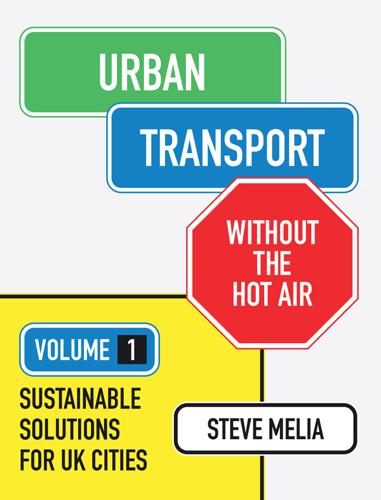
Urban Transport Without the Hot Air, Volume 1
by
Steve Melia
Scottish Executive, Central Research Unit. 327 ‘National travel survey’. Table NTS9902 On: www.gov.uk 328 Clark, B., Chatterjee, K., Melia, S., Knies, G. and Laurie, H. (2014) ‘Examining the relationship between life transitions and travel behaviour change: New insights from the UK household longitudinal study’. In: 46th Universities’ Transport Studies Group Conference, Newcastle University, 6-8 January. 329 Clark, B., Lyons, G. and Chatterjee, K. (2010) ‘The process of household car ownership change: A qualitative analysis of real world accounts’. In: 42nd Universities Transport Study Group Conference, Plymouth, UK, January. 330 DfT (2012) ‘National travel survey’ Table NTS9902. 331 Delbosc, A. and Currie, G. (2013) ‘Causes of youth licensing decline: A synthesis of evidence’.
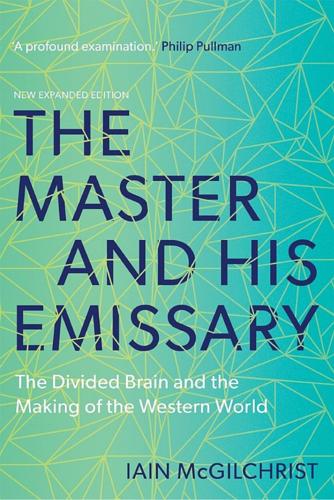
The Master and His Emissary: The Divided Brain and the Making of the Western World
by
Iain McGilchrist
Published 8 Oct 2012
. & Newberg, A., The Mystical Mind: Probing the Biology of Religion, Fortress Press, Minneapolis MN, 1999 d’Esposito, M., Detre, J. A., Alsop, D. C. et al., ‘The neural basis of the central executive system of working memory’, Nature, 1995, 378(6554), pp. 279–81 Dagenbach, D., Harris, L. J. & Fitzgerald, H. E., ‘A longitudinal study of lateral biases in parents’ cradling and holding of infants’, Infant Mental Health, 1988, 9(3), pp. 218–34 Dagge, M. & Hartje, W., ‘Influence of contextual complexity on the processing of cartoons by patients with unilateral lesions’, Cortex, 1985, 21(4), pp. 607–16 Damasio, A. R., Descartes’ Error: Emotion, Reason and the Human Brain, Grosset/Putnam, New York, 1994a ——, ‘Descartes’ error and the future of human life’, Scientific American, 1994b, 271(4), p. 144 Damasio, A.
…
N., Mental Institutions in America, Free Press, New York, 1973 Grossman, M., ‘A bird is a bird is a bird: making reference within and without superordinate categories’, Brain and Language, 1981, 12(2), pp. 313–31 ——, ‘Drawing deficits in brain-damaged patients’ freehand pictures’, Brain and Cognition, 1988, 8(2), pp. 189–205 Grunwald, M., Weiss, T., Assmann, B. et al., ‘Stable asymmetric interhemispheric theta power in patients with anorexia nervosa during haptic perception even after weight gain: a longitudinal study’, Journal of Clinical and Experimental Neuropsychology, 2004, 26(5), pp. 608–20 Grüsser, O.-J., ‘Mother–child holding patterns in Western art: a developmental study’, Ethology and Sociobiology, 1983, 4(2), pp. 89–94 Grüsser, O.-J., Selke, T. & Zynda, B., ‘Cerebral lateralisation and some implications for art, aesthetic perception and artistic creativity’, in Rentschler, I., Herzberger, B. & Epstein, D.
…
B. et al., ‘Mood disorders in stroke patients: importance of location of lesion’, Brain, 1984, 107(1), pp. 81–93 Robinson, R. G. & Price, T. R., ‘Post-stroke depressive disorders: a follow-up study of 103 patients’, Stroke, 1982, 13(5), pp. 635–41 Robinson, R. G., Starr, L. B., Lipsey, J. R. et al., ‘A two-year longitudinal study of post-stroke mood disorders. In-hospital prognostic factors associated with six-month outcome’, Journal of Nervous and Mental Disease, 1985, 173(4), pp. 221–6 Robinson, R. G. & Szetela, B., ‘Mood change following left hemispheric brain injury’, Annals of Neurology, 1981, 9(5), pp. 447–53 Rogers, L.
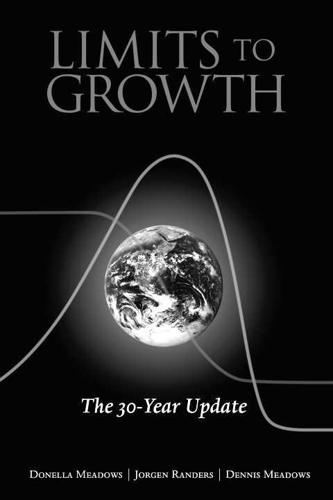
The Limits to Growth: The 30-Year Update
by
Donella H. Meadows
,
Jørgen Randers
and
Dennis L. Meadows
Published 15 Apr 2004
Figure 2-6 Demographic Transitions in Industrialized Countries and in Less Industrialized Countries Nathan Keyfitz and W. Flieger, World Population: an Analysis of Vital Data (Chicago: Univ. Chicago Press, 1968). J. Chesnais, The Demographic Transition: Stages, Patterns, and Economic Implications; a Longitudinal Study of Sixty-Seven Countries Covering the Period 1720-1984 (New York Oxford University Press, 1992). Demographic Yearbook (New York: United Nations, various years). World Population Data Sheet (Washington, DC: Population Reference Bureau) http: / / www.prb.org (accessed in various years). United Kingdom Office of Population Censuses & Surveys, Population Trends, no. 52 (London: HMSO, June 1988).
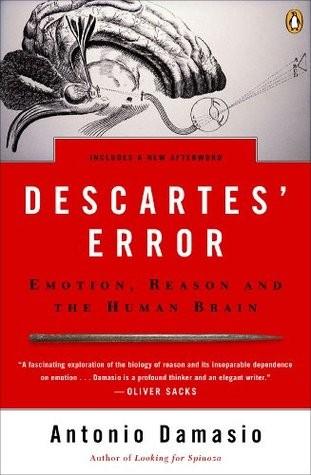
Descartes' Error: Emotion, Reason and the Human Brain
by
António R. Damásio
Published 1 Jan 1994
Koenig (1992).) Wet Mind: The New Cognitive Neuroscience. New York: The Free Press. Lakoff, G. (1987).) Women, Fire, and Dangerous Things: What Categories Reveal About the Mind. Chicago: University of Chicago Press. Magnusson, D. (c. 1988).) Individual Development in an Interactional Perspective: A Longitudinal Study. Hillsdale, NJ: Erlbaum Associates. Miller, J. (1983).) States of Mind. New York: Pantheon Books. Ornstein, R. (1973).) The Nature of Human Consciousness. San Francisco: W. H. Freeman. Rose, S. (1973).) The Conscious Brain. New York: Knopf. Rutter, M. and Rutter, M. (1993).) Developing Minds: Challenge and Continuity Across the Lifespan.
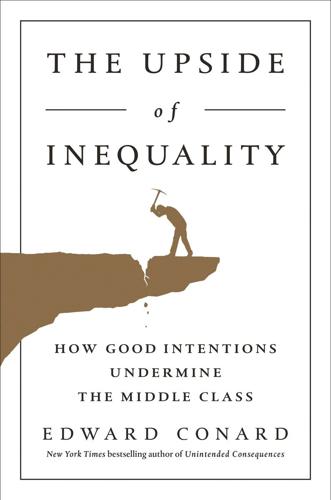
The Upside of Inequality
by
Edward Conard
Published 1 Sep 2016
Another large opportunity for harvesting America’s underutilized talent and putting it to work creating more productive jobs for others is finding top-scoring students who have not graduated from college and training them to be better job creators. For top-scoring students, the value of additional college-level training is likely greater than mere credentialing. According to the National Center of Education Statistics’ longitudinal study of students in 2002, 74 percent of high school sophomores from families in the top quartile of income who score in the top 25 percent graduate from college with at least a bachelor’s degree. Only 41 percent of top-scoring students from families in the lowest quintile earn bachelor’s degrees or higher.

Unequal Britain: Equalities in Britain Since 1945
by
Pat Thane
Published 18 Apr 2010
Source: GAD 2002 based population projection, Pensions Commission analysis, Pensions: Challenges and Choices, p. 6. 26 U N E Q UA L B R I TA I N Accept a lower standard of living in retirement Look to government to fund higher pensions Save more of your wage/salary each month Work beyond the standard age of retirement 0 10 20 30 40 Figure 1.4 Preferred responses to the demographic challenge Source: Pensions and Savings Index, Survey 1 (Sep. 2003) by YouGov for the Association of British Insurers, Pensions: Challenges and Choices, p. 23. 100 80 60 40 20 0 IRL GR FI BE UK PT AT SP SW EU15 FR GE IT LU NE Figure 1.5 Median income of people aged 65+ as a percentage of median income of people aged less than 65: 2001 Source: Eurostat, European Community Household Panel Users Survey Database (ECHP-UDB), July 2003, Pensions: Challenges and Choices, p. 23. 27 O L D E R P E O P L E A N D E Q UA L I T Y 50 40 30 20 10 0 NL LU SW GE IT EU15 FR SP FI AT UK BE PT GR IRL Figure 1.6 Percentage of people aged 65+ with income below 60% of median employment Source: Eurostat, ECHP-UDB, version July 2003, Pensions: Challenges and Choices, p. 69. 100% 90% 80% 70% 60% 50% 40% 30% 1973 1975 1977 Men aged 50–64 1979 1981 1983 1985 1987 1989 1991 1993 1995 Women aged 50–59 Figure 1.7 Employment rates for men and women aged 50 to state pension age: 1973–95 Source: General Household Survey, GB, Pensions: Challenges and Choices, p. 36. 28 U N E Q UA L B R I TA I N Richest 4th 3rd 2nd Poorest 0 10 20 30 40 50 60 Retired or semi-retired Other reasons e.g. unemployed, sick, caring for spouse etc. Figure 1.8 Inactivity by wealth quintile: Men aged 55–9 Source: English Longitudinal Study of Ageing, 2002, Pensions: Challenges and Choices, p. 36. 68 67 66 65 64 63 62 61 60 59 1950 1960 1970 1980 1990 1995 2000 OECD men OECD women Pensions Commission men Pensions Commission women 2004 Figure 1.9 Trends in mean age of retirement Source: Blondel and Scarpetta (1999), Pension Commission estimates, World Economic Forum, Pensions: Challenges and Choices, p. 55.
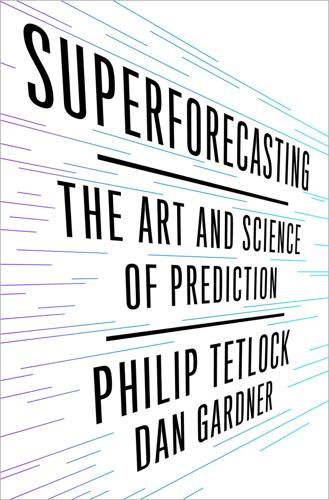
Superforecasting: The Art and Science of Prediction
by
Philip Tetlock
and
Dan Gardner
Published 14 Sep 2015
Oprah Winfrey, commencement address, Harvard University, May 30, 2013, http://news.harvard.edu/gazette/story/2013/05/winfreys-commencement-address/. 27. Konika Banerjee and Paul Bloom, “Does Everything Happen for a Reason?,” New York Times, October 17, 2014. 28. J. A. Updegraff, R. Cohen Silver, and E. A. Holman, “Searching for and Finding Meaning in Collective Trauma: Results from a National Longitudinal Study of the 9/11 Terrorist Attacks,” Journal of Personality and Social Psychology 95, no. 3 (2008): 709–22. 29. Laura Kray, Linda George, Katie Liljenquist, Adam Galinsky, Neal Roese, and Philip Tetlock, “From What Might Have Been to What Must Have Been: Counterfactual Thinking Creates Meaning,” Journal of Personality and Social Psychology 98, no. 1 (2010): 106–18. 30.
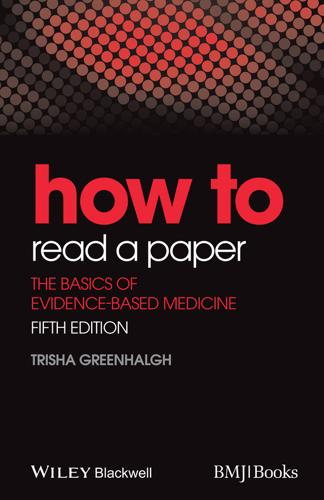
How to Read a Paper: The Basics of Evidence-Based Medicine
by
Trisha Greenhalgh
Published 18 Nov 2010
Annals of Internal Medicine. 2011;154(12):838–9. 14 Sackett DL, Haynes RB, Tugwell P. Clinical epidemiology: a basic science for clinical medicine. Boston: Little, Brown and Company, 1985. 15 Holmström B, Johansson M, Bergh A, et al. Prostate specific antigen for early detection of prostate cancer: longitudinal study. BMJ: British Medical Journal 2009;339:b3537. 16 Barry M, Denberg T, Owens D, et al. Screening for prostate cancer: a guidance statement from the Clinical Guidelines Committee of the American College of Physicians. Annals of Internal Medicine 2013;158:761–9. 17 Guyatt GH, Patterson C, Ali M, et al.

SUPERHUBS: How the Financial Elite and Their Networks Rule Our World
by
Sandra Navidi
Published 24 Jan 2017
Keith Hampton, Lauren Sessions Goulet, Eun Ja Her, and Lee Rainie, “Social Isolation and New Technology,” The Pew Internet & American Life Project, November 4, 2009, http://www.pewinternet.org/2009/11/04/social-isolation-and-new-technology. 8. Hans-Georg Wolff and Klaus Moser, “Effects of Networking on Career Success: A Longitudinal Study,” Journal of Applied Psychology 94 (2009): 196-97,http://psycnet.apa.org/journals/apl/94/1/196. 9. Malcolm Gladwell, The Tipping Point: How Little Things Can Make a Big Difference (New York: Hachette, 2006), 41. 10. Barabasi and Frangos, Linked, 55-56. 11. Carmine Gallo, “The Maya Angelou Quote That Will Radically Improve Your Business,” Forbes, May 31, 2014, http://www.forbes.com/sites/carminegallo/2014/05/31/the-maya-angelou-quote-that-will-radically-improve-your-business. 12.
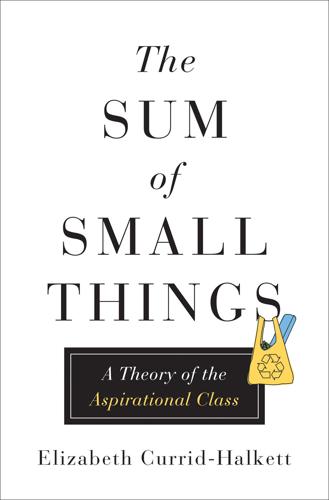
The Sum of Small Things: A Theory of the Aspirational Class
by
Elizabeth Currid-Halkett
Published 14 May 2017
In other words, possessing financial resources is correlated with satisfaction but not necessarily with the true sense of contentment or joy that happiness brings.1 Why? Wealth and the consumption avenues it opens become an effective means for comparing one’s success and achievement to others but are not necessarily in and of themselves a source of happiness. Similarly, in dramatic longitudinal studies of both developed and developing countries, a team of researchers found that increases in per capita income and GDP do not translate into durable life satisfaction. In some cases, increases in wealth actually result in declines in happiness. Known as the “happiness-income paradox” or the “Easterlin paradox” (after the economist Richard Easterlin who discovered the phenomenon), the researchers conclude that although in the short term economic expansions increase happiness, over the long term there is no significant relationship.2 American consumers know this irony only too well.

The Truth Machine: The Blockchain and the Future of Everything
by
Paul Vigna
and
Michael J. Casey
Published 27 Feb 2018
That’s a dynamic that’s been building for decades, but it was made worse by the financial crisis, as well as the policies imposed since then to prop up the financial markets in which the rich hold their assets. It’s one reason people both within and outside the United States believe they’ve been shortchanged by the institutions that had throughout the twentieth century delivered progress and prosperity. This is clear in Pew Research’s ongoing longitudinal study of trust in government in the United States, which puts trust near historic lows (about 20 percent in May 2017). A separate survey by Gallop showed that only 12 percent of U.S. citizens trusted Congress in 2017, down from 40 percent in 1979; that about 27 percent trusted what they heard from newspapers, compared with 51 percent thirty-eight years earlier; and that 21 percent trusted big business, down from 32 percent.

The Uninhabitable Earth: Life After Warming
by
David Wallace-Wells
Published 19 Feb 2019
spikes in proper inpatient admissions: Alana Hansen et al., “The Effect of Heat Waves on Mental Health in a Temperate Australian City,” Environmental Health Perspectives 116, no. 10 (October 2008): pp. 1369–75, https://doi.org/10.1289/ehp.11339. Schizophrenics, especially: Roni Shiloh et al., “A Significant Correlation Between Ward Temperature and the Severity of Symptoms in Schizophrenia Inpatients: A Longitudinal Study,” European Neuropsychopharmacology 17, no. 6–7 (May–June 2007): pp. 478–82, https://doi.org/10.1016/j.euroneuro.2006.12.001. mood disorders, anxiety disorders: Hansen, “The Effect of Heat Waves on Mental Health,” https://doi.org/10.1289/ehp.11339. Each increase of a single degree: Marshall Burke et al., “Higher Temperatures Increase Suicide Rates in the United States and Mexico,” Nature Climate Change 8 (July 2018): pp. 723–29, https://doi.org/10.1038/s41558-018-0222-x. 59,000 suicides: Tamma Carleton, “Crop-Damaging Temperatures Increase Suicide Rates in India,” Proceedings of the National Academy of the Sciences 114, no. 33 (August 2017): pp. 8746–51, https://doi.org/10.1073/pnas.1701354114.

Calling Bullshit: The Art of Scepticism in a Data-Driven World
by
Jevin D. West
and
Carl T. Bergstrom
Published 3 Aug 2020
“A ‘No-Brainer Nobel Prize’: Hungarian Scientists May Have Found a Fifth Force of Nature.” CNN. November 23, 2019. Scutti, Susan. “Astronaut’s DNA No Longer Matches That of His Identical Twin, NASA Finds.” CNN. March 15, 2018. Shen, C., and B.-C. Björk. “ ‘Predatory’ Open Access: A Longitudinal Study of Article Volumes and Market Characteristics.” BMC Medicine 13 (2015): 230. Simmons, J. P., L. D. Nelson, and U. Simonsohn. “False-Positive Psychology: Undisclosed Flexibility in Data Collection and Analysis Allows Presenting Anything as Significant.” Psychological Science 22 (2011): 1359–66.
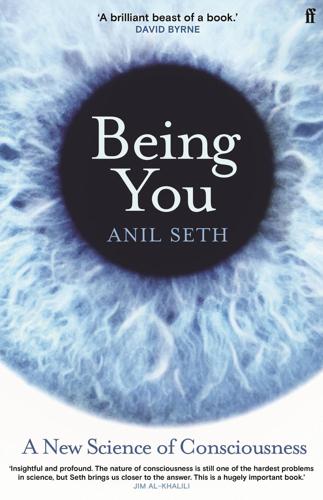
Being You: A New Science of Consciousness
by
Anil Seth
Published 29 Aug 2021
‘What is consciousness, and could machines have it?’ Science, 358(6362), 486–92. Deisseroth, K. (2015). ‘Optogenetics: ten years of microbial opsins in neuroscience’. Nature Neuroscience, 18(9), 1213–25. Della Sala, S., Marchetti, C., & Spinnler, H. (1991). ‘Right-sided anarchic (alien) hand: a longitudinal study’. Neuropsychologia, 29(11), 1113–27. Demertzi, A., Tagliazucchi, E., Dehaene, S., et al. (2019). ‘Human consciousness is supported by dynamic complex patterns of brain signal coordination’. Science Advances, 5(2), eaat7603. Dennett, D. C. (1984). Elbow Room: The Varieties of Free Will Worth Wanting.
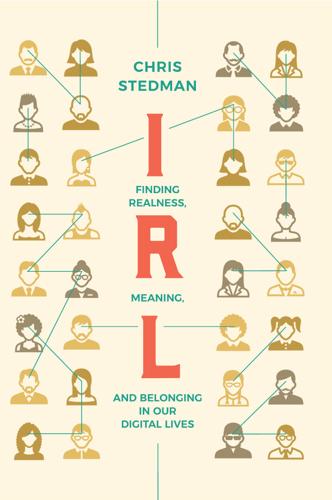
IRL: Finding Realness, Meaning, and Belonging in Our Digital Lives
by
Chris Stedman
Published 19 Oct 2020
But the problem is that, “without realizing it, [our] problem is getting worse. Over time [we are conditioning ourselves]to feel more anxiety and to find more ways to avoid [it].” Many people blame our era of anxiety on social media, especially when it comes to anxiety among young people, and it’s understandable why they might assume it’s the cause. But an eight-year longitudinal study led by Brigham Young University’s Sarah Coyne suggests that more time on social media doesn’t actually make teens more anxious or depressed. In a press release, Coyne pointed out that “two teenagers could use social media for exactly the same amount of time but may have vastly different outcomes as a result of the way they are using it.”
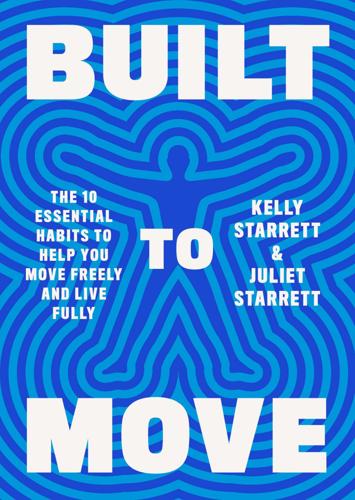
Built to Move: The Ten Essential Habits to Help You Move Freely and Live Fully
by
Kelly Starrett
and
Juliet Starrett
Published 3 Apr 2023
“Daily Step Count and All-Cause Mortality: A Dose-Response Meta-Analysis of Prospective Cohort Studies.” Sports Medicine 52, no. 1 (2022): 89–99. DOI: 10.1007/s40279-021-01536-4. McDowell, C. P., B. R. Gordon, K. L. Andrews, et al. “Associations of Physical Activity with Anxiety Symptoms and Status: Results from the Irish Longitudinal Study on Ageing.” Epidemiology and Psychiatric Sciences 28, no. 4 (2019): 436–45. DOI: 10.1017/S204579601800001X. Neighmond, Patti. “Exercising to Ease Pain: Taking Brisk Walks Can Help.” NPR, September 23, 2019. www.npr.org. Neumann, Janice. “Regular Walking Can Help Ease Depression.” Reuters Health, January 30, 2015.
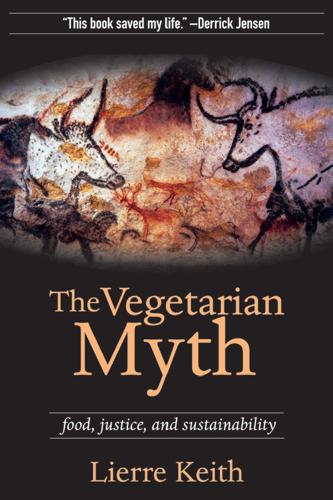
The Vegetarian Myth: Food, Justice, and Sustainability
by
Lierre Keith
Published 30 Apr 2009
Mercola, “Strict Vegetarians Can Develop Blindness and Brain Damage.” 287 Mercola, “Vegetarian Diet Increases Alzheimer’s Risk” and “Vegetarian Diet Can Cause Repeat Miscarriages.” 288 “Neurologic Impairment in Children Associated with Maternal Dietary Deficiency of Cobalamin.” 289 Fallon and Enig, “Caustic Commentary,” quoting from Science News Online, 12/23-30/2000, Vol. 158, No 26-27. 290 Dagnelie et al., “Effects of macrobiotic diets on linear growth.” 291 Roberts. 292 Brody. 293 Keddy. 294 Mercoal, “Dangers of a Vegetarian Diet in Teens.” 295 Colpo, p. 299. 296 According to Steven Aldana, “Longitudinal studies of these vegetarians [SDAs] revealed that men in this group lived 7.3 years longer than the national average and the women lived 4.4 years longer. Those who also exercised, avoided tobacco use, and maintained a healthy body weight lived 10 years longer than average. Mormons in the state of California who exercised regularly, did not smoke, and got adequate sleep had death rates due to cancer and cardiovascular disease that were 70-80% lower than the rest of the nation.

The death and life of the great American school system: how testing and choice are undermining education
by
Diane Ravitch
Published 2 Mar 2010
Since no one claimed that the voucher programs had produced dramatic changes, Rouse and Barrow cautioned against anticipating that voucher programs were going to produce large academic gains in the future.20 A team of researchers that included both supporters and critics of vouchers launched a five-year longitudinal study of the Milwaukee program. In the first year of the study, they found that students in the regular public schools and those in the voucher schools had similar scores. Students in the fourth grade in voucher schools had lower scores on state tests of reading, math, and science than students in regular schools, while voucher students in eighth grade had higher scores.
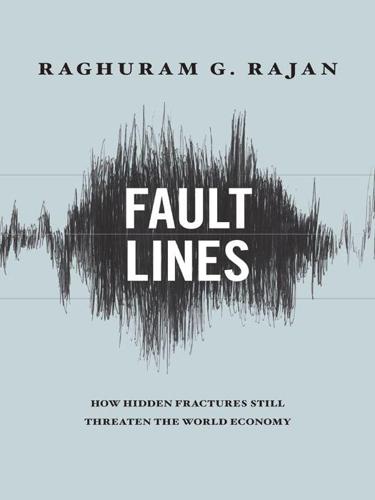
Fault Lines: How Hidden Fractures Still Threaten the World Economy
by
Raghuram Rajan
Published 24 May 2010
As a U.S. senator speaking at the 2004 Democratic convention, Barack Obama said: “Go into any inner-city neighborhood and folks will tell you that government alone can’t teach our kids to learn; they know that parents have to teach, that children can’t achieve unless we raise their expectations and turn off the television sets.”13 This kind of parental and community responsibility is needed to make full use of any government support. More generally, careful longitudinal studies in Chicago suggest that failing schools can be transformed through collective effort: by leadership that creates an environment where the faculty work with one another to challenge students, where the faculty themselves are encouraged to develop their skills, where the school and other social service organizations work together to attempt to improve the student’s entire learning environment and not just the one in school, and where parents and the community are drawn in to support this effort.14 Amount of Schooling Studies suggest that students from low socioeconomic groups who are enrolled in public schools make as much progress on math and reading exams during their elementary-school years as children from a high socioeconomic background, though they start at a lower level because of disadvantages inherited from early childhood.
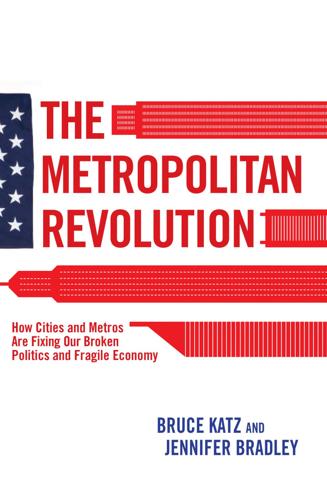
The Metropolitan Revolution: How Cities and Metros Are Fixing Our Broken Politics and Fragile Economy
by
Bruce Katz
and
Jennifer Bradley
Published 10 Jun 2013
c=dkLNK1MQIwG&b=4860375). 10-2151-2 notes.indd 243 5/20/13 7:00 PM 10-2151-2 notes.indd 244 5/20/13 7:00 PM S E L E C T E D BIBL IO G RAPH Y Ács, Zoltán J. Innovation and the Growth of Cities. Northampton, Mass.: Edward Elgar, 2002. Addams, Jane. Twenty Years at Hull House, with Autobiographical Notes. New York: Macmillan, 1912. Artz, Kendall W., and others. “A Longitudinal Study of the Impact of R&D, Patents, and Product Innovation on Firm Performance.” Journal of Product Innovation Management 27, no. 5 (2010): 725–40. Atkinson, Robert D. The Past and the Future of America’s Economy: Long Waves of Innovation That Power Cycles of Growth. Northampton, Mass.: Edward Elgar, 2004.
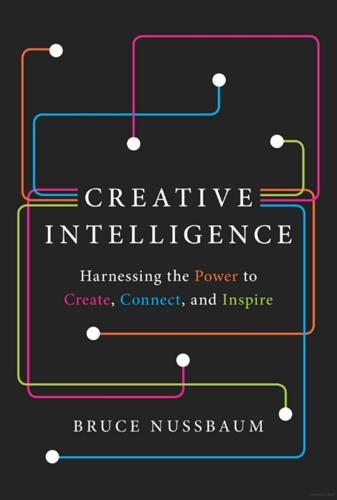
Creative Intelligence: Harnessing the Power to Create, Connect, and Inspire
by
Bruce Nussbaum
Published 5 Mar 2013
Reena Jana, who was a member of our innovation and design team at BusinessWeek and is now Executive Editor at Frog, moderated this conversation between Roger and Dan Pink on March 18, 2011, on Educating the Creative Leaders of Tomorrow, put on as part of the Steelcase 360 Discussion series. 253 The Juilliard process: http://www.juilliard.edu/apply/ program-information/dance/ index.php#auditions, accessed September 6, 2012. 254 On Dancing with the Stars: http://beta.abc.go.com/shows/ dancing-with-the-stars/about-the-show, accessed September 8, 2012. 254 A three-person panel of judges: Ibid. 254 In The Creative Vision: Mihaly Csikszentmihalyi and Jacob W. Getzels, The Creative Vision: Longitudinal Study of Problem Finding in Art (Hoboken, NJ: John Wiley & Sons, 1976). 254 Teresa M. Amabile later used: http://www.gifted.uconn.edu/ nrcgt/reports/rm04202/rm04202.pdf, accessed September 6, 2012. As Keith Sawyer describes in Explaining Creativity (New York: Oxford University Press, 2012), 40–44, Kaufman, Amabile, and others in the field of creativity research favored what is called the consensual assessment technique (CAT) as a measurement of individual creativity. 255 In 2012, 7 percent of all: “100 Top MBA Employers 2012—Where MBA Students Said They’d Most Like to Work” http://money.cnn.com/news/ economy/mba100/2012/full_list/, accessed September 8, 2012. 255 That placed the consultancy: Ibid. 255 On March 28, 2011, Brown: Tim Brown’s presentation to my class was one of the most extraordinary talks on the history and future of design I have ever heard.
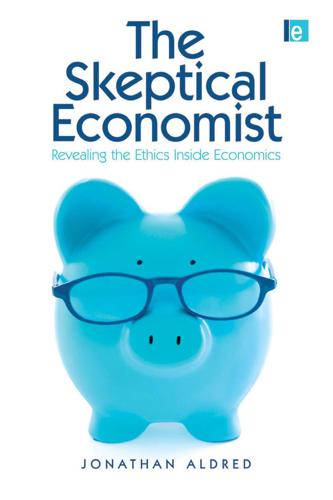
The Skeptical Economist: Revealing the Ethics Inside Economics
by
Jonathan Aldred
Published 1 Jan 2009
Cameron (eds) (2002) Interpreting the Precautionary Principle. London, Cameron May Offer, A. (2006) The Challenge of Affluence. Oxford, OUP Okun, A. (1975) Equality and Efficiency: The Big Trade-Off. Washington, DC, Brookings Institution Olsaretti, S. (2004) Liberty, Desert and the Market. Cambridge, CUP Oswald, A. (2005) ‘Does happiness adapt? A longitudinal study of disability with implications for economists and judges.’ Coventry, Warwick University working paper OXERA (2002) A Social Time Preference Rate for Use in Long-Term Discounting. London, Office of the Deputy Prime Minister Parfit, D. (1984) Reasons and Persons. Oxford, Clarendon Pearce, D. (2000) ‘Cost-benefit analysis and environmental policy’ in Environmental Policy.
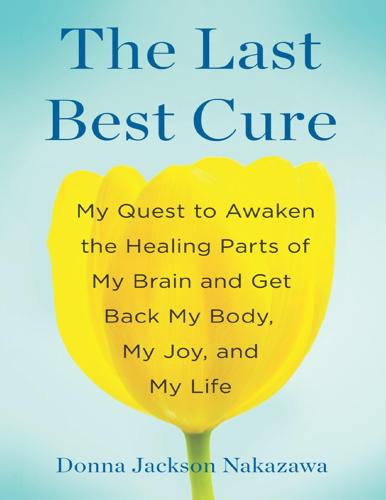
The Last Best Cure: My Quest to Awaken the Healing Parts of My Brain and Get Back My Body, My Joy, a Nd My Life
by
Donna Jackson Nakazawa
Published 21 Feb 2013
Screen-based entertainment time, all-cause mortality, and cardiovascular events: Population-based study with ongoing mortality and hospital events follow-up. J Am Coll Cardiol. 2011 Jan 18;57(3):292–99. For more information on this discussion on sedentary behavior see also: Thorp AA, Owen N, Neuhaus M, et al. Sedentary behaviors and subsequent health outcomes in adults a systematic review of longitudinal studies, 1996–2011. Am J Prev Med. 2011 Aug;41(2):207–15. Salmon J, Tremblay MS, Marshall SJ, et al. Health risks, correlates, and interventions to reduce sedentary behavior in young people. Am J Prev Med. 2011 Aug;41(2):197–206. Owen N, Healy GN, Matthews CE, et al. Too much sitting: The population health science of sedentary behavior.
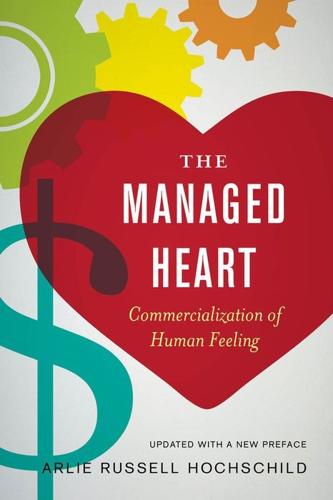
The Managed Heart: Commercialization of Human Feeling
by
Arlie Russell Hochschild
Published 1 Nov 1983
Watt, Ian The Rise of the Novel: Studies in Defoe, Richardson, 1964 and Fielding. Berkeley and Los Angeles: University of California Press. Weinstock, Allan R. 1967a "Family environment and the development of defense and coping mechanisms:' Journal of Personality and Social Psychology 5: 67- 75. "Longitudinal study of social class and defense pref1967b erences." Journal of Consulting Psychology 31: 531-541. Weiss, Robert 1976 "Transition states and other stressful situations: their nature and programs for their management." Pp. 213-232. In G. Caplan and M. Killilea (eds.), Support Systems and Mutual Help: A Multidisciplinary Exploration.
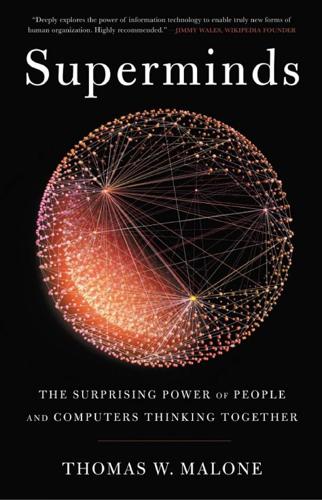
Superminds: The Surprising Power of People and Computers Thinking Together
by
Thomas W. Malone
Published 14 May 2018
Organization theorists have studied questions about how this process works under the heading of “transactive memory.” See, for example, Daniel M. Wegner, “Transactive Memory: A Contemporary Analysis of the Group Mind,” in Theories of Group Behavior, ed. Brian Mullen and George R. Goethals (New York: Springer Verlag, 1987), 185–208; Kyle Lewis, “Knowledge and Performance in Knowledge-Worker Teams: A Longitudinal Study of Transactive Memory Systems,” Management Science 50 (2004): 1,519–33, doi:10.1287/mnsc.1040.0257; Kyle Lewis and Benjamin Herndon, “The Relevance of Transactive Memory Systems for Complex, Dynamic Group Tasks,” Organization Science 22, no. 5 (2011): 1,254–65, doi:10.1287/orsc.1110.0647; Linda Argote and Yuqing Ren, “Transactive Memory Systems: A Microfoundation of Dynamic Capabilities,” Journal of Management Studies 49, no. 8 (2012): 1,375–82, doi:10.1111/j.1467-6486.2012.01077.x; Andrea B.

Reset
by
Ronald J. Deibert
Published 14 Aug 2020
Association of screen time and depression in adolescence. JAMA Pediatrics, 173(9), 853–859. http://doi.org/10.1001/jamapediatrics.2019.1759; However, see also Coyne, S. M., Rogers, A. A., Zurcher, J. D., Stockdale, L., & Booth, M. (2020). Does time spent using social media impact mental health?: An eight year longitudinal study. Computers in Human Behavior, 104, 106160. “Psychological, physical, societal, and economic harms”: Berthon et al. Addictive de-vices. Dating back at least to the time of the printing press: Levine, N. (2017). The nature of the glut: Information overload in postwar America. History of the Human Sciences, 30(1), 32–49. https://doi.org/10.1177/0952695116686016; Schick, A.
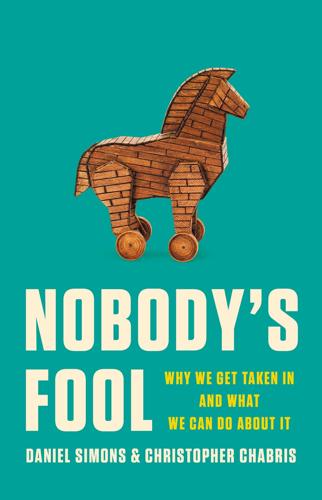
Nobody's Fool: Why We Get Taken in and What We Can Do About It
by
Daniel Simons
and
Christopher Chabris
Published 10 Jul 2023
Waltzer, “Every Thursday: Advertorials by Mobil Oil on the Op-Ed Page of The New York Times,” Public Relations Review 31 (2005): 197–208 [doi.org/10.1016/j.pubrev.2005.02.019]. 16. D. Henriques, The Wizard of Lies: Bernie Madoff and the Death of Trust (New York: St. Martin’s Griffin, 2017). 17. E. L. Henderson, D. J. Simons, and D. J. Barr, “The Trajectory of Truth: A Longitudinal Study of the Illusory Truth Effect,” Journal of Cognition 4 (2021): 1–23 [https://doi.org/10.5334/joc.161]. 18. As Election Day nears, the repetition that works with voters wears Redford’s candidate down, and he starts deliriously mocking his own slogans as he rides from one event to the next: “The Candidate 1972 Robert Redford,” YouTube [https://www.youtube.com/watch?

You've Been Played: How Corporations, Governments, and Schools Use Games to Control Us All
by
Adrian Hon
Published 14 Sep 2022
Big Fish Games, Inc., Aristocrat Technologies, Inc., Aristocrat Leisure Limited, and Churchill Downs Incorporated: Order granting approval of class action settlement, No. 15-cv-00612-RSL, Western District of Washington at Seattle, United States District Court, February 11, 2021, https://angeion-public.s3.amazonaws.com/www.BigFishGamesSettlement.com/docs/Order+Granting+Final+Approval+Of+Class+Action+Settlement.pdf. 52. Frédéric Dussault et al., “Transition from Playing with Simulated Gambling Games to Gambling with Real Money: A Longitudinal Study in Adolescence,” International Gambling Studies 17, no. 3 (2017): 386–400, https://doi.org/10.1080/14459795.2017.1343366; Matthew Rockloff et al., “Mobile EGM Games: Evidence That Simulated Games Encourage Real-Money Gambling,” Journal of Gambling Studies 36, (2020): 1253–1265, https://doi.org/10.1007/s10899-019-09869-6. 53.

Gene Eating: The Science of Obesity and the Truth About Dieting
by
Giles Yeo
Published 3 Jun 2019
B., Prevent and Reverse Heart Disease: The Revolutionary, Scientifically Proven, Nutrition-Based Cure. (Avery - Penguin Group First trade paperback edition, 2008). 14.Esselstyn Jr., C. B., Ellis, S. G., Medendorp, S. V. and Crowe, T. D., A strategy to arrest and reverse coronary artery disease: a 5-year longitudinal study of a single physician’s practice’. J Fam Pract 41 (1995), 560–68. 15.Bouvard, V. et al. Carcinogenicity of consumption of red and processed meat. Lancet Oncol 16 (2015), 1599–1600, doi:10.1016/S1470-2045(15)00444-1. 16.www.cancerresearchuk.org/health-professional/cancer-statistics/risk, Accessed May 6th, 2018. 17.Bouvard, V. et al.
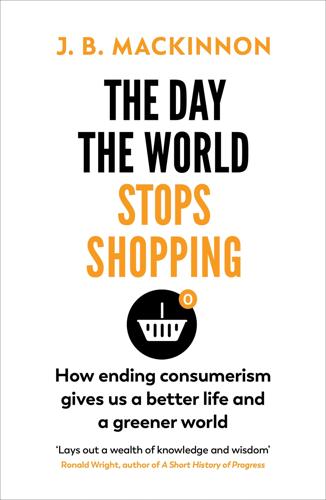
The Day the World Stops Shopping
by
J. B. MacKinnon
Published 14 May 2021
China Quarterly, 236 (2018): 1175–96. Kasser, Tim. “Materialistic Values and Goals.” Annual Review of Psychology 67 (2016): 489–514. Kasser, Tim, Katherine L. Rosenblum, Arnold J. Sameroff, Edward L. Deci, Christopher P. Niemiec, et al. “Changes in Materialism, Changes in Psychological Well-being: Evidence from Three Longitudinal Studies and an Intervention Experiment.” Motivation and Emotion 38, no. 1 (2014): 1–22. Keynes, John Maynard. “Economic Possibilities for Our Grandchildren.” 1930. Lekes, Natasha, Nora H. Hope, Lucie Gouveia, Richard Koestner, and Frederick L. Philippe. “Influencing Value Priorities and Increasing Well-being: The Effects of Reflecting on Intrinsic Values.”
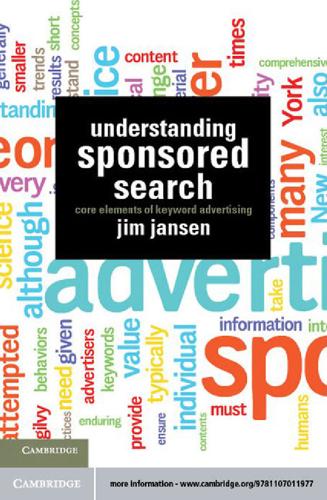
Understanding Sponsored Search: Core Elements of Keyword Advertising
by
Jim Jansen
Published 25 Jul 2011
M., Jensen, E. C., Chowdhury, A., Grossman, D., and Frieder, O. 2004. “Hourly Analysis of a Very Large Topically Categorized Web Query Log.” In The 27th Annual International Conference on Research and Development in Information Retrieval, Sheffield, UK, pp. 321–328. [27] Cothey, V. 2002. “A Longitudinal Study of World Wide Web Users’ Information Searching Behavior.” Journal of the American Society for Information Science and Technology, vol. 53(2), pp. 67–78. [28] Hölscher, C. and Strube, G. 2000. “Web Search Behavior of Internet Experts and Newbies.” International Journal of Computer and Telecommunications Networking, vol. 33(1–6), pp. 337–346. [29] Baeza-Yates, R., Caldeŕon-Benavides, L., and Gonźalez, C. 2006.

Exceptional People: How Migration Shaped Our World and Will Define Our Future
by
Ian Goldin
,
Geoffrey Cameron
and
Meera Balarajan
Published 20 Dec 2010
Highly skilled migrants typically work in growing sectors of the economy, or in areas such as health care, education, and information technology that are short of native workers.11 In short, migration creates more opportunities for people to specialize in their work, which produces a net economic stimulus. Macroeconomic studies of developed countries with significant foreign-born populations have consistently found that migration boosts and sustains growth. A recent longitudinal study of OECD countries found that increased immigration is accompanied by commensurate increases in total employment and GDP growth.12 A government-sponsored study in the UK found that migrants contributed about £6 billion to the national economy in 2006.13 George J. Borjas estimates that migrants make a modest net contribution of $10 billion a year to the U.S. economy, a figure that other economists have suggested is at the low end of the range.14 Between 1995 and 2005, 16 million jobs were created in the United States, and 9 million of them were filled by foreigners.15 During the same period, migrants made up as many as two-thirds of new employees in Western and Southern European countries.16 While economists agree that immigration produces net benefits for the economy, they debate how to measure these effects.
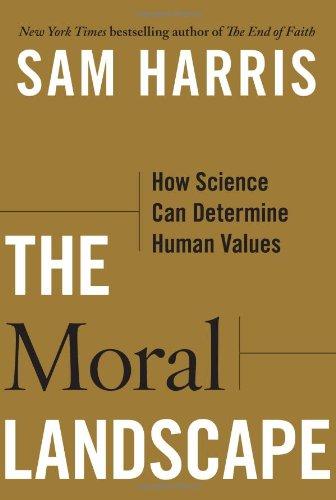
The Moral Landscape: How Science Can Determine Human Values
by
Sam Harris
Published 5 Oct 2010
Indianapolis, IN: Hackett Publishing. Spitzer, M., Fischbacher, U., Herrnberger, B., Gron, G., & Fehr, E. (2007). The neural signature of social norm compliance. Neuron, 56 (1), 185–196. Sprengelmeyer, R., Schroeder, U., Young, A. W., & Epplen, J. T. (2006). Disgust in pre-clinical Huntington’s disease: A longitudinal study. Neuropsychologia, 44 (4), 518–533. Squire, L. R., & McKee, R. (1992). Influence of prior events on cognitive judgments in amnesia. J Exp Psychol Learn Mem Cogn, 18 (1), 106–115. Stanovich, K. E., & West, R. F. (2000). Individual differences in reasoning: Implications for the rationality debate?
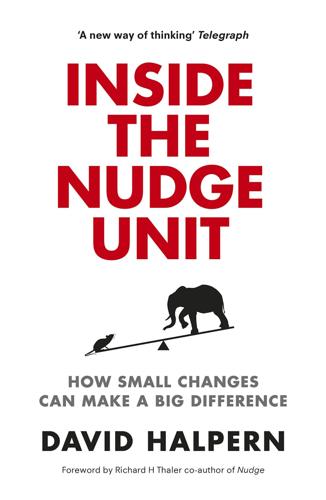
Inside the Nudge Unit: How Small Changes Can Make a Big Difference
by
David Halpern
Published 26 Aug 2015
Konrad Lorenz documented how many species appeared to have critical periods during which they would learn specific relationships, and that, once this limited period passed, the learning was ‘stamped on’ or ‘imprinted’ permanently. He was awarded the Nobel Prize in 1973 for his work. (Getty Images.) It is generally considered that human beings show much more malleability in their learning, but, nonetheless, at least some similar effects appear to exist. For example, longitudinal studies have shown that having a mother with maternal depression in the first six months of a child’s life is associated with marked reductions in that infant’s IQ at the age of 11, all other factors taken into account. It is thought that the disruption of the rapid mother–child interaction, or ‘meshing’, in early life stunts the infant’s development of the social skills and engagement in their environment in a way that leaves a permanent mark.
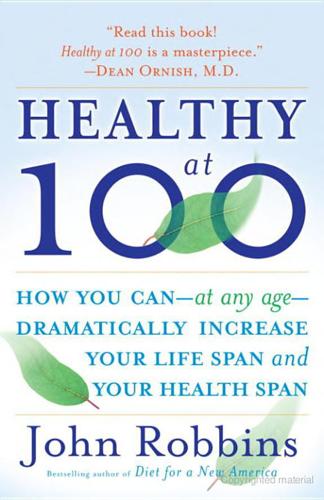
Healthy at 100: The Scientifically Proven Secrets of the World's Healthiest and Longest-Lived Peoples
by
John Robbins
Published 1 Sep 2006
Esselstyn, “Updating a 12-Year Experience with Arrest and Reversal Therapy for Coronary Heart Disease,” American Journal of Cardiology 1999, 84:339–41. See also Caldwell B. Esselstyn, “Resolving the Coronary Artery Disease Epidemic Through Plant-Based Nutrition,” Preventive Cardiology Fall 2001, pp. 171–77, and C. B. Esselstyn et al., “A Strategy to Arrest and Reverse Coronary Artery Disease: A 5-year longitudinal study of a single physician’s practice,” Journal of Family Practice 1995, 41(6):560–68. 3. Caldwell Esselstyn, “Making the Change,” www.heartattackproof.com/morethan04_change.htm. 4. Quoted in Roberto Suro, “Hearts and minds,” New York Times Magazine Dec. 29, 1991, p. 18. 5. Dan Buettner, “The Secrets of Long Life,” National Geographic Nov. 2005, pp. 2–26. 6.
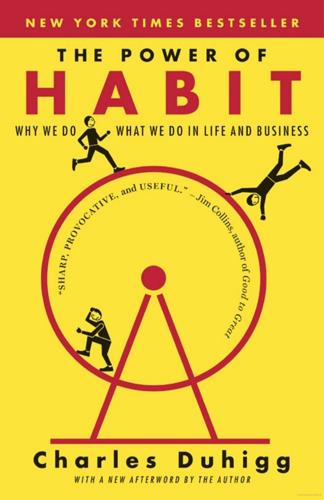
The Power of Habit: Why We Do What We Do in Life and Business
by
Charles Duhigg
Published 1 Jan 2011
So, while we know that people who move or get divorced will change their buying patterns, we don’t know that divorce always influences beer, or that a new home always influences cereal purchases. But the general trend holds. Alan Andreasen, “Life Status Changes and Changes in Consumer Preferences and Satisfaction,” Journal of Consumer Research 11, no. 3 (1984): 784–94. For more on this topic, see E. Lee, A. Mathur, and G. Moschis, “A Longitudinal Study of the Effects of Life Status Changes on Changes in Consumer Preferences,” Journal of the Academy of Marketing Science 36, no. 2 (2007): 234–46; L. Euehun, A. Mathur, and G. Moschis, “Life Events and Brand Preferences Changes,” Journal of Consumer Behavior 3, no. 2 (2003): 129–41. 7.8 and they care quite a bit For more on the fascinating topic of how particular moments offer opportunities for marketers (or government agencies, health activists, or anyone else, for that matter) to influence habits, see Bas Verplanken and Wendy Wood, “Interventions to Break and Create Consumer Habits,” Journal of Public Policy and Marketing 25, no. 1 (2006): 90–103; D.

T: The Story of Testosterone, the Hormone That Dominates and Divides Us
by
Carole Hooven
Published 12 Jul 2021
the length of the vocal folds is restricted: Azul et al., “Transmasculine People’s Voice Function.” most trans men are satisfied with the vocal changes that T brings: Ulrika Nygren, Agneta Nordenskjöld, Stefan Arver, and Maria Södersten, “Effects on Voice Fundamental Frequency and Satisfaction with Voice in Trans Men During Testosterone Treatment—A Longitudinal Study,” Journal of Voice 30, no. 6 (2016): 766, e24–e34. a mistranslation of a Hebrew phrase: Wikipedia, “Adam’s Apple,” Etymology, retrieved August 15, 2020, https://en.wikipedia.org/wiki/Adam’s_apple#Etymology. A complicated series of events: Merriam-Webster, “Why Is It Called an ‘Adam’s Apple’?
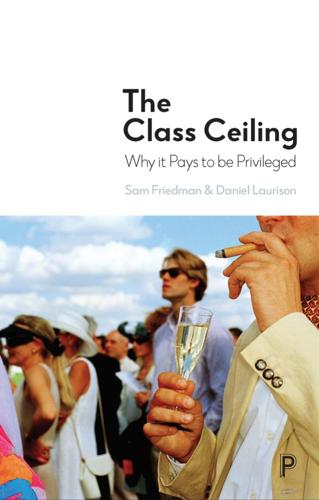
The Class Ceiling: Why It Pays to Be Privileged
by
Sam Friedman
and
Daniel Laurison
Published 28 Jan 2019
Beller, E. and Hout, M. (2006) ‘Intergenerational social mobility: The United States in comparative perspective’, The Future of Children, 16(2), 19-36. 324 References Notes Belsky, D.W., Domingue, B.W., Wedow, R., Arseneault, L., Boardman, J.D., Caspi, A., et al (2018) ‘Genetic analysis of social-class mobility in five longitudinal studies’, Proceedings of the National Academy of Sciences, July, 115(3), E7275-E7284 (https://doi.org/10.1073/pnas.1801238115). Bennett, T., Savage, M., Bortolaia Silva, E., Warde, A., GayoCal, M. and Wright, D. (2009) Culture, class, distinction, London: Routledge. Bertaux, D. and Thompson, P. (1997) Pathways to social class: A qualitative approach to social mobility, Oxford: Oxford University Press.

Think Like a Rocket Scientist: Simple Strategies You Can Use to Make Giant Leaps in Work and Life
by
Ozan Varol
Published 13 Apr 2020
Werner Heisenberg, Physics and Philosophy: The Revolution in Modern Science (New York: Harper, 1958). 14. Ahmed M. Abdulla et al., “Problem Finding and Creativity: A Meta-Analytic Review,” Psychology of Aesthetics, Creativity, and the Arts (August 9, 2018), https://psycnet.apa.org/record/2018-38514-001. 15. Jacob W. Getzels and Mihaly Csikszentmihalyi, The Creative Vision: Longitudinal Study of Problem Finding in Art (New York: Wiley, 1976). 16. NASA, “Mariner Space Probes,” https://history.nasa.gov/mariner.html. 17. NASA, “Viking 1 and 2,” https://mars.nasa.gov/programmissions/missions/past/viking. 18. NASA, “Viking Mission Overview,” www.nasa.gov/redplanet/viking.html. 19.
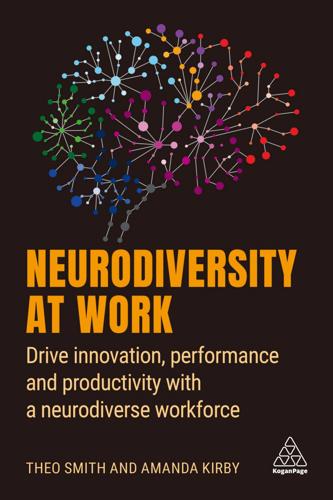
Neurodiversity at Work: Drive Innovation, Performance and Productivity With a Neurodiverse Workforce
by
Amanda Kirby
and
Theo Smith
Published 2 Aug 2021
Notes 1 Churchard, A et al (2019) The prevalence of autistic traits in a homeless population, Autism, https://journals.sagepub.com/doi/10.1177/1362361318768484# (archived at https://perma.cc/7AK7-UZGS) 2 Kirby, A et al (2020) Young men in prison with Neurodevelopmental Disorders: Missed, misdiagnosed and misinterpreted, Prison Service Journal, https://www.crimeandjustice.org.uk/sites/crimeandjustice.org.uk/files/PSJ%20251%20November%202020%20%281%29.pdf (archived at https://perma.cc/UG5V-9233) 3 Young, S and Cocallis, K M (2019) Attention deficit hyperactivity disorder (ADHD) in the prison system, Current Psychiatry Reports, https://pubmed.ncbi.nlm.nih.gov/31037396/ (archived at https://perma.cc/S5DK-SVQF) 4 Law, J et al (2009) Modeling developmental language difficulties from school entry into adulthood: literacy, mental health, and employment outcomes, Journal of Speech, Language, and Hearing Research, https://pubmed.ncbi.nlm.nih.gov/19951922/ (archived at https://perma.cc/Q2DZ-7C9P) 5 St Clair, M C et al (2011) A longitudinal study of behavioral, emotional and social difficulties in individuals with a history of specific language impairment (SLI), Journal of Communication Disorders, https://pubmed.ncbi.nlm.nih.gov/20970811/ (archived at https://perma.cc/JR3X-3VHA) 6 Evans, L (2016) Ban the Box in Employment: A Grassroots History, https://prisonerswithchildren.org/wp-content/uploads/2019/10/BTB-Employment-History-Report-2016.pdf (archived at https://perma.cc/J2MN-968J) 7 Recruit (2020) Ban the Box: Removing the criminal record tick box from job application forms, http://recruit.unlock.org.uk/fair-chance-recruitment/ban-the-box/ (archived at https://perma.cc/2A7W-VJBE) 8 Smith, T (2020) Neurodiversity: Eliminating Kryptonite and Enabling Superheroes, Ep 26: Shelley Winner – a Winner’s Story, from prison to tech giant [podcast] 29 Nov, https://anchor.fm/neurodiversity/episodes/Ep-26-Shelley-Winner---A-Winners-Story--from-prison-to-tech-giant-en3vs6 (archived at https://perma.cc/HS6R-3EJV) 06 Policies and procedures What’s the legal stuff all about?

Yoga Nidra: The Art of Transformational Sleep
by
Kamini Desai
Published 7 Mar 2017
Of all the benefits of meditation a critical overview of 82 studies, showed that the strongest evidence for the efficacy of meditation was demonstrated for mood and anxiety disorders. The studies also found demonstrable benefit for epilepsy, symptoms of PMS and menopausal symptoms.[2] Sleep Cycles Abnormalities in the circadian rhythm sleep cycle may set the stage for depression. Longitudinal studies show that disordered REM sleep appears to precede episodes of depression by about five weeks. Four or five times a night, we cycle through periods of deep, relaxing sleep, marked by slow brainwaves (low Theta and Delta). Then we burst into REM dream sleep (high Theta) marked by dramatic brainwave activity and rapid eye movements.
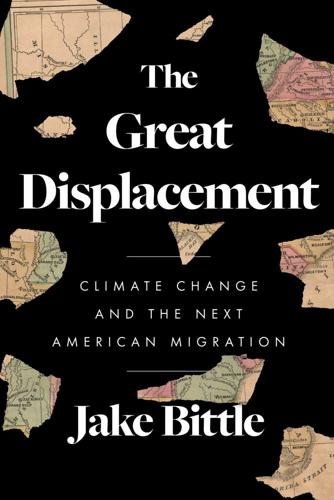
The Great Displacement: Climate Change and the Next American Migration
by
Jake Bittle
Published 21 Feb 2023
The buyout funds had allowed them to turn back the clock: by moving a few miles farther outside the city, they moved backward along the demographic timeline. This trend fits within the larger pattern discovered by the researchers Jim Elliott and Kevin Loughran, a pair of professors at Rice and Temple Universities who have conducted some of the only longitudinal studies of flood buyouts in the United States. Elliott and Loughran used federal and local records to track down thousands of Houstonians who took buyouts after Tropical Storm Allison, hoping to identify patterns in where they ended up. The researchers found that buyout participants from wealthier areas were more likely than those from low-income areas to move to a nearby neighborhood, and furthermore that participants from wealthier neighborhoods were more likely to resettle in proximity to each other.

Getting Past Your Past: Take Control of Your Life With Self-Help Techniques From EMDR Therapy
by
Francine Shapiro
Published 26 Mar 2013
van Ijzendoorn, M. H. (1992). Intergenerational transmission of parenting: A review of studies in nonclinical populations. Developmental Review, 12, 76-99. Waters, E., Merrick, S. K., Treboux, D., Crowell, J., & Albersheim, L. (2000). Attachment security in infancy and early adulthood: A twenty-year longitudinal study. Child Development, 71, 684-89. Wesselmann, D. (2007). Treating attachment issues through EMDR and a family systems approach. In F. Shapiro, F. Kaslow, & L. Maxfield (Eds.), Handbook of EMDR and family therapy processes. New York: Wiley. Memory, perception and Trauma Bower, G. H. (1981).

Machine, Platform, Crowd: Harnessing Our Digital Future
by
Andrew McAfee
and
Erik Brynjolfsson
Published 26 Jun 2017
All 129,864,880 of You,” Google Books Search (blog), August 5, 2010, http://booksearch.blogspot.com/2010/08/books-of-world-stand-up-and-be-counted.html. 231 about 30 million are available: Khazar University Library and Information Center, “10 Largest Libraries of the World,” accessed February 6, 2017, http://library.khazar.org/s101/10-largest--libraries-of-the-world/en. 231 approximately 45 billion pages: Antal van den Bosch, Toine Bogers, and Maurice de Kunder, “Estimating Search Engine Index Size Variability: A 9-Year Longitudinal Study,” Scientometrics, July 27, 2015, http://www.dekunder.nl/Media/10.1007_s11192-016-1863-z.pdf; Maurice de Kunder, “The Size of the World Wide Web (the Internet),” WorldWideWebSize.com, accessed February 6, 2017, http://www.worldwidewebsize.com. 231 at least 25 million of those books: Stephen Heyman, “Google Books: A Complex and Controversial Experiment,” New York Times, October 28, 2015, https://www.nytimes.com/2015/10/29/arts/international/google-books-a-complex-and-controversial-experiment.html. 231 an estimated 80 million videos are on YouTube alone: Chris Desadoy, “How Many Videos Have Been Uploaded to YouTube?”

The Theory That Would Not Die: How Bayes' Rule Cracked the Enigma Code, Hunted Down Russian Submarines, and Emerged Triumphant From Two Centuries of Controversy
by
Sharon Bertsch McGrayne
Published 16 May 2011
In 1948 Cornfield helped design the Framingham Heart Study, which has since followed the health of three generations of Framingham, Massachusetts, residents. As one of the first important studies based on Framingham, Cornfield followed 1,329 adult male residents for a decade. Between 1948 and 1958, 92 of the group experienced myocardial infarction or angina pectoris. Longitudinal studies like Framingham are designed to investigate a large variety of variables, both singly and jointly, on the risk of developing a disease. Traditionally, epidemiologists studied their data by inspecting—“contemplating” was Cornfield’s word—the resulting multiple cross-classification arrays. Three risk factors, each considered at low, medium, and high levels, would produce a tidy 3x3 table of cells, but as the number of variables increased and they were considered singly and jointly, the number of cells to be contemplated quickly became impracticable.
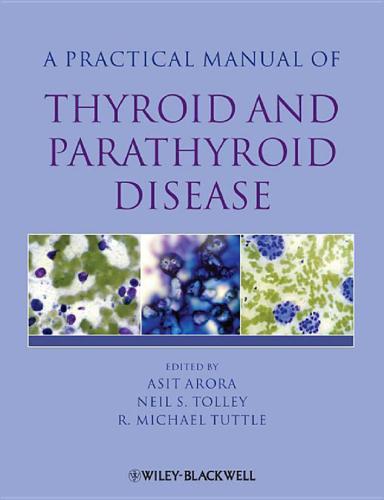
Practical Manual of Thyroid and Parathyroid Disease
by
Asit Arora
,
Neil Tolley
and
R. Michael Tuttle
Published 2 Jan 2009
Radioactive iodine therapy Once the patient is biochemically euthyroid, definitive treatment can be planned to cure hyperthyroidism and Endocrine disorders: medical management prevent relapse of autoimmune hyperthyroidism. Definitive treatment involves either radioiodine ablation with 131 I or surgery. Radioiodine is a safe treatment with no evidence from longitudinal studies to suggest that fertility, intrathyroid or extrathyroid malignancy risks are adversely affected. Local guidelines should be followed for counselling, consent and administration. The dose given in benign thyroid disease is lower than that used in the management of thyroid carcinoma. It should ideally be given to euthyroid patients and caution should be exercised in patients with thyroid ophthalmopathy as radioiodine may exacerbate eye disease, especially in smokers.

The Big Sort: Why the Clustering of Like-Minded America Is Tearing Us Apart
by
Bill Bishop
and
Robert G. Cushing
Published 6 May 2008
Eighty percent of the non-Hispanic whites ages twenty to thirty-four who moved during the 1990s relocated to the twenty-one cities highest in technology and patent production.† Young people are more likely than old people to move. And young, educated people are more likely to move farther and more often than are young, less educated people. According to one longitudinal study covering most of the 1980s and 1990s, only 19 percent of young people with only a high school degree moved between states, but 45 percent of those with more than a college education migrated to a new state.11 Young people moved disproportionately to central cities. The likelihood that a twenty-five- to thirty-four-year-old would live within three miles of a city center increased significantly in each of the fifty largest metro areas during the 1990s.12 Older people, meanwhile, clustered in the country's least dynamic (economically and technologically, at least) cities.

Work Rules!: Insights From Inside Google That Will Transform How You Live and Lead
by
Laszlo Bock
Published 31 Mar 2015
Richard Locke, Thomas Kochan, Monica Romis, and Fei Qin, “Beyond Corporate Codes of Conduct: Work Organization and Labour Standards at Nike’s Suppliers,” International Labour Review 146, no. 1–2 (2007): 21–40. 16. Kamal Birdi, Chris Clegg, Malcolm Patterson, Andrew Robinson, Chris B. Stride, Toby D. Wall, and Stephen J. Wood, “The Impact of Human Resource and Operational Management Practices on Company Productivity: A Longitudinal Study,” Personnel Psychology 61 (2008): 467–501. 17. The four were Francis Upton, Charles Batcheldor, Ludwig Boehm, and John Kruesi. See “Six teams that changed the world,” Fortune, May 31, 2006, http://money.cnn.com/2006/05/31/magazines/fortune/sixteams_greatteams_fortune_061206/. 18. Nicole Mowbray, “Oprah’s path to power,” The Observer, March 2, 2003, http://www.theguardian.com/media/2003/mar/02/pressandpublishing.usnews1. 19.

Geek Heresy: Rescuing Social Change From the Cult of Technology
by
Kentaro Toyama
Published 25 May 2015
Organizational Behavior and Human Performance 15:212–240, www.sciencedirect.com/science/article/pii/0030507376900386. Wai, J., D. Lubinski, C. P. Benbow, and J. H. Steiger. (2010). Accomplishment in science, technology, engineering, and mathematics (STEM) and its relation to STEM educational dose: A 25-year longitudinal study. Journal of Educational Psychology, Advance online publication, http://psycnet.apa.org/psycinfo/2010-19348-001. Walensky, Rochelle P., and Daniel R. Kuritzkes. (2010). The impact of The President’s Emergency Plan for AIDS Relief (PEPfAR) beyond HIV and why it remains essential. Clinical Infectious Diseases 50(2):272–275, http://cid.oxfordjournals.org/content/50/2/272.full.
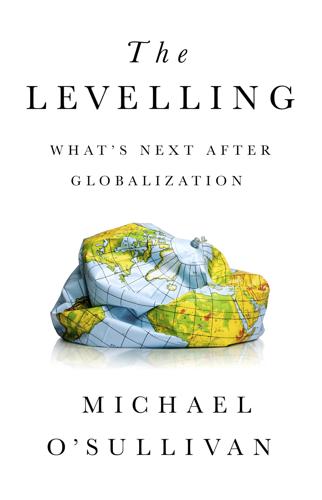
The Levelling: What’s Next After Globalization
by
Michael O’sullivan
Published 28 May 2019
Currie, Schwandt, and Thuilliez, “When Social Policy Saves Lives.” 29. Council of Economic Advisers, “The Underestimated Cost of the Opioid Crisis,” November 2017, https://www.whitehouse.gov/sites/whitehouse.gov/files/images/The%20Underestimated%20Cost%20of%20the%20Opioid%20Crisis.pdf. 30. Add Health: The National Longitudinal Study of Adolescent to Adult Health, UNC Carolina Population Center, http://www.cpc.unc.edu/projects/addhealth. 31. Ferrie, Massey, and Rothbaum, “Do Grandparents and Great-Grandparents Matter?” 32. Barrone, and Mocetti, “What’s Your (Sur)Name?” 33. Data collected at CHNS: China Health and Nutritional Survey, UNC Carolina Population Center, https://www.cpc.unc.edu/projects/china. 34.
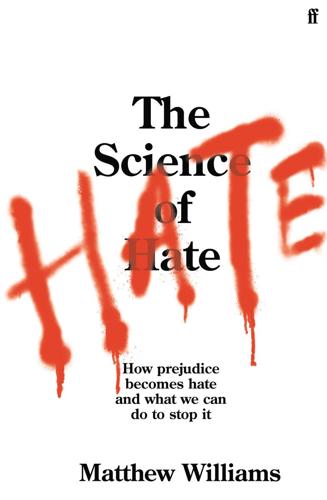
The Science of Hate: How Prejudice Becomes Hate and What We Can Do to Stop It
by
Matthew Williams
Published 23 Mar 2021
Altemeyer, The Authoritarian Spectre, Harvard, MA: Harvard University Press, 1996; Sidanius and Pratto, Social Dominance. 28. S. Lupien et al., ‘Effects of Stress Throughout the Lifespan on the Brain, Behaviour and Cognition’, Nature Reviews Neuroscience 10 (2009), 434–5. 29. Sapolsky, Behave. 30. V. Carrion et al., ‘Stress Predicts Brain Changes in Children: A Pilot Longitudinal Study on Youth Stress, Posttraumatic Stress Disorder, and the Hippocampus’, Pediatrics 119 (2007), 509–16. 31. Sapolsky, Behave. 32. S. Taylor et al., ‘Biobehavioral Responses to Stress in Females: Tend-and-Befriend, Not Fight-or-Flight’, Psychological Review 107 (2000), 411–29. 33. Sapolsky, Behave. 34.

Heat Wave: A Social Autopsy of Disaster in Chicago
by
Eric Klinenberg
Published 11 Jul 2002
Rubinstein (1986, 172–79), for example, classifies social integration and activity on a scale ranging from “very low range” to “high range”; and Gibson (2000, 4–6) lists four types of loneliness: “physical aloneness,” “loneliness as a state of mind,” “the feeling of isolation due to a personal characteristic,” and “solitude.” 12. See Gibson (2000) for a review of studies showing that most seniors who live alone are not lonely. There are a number of epidemiological studies showing the significance of social integration for longevity and health, including articles written from extensive longitudinal studies in Alameda County, California; Tecumesh, Michigan; and Durham County, North Carolina (see Blazer 1982; House, Robbins, and Metzner 1982; Seeman, et al. 1987). According to federal statistics, older people who live alone or with nonrelatives are more than three times more likely to be poor than are seniors who live with families (Administration on Aging 1999, 10).
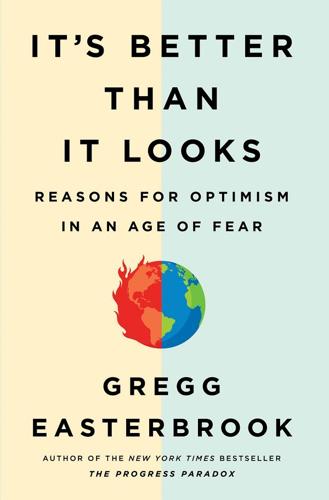
It's Better Than It Looks: Reasons for Optimism in an Age of Fear
by
Gregg Easterbrook
Published 20 Feb 2018
As the writer Timothy Noah has noted: Timothy Noah, “The Death of the Telephone Call,” Slate, September 18, 2016. Facebook has about two billion daily users: Josh Constine, “Facebook Now Has Two Billion Users,” TechCrunch, June 27, 2017. Holly Shakya and Nicholas Christakis… found: Holly Shakya et al., “Association of Facebook Use with Compromised Well-being: A Longitudinal Study,” American Journal of Epidemiology, February 2017. Going into the 2016 election, Pew Research reported: Elisa Shearer, “News Use Across Social Media Platforms 2016” (Washington, DC: Pew Research Center, 2016). as Robert Thomson has said: Robert Thomson, “Fake News and the Digital Duopoly,” speech to the Asia Society, Hong Kong, 2016.
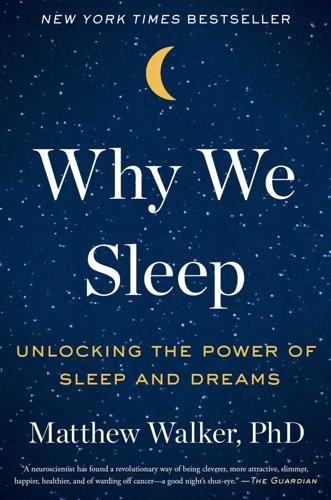
Why We Sleep: Unlocking the Power of Sleep and Dreams
by
Matthew Walker
Published 2 Oct 2017
Terman believed that this swing to an early-morning model of education would damage, and damage deeply, the intellectual growth of our youth. Despite his warnings, nearly a hundred years later, US education systems have shifted to early school start times, while many European countries have done just the opposite. We now have the scientific evidence that supports Terman’s sage wisdom. One longitudinal study tracked more than 5,000 Japanese schoolchildren and discovered that those individuals who were sleeping longer obtained better grades across the board. Controlled sleep laboratory studies in smaller samples show that children with longer total sleep times develop superior IQ, with brighter children having consistently slept forty to fifty minutes more than those who went on to develop a lower IQ.

Tenants: The People on the Frontline of Britain's Housing Emergency
by
Vicky Spratt
Published 18 May 2022
Research conducted by Shelter found that 60 per cent of those suffering with asthma or other chest and breathing problems saw their condition deteriorate once they had been moved. This is backed up by countless medical studies which have found that psychological stress and low quality of life are asthma triggers. A longitudinal study of children in the UK found that moving is associated with poorer mental health, so it follows that children from low-income backgrounds – like Morgan, and Limarra’s daughter Nevaeh – who are more likely to rent and be forced to move more frequently will be in worse health than those who grow up in stable housing.
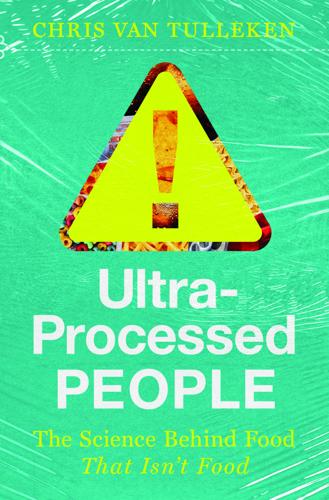
Ultra-Processed People: The Science Behind Food That Isn't Food
by
Chris van Tulleken
Published 26 Jun 2023
The American Midland Naturalist 1990; 123: 207–08. 5 Rauber F, Chang K, Vamos EP, et al. Ultra-processed food consumption and risk of obesity: a prospective cohort study of UK Biobank. European Journal of Nutrition 2020; 60: 2169–80. 6 Chang K, Khandpur N, Neri D, et al. Association between childhood consumption of ultraprocessed food and adiposity trajectories in the Avon Longitudinal Study of Parents and Children birth cohort. JAMA Pediatrics 2021; 175: e211573. 7 Baraldi LG, Martinez Steele E, Canella DS, et al. Consumption of ultra-processed foods and associated sociodemographic factors in the USA between 2007 and 2012: evidence from a nationally representative cross-sectional study.
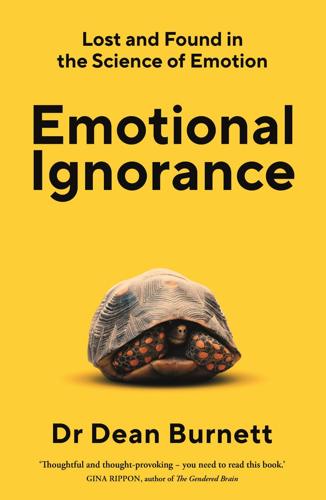
Emotional Ignorance: Lost and Found in the Science of Emotion
by
Dean Burnett
Published 10 Jan 2023
Hatfield, ‘Love types and subjective well-being: a cross-cultural study’, Social Behavior and Personality: An International Journal, 2004, 32(2): pp. 173–182. 96 Lewis, M., J.M. Haviland-Jones, and L.F. Barrett, Handbook of Emotions (Guilford Press, 2010). 97 Cacioppo, S., et al., ‘Social neuroscience of love’, Clinical Neuropsychiatry, 2012, 9(1), pp. 3–13. 98 Barsade, S.G. and O.A. O’Neill, ‘What’s love got to do with it? A longitudinal study of the culture of companionate love and employee and client outcomes in a long-term care setting’, Administrative Science Quarterly, 2014, 59(4): pp. 551–598. 99 Gilbert, D.T., S.T. Fiske, and G. Lindzey, The Handbook of Social Psychology, Vol. 1 (Oxford University Press, 1998). 100 Bartels, A. and S.
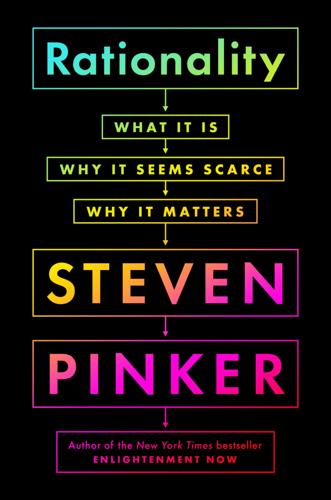
Rationality: What It Is, Why It Seems Scarce, Why It Matters
by
Steven Pinker
Published 14 Oct 2021
Journalism will suffer for it. Politico, May 14. https://www.politico.com/news/magazine/2020/05/14/bret-stephens-new-york-times-outrage-backlash-256494. Parker, A. M., Bruine de Bruin, W., Fischhoff, B., & Weller, J. 2018. Robustness of decision-making competence: Evidence from two measures and an 11-year longitudinal study. Journal of Behavioral Decision Making, 31, 380–91. https://doi.org/10.1002/bdm.2059. Pashler, H., & Wagenmakers, E. J. 2012. Editors’ introduction to the special section on replicability in psychological science: A crisis of confidence? Perspectives on Psychological Science, 7, 528–30. https://doi.org/10.1177/1745691612465253.
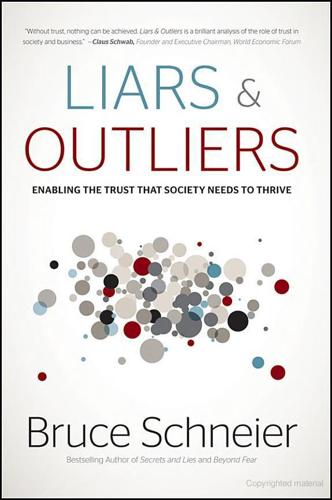
Liars and Outliers: How Security Holds Society Together
by
Bruce Schneier
Published 14 Feb 2012
Webster and P.A. Wells (2000), “The Characteristics of Speeders,” Road Safety Division, Department of the Environment, Transport and the Regions, TRL Report. Saranath Lawpoolsri, Jingyi Li, and Elisa R. Braver (2007), “Do Speeding Tickets Reduce the Likelihood of Receiving Subsequent Speeding Tickets? A Longitudinal Study of Speeding Violators in Maryland,” Traffic Injury Prevention, 8:26–34. uninsured drivers Ray Massey (23 Nov 2010), “Uninsured Drivers Kill 160 People a Year but Face Inadequate Fines as Low as £50,” Daily Mail. basing traffic fines British Broadcasting Corporation (14 Jan 2002), “Nokia Boss Gets Record Speeding Fine,” BBC News.
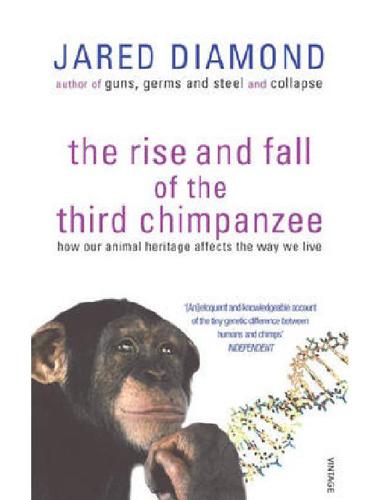
The Rise and Fall of the Third Chimpanzee
by
Jared Diamond
Published 2 Jan 1991
DeYoung and B. Fleischer, Motivational and personality trait relationships in mate selection', Behavior Genetics 6, pp. 1–6 (1976); E. Crognier, 'Assortative mating for physical features in an African population from Chad', Journal of Human Evolution 6, pp. 105–114 (1977); P.N. Bender and M.D. Newcomb, Longitudinal study of marital success and failure', Journal of Consulting and Clinical Psychology 46, pp. 1053-70 (1978); R.C. Johnson etal, 'Secular change in degree of assortative mating for ability? , Behavior Genetics 10, PP- 1–8 (1980); W.E. Nance et al, 'A model for the analysis of mate selection in the marriages of twins', Acta Geneticae Medicae Gemellologiae 29, pp. 91-101 (1980); D.

Designing Interfaces
by
Jenifer Tidwell
Published 15 Dec 2010
Case studies Case studies give you deep, detailed views into a few representative users or groups of users. You can sometimes use them to explore “extreme” users that push the boundaries of what the software can do, especially when the goal is a redesign of existing software. You can also use them as longitudinal studies—exploring the context of use over months or even years. Finally, if you’re designing custom software for a single user or site, you’ll want to learn as much as possible about the actual context of use. Surveys Written surveys can collect information from many users. You can actually get statistically significant numbers of respondents with these.

From Airline Reservations to Sonic the Hedgehog: A History of the Software Industry
by
Martin Campbell-Kelly
Published 15 Jan 2003
If CICS were a software company, it would rank about fifteenth.45 Industry-Specific Applications With several hundred firms by the end of the 1970s, the industry-specific software products industry was so fragmented that it is not possible to study a representative sample. This section, therefore, offers a “horizontal” study of firms that offered software products for the banking sector and a “longitudinal” study of a single firm (ASK Computer Systems) and a single application (Materials Resource Planning). Banking Software Packages The supply of banking software was highly fragmented, both in number of vendors and in number of packages. In the 1970s there were between 100 and 200 vendors; by 1984, after some consolidation, one survey estimated there were 150.46 The range of packages was equally diverse—in 1980 one analyst produced a list with 28 distinct categories (table 5.12).

Selfie: How We Became So Self-Obsessed and What It's Doing to Us
by
Will Storr
Published 14 Jun 2017
Some critics claimed that people in every generation exhibit narcissistic behaviour until they grow out of it, and that these judgements were just the usual grumbles of the middle-aged directed at the young. This would’ve been an elementary error if Twenge and Campbell had actually made it. But, of course, they hadn’t. For a start, said Twenge, ‘there does not exist a longitudinal study that has followed people from young adulthood, to middle adulthood to see what happens to their narcissism scores. It doesn’t exist. There’s certainly other data that points in the direction that younger people are probably going to be more narcissistic, but that’s the whole point of using the method of over-time data.

Advertisers at Work
by
Tracy Tuten
Published 28 May 2012
And you could also look at whether or not there was an increased overall empathy among people who just seem to go at each other among their differences. I think you could set up ways to look at it short term and long term, short term from as early as six months, long term—five or ten years out. Tuten: And even maybe a longitudinal study of the success of the people who participate? Boches: Exactly. Now, the real point is that while there may or may not be merit in this idea, it certainly makes for an interesting conversation. But it’s an example of collision. Using collisions to generate ideas. So thank you for enduring that little spiel.

Seeds of Hope: Wisdom and Wonder From the World of Plants
by
Jane Goodall
Published 1 Apr 2013
Biggiogera, “Ultrastructural Analysis of Testes from Mice Fed on Genetically Modified Soybean,” European Journal of Histochemistry 48 (2004): 448–54. R. Tudisco et al., “Genetically Modified Soya Bean in Rabbit Feeding: Detection of DNA Fragments and Evaluation of Metabolic Effects by Enzymatic Analysis,” Animal Science 82 (2006): 193–99. Massimo Trabalza-Marinucci et al., “A Three-Year Longitudinal Study on the Effects of a Diet Containing Genetically Modified Bt176 Maize on the Health Status and Performance of Sheep,” Livestock Science 113 (2008): 178–90. 21. “reports I read summarized the adverse effects” V. Shiva, op. cit., The GMO Emperor Has No Clothes, http://www.navdanya.org/attachments/Latest_Publications7.pdf. 22.
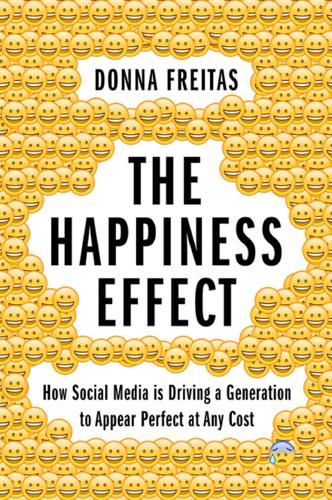
The Happiness Effect: How Social Media Is Driving a Generation to Appear Perfect at Any Cost
by
Donna Freitas
Published 13 Jan 2017
Chapter 5 1.This, despite the fact that so many studies about college students/young adults and faith (including my own) find that incredibly high percentages of young adults—to the tune of around 80 percent—identify as spiritual and/or religious to at least some degree. For my work on this (that is unrelated to social media), see Donna Freitas, Sex and the Soul: Juggling Sexuality, Spirituality, Romance and Religion on America’s College Campuses (New York: Oxford University Press, 2008). One of the best longitudinal studies around on young adults and spirituality/religion in general is Christian Smith’s NSYR (National Study of Youth and Religion), with his publication Soul Searching: The Religious and Spiritual Lives of American Teenagers (New York: Oxford University Press, 2005) a must read for anyone interested in young adult religiosity.
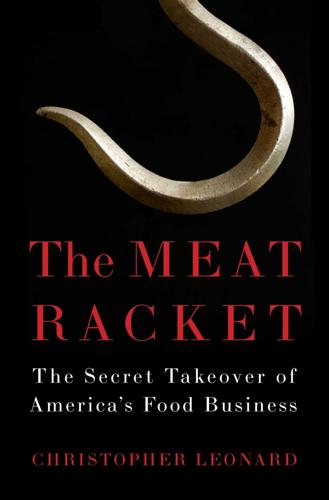
The Meat Racket: The Secret Takeover of America's Food Business
by
Christopher Leonard
Published 18 Feb 2014
The grids encourage high yields and maximize the amount of beef: Copy of Tyson Foods grid contract for cattle purchases, obtained by author. CHAPTER 10: THE FOOD DICTATORSHIP Heffernan’s research was based in the rural area of Union Parish in Louisiana: William D. Heffernan and David H. Lind, “Union Parish, Louisiana: The Third Phase of a Thirty Year Longitudinal Study,” 2000. Report at http://www.justice.gov/atr/public/workshops/ag2010/001/AGW-00067-a.pdf. There was one reason that Heffernan asked these questions: Harold F. Breimyer, interviews by author, circa 1999 and 2000; William Heffernan, interviews by author, 2010, 2011, 2012; Breimyer, Individual Freedom and the Economic Organization of Agriculture.
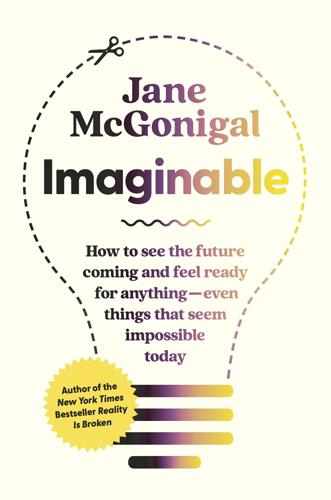
Imaginable: How to See the Future Coming and Feel Ready for Anything―Even Things That Seem Impossible Today
by
Jane McGonigal
Published 22 Mar 2022
Shamay-Tsoory, Judith Aharon-Peretz, and Daniella Perry, “Two Systems for Empathy: A Double Dissociation between Emotional and Cognitive Empathy in Inferior Frontal Gyrus versus Ventromedial Prefrontal Lesions,” Brain 132, no. 3 (March 2009): 617–27, https://doi.org/10.1093/brain/awn279. 6 Andrew Reiljan, “ ‘Fear and Loathing across Party Lines’ (Also) in Europe: Affective Polarisation in European Party Systems,” European Journal of Political Research 59, no. 2 (May 2020): 376–96, https://doi.org/10.1111/1475-6765.12351; Shanto Iyengar et al., “The Origins and Consequences of Affective Polarization in the United States,” Annual Review of Political Science 22 (2019): 129–46, https://doi.org/10.1146/annurev-polisci-051117-073034; Shanto Iyengar, Gaurav Sood, and Yphtach Lelkes, “Affect, Not Ideology: A Social Identity Perspective on Polarization,” Public Opinion Quarterly 76, no. 3 (September 2012): 405–31, https://doi.org/10.1093/poq/nfs038. 7 Levi Boxell et al., “Affective Polarization Did Not Increase during the Coronavirus Pandemic,” working paper no. 28036 (October 2020), National Bureau of Economic Research, https://doi.org/10.3386/w28036. 8 Sebastian Jungkunz, “Political Polarization During the COVID-19 Pandemic,” Frontiers in Political Science 3 (March 2021): 622512, https://doi.org/10.3389/fpos.2021.622512; Hunt Allcott et al., “Polarization and Public Health: Partisan Differences in Social Distancing During the Coronavirus Pandemic,” Journal of Public Economics 191 (November 2020): 104254, https://doi.org/10.1016/j.jpubeco.2020.104254; Christos Makridis and Jonathan T. Rothwell, “The Real Cost of Political Polarization: Evidence from the COVID-19 Pandemic,” June 29, 2020, available at SSRN: http://dx.doi.org/10.2139/ssrn.3638373; Ariel Fridman, Rachel Gershon, and Ayelet Gneezy, “COVID-19 and Vaccine Hesitancy: A Longitudinal Study,” PloS One 16, no. 4 (April 2021): e0250123, https://doi.org/10.1371/journal.pone.0250123; Wändi Bruine de Bruin, Htay-Wah Saw, and Dana P. Goldman, “Political Polarization in US Residents’ COVID-19 Risk Perceptions, Policy Preferences, and Protective Behaviors,” Journal of Risk and Uncertainty 61 (November 2020): 177–94, https://doi.org/10.1007/s11166-020-09336-3. 9 Mark H.

The Lonely Century: How Isolation Imperils Our Future
by
Noreena Hertz
Published 13 May 2020
Coan, H.S. Schaefer, and R.J. Davidson, ‘Lending a hand: social regulation of the neural response to threat’, Psychological Sciences 17, no. 12 (December 2006), 1032–39, doi:10.1111/j.1467-9280.2006.01832.x. 63 X. Pan and K.H. Chee, ‘The power of weak ties in preserving cognitive function: a longitudinal study of older Chinese adults’, Aging and Mental Health (April 2019), 1–8, doi:10.1080/13607863.2019.1597015. 64 ‘Young people aged 18–24 (77%) and 25–34 (76%) are the age groups most likely to say their volunteering helped them feel less isolated … Over three-quarters of volunteers (77%) reported that volunteering improved their mental health and well-being.
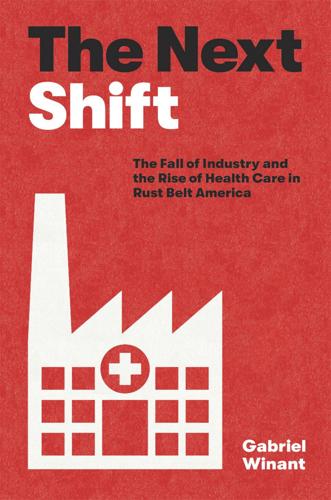
The Next Shift: The Fall of Industry and the Rise of Health Care in Rust Belt America
by
Gabriel Winant
Published 23 Mar 2021
Anderson, p. 12, SLC; Michele McMills, interview with Robert L. Anderson, May 8, 1991, p. 32, SLC; Irwin M. Marcus, “The Deindustrialization of America: Homestead, a Case Study, 1959–1984,” Pennsylvania History 52, no. 3 (July 1985), 174; Hoerr, And the Wolf Finally Came, 19; Sara Bachman Ducey et al., Poor Infants, Poor Chances: A Longitudinal Study of Progress toward Reducing Low Birth Weight and Infant Mortality in the United States and Its Largest Cities, 1979–1984 (Washington, DC: Food Research and Action Center, 1987), 45, 178–179; “Unemployment Tied to Infant Death Rise,” PPG, November 19, 1983. 52. Henry W. Pierce, “Woes of All Kinds Grow in Hard Times,” PPG, May 18, 1982, pp. 1–4.

Born in Flames
by
Bench Ansfield
Published 15 Aug 2025
New York Urban Coalition, “Fire Insurance: A Crisis,” 12–20. 49For the “boon” quotation, see “The Central City Insurance Crisis,” 678. Federal Insurance Administration, “Insurance Crisis in Urban America,” 6. For GAO quote, see Deborah Orin, “Insurance Plan May Spur Arson,” New York Post, June 13, 1978. 50As this book went to press, the Federal Reserve of Chicago published a longitudinal study confirming the FAIR plans’ deleterious effects. Ingrid Gould Ellen, et al., “The Bronx Is Burning: Urban Disinvestment Effects of the Fair Access to Insurance Requirements,” Federal Reserve Bank of Chicago, December 16, 2024. Federal Insurance Administration, “Insurance Crisis in Urban America,” 18.

To Serve God and Wal-Mart: The Making of Christian Free Enterprise
by
Bethany Moreton
Published 15 May 2009
An admissions ofÂ�fiÂ�cer at George Washington University explained mid-Â�deÂ�cade that entering freshmen were looking for majors that would be “more marketable than the liberal-Â�arts programs have been in recent years.” “The sitting-Â�under-Â�a-Â�tree-Â�and-Â�wondering-Â�who-Â� you-Â�are routine has diminished,” agreed a Texas business professor. “Students are looking for layers of security.” A longitudinal study by the College Placement Council stressed the low salaries and long job hunts facing liberal arts graduates, and recommended that the tree-Â�sitters at least “take sufÂ�fiÂ�cient electives in business-Â�related subjects to enhance their employability.”19 The student demand for a career-Â�oriented degree was indeed one half of the equation, but the changes in the structure of higher education that favored a default culture of business were much more profound.

The Food Revolution: How Your Diet Can Help Save Your Life and Our World
by
John Robbins
Published 14 Sep 2010
Organization, the Society for Nutrition Education, and 39 other professors and health groups, cited in "Sugar Consumption Off the Charts," Center for Science in the Public Interest news release, December 30, 1998. 6. Gardner and Halweil, "Escaping Hunger," p. 26. 7. Ibid., p. 30. 8. Quoted in Suzuki, David, The Sacred Balance (Vmcouver, BC: Greystone Books, 1997), p. 21. 9. "California's `All Organic' School Lunches," Meat Industry Insights, August 19, 1999. 10. Ibid. 11. Nathan, I., et al., "A Longitudinal Study of the Growth of Matched Pairs of Vegetarian and Omnivorous Children ...," European Journal of Clinical Nutrition 51 (1997):20-5; O'Connell, J. M., et al., "Growth of Vegetarian Children: The Farm Study," Pediatrics 84 (1989):475-89; Sanders, T. A. B., "Growth and Development of British Vegan Children," American Journal of Clinical Nutrition 48 (1988):822-5. 12.

In the Realm of Hungry Ghosts: Close Encounters With Addiction
by
Gabor Mate
and
Peter A. Levine
Published 5 Jan 2010
Teicher, “Wounds That Time Won’t Heal: The Neurobiology of Child Abuse,” Cerebrum: The Dana Forum on Brain Science 2(4) (fall 2000). 10. A. de Mello A et al., “Update on Stress and Depression: The Role of the Hypothalamic-Pituitary-Adrenal (HPA) Axis,” Revista Brasileiva de Psiquiatria 25(4) (October 2003); see also G.W. Kraemer et al., “A Longitudinal Study of the Effect of Different Social Rearing Conditions on Cerebrospinal Fluid Norepinephrine and Biogenic Amine Metabolites in Rhesus Monkeys,” Neuropsychopharmacology 2(3) (September 1989): 175–89. 11. Teicher, “Wounds That Time Won’t Heal.” 12. B. Perry and R. Pollard, “Homeostasis, Stress, Trauma and Adaptation: A Neurodevelopmental View of Childhood Trauma,” Child and Adolescent Clinics of North America 7(1) (January 1998): 33–51. 13.
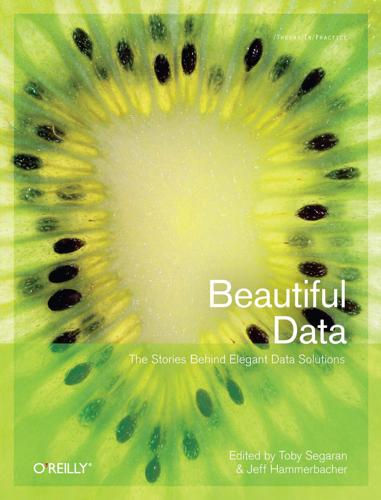
Beautiful Data: The Stories Behind Elegant Data Solutions
by
Toby Segaran
and
Jeff Hammerbacher
Published 1 Jul 2009
INFORMATION PLATFORMS AND THE RISE OF THE DATA SCIENTIST Download at Boykma.Com 81 In addition to powering internal and external reports, a/b testing pipelines, and many different data-intensive products and services, Facebook’s Hadoop cluster enabled some interesting applied research projects. One longitudinal study conducted by Data Scientists Itamar Rosenn and Cameron Marlow set out to determine what factors were most critical in predicting long-term user engagement. We used our platform to select a sample of users, trim outliers, and generate a large number of features for use in several least-angle regressions against different measures of engagement.

The Zero Marginal Cost Society: The Internet of Things, the Collaborative Commons, and the Eclipse of Capitalism
by
Jeremy Rifkin
Published 31 Mar 2014
In December 2013, The New York Times ran a lead article in its “Sunday Review” section reporting new findings by researchers that suggest that the millennial generation, deeply affected by the Great Recession and a stagnant global economy, has begun to shift its psychic priorities from material success to living a meaningful existence. A report commissioned by the Career Advisory Board found that among millenials between the ages of 21 and 31, having a meaningful career took precedence over making lots of money. A longitudinal study carried out by Jennifer L. Aaker, a professor of marketing at the Stanford Graduate School of Business, and her colleagues, followed several hundred Americans for a month to assess what the subjects meant by “meaningful.” What they discovered is that young millennials who said they have a meaningful life “saw themselves as more other-oriented—by being more specifically a ‘giver.’”
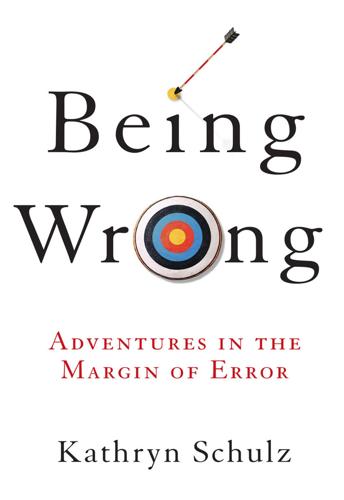
Being Wrong: Adventures in the Margin of Error
by
Kathryn Schulz
Published 7 Jun 2010
Unlike the deliberate distortions imagined by Orwell, our own constant revising of memory is largely unconscious, and usually innocuous. But as with the Records Department, our memories often serve the quasi-magical function of causing our mistakes to quietly disappear. One person who has seen this happen is Philip Tetlock. Tetlock is a psychology professor and political scientist who has conducted longitudinal studies of the accuracy of political forecasts by so-called experts—academics, pundits, policy wonks, and the like. As a matter of course, Tetlock would get back in touch with his subjects after the events they had predicted did or did not come to pass. In doing so, he discovered that these experts systematically misremembered their forecasts, believing them to have been far more accurate than his records showed.

Future Shock
by
Alvin Toffler
Published 1 Jun 1984
Hinkle, Jr., in The American Journal of Public Health, January, 1964, p. 11. 328 Material on life changes research is based partially on interviews with Dr. Thomas H. Holmes of the University of Washington School of Medicine; and Dr. Ransom J. Arthur and E. K. Eric Gunderson of the U.S. Navy Medical Neuropsychiatric Research Unit, San Diego. See the following papers in the Journal of Psychosomatic Research: "A Longitudinal Study of Life-Change and Illness Patterns" by Richard H. Rahe, Joseph D. McKean, Jr., and Ransom J. Arthur. vol. 10, 1967, pp. 355-366. "The Social Readjustment Rating Scale" by Thomas H. Holmes and Richard H. Rahe. vol. 11, 1967, pp. 213-218. "Magnitude Estimations of Social Readjustments" by Minoru Masuda and Thomas H.

Wealth and Poverty: A New Edition for the Twenty-First Century
by
George Gilder
Published 30 Apr 1981
This group of blacks had already acquired good jobs in the primary sector and were ranked among the top third of all American earners. Since the 1950s they have not committed crimes or otherwise attracted sociologists, but they comprise a group of men, presumably victims of segregation, who had shown great ability in their work and thus could be expected to respond well to the elimination of racial barriers. Longitudinal studies of the economic mobility of particular groups over time show striking gains for most Americans since 1957, with the average worker who was in his early thirties in 1957 moving up an entire quintile, or at least one-fifth of the way up the ladder of incomes. The successful young black workers of the 1950s had everything going for them that liberalism could give.
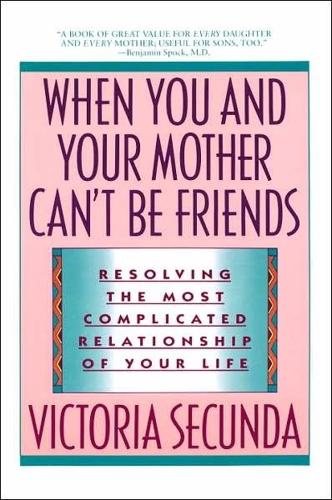
When You and Your Mother Can't Be Friends: Resolving the Most Complicated Relationship of Your Life
by
Victoria Secunda
Published 30 Mar 1990
Many siblings often wonder if they grew up in the same household, so different was each of their experiences of Mom. Temperament is a profound barometer of how people behave, as countless researchers have discovered. Stella Chess, M.D., and < 68 WHEN YOU AND YOUR MOTHER CANT BE FRIENDS Alexander Thomas, M.D., of New York University Medical Center, for example, in their longitudinal study of children, have written of the ''easy," "difficult," and "slow-to-warm-up" child. Mothers are simply grown-up versions of the same temperamental categories. Behavior has many sources. Genes. According to studies of twins, genes account for more than half of personality traits—the balance, less than half, are shaped by family and experience.

Children of Ruin
by
Adrian Tchaikovsky
Published 13 May 2019
‘Yes, well,’ Senkovi said, wringing his beard. ‘Nobody wants to trust it even though the virus has been flushed out. Floating in a tin can and all that. On the plus side the Nod expedition is mostly good to go, they told me. Even got the cold-sleep system set up planetside if you want to do a longitudinal study or two.’ Senkovi got an alert to tell him Baltiel was querying the progress on Damascus. At least he had good news there, he felt. Everything proceeding apace, oxygenated zones spreading, and a microbial ecosystem established and apparently stable. He even had a working elevator cable, because the thought of dropping living things from orbit into the sea made him shake and sweat, no matter how he tried to tell himself it wasn’t the same.

American Girls: Social Media and the Secret Lives of Teenagers
by
Nancy Jo Sales
Published 23 Feb 2016
Books, movies, and websites have portrayed girls as being cruel to one another, thus creating and reinforcing the stereotype of ‘mean girls.’ However, this popular perception of girls being meaner than boys is not always supported by research…Several large cross-cultural studies and meta-analyses have found no gender differences in relational aggression.” But one 2014 study did. The Healthy Teens Longitudinal Study by researchers at the University of Georgia, which followed a group of adolescents for seven years in the 2000s, found “significantly more” relational aggression in boys than in girls in middle school. In 2002, however, “relational aggression” was a media buzzword and “mean girls” were a hot topic.

Empire of Things: How We Became a World of Consumers, From the Fifteenth Century to the Twenty-First
by
Frank Trentmann
Published 1 Dec 2015
Bundesarchiv Koblenz, B 146/1138, 3 December 1952, my translation. The official English translation was ‘A Higher Standard of Living’, which fails to capture the prescriptive meaning of the original. 110. Bundesarchiv Koblenz B 146/389 and B 146/1138. 111. Ralph Harris, Margot Naylor & Arthur Seldon, Hire Purchase in a Free Society (1961), 28. 112. Kelly Longitudinal Study, interview with Lucille Windam, quoted in E. T. May, Homeward Bound: American Families in the Cold War Era (New York, 1999), 180. See also: Erica Carter, How German is She? Post-war West German Reconstruction and the Consuming Woman (Ann Arbor, MI, 1997). 113. Glen H. Elder, Children of the Great Depression: Social Change in Life Experience (Colorado, 1974/1999). 114.
…
See especially Viviana Zelizer, ‘Kids and Commerce’, Childhood 9, no. 4, 2002: 375–96; Lydia Martens, Dale Southerton & Sue Scott, ‘Bringing Children (and Parents) into the Sociology of Consumption: Towards a Theoretical and Empirical Agenda’, in: Journal of Consumer Culture 4, no. 2, 2004: 155–82. 18. S. L. Hofferth & J. F. Sandberg, ‘How American Children Spend Their Time’, in: Journal of Marriage and Family 63, no. 2, 2001: 295–308. 19. McNeal, Kids Market, 69–71. ‘The Longitudinal Study of Young People in England (Next Steps) Summary Report of Wave 1’ (2004). 20. Elmar Lange & Karin R. Fries, Jugend und Geld 2005 (Münster, 2006). 21. Elizabeth M. Chin, Purchasing Power: Black Kids and American Consumer Culture (Minneapolis, MN, 2001), esp. 82–5, 126, 161–2. 22. The following draws on Mizuko Ito, ‘Play in an Age of Digital Media: Children’s Engagements with the Japanimation Media Mix’, in: Abe Seminar Paper, 2002; and M.

Superintelligence: Paths, Dangers, Strategies
by
Nick Bostrom
Published 3 Jun 2014
They can, of course, have some effects sooner—for instance, by changing people’s expectations of what is to come. 61. Louis Harris & Associates (1969); Mason (2003). 62. Kalfoglou et al. (2004). 63. The data is obviously limited, but individuals selected for 1-in-10,000 results on childhood ability tests have been shown, in longitudinal studies, to be substantially more likely to become tenured professors, earn patents, and succeed in business than those with slightly less exceptional scores (Kell et al. 2013). Roe (1953) studied sixty-four eminent scientists and found median cognitive ability three to four standard deviations above the population norm and strikingly higher than is typical for scientists in general.

Adaptive Markets: Financial Evolution at the Speed of Thought
by
Andrew W. Lo
Published 3 Apr 2017
One famous study from 2003 examined the nature of these gene-environment interactions among people with a genetic predisposition toward depression.31 The psychologists Avshalom Caspi and Terrie Moffitt looked at a group of 1,037 New Zealanders, all born in the same year, who had been assessed regularly from the ages of three to twenty-six as part of the Dunedin Multidisciplinary Health and Development Study, one of the leading longitudinal studies in medicine and the social sciences. The researchers looked at variants of a regulatory region for a gene involved in the uptake of the neurotransmitter serotonin, under the theory that serotonin regulation is involved in depression. The length of this region determines how much of the serotonin transport protein is manufactured, the short variant being less efficient than the long one.

How Emotions Are Made: The New Science of the Mind and Brain
by
Lisa Feldman Barrett
Published 6 Mar 2017
“Approaching Awe, a Moral, Spiritual, and Aesthetic Emotion.” Cognition and Emotion 17 (2): 297–314. Khandaker, Golam M., Rebecca M. Pearson, Stanley Zammit, Glyn Lewis, and Peter B. Jones. 2014. “Association of Serum Interleukin 6 and C-Reactive Protein in Childhood with Depression and Psychosis in Young Adult Life: A Population-Based Longitudinal Study.” JAMA Psychiatry 71 (10): 1121–1128. Kiecolt-Glaser, Janice K. 2010. “Stress, Food, and Inflammation: Psychoneuroimmunology and Nutrition at the Cutting Edge.” Psychosomatic Medicine 72 (4): 365–369. Kiecolt-Glaser, Janice K., Jeanette M. Bennett, Rebecca Andridge, Juan Peng, Charles L. Shapiro, William B.
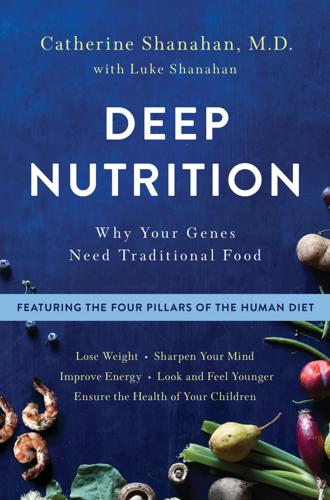
Deep Nutrition: Why Your Genes Need Traditional Food
by
Catherine Shanahan M. D.
Published 2 Jan 2017
Guts and grease: the diet of native americans, Fallon S, Wise Traditions. 13. A mechanistic link between chick diet and December in seabirds? Proceedings of the Royal Society of Biological Sciences, vol. 273, no. 1585, February 22, 2006, pp. 445–550. 14. Maternal vitamin D status during pregnancy and childhood bone mass at age nine years: a longitudinal study, Javaid MK, Obstetrical and Gynecological Survey, 61(5):305-307, May 2006. 15. Epigenetic epidemiology of the developmental origins hypothesis, Waterland RA, Annual Review of Nutrition, vol. 27, August 2007, pp. 363-388. 16. See Chapter 11. 17. The Paleo Diet: Lose Weight and Get Healthy By Eating the Food You Were Designed to Eat, Loren Cordain, Wiley, 2002, p. 39. 18.

Empire of AI: Dreams and Nightmares in Sam Altman's OpenAI
by
Karen Hao
Published 19 May 2025
GO TO NOTE REFERENCE IN TEXT Borderline personality disorder is marked: Author interviews with the aforementioned therapist and Blaise Aguirre, an assistant professor of psychiatry at Harvard Medical School, October 2024, both of whom have worked with many patients with the disorder. Neither reviewed Annie’s case, only commented on the condition more broadly. GO TO NOTE REFERENCE IN TEXT the disorder usually goes away: The most comprehensive study of borderline personality disorder is an ongoing twenty-four-year longitudinal study called McLean Study of Adult Development, which is conducted by Mary C. Zanarini and has followed over 360 individuals diagnosed with the disorder. Among the study’s key findings: The disorder has a good symptomatic prognosis, and psychotropic medications are not curative. The study regularly publishes new papers, including: Mary C.
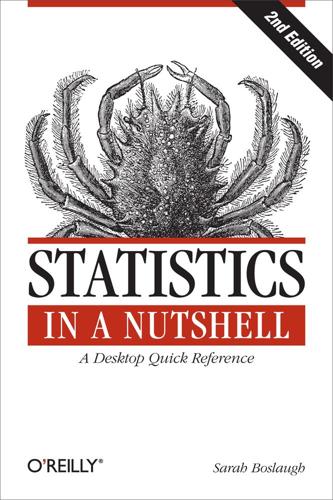
Statistics in a Nutshell
by
Sarah Boslaugh
Published 10 Nov 2012
Probably not; for instance, the Joint Canada/U.S. Survey of Health found not only different response rates for Canadians versus Americans but found nonresponse bias for nearly all major health status and health care access measures [results are summarized here]. Informative censoring can create bias in any longitudinal study (a study in which subjects are followed over a period of time). Losing subjects during a long-term study is a common occurrence, but the real problem comes when subjects do not drop out at random but for reasons related to the study’s purpose. Suppose we are comparing two medical treatments for a chronic disease by conducting a clinical trial in which subjects are randomly assigned to one of several treatment groups and followed for five years to see how their disease progresses.
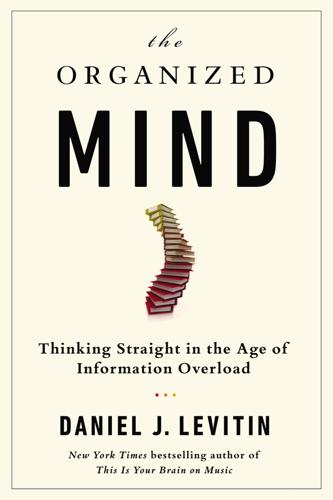
The Organized Mind: Thinking Straight in the Age of Information Overload
by
Daniel J. Levitin
Published 18 Aug 2014
business owners whose shops were destroyed by hurricane Agnes United States National Oceanic and Atmospheric Administration. (n.d.). Retrieved from http://www.noaa.gov/ Those who were externals and who experienced Anderson, C. R. (1977). Locus of control, coping behaviors, and performance in a stress setting: A longitudinal study. Journal of Applied Psychology, 62(4), 446–451. The locus-of-control construct is measurable Spector (1986) advises, “The most widely used instrument to measure locus of control is Rotter’s (1966) Internal-External (I-E) scale, which consists of 23 locus of control and six filler items in a forced-choice format.”
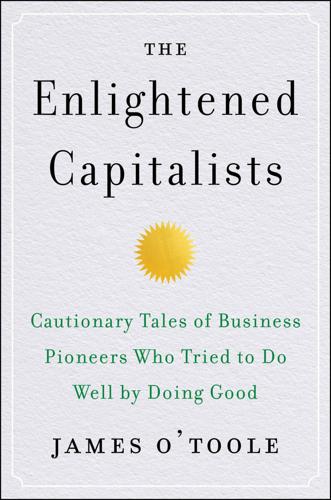
The Enlightened Capitalists
by
James O'Toole
Published 29 Dec 2018
Chapter 15: Lever Redux: Ben Cohen (1951–) 1.There are several published accounts of the Ben & Jerry’s story, including Brad Edmondson’s Ice Cream Social (San Francisco: Berrett-Koehler, 2014), and the founders’ own account: Ben Cohen and Jerry Greenfield, Ben & Jerry’s Double Dip (New York: Simon & Schuster, 1997). I have drawn most heavily on Fred “Chico” Lager, Ben & Jerry’s: The Inside Scoop (New York: Crown, 1994). 2.Lager, Inside Scoop, 25. 3.Lager, 34. 4.Lager, 31. 5.Lager, 36. 6.Julie Bayle-Cordier, Philip Mirvis, and Bertrand Moingeon, “Projecting Different Identities: A Longitudinal Study of the ‘Whipsaw’ Effects of Changing Leadership Discourse About the Triple Bottom Line,” Journal of Applied Behavioral Science 51, no. 3: 349. 7.Lager, Inside Scoop, 149. 8.Lager, 109. 9.Lager, 125. 10.Lager, 126. 11.Lager, 128. 12.Lager, 230. 13.Lager, 129. 14.David Bollier, Aiming Higher: 25 Stories of How Companies Prosper by Combining Sound Management and Social Vision (New York: American Management Association, 1996), 256. 15.Bollier, 260. 16.Lager, Inside Scoop, 178. 17.Bayle-Cordier, Mirvis, and Moingeon, “Projecting Different Identities,” 348. 18.Bayle-Cordier, Mirvis, and Moingeon, “Projecting Different Identities,” 348. 19.Lager, Inside Scoop, 211. 20.Lager, 225. 21.Lager, 227–28. 22.Bayle-Cordier, Mirvis, and Moingeon, “Projecting Different Identities,” 354. 23.Lager, Inside Scoop, 20. 24.Bayle-Cordier, Mirvis, and Moingeon, “Projecting Different Identities,” 356. 25.Philip H.

The Emperor of All Maladies: A Biography of Cancer
by
Siddhartha Mukherjee
Published 16 Nov 2010
Lasker and, 114–15, 116, 122, 171, 177, 190 as pediatric pathologist, 11–12, 19 VAMP survivors and, 149–50 viral origin of cancer advocated by, 175 in War on Cancer, 114, 118, 122, 150, 155, 178, 184, 188, 190, 234 Federal Cigarette Labeling and Advertising Act (FCLAA; 1965), 264–65, 267, 273 Federal Communications Commission (FCC), 265–66 Federal Trade Commission (FTC), 263–64, 401 feminism, doctor-patient relationship and, 199 Fidler, Isaiah, 173 Fieser, Louis, 260–61 Figuoeroa, Rodolfo, 60 Fisher, Bernard, 198–99, 200, 219–20, 221–23, 228 Fitz, Katherine, 307–8, 400 5-fluorouracil, 154 Fleming, Alexander, 465–66 Flemming, Walther, 340, 341, 344, 364, 365 fluorouracil, 154, 220 foci, of cancer cells, 351, 372, 373–74, 376, 384 folic acid (folate), 28, 29, 31, 406 Folkman, Judah, 387 Food and Drug Administration (FDA), 262–63, 319, 322, 423, 429, 455 Foote, Emerson, 112, 113, 185 Ford, Edmund, 247–48 “Forsaken Garden, A” (Swinburne), 461 Fortas, Abe, 264 Fortune, 23–24, 25, 227 fossil record, 248 Fowler, James, 445 Fox, Nelene, 321–24 Fox Chase Cancer Center, 279 Framingham, Mass., longitudinal studies of, 444–45 Frankfurter Anilinfarben-Fabrik, 85 “Frank Statement to Cigarette Smokers, A,” 250, 252 Frei, Emil “Tom,” 129–30, 132, 133, 134, 137–38, 139, 140, 153, 162–64, 206, 228, 260, 375 at Dana-Farber, 310–14 STAMP and, 310, 311, 312, 314 VAMP and, 141–42, 143–47, 166, 310 Freireich, Emil, 128–30, 132, 134, 136, 137–38, 139, 140, 163–64, 206, 228, 260, 366 VAMP and, 141–42, 143–47, 166 Friend, Steve, 379–80 fruit flies, 344, 346, 347, 348, 349, 350 Furth, Jacob, 261 Galbraith, John, 23 Gale, Thomas, 48 Galen, Claudius, 46, 48–50, 52–54, 55, 79, 90, 158, 214, 238, 281, 342, 434, 463 gallbladder cancer, 465 Gallie, Brenda, 376, 377 Gallo, Robert, 318 gangrene, 57 Gans, Hiram, 461 Garb, Solomon, 177–78, 184, 234 gastritis, 276, 281–84 gastrointestinal stromal tumor (GIST), 467–70 Gay Men’s Health Crisis, 318 gay-related immune deficiency (GRID), see AIDS Geller, Henry, 265–66 gemcitabine (Gemzar), 154 Genentech, 413, 414–19, 423–29 Herceptin trials of, 420–22, 424, 426–29, 430 Nelson’s “funeral procession” at, 425–26 genes, genomes, 6 as carcinogens, see oncogenes as carried on chromosomes, 344 chimeras, 366, 409–10, 430–31 as composed of DNA, 345 functional view of, 364, 366, 368–69, 431, 455 inherited traits transmitted by, 343–44, 364, 366 mechanism of, 345–46, 364–69 mutations of, see mutation, genetic RSV and, 351–52 sequencing of, 450–54, 464 structural view of, 364, 365–66, 431, 455 translocation of, 365–66, 402, 409–10, 430–31 tumor suppressor, see tumor suppressor genes unidirectional flow of information from, 346, 352, 354 genetic anthropology, 278–79 Germany, dye industry in, 82–86 Ghosh, Amitav, 196 Gilbert, Rene, 159 Gilman, Alfred, 90 Gladwell, Malcolm, 302 Gleevec (imatinib): CML and, 434–40, 441–43 as “four-minute mile” of cancer therapy, 439 GIST and, 467–68 resistance to, 441–43, 468 glioblastomas, 71 glioma, cell phones and, 446–47 Glück, Louise, 405 Goldman, John, 436 Goldstein, David, 124, 125–26 Goldstein, Sonja, 124–25 Goodfield, June, 1 Goodman, Louis, 90 Gorman, Michael, 393 Gornik, Heather, 330–32 Gould, Stephen Jay, 37 graft-versus-host disease (GVHD), 309, 437 Graham, Evarts, 72, 242, 260 laboratory experiments of, 254–55, 456 lung cancer and death of, 250, 256–57, 258 tobacco-cancer study of, 244–45, 246–47, 252, 253–54, 256, 260, 263, 401 Great Britain: child labor in, 239 doctor registry in, 249, 294 dye industry in, 82 Million Women Study in, 456 textile industry in, 81–82 tobacco use in, 240 Great Depression, 109 Greaves, Mel, 46 Greco-Persian wars, 42 Greece, ancient, medical knowledge in, 47–48 Greene, Mark, 411n growth hormone, 414, 415 Grubbe, Emil, 75–76, 77, 78, 195 Gustafson, Einar “Jimmy,” 96–99, 172, 395–97 Guy’s Hospital, 156 gynecological diseases, 287 Haagensen, Cushman, 193–94, 198 Haldane, J.
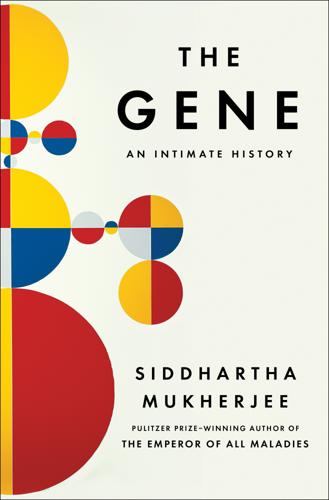
The Gene: An Intimate History
by
Siddhartha Mukherjee
Published 16 May 2016
Yet despite her guilt about her sexuality, crucial aspects of her identity—kinship, fantasy, desire, and erotic drive—remained fastened to maleness. C had been able to learn many of the essential features of her acquired gender through social performance and mimesis, but she couldn’t unlearn the psychosexual drives of her genetic self. In 2005, a team of researchers at Columbia University validated these case reports in a longitudinal study of “genetic males”—i.e., children born with XY chromosomes—who had been assigned to female gender at birth, typically because of the inadequate anatomical development of their genitals. Some of the cases were not as anguished as David Reimer’s or C’s—but an overwhelming number of males assigned to female gender roles reported experiencing moderate to severe gender dysphoria during childhood.
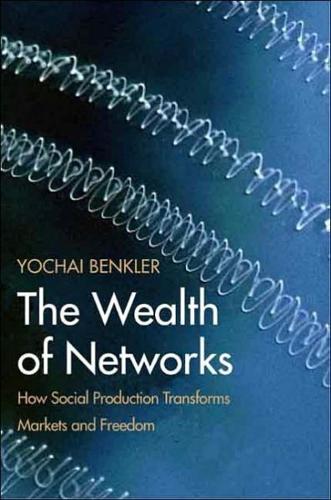
The Wealth of Networks: How Social Production Transforms Markets and Freedom
by
Yochai Benkler
Published 14 May 2006
[pg 360] 638 Another strand of criticism focused less on the thinness, not to say vacuity, of online relations, and more on sheer time. According to this argument, the time and effort spent on the Net came at the expense of time spent with family and friends. Prominent and oft cited in this vein were two early studies. The first, entitled Internet Paradox, was led by Robert Kraut. 130 It was the first longitudinal study of a substantial number of users--169 users in the first year or two of their Internet use. Kraut and his collaborators found a slight, but statistically significant, correlation between increases in Internet use and (a) decreases in family communication, (b) decreases in the size of social circle, both near and far, and (c) an increase in depression and loneliness.

The Rise of the Network Society
by
Manuel Castells
Published 31 Aug 1996
In a 1994 survey of 392 of America’s fastest growing firms, 68 percent of them were subcontracting payroll services, 48 percent tax compliance services, 46 percent claim benefits administration, and the like.110 While the size of the US economy makes patterns of change difficult to observe until they reach a critical mass, the picture we obtain is very different when we look at California, the economic and technological powerhouse of America. In 1999, the Institute of Health Policy Studies of the University of California at San Francisco, in cooperation with the Field Institute, conducted a study on work arrangements and living conditions on a representative sample of California workers, the second survey of a three-year longitudinal study.111 They defined “traditional jobs” as holding a single, full-time, day-shift job year round, as a permanent employee, paid by the firm for which the job is done, and not working from home or as an independent contractor – a definition very close to the one employed by Carnoy and myself. Under such a definition, 67 percent of California workers did not hold a traditional job.
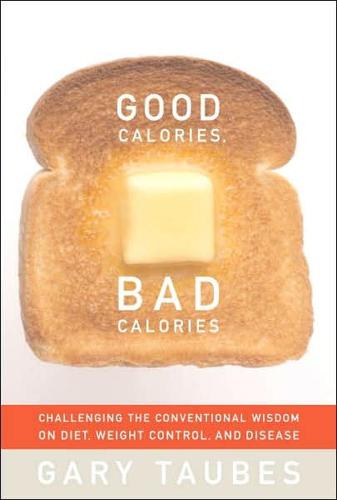
Good Calories, Bad Calories: Challenging the Conventional Wisdom on Diet, Weight Control, and Disease
by
Gary Taubes
Published 25 Sep 2007
“Diabetes Among the Pima Indians of Arizona.” Arizona Medicine. April; 18(4):99–106. Passmore, R., and Y. E. Swindells. 1963. “Observations on the Respiratory Quotients and Weight Gain of Man After Eating Large Quantities of Carbohydrate.” British Journal of Nutrition. 17:331–39. Paul, O., M. H. Lepper, W. H. Whelan, et al. 1963. “A Longitudinal Study of Coronary Heart Disease.” Circulation. July; 28:20–31. Pavlov, I. P. 1955. Selected Works. Trans. S. Belsky. Moscow: Foreign Language Publishing House. Pearce, M. L., and S. Dayton. 1971. “Incidence of Cancer in Men on a Diet High in Polyunsaturated Fat.” Lancet. March 6; 297(7697):464–67.
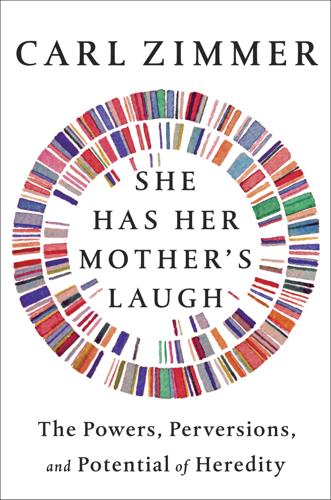
She Has Her Mother's Laugh
by
Carl Zimmer
Published 29 May 2018
“The Facts of Heredity in the Light of Mendel’s Discovery.” Reports to the Evolution Committee of the Royal Society 1:125–60. Bath, Sarah C., Colin D. Steer, Jean Golding, Pauline Emmett, and Margaret P. Rayman. 2013. “Effect of Inadequate Iodine Status in UK Pregnant Women on Cognitive Outcomes in Their Children: Results from the Avon Longitudinal Study of Parents and Children (ALSPAC).” Lancet 382:331–37. Baudat, Frédéric, Yukiko Imai, and Bernard de Massy. 2013. “Meiotic Recombination in Mammals: Localization and Regulation.” Nature Reviews Genetics 14:794–806. Bauer, Lauren, and Diane Whitmore Schanzenbach. 2016. “The Long-term Impact of the Head Start Program.”

Public Places, Urban Spaces: The Dimensions of Urban Design
by
Matthew Carmona
,
Tim Heath
,
Steve Tiesdell
and
Taner Oc
Published 15 Feb 2010
in Krieger, A & Saunders, WS (2009) (editors) Urban Design, University of Minnesota Press, Minneapolis & London, 113–130 Krieger, A (1995) Reinventing public space’, Architectural Record 183 (6), 76–77 Krier, L (2009) The Architecture of Community (edited by Thadani, D A & Hetzel, P J), Island Press, Washington DC Krier, L (1990) Urban components, in Papadakis, A & Watson, H (1990) (editors) New Classicism: Omnibus Edition, Academy Editions, London, 196–211 Krier, L (1987) ‘Tradition–Modernity–Modernism: Some necessary explanations, Architectural Design, 57(1/2), 38–43 Krier, L (1984) Houses, places, cities’, Architectural Design, 54(7/8), 43–49 Krier, L (1979) The cities within a city, Architectural Design, 49(1), 19–32 Krier, L (1978a) The reconstruction of the city’, in Deleroy, R L (1978) Rational Architecture, Archives d'Architecture Moderne, Brussels, 38–44 Krier, L (1978b) Urban transformations Architectural Design, 48(4), 219–266 Krier, R (1990) Typological elements of the concept of urban space, in Papadakis, A & Watson, H (1990) (editors) New Classicism: Omnibus Edition, Academy Editions, London, 212–219 Krier, R 1979; (first published in German in 1975) Urban Space, Academy Editions, London Kropf, K (2006) Against the perimeter block: A morphological critique’, Urban Design, Winter, 97, 12–13 Kropf, K S (1996) An alternative approach to zoning in France: Typology, historical character and development control, European Planning Studies, 4(6), 717–737 Kuh, D J L & Cooper, C (1992) Physical activity at 36 years: Patterns and childhood predictors in a longitudinal study, Journal of Epidemiology & Community Health, 46, 114–119 Kunstler, J H (2005) The Long Emergency: Surviving the End of Oil, Climate Change and Other Converging Catastrophes of the Twenty-First Century, Grove Press, New York Kunstler, J H (1996) Home from Nowhere: Remaking our Everyday World for the 21st Century, Simon & Schuster, New York Kunstler, JH (1993) The Geography of Nowhere: The Rise and Decline of America's Man-Made Landscape, Simon & Schuster, New York L LaFrage, A (2000) (editor) The Essential William H Whyte, Fordham University Press, New York Lagopoulos, AP (1993) Psotmodernism, geography and the social semiotics of space’, Environment & Planning D: Society & Space, 11, 255–278 Lai, R (1994) Can the process of architectural design review withstand constitutional scrutiny?

Immigration worldwide: policies, practices, and trends
by
Uma Anand Segal
,
Doreen Elliott
and
Nazneen S. Mayadas
Published 19 Jan 2010
Department of Immigration and Citizenship (2007d). Department of immigration and citizenship annual report 2006–07. Retrieved October 11, 2008. http:// www.immi.gov.au/about/reports/annual/2006-07/ html/index.htm. Department of Immigration and Citizenship (2007e). New immigrant outcomes: Results from the third longitudinal study of immigrants to Australia. Retrieved September 24, 2008. http:// www.immi.gov.au/media/research/lsia/results_from_ third_LSIA_body.pdf. Department of Immigration and Multicultural and Indigenous Affairs (DIMIA) (2002a). Population flows immigration aspects 2001 edition. Canberra: DIMIA. Retrieved May 1, 2003. http://www.immi. gov.au/statistics/publications/popflows2001/popflows 2001.htm.

The Age of Surveillance Capitalism
by
Shoshana Zuboff
Published 15 Jan 2019
Primack et al., “Social Media Use and Perceived Social Isolation Among Young Adults in the U.S.,” American Journal of Preventive Medicine 53, no. 1 (2017): 1–8, https://doi.org/10.1016/j.amepre.2017.01.010; Taylor Argo and Lisa Lowery, “The Effects of Social Media on Adolescent Health and Well-Being,” Journal of Adolescent Health 60, no. 2 (2017): S75–76, https://doi.org/10.1016/j.jadohealth.2016.10.331; Elizabeth M Seabrook, Margaret L. Kern, and Nikki S. Rickard, “Social Networking Sites, Depression, and Anxiety: A Systematic Review,” JMIR Mental Health 3, no. 4 (2016): e50, https://doi.org/10.2196/mental.5842. 60. Holly B. Shakya and Nicholas A. Christakis, “Association of Facebook Use with Compromised Well-Being: A Longitudinal Study,” American Journal of Epidemiology, January 16, 2017, https://doi.org/10.1093/aje/kww189. 61. Bernd Heinrich, The Homing Instinct (Boston: Houghton Mifflin Harcourt, 2014), 298–99. 62. Erving Goffman, The Presentation of Self in Everyday Life (New York: Anchor, 1959), 112–32. 63. There is an extensive literature on this topic, but two articles that specifically reference “chilling effects” in social media are Sauvik Das and Adam Kramer, “Self-Censorship on Facebook,” in Proceedings of the Seventh International AAAI Conference on Weblogs and Social Media, 2013; Alice E.

Palo Alto: A History of California, Capitalism, and the World
by
Malcolm Harris
Published 14 Feb 2023
In their report, Intelligence Tests and School Reorganization, Terman called for breaking classes into five tracks (gifted, bright, average, slow, and special—echoing the A–E soldier ranking) based on ability, so that America might get the most out of its children.20 The same year, Terman received larger grants for a longitudinal study unlike any done before. Relying mostly on the recommendations of teachers, he and his team expanded their sample to just over 1,500 California students of genius IQ. The study tracked these “Termites” over the course of their entire lives, testing hypotheses about the link between children’s performance and adult life outcomes.
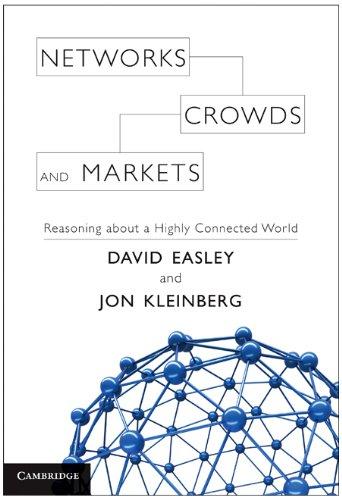
Networks, Crowds, and Markets: Reasoning About a Highly Connected World
by
David Easley
and
Jon Kleinberg
Published 15 Nov 2010
When we look at a single snapshot of a network and see that people tend to share mutable characteristics with their friends, it can be very hard to sort out the distinct effects and relative contributions of selection and social influence. Have the people in the network adapted their behaviors to become more like their friends, or have they sought out people who were already like them? Such questions can be addressed using longitudinal studies of a social network, in which the social connections and the behaviors within a group are both tracked over a period of time. Fundamentally, this makes it possible to see the behavioral changes that occur after changes in an individual’s network connections, as opposed to the changes to the network that occur after an individual changes his or her behavior.

The Pursuit of Power: Europe, 1815-1914
by
Richard J. Evans
Published 31 Aug 2016
The poor Marine Society boys, many of them from London, were the shortest group ever recorded in Europe and North America. They were even 2–3 inches shorter than the average height of American slaves at the time. Among male Scottish prisoners, Glasgow natives were nearly an inch shorter than other prisoners. Longitudinal studies show that average height in Britain did not start to increase until the late nineteenth century. These differences reflected gross disparities in health and nutrition. Life expectancy at birth in the prosperous London suburb of Hampstead around 1900 was fifty, whereas in the deprived working-class London borough of Southwark it was thirty-six – the disparity reflecting above all a huge difference in the rates of infant mortality between the two districts.